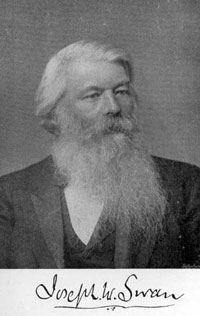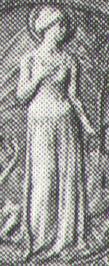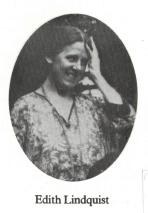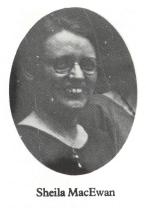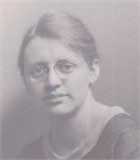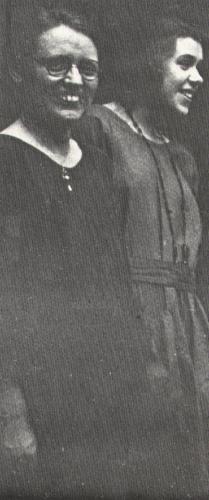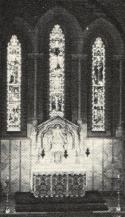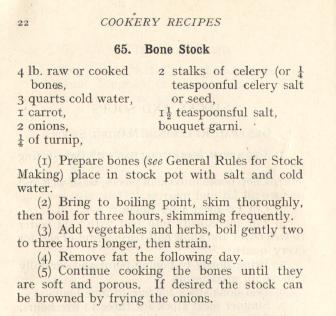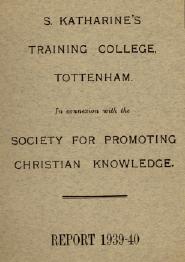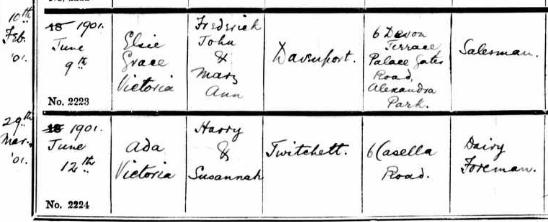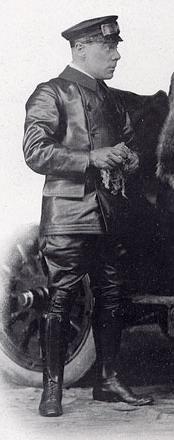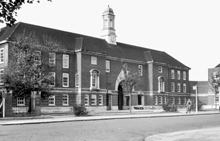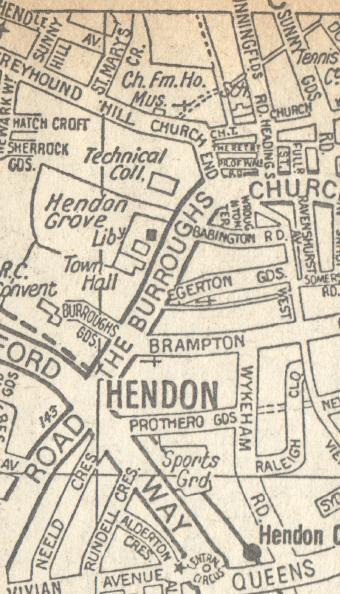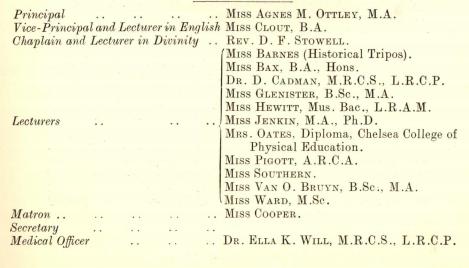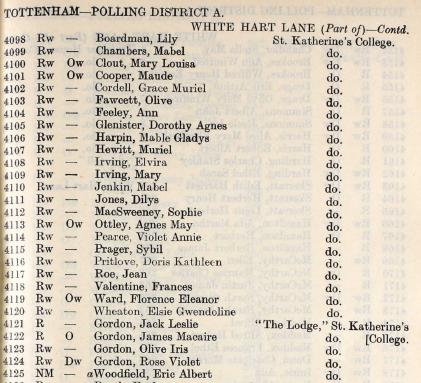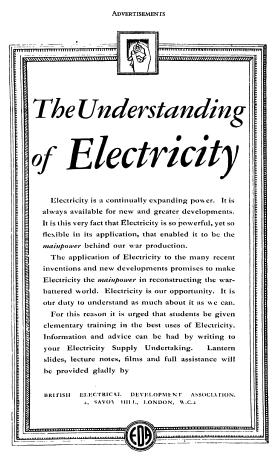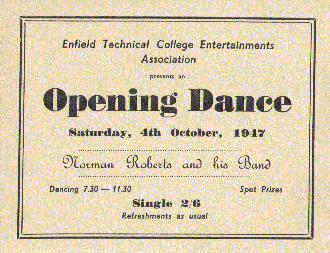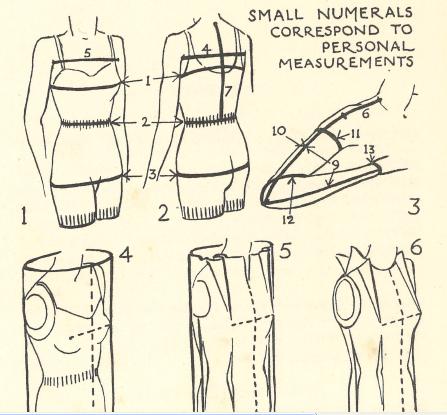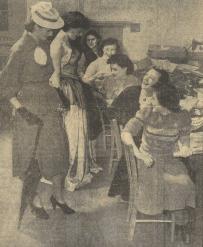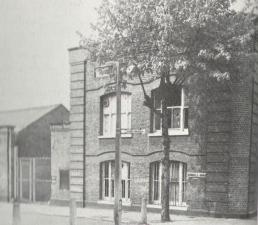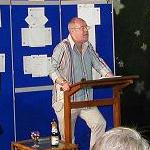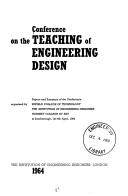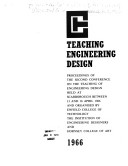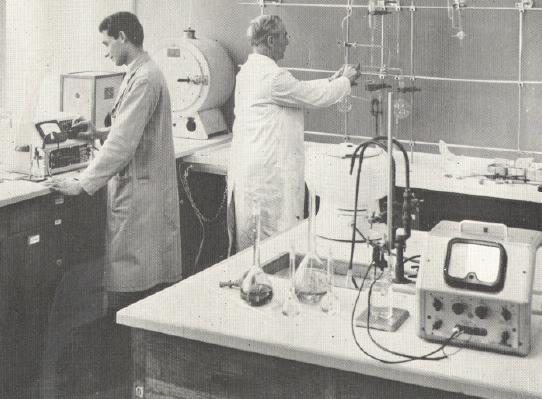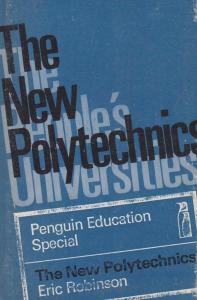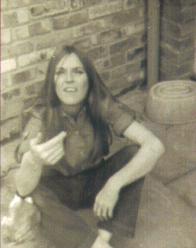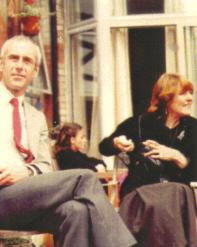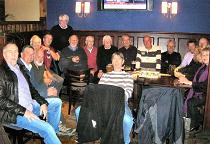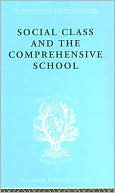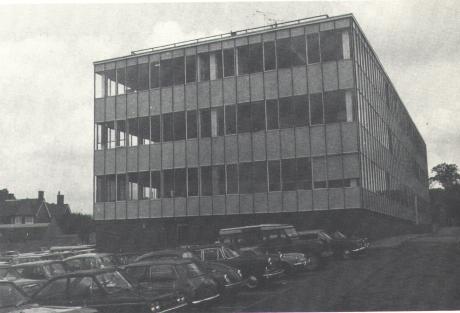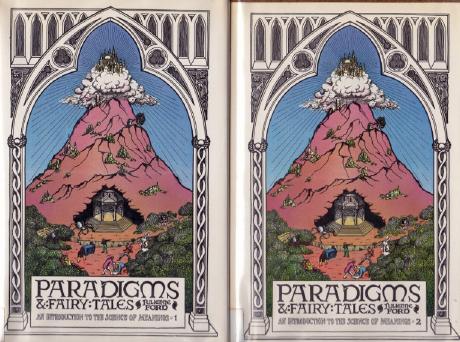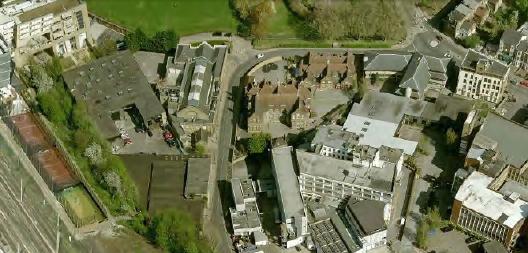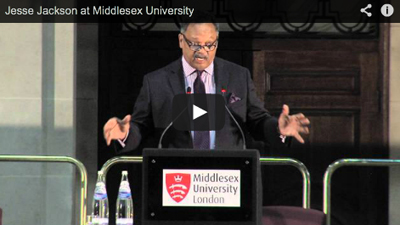Science, Society and Creativity at Middlesex University
|

|
1850 1851 1852 1853 1854 apprenticeships 1855 1856 1857 1858 1859 1860 1861 1862 1863 1864 1865 1866 1867 1868 1869 1870 nurse training 1871 1872 1873 1874 1875 1876 1877 1878 Tottenham 1879 1880 1881 1882 Hornsey 1883 1884 1885 1886 1887 Trained Nurses Institute 1888 1889 an Act 1890 1891 1892 1893 Lambeth 1894 1895 1896 1897 1898 1899 1900 1901 Enfield 1902 an aunt in teaching 1903 superman the engineer 1904 1905 1906 1907 1908 Berridge House 1909 1910 1911 expanding Ponders End 1912 1913 industry and Enfield 1914 1915 1916 1917 1918 1919 1920 1921 1922 1923 1924 1925 1926 1927 1928 teaching and Hornsey 1929 1930 1931 expanding Hornsey 1932 1933 1934 1935 1936 Hornsey prospectus and women's crafts 1937 Hendon 1938 1939 war distorts 1940 1941 1942 1943 1944 1945 post war opportunities 1946 1947 Trent Park 1948 1949 1950 1951 1952 1953 growth 1954 1955 1956 Technical Education 1957 1958 1959 engineering degrees 1960 Southbury Station 1961 1962 technology 1963 first six 1964 Enfield staff explosion and prospectus 1965 1966 1967 1968 revolution 1969 1970 1971 1972 1973 Polytechnic 1974 1975 development plan 1976 1977 1978 1979 1980 1981 1982 1983 pre-digital toast 1984 1985 1986 1987 1988 1989 1990 1991 1992 University 1993 1994 1995 mission 1996 web site 1997 marketing 1998 1999 2000 engineering morphs into computing 2001 2002 2003 branding 2004 2005 2006 2007 2008 2009 2010 2011 2012 2013 2014 2015 2016 2023
|
Science,
engineering
and
technology
1854
The Crimean War
Apprenticeships
About 1862: Birth of
Edwin Grimshaw
the first Principal of the (1911-) Technical Institute 1877: Birth of Arthur James Crofts the last Principal of the Technical Institute 1879: electric carbon filament bulb 1886: Ediswan Factory
1889:
Institution of Electrical Engineers
1895 Birth of Henry Winterbottom Broadbent, the first Principal of the Technical College 1899 Birth of Henry Willan Wadge who "was prominent in the development of secondary technical education in this country" and "had a profound life long influence on all his pupils".
1901 - Location map of the Ediswan Institute in relation to the Ediswan Factory
1905: Middlesex
County buy the Institute
"At the Ponders End Technical Institute will, be special classes, for instruction in electric lighting and power transmission, a subject which lias increased importance now that electric mains have been laid throughout the district." December 1908 Colonel Henry Bowles (of Forty Hall), Chair of the Enfield Technical Education Committee, laid the foundation stones of the new Technical Institute and of a new Secondary School for Girls. 1910 Report recommends experimental trade schools for boys and girls 1911 The Ponders End Technical Institute and Enfield Trade School According to the (Victoria County History) and a Wikipedia entry), the Trade School developed into Ponders End Junior Technical School sometime after the first world war (See 1928). It moved to Enfield Technical College, Queensway, in 1941 and was renamed Enfield Secondary Technical School in 1944. It was renamed Ambrose Fleming School in 1959 and moved to Collinwood Avenue in 1962. It became an all-age comprehensive school in 1967. It had 1,000 boys and girls in 1971.
27.5.1914 Death of Joseph Wilson Swan (aged 85) at his home in
Godstone, Surrey
June/July 1915 Schoolboys at war
1919: Women's Engineering
Society
Lenin electric 1920 1921 Birth of George Stephen Brosan 1921: Production Engineers 1922: Electricity at Hornsey 1924 extension 1926 Birth of Audrey (became Hardwick) (as she became). By this time, Arthur Crofts Principal 1933 Enfield 0497
1936 Ripaults 1936 and the purchase of the Queensway site
1938 to 1940 - First phase of the Queensway building The names Ponders End Technical Institute (School etc) appear to have been used whilst they were on the east side of Ponders End High Street. When they moved to the Queensway site, (after 1939) they became Enfield Technical Institute (School etc) or (then or before 1945) Enfield Technical College (School etc).
1943: Electricity sparks entertainment 1945 -
1948
Nationalised electricity
1950 Roderick McCrae appointed
1953 -
1960
Ambrose Fleming School
planning permission
1964
1967
1968 -
1970 -
By 1985 engineering
laboratories had left Enfield.
2000 Enfield listed
Engineering Timeliness incorporated as a not-for-profit company
|
|
Art
In one way, the history of Hornsey College of Art began with the Great Exhibition of the Works of Industry of all Nations in 1851, because it was this that provided the funds for government funded art education in Britain and Ireland. In more immediate terms, the history of Hornsey College of Art began in 1882 when Charles Swinstead (1815-1890), an artist and art teacher, opened a purpose-built private school of art, Hornsey School of Art, with teaching studios and an adjacent headmaster's house at Crouch End Hill, north London. The Hornsey School was a mixture of private and public. Local residents of standing supported it, it belonged to the headmaster (Charles Swinstead) and was run by his family, students were charged on a scale related to class and means, and the Government's Department of Science and Art provided support in the form (probably) of grants for the purchase of equipment, prizes, medals and other forms of support" Ashwin 1982, pp 10-11) At first the School was only open on three mornings and three evenings a week, later extended to a five-day week and Saturday mornings. Subjects taught included drawing, oil painting, watercolour painting, geometry and perspective. Ashwin 1982, p.13)
The Arts and Crafts Exhibition Society was formed in London in
1887. Hornsey became a school of Arts and Crafts about
1931. In the 1960s it was Hornsey College of Art and then
(1969) Hornsey College of Art and Design.
Charles Swinstead's role was gradually taken over by his son, Frank Hillyard Swinstead, who became headmaster on his father's death in 1890. Frank Swinstead appointed the three women teachers, Edith Lindquist, Sheila MacEwan and Elsie Davenport. They all started as students and, as teachers, specialised in what were later called women's crafts. Sheila MacEwan was first appointed to a secretarial role to support her studies. 1882 Modern location map and description of the original building. 21.6.1884 Birth in Walton-on-Thames of John Charles Moody who, in 1927, became the first Principal of Hornsey who was not a member of the Swinstead family.
See 1890s picture and public funds 1911 Miss Robinson, instructor in Art Needlework at Hornsey was commissioned to execute the design for the robe and shoes worn by Queen Mary at the coronation of George Fifth (22.6.1911) (Clive Ashwin 1982 p.21). The firm of Reville and Rossiter (London) who designed and made the robe and shoes started in 1905 and were appointed court dressmaker to Queen Mary in 1910. "Rossiter" was a "Miss" and she is said to have administered the company (not designed), but contemporary press reports say she designed the robes. The robe has been descrbed as a "positive riot of bullion embroidery". The embroidery was done by members of the Ladies' Work Society (31 Sloane Street, London, SW) - "Ladies who are compelled by circumstances to employ their time remuneratively".
This is the first reference to
clothing/textiles at Hornsey that I have
found.
1913 Board of Education scheme for full-time Arts Studies. This developed into the A.T.D. (Art Teacher's Diploma) in 1933
"Then it was called 'An Artistic Academy for the Sons and Daughters of
Gentlemen", and local prejudice against anything so wicked as an art school
required it to be built as a gentleman's residence with a school attached!
Discreetly attached!! In fact, so much discretion was required that
permission to build a modelling room was given only if it could be designed
to look like a conservatory!!!"
(Sheila MacEwan)
Hornsey women teachers
Edith Lindquist
25.12.1903 SKETCH CLUB AWARDS. Figure - Hilda Grylls. Landscape- Edith Lindquist. Junior-Janie Callaway. London North Mercury And Crouch End Observer. Edith set up home with her younger brother, Erik Lancelot Lindquist, at 9 Ingram Road, East Finchley. They were there in 1911 through to 1951, when Edith died. In 1911, Edith (aged 33) is described as "Art Mistress. Government School of Art. Private school". Erik (21) was a Commercial Traveller in wiring and electrical installations. Edith taught needlework at Hornsey School of Art and art at a small private school at 14 Bisham Gardens, N6. One of her pupils at Bisham Gardens was Sheila MacEwan.
Sheila MacEwan
Euphemia Sheila MacEwan, born
20.11.1895 to
Peter MacEwan and Euphemia Thomson. Peter MacEwan was editor of the journal
the Chemist and Druggist (founded 1857) for twenty five years before
his sudden death on
16.5.1917.
September 1913 Sheila MacEwan (Miss) came to Hornsey as a student and remained as a member of staff until 1956. (Clive Ashwin 1982 p.24 and Sheila's retirement speech 21.3.1956). She was given full time secretarial responsibilities in 1917, to support her training as a teacher, and then combined these with teaching drawing and embroidery. She became responsible for staff and student timetables in 1927 and trained in dressmaking. She built up the "Department of Women's Crafts", one of the five that existed in 1936/1937. The department was still called that when she retired in 1956, becoming Textiles/Fashion sometime later.
Elsie Davenport
10.2.1901 Elsie Grace
[Victoria]
Davenport born in Wood Green. The only child of Mary Ann and
Frederick John Davenport. Frederick was a furniture salesman specialising
in bedsteads. The family moved to Southgate before 1911. The parents lived
in the same house from then until 1956 (or later) and Elsie lived with them
until about 1928/1929, after which she lived with Sheila MacEwan
later).
After the second world war, the Sylvan Press published a series of three books by Elsie Davenport: Your Handweaving (1948), Your Handspinning (1953) and Your Yarn Dyeing: A book for handweavers and spinners (1955) in their "Your home crafts" series. In the same series (both published 1950) appeared Your Pattern Cutting by Euphemia Sheila MacEwan and A Handbook of your Children's Crafts, by various authors, edited by Euphemia Sheila MacEwan. 1950: Guilds of Weavers Spinners and Dyers June 1955 Hornsey dress show Sheila retired from Hornsey in March 1956. Sheila (60) and Elsie (56) moved to the Bideford area of Devon in 1956. Elsie's mother died (89) in Bideford in the spring of 1958. Elsie's father died (92) on 16.9.1960 at Bideford and District Hospital Elsie died (74) in Bideford in the autumn of 1975. Sheila died (aged 86) in Bideford, Devon, on 12.5.1982. Before she died, she contributed her memories and archives to the history of Hornsey. "The archive includes memorabilia collected by Sheila MacEwan relating to her teaching work at the School, [...], notably printed books by MacEwan and others [Elsie Davenport] relating to crafts, programmes, press cuttings and photographs of students, staff and teaching methods; AIM catalogue - [See the box HCA/3/2/1-6]
1920 - 1927 Frank Swinstead retired. John Moody Principal. 1928 - Hornsey School of Arts and Crafts at time of 1931 building 1936/1937 Prospectus - Fine Art - Pictorial and advertising design - Industrial applied art - Women's crafts - Training art teachers
1947 John Moody retired. John Platt (born 1892) Principal
The annexes of satellite sites
2 Waverley Road became the base for the Women's Crafts
Department
1955 - Hornsey College of
Arts and Crafts.
1957 John Platt retired. Harold Herbert Shelton (born 1913)
Principal
1960 Teacher
Training
moved to an annexe
1961 Graphic
design to
Bowes Road
1963 Fine
Art moved to Alexandra Palace and part of Graphic Design to South Grove.
The original college now used for Three Dimensional Design, Visual
Research and Advanced Studies.
1963 Diploma in
Art and Design
In
1968 a student revolution put Hornsey College of
Art in the
international spotlight in a debate about design and society. The slogan
Freedom to Create was, in part, a protest against the proposal to
chain the
Hornsey artists to the engineers of
Enfield
and
Hendon
in a new
Polytechnic.
From
1969 Hornsey College of Art and Design appears as the
title.
1969 Industrial
and Interior Design and Environmental technology established at the Jaxa
Works in South Grove.
1970
Low morale
1970 Cat Hill phase one opened for textiles and fashion
and three-dimensional design. Three-dimensional design moved from the
original college at Crouch
End and textiles/fashion from its separate site nearby in
Waverley Road
Darrell Viner studied
at Hornsey College of Art (Cat Hill) from (September?) 1971 to the summer
of 1974,
1.1.1973 Polytechnic formed and, ironically, it was the
artists
who flourished and the engineers
who withered (in 2003). The
end of Hornsey, in 1979/1981, by contrast, was a rebirth
in new premises at
Cat Hill, followed by a
second rebirth in the
Grove Building in
2011.
John Vince began
teaching at Cat Hill after it became part of the Polytechnic. Through him
Darrell Viner (above) first used computers in the sense of learning to
write cards in computer code for Vince to run through the Enfield computer.
Viner encouraged Vince to develop 'Rough' and 'Sketch' features for PICASO,
which "transformed clinical computer generated plottings into believable
hand-drawn lines".
location map for Cat Hill phase one and two
1980
Phil Shaw
1982 A Century of
Art Education 1882-1982. The exhibition committee members were
Peter Green (chair),
Clive Ashwin, Richard Beaumont, Morley Bury, David Cheshire, Sid
Day, Roberta de
Joia, Jeremy Eldridge, Tom Robb, Roy Fleming, Jim Hill. Many
people helped by contributing information and by the loan or gift of
documents or other materials. Thanks were acknowledged in print to: Mrs
Nancy Carline, Miss Gwyn Cowing, Miss D. Freeman, Mrs
Annetta Hoffnung,
Miss
Sheila MacEwan, Mr
Frederick J.Mitchell, Mr Ian Murray, Mrs Joan Schwitzer, Mr Jack
Shaw, Miss
Clare Tarjen, Dr David Thistelewood, and Mr
Frank Winter.
Euphemia Sheila MacEwan died in 1982. A buiding at Cat Hill
(phase one?) was named Sheila MacEwan
(see map) at some time, and the Hornsey
archives contain "memorabilia collected by Sheila MacEwan relating to her
teaching work at the School, [1913-1957], notably printed books by MacEwan
and others relating to crafts, programmes, press cuttings and photographs
of students, staff and teaching methods". Euphemia S. MacEwan and
Elsie G. Davenport lived at 8 Chatham Close, NW11, Hendon in
1951.
Paul Brown's C.V. says:
1984 or 1985 Middlesex became the "National Centre for
Computer Aided Art and Design" under Paul Brown. Later became:
1986 Middlesex set up the UK's first MSc [MA ??] course in Computer
Graphics.
1987/1988 Handbook Diary: Dean of Art and Design:
Peter Green. Head
of School of Communication Design: Clive Ashwin. Course Leader MA
Computing in Design: Paul Brown [All at Cat Hill]
19.5.2011 Party at Cat Hill for staff and students to say goodbye to
the Campus.
|
|
Teacher training - Tottenham and elsewhere
Religious education and domestic science
The history of teacher training at Middlesex is linked to the two great expansions in English state-funded education: that following from 1870 and that following from 1944. Teacher Training was developed at three of the Universities main component sites: Tottenham and Hornsey (post 1870) and Trent Park (post 1944). Pupil teachers The early system of training teachers started by their serving an apprenticeship as pupil teachers for some years. They might then seek a scholarship for college training. St Katharine's provided college training for women pupil teachers from Church of England schools. [See A brief history of Church of England Schools and foundation governors] In 1877 a man was needed to set up and run the college for women. This was, at least in part, a religious issue, and in part a social issue: Rules and Regulations set out in 1879 explain that "The Principal shall be in Priest's Orders" and "The Lady Superintendent shall engage and dismiss all domestic servants". The man chosen was the Reverend Edwin Hobson, who continued as Principal for over forty years. After his retirement in 1919, he wrote "soon the Man Principal of a Woman's College will be as extinct as the Dodo". But not in 1877.
1878/1880 - Location map - Practising schools 1879 The first Lady Superintendent of St Katharine's resigned. Miss Lucy Gee was selected from 61 applicants to succeed her. She served to 1898 and maintained contact afterwards. (Handley, 1978 pp. 4-5 and 8). 1880 Practising schools "firmly established" with 109 girls in the infants, 60 in the elementary, and 99 in the upper (p.9)
1881
Census St Katharine's staff in residence:
1888 St Katharine's College Chapel Graham Handley, writing from a secular perspective, emphasises that his history of St Katharine's is about a community, and the spirit it bequeathed. Elements of the original community were residential living, religious observance (see the students' timetable) and the magazine (below) that kept ex-students and staff as part of St Katharine's. 1890s St Katharine's Magazine "Croquet and cycling obviously formed part of college life during the 1890s" (Handley, 1978 p.10).
1895 Students' timetable at St Katharine's Alice B. Hogg succeeded Lucy Gee as Lady Superintendent of St Katharine's. She left in 1907. Miss Agnes Lumsden Hall Turnbull succeded Miss Underwood Waugh at the Cookery School. She remained in charge until 1926. Previously she had been at the Salisbury Training School of Cookery (Part of a Church of England training school).
1901
Census St Katharine's staff in residence:
1902: An aunt in training and a degree of public control 1906: Inter-denominational pressures.
1909 Margaret Isabel Skilton succeeded Alice B. Hogg as Lady Superintendent of St Katharine's. She left in 1914. [S Katharine's Collage, Field House, White Hart Lane, Tottenham established at some time]
1911
Census St Katharine's staff in residence:
1911 Elizabeth Pallot resigned after 26 year's [1885?] and Charlotte M Austin after 24.5 years [1887?] (p.12). Edith Mary Gowan joined the staff as Head Governess and Mistress of Method. Alice Barnes took over editorship (1912) of St Katharine's Magazine from Elizabeth Pallot (p.14) 1914 Margaret Isabel Skilton left to become a nurse (p.13) 1915 "In the foreword to 1915 the Principal referred to the war and to the appointment of Miss Gowan as Vice-Principal" (p.14) 1919 Edwin Hobson retired and Edith Gowan became the Principal of St Katharine's. Short afterwards, Alice Barnes retired after 28 years [1892?] and died in December 1921. (p.17) 1922 staff included Fanny Moore Mosley and Jane Cronadee Glen Bott
1926 Electoral register for St Katharine's
1926 Electricity installed in St Katharine's In 1928 Hornsey School of Art was recognised as a centre for Art Teacher Training
1929 Votes for lots more women 1931 Occupational analysis of the 1931 Census including domestic work and teaching in relation to gender. November 1933 Farewell gathering on the retirement of Edith Gowan January 1934 Miss Agnes M. Ottley succeeded Edith Gowan as Principal St Katharine's. Dorothea Nickal moved to Berridge House. [Mary Clout became Vice Principal] p.21
"The old, paternalistic régime gave way to significant changes; compulsory chapel attendance and chapel 'head-covering' alike became optional" (Handley 1978 p.21) [See 1895 timetable] December 1934 Death of Edith Gowan December 1936 Death of Edwin Hobson whose ashes were interred in Tottenham cemetery close to All Hallows Church (p.21) 1938 Miss Chubb (music) to retire after 27 years. (Graham Handley pp. 22 and 23)
1942 Nationally, there were 83 recognised teacher training colleges (like St Katharine' and Berridge House), 22 university training departments, and 16 specialist colleges for art teachers (like Hornsey). May 1944 Teachers and Youth Leaders: Report of the Committee appointed by the President of the Board of Education to consider the Supply, Recruitment and Training of Teachers and Youth Leaders. Amongst those who gave evidence to this was "Miss E. A. Chubb, formerly of Tottenham, St. Katharine's Training College". August 1944 Education Act. In the period from here to 1950, training colleges were over-crowded. December 1944 an initial emergency scheme aimed at training ex- services people as teachers attracted many applicants. It was opened to all men and women who had served at least a year in HM Forces or in a war industry in June 1945 and 5000 a month were applying by December 1945. November 1945 St Katharine's returned to Tottenham
1946 Announced that all teachers would require to be qualified.
[Which would mean having a Teacher's Certificate if they were not
graduates]. Uncertified teachers with less than five years experience would
require the full two years training. Those with 5-15 years' experience
could do a shorter course. Those with over 15 years experience would be
certified without further study if the reports on their work were
satisfactory. [The two year course became three years in 1960]
Trent Park was established in
1947 and became part of Middlesex Polytechnic in
1974
1950-1955 Period when the supply of trainee teachers was down as
entrants from HM Forces and the war industries stopped and
too few boys and girls were staying on at school to get the required entry
qualifications.
In
1960
teacher training courses were extended from two years to three.
In
1964 St Katherine's and Berridge House united to form The
College of All Saints
1972 The
James Report and
A Framework for Expansion
In
1978 All Saints became part of Middlesex Polytechnic.
The
All Saints Educational Trust was established with the proceeds
of this sale. Amongst other things, the Trust makes grants to people
training to be teachers "with a particular bias towards individual awards
for teachers of Religious Education and Home Economics".
All Saints Campus
All Saints was no longer a
Teacher Training College, but the
Campus for Humanities (who moved there from Enfield). In the late 1980s,
Tottenham was closed (but not
disposed of) and staff and students (and All Saints Bookshop) moved to
Enfield in
September 1989. Enfield was redesigned with a new library.
Tottenham Campus
The move was short lived. Middlesex changed its mind and staff, students
and books moved back to Tottenham in 1992. Its official opening was
celebrated on
Sunday 1.1.1992. Eventually it closed in
2005 See email
4.12.2003
Lee Valley Campus: Never happened
|
|
Nursing - Holborn - Archway and elsewhere
Sometime in the 1820s a homeless girl died of hypothermia in London. We do not know her name, but she has a claim to be the founder of nursing at Middlesex University. As a consequence of his inability to find a hospital to help her, William Marsden founded the General Institution for the Gratuitous Care of Malignant Diseases in Holborn in 1828. This developed into the Royal Free Hospital which became one of the sites for nursing education in Middlesex University.
1867 British Nursing Association set up to train nurses. [Originally
known as the London Training School and Home for Nurses]
1868 Jane
Dunwoody - a trained nurse.
1870
Training scheme at the Free
Hospital
1887 A new training scheme at the
Free Hospital
1910 The Royal Free Hospital Nurses League started
1919:
Nurses registration
1931 Census
1945: pre-nursing at
Hendon
1946 National
Health Service Act
April 1948
World Health Organisation
July 1948 National Health Serivice Act came into operation.
Under the National Health Service, the Royal
Free Hospital School of Nursing received an annual Treasury grant.
Classrooms and equipment were improved, and a library was opened. A Nurses
Education Committee was established in 1949.
1961 Royal Free Hospital School of Nursing moved to
the former Belmont Hotel in Highbury Park, and in 1968 to 21 Pond Street,
Hampstead, on the site of the 'new' Royal Free.
1974 Male nurses admitted to the Royal Free Hospital School of
Nursing
(source)
1975 Royal Free Hospital School of Nursing badge
1990
Royal Free Hospital School of Nursing ceased to exist in its own
right.
North
London College of Health Studies formed
from the nursing schools
of the Royal Free, Whittington, North Middlesex and Chase Farm Hospitals.
1991 School of Health Care Studies at Middlesex University
formed in partnership with North London College of Health Studies and
Middlesex and Barnet College of Nursing and Midwifery.
1992 Daniel Linehan
site manager of the "Royal Free Education Centre".
1995 The nursing colleges became part of the
Faculty of Health of Middlesex University. [See
April 1995]
-
1998 Archway -
- HSSC 2002
Hospital campuses
- Georgina Cox -
2012 -
2014
Student Led Teaching Awards
|
1853 The Science and Art Department, a government body (1853 to 1899) "was responsible for administering grant-aid to art schools (from 1856) and to schools of design and technical schools (from 1868)".
See National Archives
Technical colleges and further education
At the time of the Crimean War there were three Royal munitions factories: the Woolwich Arsenal, the Enfield Small Arms Factory (1816-1988) and the Waltham Abbey Gun Powder Factory.
These government factories had there own internal education system. (See below)
Woolwich and Enfield had apprenticeships. "In the earlier part of the 19th century apprentices were indentured to individual apprentice masters. They were expected to help the master craftsman with his work and in return he, rather than the factory, was personally responsible for paying the apprentice". Such an apprenticeship record for 1843 survives. "Some time between 1856 and 1886, the practice changed and from then on apprentices were indentured to the factory, in the name of the Superintendent, instead of individual apprentice master" See Apprentices 1915 and Small Arms Factory Apprentices Association 1919
|
Other apprentice schemes associated with the history of Middlesex
University include:
Those of Henry Winterbottom Broadbent Ediswan factory: See Eddie Bassett (1921) and Brian Frank Gardner The Enfield District Manufacturers Association Apprentice Training Scheme (1949) Electricity Board: see David Jason The Hendon Block Release Scheme (1952) Handley Page prize- giving (1954) Marine Engineering (1956) Work Based Learning (1992) |
Machine shop at the Enfield Small Arms Factory built on American mass- production lines. See 1895
About 1862: Birth in Macclesfield, Cheshire of Edwin Grimshaw who became the first Principal of the (1911-) Ponders End Technical Institute. He and his family moved to Enfield in the autumn of 1911 [1914 photo]. He was previously a Head Teacher in Willesden. See 1914. He died (aged 58) in the summer of 1920 and may have been succeded as Principal by Arthur James Crofts.
The firm of Reeves had made water based colours for artists since the middle of the 18th century. In the 19th century they added oils in collapsible tubes to their range. They also manufactured a wide range of other artists' materials.
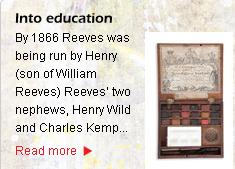
|
Reeves and Sons Ltd were at
113 Cheapside from 1845 to 1940 18 Ashwin Street, Dalston from 1868 to 1954 [See 1940] Lincoln Road, Enfield, Middlesex from 1921 to 1982 [See 1948] |
George Shiells was managing director of Reeves when he first became a Governor of Enfield College of Technology in the late 1960s. [??]
1868 Jane Dunwoody, who had trained at St George's Hospital, was appointed as a head nurse at the Royal Free Hospital. She may have been the first trained nurse in the hospital.
A series of Acts between 1870 and 1918 made education free and compulsory for children from five years old to ten, then to eleven, then to fourteen, thus creating an increasing demand for teacher training.
June 1870 National Union of Elementary Teachers formed. It became the National Union of Teachers in 1888. See Enfield branch
1870 The Royal Free Hospital made an agreement with the British Nursing Association (BNA), who supplied a Superintendent and 18 nurses at the cost of £276 a year. The BNA trained its staff on the wards, and when the Association was dissolved in 1884 the hospital was left without any form of training, although most of the nurses stayed on.
1870 Most education in Enfield was provided in Church of England
Schools. An exception was the Royal Small Arms factory school, financed by
the government, opened within the factory for juniors and infants in 1846.
In 1870 evening as well as day classes were held there. In the same
year, a separate infants' school was built. In 1893 there was a total
attendance of 501 but by 1899 the pupils had been transferred to the new
Chesterfield Road board school. The original building then became a police
station guarding the entrance to the factory. (Victoria County
History, using material from Kelly's 1870 Directory and other sources)
Clive Ashwin (1982,
p.17.) speaks of "a steady shift of authority from the centre, in the form
the
Department of Science and Art, to the local regions" during the
"last quarter" of the nineteenth century. The shift he documents, however,
took place in the
late 1880s
City and Guilds of London Institute for the Advancement of Technical
Education founded to improve the training of craftsmen, technicians,
technologists, and engineers.
1877-1879 The Archway Road Infirmary, Highgate was erected at the
west side of Archway Road, in Highgate. In 1998 the hospital became the
Archway Campus of Middlesex University
1877 Arthur James Crofts born in Sneiton, Nottinghamshire. He
became a science teacher in Nottingham and then Enfield where,
in 1906 he
taught classes in mathematics, machine construction, geometry and
elementary science. At this time he was B.Sc.
On 10.6.1905, in Staffordshire, he married Ethel Elizabeth Hancocks, the
daughter of a headmaster and herself a teacher. In
1908 Mrs Crofts sang
at the annual presentation of certificates to successful students in
Enfield Technical Classes. They lived at 2 Bedford Villas, Southbury Road,
Enfield in 1911. Later (at least until 1938) they lived at 113 Southbury
Road. Arthur Crofts became the (last)
Principal of Ponders End Technical Institution before it became Enfield
Technical College. He may have succeeded
Edwin Grimshaw
. See
1926 -
1937 -
1941.
In 1946, Mr and
Mrs Crofts were made life members of the newly formed
"Old Students' Association of Enfield Technical School and
College". Ethel's death, aged 74, was registered in Edmonton in
the autumn of 1953. Arthur died in
the Tiverton area (Somerset/Devon) in 1963,
aged 86.
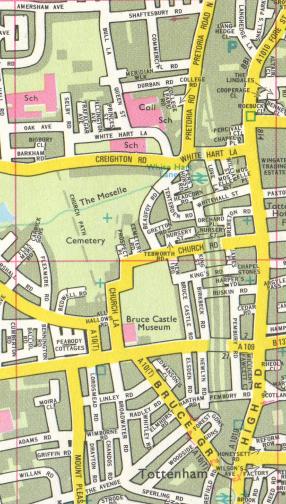
|
1878 A training college in
Tottenham
founded by the Society for
Promoting
Christian Knowledge. Initially at the corner of Lordship Lane (the road
south of Bruce Castle Museum on this 1984 map) and Tottenham High Road.
1880 New building opened at the White Hart Lane site (St Katharine's College) Building at the White Hart Lane site included Practising schools. (upper grade, elementary and infants). Haringey archive services have inspector's reports on the infants and girls departments for 1924 and 1929 and on the senior girl's department for 1936. The St Katharine's Practising School became a senior girls' school about 1937, providing only secondary education. Haringey archive services have an inspector's reports on the secondary school for 1954. |
In the first part of the nineteenth century electric light could be created by sending a stream of electricity through the air in an arc between two carbon rods. (An arc light). At first the power was supplied by batteries but, from the late 1870s the development of generators led to attempts at ambitious lighting scheme such as the lighting at the Paris Opera.
Joseph Wilson Swan's idea was that light might be created by making a thin thread of carbon incandescent by sending the electricity through that rather than making it jump through the air. Swan's idea required the glowing metal to be in a vacuum, provide within an electric light bulb.
Swan created the Electric Carbon Filament Bulb in 1879. He was the first to demonstrate it (in Newcastle), but not the first to patent it. It was patented by the American, Thomas Alva Edison. After legal battles, the two inventors decided to form a combined business: the Edison Swan Electric Light Company, although they probably never met. Information about this is kept in Tyne and Wear Museum, Newcastle.
February 1879 Swan demonstrated his lamp at the Newcastle Literary and Philosophical Society.
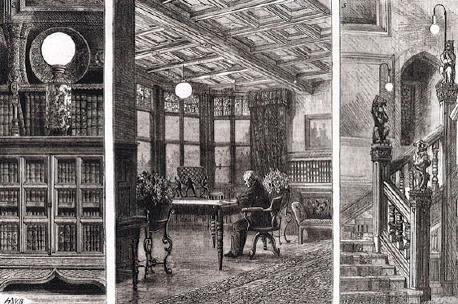
|
Joseph Swan's friend William Armstrong had an electricity supply and was the first home lit by Swan's electic lights (December 1880). The pictures were published in the Graphic - See William Armstrong Magician of the North website |
Horse tramway from Stamford Hill to Ponders End with a depot at Tramway Avenue, just south of Ponders End. Tottenham on this route. There was a temporary conversion to steam trams from 1887 to 1891. Metropolitan Electric Tramways Ltd established in 1901.
1882 Charles Swinstead founded
Hornsey School of Art at
Crouch End
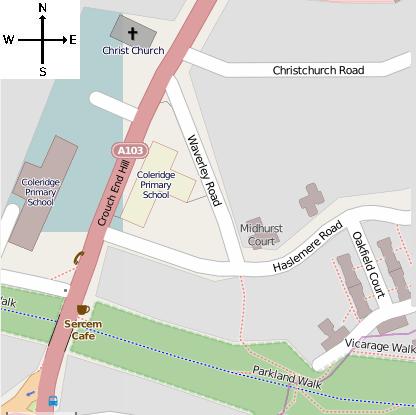
|
School sited somewhere between Crouch End Hill and Waverley Road on this
present day Open Street map.
Crouch End Hill is the main road out of Crouch End (which is south). Ashwin says the school was at the crest of the hill, on the edge of the built up area, near the railway station. (p.9) |
The main gate of the school was at the northern corner of Crouch End Hill with Waverley Road. The studios with their tall windows faced north. (p.13)
From Crouch End Hill the school, at this time, looked "rather like a large rambling private house". Trees separated it from the road (photo 1890) and, in time, ivy grew over it. The headmaster had a house to the south, with its entrance and front door on Crouch End hill (p.13)
There was little "industry" in or near Hornsey. The school's initial part time morning and evening classes were for
In "special rooms"
Ashwin 1982, p.13).
1882 London Jute Works Company factory on the Navigation at Ponders End (established 1866) closed. Replaced by "the Ediswan factory in 1886.
21.6.1884 Birth in Walton-on-Thames of John Charles Moody (RI, RE, PSGA) who, in 1927, became the first Principal of Hornsey who was not a member of the Swinstead family. Moody had studied art at London, Paris, Antwerp and Italy. On 24.12.1915, in St James, Muswell Hill, he married Dorothy Margaret Bennet, who had been a student at Hornsey School of Art. He was full-time art master at Hornsey from 1920, and became Frank Swinstead's second in command before succeeding him in 1927. [See Hornsey group] Moody was a painter and etcher of landscapes, figures and architectural subjects who also produced posters for LNER and then British Rail. He retired from Hornsey in 1947. He was President of the Society of Sussex Artists in 1954 and at sometime President of the Society of Graphic Artists. He died in 1962.
In 1885, Channing House (school for girls) was opened in Highgate by Unitarians. About 1899 (when she was four), Sheila MacEwan began her school education in a kindergarten at Channing run on Frobel principles by a Miss Ruhig. Frobel teachers use structure play with coloured blocks and other objects to develop children's abilities and Sheila later suggested that the methods had taught her much about visual measuring and proportion. Miss Ruhig was sacked by Channing and set up a small private school at 4 Bisham Gardens, N6, which Sheila attended until she was almost 18. Miss Ruhig's friendliness and popularity with pupils appears to have inspired Sheila in her own teaching. At the end of her life she told Peter Green that Miss Ruhig had been sacked from Channing "because all the children liked going to say good morning to her every day. This continued when they moved into the senior school. The children disobeyed the head and continued to go and see Miss Ruhig so she was sacked!" [4.8.1981 interview in HCA/3/2/4]
In 1886 Joseph Wilson Swan moved his lamp factory from South Benwell in the north east of England to a site beside the River Lee at Ponders End.
Over the years the factory was enlarged, eventually covering 11.50 acres (4.65 ha), and employing many people, notably girls, from the area. Ediswan produced electric lamps, and the factory was colloquially known as The Lamp." Wikipedia - See the Lamptech Museum for detailed history. On this site, see - Enfield District Manufacturers Association 1921 - Eddie Bassett who became an apprentice about 1923 - Malcolm Farrell who became an apprentice about 1948 - Siemens Edison Swan 1956 - Brian Frank Gardner who became an apprentice in 1958. - 1959 - 1961 - December 1964 - 1966-1967 -
Professor Ambrose Fleming was invited to join the Ediswan company as a consultant to investigate the blackening on the inside of light bulbs, the so-called `Edison Effect'. Fleming had the Ponders End laboratory make a number of experimental lamps with an extra electrode (anode). After completing his work, Fleming took an extra consultancy with the Marconi Wireless Telegraph company. (Jim Lewis, North Circular, 9.5.1996)
Church End - The old parts of
Hendon
Model Dairy Farm built in the late 1880s on land
immediately to the north of Church End Farm's yards. Church End' Farm yards
followed an approximate east-west axis, opening off
Church End above the present position of Rose Cottage to the south of
Church House [That appear's to be where the
Williams Building and car par are now]
(HADAS Report
15.2.2005)
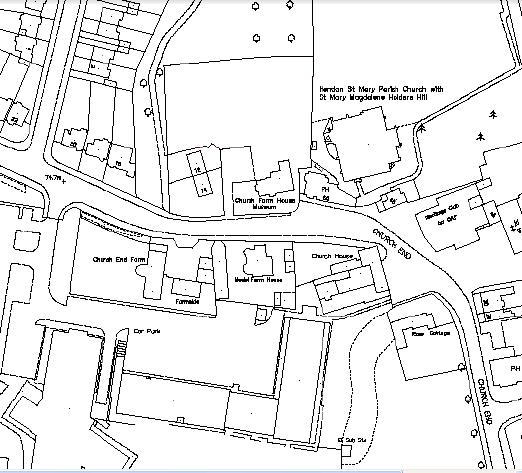
|
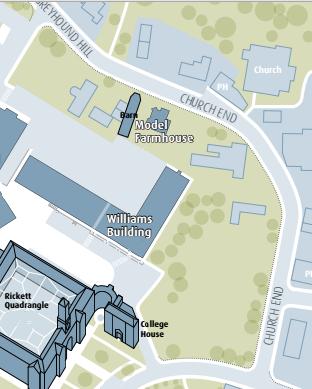
|
On the late nineteenth century map below, the farmstead track of Church End Farm can be seen as a lane between the old buildings, beneath what is now Williams Building. |
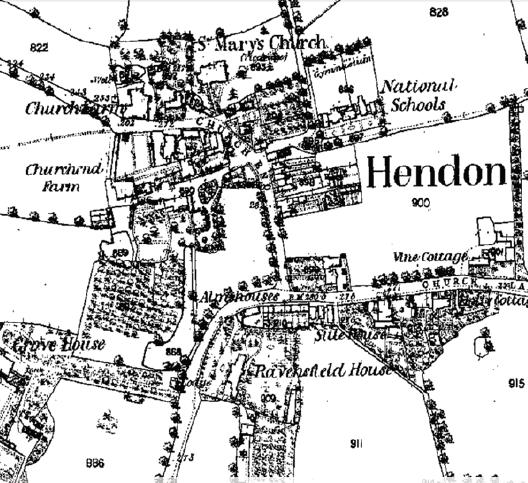
|
1887 A Trained Nurses Institute established at the Royal Free Hospital by the Matron, Eugenie Barton. During 1888-1889 Miss Barton set up a training programme, and the first Probationers and Lady Probationers commenced training. Probationers were aged between 23-35 years and served a 3 year training, after which they received the Hospital Certificate; they then served a 4th year as a Staff Nurse. They were provided with free board, lodging, uniform and laundry. Lady or Special Probationers were of a higher educational standard. Their training was not less than six months. They were required to pay for their training, and also their uniform and laundry.
About 1887 Dorothea Barbara Nickal born in Deptford. Her father (John Nickal) was a London County Council Inspector of Schools (1911) and, in the same year, Dorothea was a teacher in a London County Council school. She wrote a "scrapbook" of St Katharine's College for 1919-1933 which begins
"In the days before everyone became a psychologist and when educationalist had less to do with statistics, it is said that an Inspector of Schools reported of a teacher: 'Miss X's memory has failed and imaginations has taken its place'" (Handley 1978 p.22).
| The 1888 Local Government Act created London County Council and an elected Middlesex County Council. The main built area of the old Middlesex became the main part of London. Middlesex was the rural crescent around north London. By the time Middlesex was absorbed into London in 1965, it had already been almost completely covered with buildings. |

|
The County Council Coat of Arms was reused in the re-branding of Middlesex University in September 2012

|
1888 Dedication service for the Chapel at
St Katharine'e College, Tottenham
Morning and evening service, following the Book of Common Prayer of 1662 were the start and the end of the weekday life of students in the college. Before the chapel opened, prayers were said in one of the college rooms. "We have erred, and strayed from thy ways like lost sheep,"... "Lighten our darkness... defend us from all perils and dangers of this night" Chapel attendance (with a covered head) was compulsory until the 1930s |
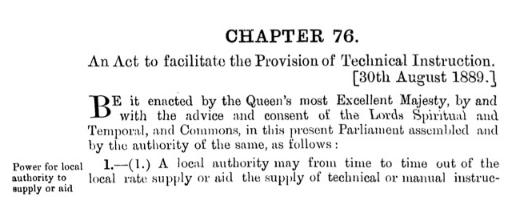
|
1889 and 1891 Technical Instruction Acts empowered local authorities to finance technical education from the rates.
Middlesex County Council Technical Education Committee established. It set up a scholarship scheme for boys to attend secondary schools in Middlesex and neighbouring counties. It established polytechnics, institutes, and secondary schools and became heavily involved in running independent schools and institutes. It merged into the Middlesex County Council Education Committee in 1903. (London Metropolian Archives Leaflet 27) See Benjamin Scaife Gott and Edward William Maples - 1907 - 1912 - 1915
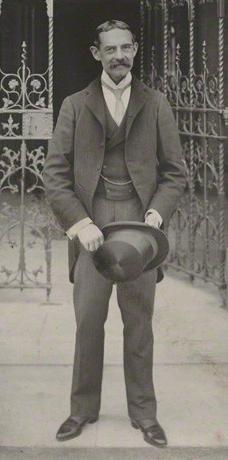
|
1889 Henry Ferryman Bowles (19.12.1858 - 14.10.1943), Conservative,
elected to the new Middlesex County Council as member for Enfield West.
In March of the same year he was elected as Member of Parliament for Enfield. Photographed by John Benjamin Stone outside the Houses of Parliament in June 1899. Copyright National Portrait Gallery He was Vice-Chair of the Middlesex Technical Education Committee from at least 1902. See November 1908 - December 1908 - January 1914 Henry Bowles' family home was Myddelton House, now famous because of the crocuses that his younger brother bred. In 1894, however, his father bought for him Forty Hall, just south of Myddelton House. In an essay called "God Bless the Squire", writing about his youth in Forty Hill, Enfield towards the start and during the first world war, Norman Lewis says: |
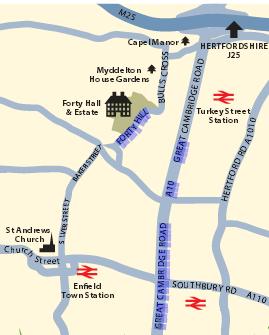
|
"The land and its hamlets were owned and ruled by Colonel Sir Henry
Ferryman Bowles, a sporadically benevolent tyrant"
The land was agricultural. The modern sketch map (left) is bisected by the Great Cambridge Road, built across agricultural land in the 1920s. The nearest industry was along the banks of the River Lea to the east of the Hertford Road where the main employer was the Royal Small Arms Factory. Many of Henry Bowles' questions in Parliament concerned the production of small arms and the welfare of the small arms workers. |
Beginning of the eighteen nineties St Katharine's Magazine started. First editor: Miss Pallot. (p.8)
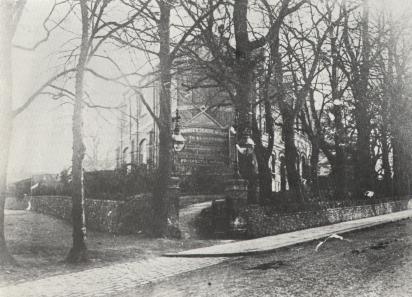
|
1890 (About). An early photograph of "Hornsey School of Art" (notice board in the photograph), "from the north-west" (caption in Ashwin 1982, p.8). |
Summer 1890 Birth in Dartmouth, Devon, of Reginald William Walls who became the first Principal of Hendon Technical College. His father was the local Gentleman's outfitter and Tailor and, after his father's death, his mother ran a boarding house. In 1911 Reginald was clerk to a coal merchant. He married Margaret Le G Short in the Totnes district (which includes Dartmouth) in 1916. In 1947 Walls was a Bacelor of Science (Economics), Bachelor of Commerce, A.L.A.A., [Accountant and Auditor] and A.C.I.S. [Institute of Chartered Secretaries] He may have obtained his Bachelor of Commerce degree at Manchester University. Three of their children (including twins) were born in Prescot, Lancashire, in 1926 and 1929. Assuming that Reginald Walls was Principal of Hendon at the opening of the college, his first five years were war years. The family lived in a large house in Sunny Gardens Road, north of the college, on the steep hill that goes down to RAF Hendon. (Electoral Registers 1951 - 1953). He arrears on a photograph of a Handley Page prize giving in 1954. During this period relations with the Handley Page factory at Cricklewood were important and may have stimulated the Hendon Block Release Scheme in 1952. Emrys Williams replaced Reginald Walls as Principal on 1.1.1955.
1891
Hornsey School of Art Committee requested financial support from
Middlesex County Council. First grant
1894.
7.3.1892 Hansard Enfield Small Arms said to be the only source of industrial employment in the neighbourhood.
The birth of Mary Alice Wolstencroft was recorded in Oldham in the September quarter of 1892. She worked in cotton mill, as her family did. On 11.12.1918 she married Henry W. Broadbent
1892 John Gerald Platt 1892-1975. Born Bolton, Lancs. studied at Leicester School of Art. Drawing Master at Kingston School of Art and master wood-engraver at Goldsmiths College. ARE 1924. Principal of Harrow Technical College and Art School 1930. Principal of Hornsey 1947. Died 1975.
|
Women's studies or "ladies desirous"
Gender and class As far as I know, domestic studies (those focused on the home) are not taught at Middlesex University, but these and other "women's studies" have played an important part in the genesis of the University. Nursing and teaching were almost exclusively women's studies in the early years and much of arts and crafts was dominated by women students. Engineering and Enfield were almost exclusively male. The gender distinction corresponds with a class distinction in that Enfield drew many students from skilled working class backgrounds whose were paid for by the council or their firms, whilst the women students in domestic studies, nursing, teaching and arts and crafts appear to have included a high proportion of fee-paying middle class women. In the history of Middlesex, the teaching of domestic studies began in the palace of the Archbishop of Canterbury in 1893. The National Society's Training School of Cookery. Lambeth Road in South East London was established the "disused brew house" of Lambeth Palace [It is possible that this refers to the vaulted undercroft once used to store beer and wine and now used as a chapel.] Guardian 30.5.1894 p.46 and other dates "There are a few vacancies for students. The training lasts six months or a year, and consists of a thorough training In artisan, plain, and superior household cookery, scullery-work, housekeeping, marketing, and general management. Diplomas are granted which are recognised by tho Education Department as qualifying the holders to teach cookery In public elementary schools. Ladies who aro desirous of taking short courses in plain or superior cooking can do so by arrangement. For further particulars apply to the Lady-Superintendent Miss Underwood Waugh." 21.8.1895: "Students are trained in scullery-work, artisan, plain, and superior cookery, also in housekeeping, scale of wages, elementary physiology, and chemistry of food." It was said of Agnes Turnbull that she "did much to further the cause of domestic subjects in the teaching world" (Handley, p.33)
By
the 1970s the term women's studies related not to domestic
subjects but to reflecting on why women were domestic subjects and how that
could be changed
|
Spring 1893 Birth in St Pancras of Margery Maughan, the second daughter of Annie and James, James being a medical practitioner. In 1901 the family lived at 56 Albany Street, Regents Park, and had a governess, a cook and a housemaid. In 1911 the live-in servants had gone, Annie was a "housewife", Dorothy (22), the eldest daughter, a student of pharmacy; Margery (18) a student of "domestic subjects" and James Douglas Maughan (14) was at school. Berridge House had opened in Hampstead in December 1908. At some time, Margery was a student there (Graham Handley p.33). She published from Kings College for Women in 1920. Margery (no one else) was still living with her parents at 56 Albany Street in 1924 and 1925. In 1925 she was appointed as Vice-Principal of Berridge House, and in 1926 Principal, See research on Posture. She died 31.3.1950, leaving £9,800 to her brother and brother-in-law.
1894 [Hornsey] Along with regular annual grants from Middlesex County Council, the management structure of the School changed. School's Committee was replaced and a joint committee with Middlesex County Council ran the newly financed school. The Joint Committee acquired greater responsibility, and was soon answerable for most aspects of the running of the School.
The "curriculum was expanded to include subjects which were regarded as being of more practical or industrial value, such as Modelling, Designing and Wood Carving" Ashwin 1982, p.13.)
|
Students' timetable
St Katharine's 1895
6.30am rising bell 7-8 private study 8-9 breakfast interval 9-9.30 chapel 9.30-12 lectures 12pm-1pm a walk (not in the town) 1-2 dinner interval 2-5 lectures 5-6 tea interval 6-8.30 private study 8.30-9 chapel 9--9.30 supper 9.30-10 preparation for bed 10 silence bell |
1895 National Union of Women Workers founded. "By 1900 the Union had set up a number of Special Committees" (web history). It became the National Council of Women in Great Britain in 1918. At some stage a Research Sub-Committee was established.
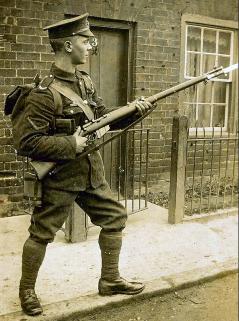
|
1895 The
Lee-Enfield bolt-action, magazine-fed, repeating rifle was the British
Army's standard rifle from 1895 to
1957. The Enfield part of its name came from its manufacture at
the
Enfield Small Arms Factory. Enfield Small Arms also made
the bayonets.
The early history of Enfield College is linked to educating the factory workers. Stanley Millward (1940s) found that the college was mainly for students from Enfield Small Arms and Enfield Cables. The Enfield Society has a collection of relevant photographs on its website under commerce and industry. |
15.5.1895 Birth of Henry Winterbottom Broadbent, the first Principal of Enfield Technical College Born Oldham, Lancashire. The son of a trade union secretary. He was at elementary school from 1900 to 1907 and secondary school from 1907 to 1909 (when he was 14), Apprenticeships first as a commercial clerk in a spinning company and then in the drawing office at a civil engineers enabled him to study and gain qualifications at Oldham Municipal Technical School in the years before the first world war. He failed the fitness test for military service and from May 1915 to September 1918 worked as an apprentice for "Messrs Royce Ltd, Trafford Park, Manchester" learning the trade of an electrical and mechanical engineer and continuing his studies at the technical school. He was "Turner - Toolroom - Fitter" for two and a half years and then "Jig and Tool Designer" for 10 months. For a few months in 1918/1919 he worked in the Royal Aircraft Factory, Oldham and then as Head Draughtsman at another firm before entering Manchester University as an engineering student in the autumn of 1919. Whilst working at the aircraft factory, he had married Mary Alice Wolstencroft a month after the war ended in 1918. Mary and Henry's children were born in Oldham and married in Edmonton. After Manchester University (See 1922 and 1923) Henry worked (from March 1923) at Mather and Platt Ltd, Park Works, Manchester (see company history) as Assistant Designer and Technical Engineer designing turbine and centrifugal pumps. [Most of these details from his application to become a member of the Institution of Mechanical Engineers]. By 1936, he and his family had moved to 96 Cavendish Avenue, Harrow, London. He was appointed Principal of the new Enfield Technical College in 1941, his children married in 1946 and 1947 and then he died, suddenly, in the spring of 1950.
20.11.1895 Euphemia Sheila MacEwan born. About 1899 (four years old) she began kindergarten at Channing school for girls, moving with her teacher to Bisham Gardens. She would have been approaching 18 in the autumn of 1913, when she started as a student at Hornsey.
The first Middlesex polytechnics
In 1915, Middlesex had three "polytechnics". Two (below) opened in 1896 and Acton and Chiswick, which was opened in 1899.
Middlesex County Council bought the St Lawrence Institute in Priory Park Road, Kilburn in West London, which was opened as Willesden Polytechnic. It was enlarged by a new building in Glengall Road, Kilburn in 1904. {Willesden Polytechnic (?) and School of Art on front). The first girls trade school in Middlesex was opened at Willsden Polytechnic in 1910
Until the spread of working-class housing in the 1870s, Tottenham, on the road from London to Ponders End and Hertfordshire, was noted for private schools. One of these was Grove House. Classes in art, science, and technical subjects began at Grove House in 1892 and in 1896 the building was bought by Middlesex County Council to form Tottenham Polytechnic. The second girls trade school in Middlesex was opened at Tottenham Polytechnic in 1914
In London, the "Northern Polytechnic Institute" opened on Holloway Road in 1896. This became the "Northern Polytechnic" in 1924. The Northern had a "Women's Department which ran cookery clases, needlework, dressmaking and the like" (John Izbicki in Floud and Glynn 1998 p.213).
Benjamin Scaife Gott (1865-1933) was Organising Secretary of Technical Education for Middlesex County Council from 1898 to 1928. He was born and buried in Bingley Yorkshire. BA (Natural Science Tripos. First Class) 1886. He was Science Master at Wesley College, Shefield from 1888-1891 and Head Master, Cheltenham School of Science from 1891 to 1897. (Alumni Cantabrigenses)
In 1899, the Board of Education replaced the Education Department of the Privy Council, It became the Ministry of Education in 1944
Middlesex County Council acquired Acton and Chiswick Polytechnic, Bath Road, Chiswick, West London. It was enlarged in 1908. The first boys trade school in Middlesex was opened here in 1910.
2.6.1899 Birth of Eric Pascal. His parents ran a grocery business in Birmingham. Eric obtained an MA at Cambridge University and in 1929 was Assistant Master at Bishop Stortford College, Hertfordshire. He was living in Enfield by 1932 and by 1937 was Director of Education for the Urban District of Enfield. See 1942 - 15.8.1945 - 1947 Year Book - clerk to the Governors from 1949 to 1965 - 1953 - 2.3.1962 - Easter 1968 - Pascal Laboratories - Pascal Building . He died in Stevanage, Hertfordshire in September 1978.
29.6.1899 Birth of Agnes May Ottley, the second of five daughters of May and Robert Lawrence Ottley (2.9.1856 - 1.2.1933) of Teignmouth in Devon. Robert was a clergyman of the established church. He was the second Principal of Pusey House, Oxford from 1893 to 1897. Then Vicar of Winterbourne Basset in Wiltshire (where Agnes was born). He was also Professor of Pastoral Theology at Oxford University and Canon of Christ Church, Oxford.. Agnes May Ottley became the Principal of St Katharine's College in January 1934, a year after her father's death. She retired in December 1959 and died, aged 90, in Surrey in 1990
26.11.1899 Herbert Willan Wadge born. Baptised 25.12.1899: Wesleyan Methodist, Durham Circuit, Durham. Father: Thomas (Tom) Stenlake Wadge. Mother: Jane Alice. His birth of was recorded Chester le Street in the March quarter of 1900. His father was a coalminer and the name "Willan" was his mother's maiden name. 24.10.1917joined the Coldsteam Guards as a reserve. Address 20 Woodland Terrace, New Washington, Co Durham. At some time before 1947, he obtained a Bachelor of Science Degree (University of London). He married Edith Jane Thompson (a shop-assistant in 1911), the daughter of a colliery blacksmith in 1925. Herbert was on the London electoral role at 68 Gardenia Road, Enfield from 1926. This was the house of Edith Maynard, a spinster aged about 50, who was the head teacher Enfield Elementary School [Board School] in 1911. The Wadge family then moved to 19 Meadow Way, Eastcote, Ruislip, in West London (1930-1939 registers). At some time before 1942 Herbert Willan became headmaster of the Enfield Technical School (until 1947). From 1947 he was headmaster of the Sheffield Central Technical School. He was made MBE in 1956. Herbert Willan Wadge died in Barnsley, Yorkshire, in the spring of 1989.
Tuesday 22.1.1901 Victoria, queen since 1837, died. Amongst the children named Victoria that spring was Elsie Grace Victoria Davenport.
1901 [Enfield] Ediswan Institute
A large private house in Ponders End High Street was purchased by Sir Joseph Wilson Swan for use as a social centre for his employees. It was also used for evening classes.
"The College traces its birth to the foresight of a great man and a pioneer of electrical engineering, Sir Joseph Wilson Swan [1828- 1914]. In 1901 he purchased premises in High Street, Ponders End. This became known as the Ediswan Institute; it was used as a technical school in the evenings and also acted as a recreational centre for the staff and employees of Swan's company. The basement of the building was used by Sir Joseph for experiments; until a few years ago his lathe was still usable." [1964-1965 Prospectus p.6]
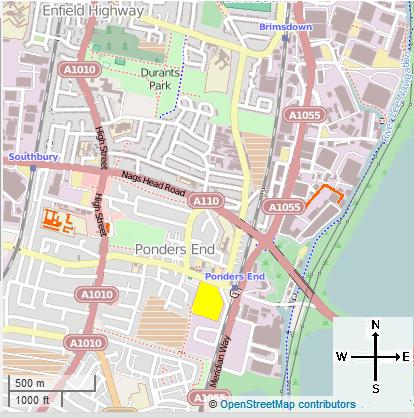
|
Enfield Small Arms
was further north than Brimsdown, near Enfield Lock.
On this modern map, the part of Duck Lees Lane (East Duck Lees Lane) leading down to the Ediswan factory and the River Lee Navigation is shown in orange to the east. Orange on either side of Ponders End High Street marks the 1901 Swan house (east side) and the 1940s and later college buildings (west side). |
Brimsdown electric power station (1903) was originally concerned primarily with supplying power for electric trams. Metropolitan Electric Tramways Ltd was established in 1901. There were electric trams from Finsbury Park to Tottenham from 1904, extended to Tramway Avenue in 1905 and north, through Ponders End, to Freezywater by 1906. By 1908 the trams ran to Waltham Cross. They made passenger services on the railway line from Edmonton through Southbury (then Churchbury) redundant. These closed on 1.10.1909, reopened for munitions workers from 1.3.1915 and 1.7.1919 and then closed until 1960. Successive colleges at Ponders End were primarily reached by tram, bus or trolley bus (or on foot or cycle or by car) until 1960. In 1911 (when the new Institute was opened) the tramway was extended from Ponders End along the Southbury Road to Enfield Town. There was intense competition between buses and trams. In 1938 all tram routes in Edmonton and Enfield became trolleybus routes except for the Southbury Road route which was taken over by motor buses. In 1961 all the trolleybuses stopped and the overhead wires were removed.
About 1901 Roderick McCrae born (possibly outside the United Kingdom). At some time, he obtained a B.Sc in Engineering and became a Member of the Institute of Mechanical Engineers. He became Head of Mechanical Engineering at Kingston in 1939 - He may have married Ivy Goddard in Blandford, Dorset in the June quarter of 1945. He became Principal of Enfield Technical College in 1950. See 1955 - 1961 - 1962 memorial 15.5.1962
1902 In 1902 Stanley Millward's Aunt Lily was learning to be a teacher at All Saints, Tottenham. In 1968, Stanley Millward was helping to computerise control of a lathe at Enfield College of Technology - across the road from where Joseph Swan's lathe had been.
1902 Ripaults founded. The original name was Leo Ripault and Co of 64a Poland Street. Leopold Ripault was a French citizen born about 1856 who died in 1926. The firm sold Oleo (spark) plugs for cars, amongst other things, and at least some of these were imports from France. During the first world war it moved to 1 Kings Road, St. Pancras, N.W.1. It became a private company in 1923 (Ripaults Limited). The company established a large factory in Enfield in 1936 and after the second world war its advertisements focus on its cables (and sometimes other accessories) for cars. (See 1947 and 1953 and 1970s). Ripaults has been described as a "family firm" (meaning, I think, that it was privately owned). George A. Roberts became its managing director and chairman. The factory had closed by 1988, when it became a listed building.
17.6.1902 Hansard COLONEL BOWLES (Middlesex, Enfield) said he was Vice-Chairman of the Technical Education Committee in his own county, and represented on that Council an urban district which would be its own authority for elementary education.
18.12.1902 Royal Assent to the 1902 Education Act. From 1903, under this Act, Middlesex County Council (in rural areas) or borough or urban district councils (in urban areas) became responsible for elementary education. Middlesex Council became responsible for secondary and technical education throughout the county. As well as being responsibility for the schools they provided, these "Local Education Authorities" had responsibility for the secular curriculum of voluntary (church) schools. Most of the church schools were run by the Church of England. The Act also allowed Local Education Authorities to support teacher training colleges, most of which were church owned.
20.12.1902 London Middlesex Gazette "... be made that a letterbox be erected near the Ediswan Institute ; and also that a lamp be erected outside the new office. To this the Council agreed."
"Rapid urbanisation of Middlesex between 1903 and 1939 led to a prolonged period of school building. In 1902 there were only five endowed and four council provided secondary schools in Middlesex. By 1939 Middlesex County Council had established 42 county secondary schools, including county or municipal schools with a more "modern" and varied curriculum than the old grammar schools. Further education was also developed with the opening of new technical colleges and the rebuilding and enlargement of the existing polytechnics." (London Metropolian Archives Leaflet 27)
Middlesex County Council Architect's Department was created in 1903 with Harry George Crothall as its Surveyor (County Architect from 1905). "The bulk of the Department's work was concerned with schools and polytechnics" AIM25 Catalogue
The North Metropolitan Electric Power Supply Company opened Brimsdown Power Station on the River Lee, near Enfield. Initially its primarily purpose was to supply power for electric tramways, but electricity was supplied for domestic use when cables had been laid.
"Perhaps... the single event of greatest significance to the industrial development of Enfield was the establishment of the Northmet Power Station at Brimsdown... when the modern Green Street was only a cinder- track but the Lee Navigation Canal offered coal and cooling-water" (Industries of Enfield 1948 p.19)
From the autumn of 1906 a Mr W. H. Bray provided "special classes, for instruction in electric lighting and power transmission, a subject which has increased importance now that electric mains have been laid throughout the district." In 1908 a number of male students at Ponders End passed City and Guilds examinations in "Electric Wiremen's Work" and "Electrical Engineering (Elementary)".
[ Industries of Enfield 1948 (p.108) says the Northmet Power Company was established in 1900 and that supply was first commenced in Enfield in 1906. The Eastern Electricity Board took over the Northmet on 1.4.1948. The Central Electricity Generating Board decommissioned Brimsdown in 1974].
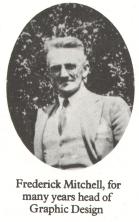
Picture from Clive Ashwin 1982 |
About 1903 Frederick James Mitchell born. He was an Art Master (27) at 19 Barlow Terrace in Keighly, Yorkshire on 19.7.1930, when he married Winifred Jane Pearcey (23) of North Mount Riddleston, Yorkshire, at St Mary Riddlesden. His father was George Frederick Mitchell, a "Manager". In 1946, Frederick J. Mitchell and Winifred J. Mitchell lived at 20 Rokesly Avenue, [Hornsey, London] N8. Frederick J. Mitchell, "A Crouch End resident", who was "Head of Art at Hornsey College of Art" painted the demolition of St George's Church in Hornsey in 1956 and created the stained glass window in Hornsey Library in 1965. Fred and Sheila MacEwan kept in contact after her retirement. |
20.11.1903
Sociological Society formed in London
|
From George Bernard Shaw's Man and Superman. A comedy and a
philosophy 1903. Act Two.
TANNER [A gentleman talking about the mechanic who is mending his car] .... this chap has been educated. What's more, he knows that we havn't. What was that Board School of yours, Straker? STRAKER. Sherbrooke Road. TANNER. Sherbrooke Road! Would any of us say Rugby! Harrow! Eton! in that tone of intellectual snobbery? Sherbrooke Road is a place where boys learn something: Eton is a boy farm where we are sent because we are nuisances at home, and because in after life, whenever a Duke is mentioned, we can claim him as an old school-fellow.
STRAKER. Never you mind him, Mr Robinson. He likes to talk. We know him, dont we? OCTAVIUS [earnestly] But theres a great truth at the bottom of what he says. I believe most intensely in the dignity of labour. STRAKER [unimpressed] Thats because you never done any, Mr Robinson. My business is to do away with labour. Youll get more out of me and a machine than you will out of twenty labourers, and not so much to drink either. TANNER. For heaven's sake, Tavy, dont start him on political economy. He knows all about it; and we dont. Youre only a poetic Socialist, Tavy: he's a scientific one. STRAKER [unperturbed] Yes. Well, this conversation is very improvin; but Ive got to look after the car; and you two want to talk about your ladies. I know. [He retires to busy himself about the car; and presently saunters off towards the house]. TANNER. Thats a very momentous social phenomenon. OCTAVIUS. What is? TANNER. Straker is. Here have we literary and cultured persons been for years setting up a cry of the New Woman whenever some unusually old fashioned female came along, and never noticing the advent of the New Man. Straker's the New Man. This is my choice for the Middlesex University play of the year for 1903 |
"As I mused, a spectre loomed in the distance. H M I" [His Majesty's Inspectorate of schools] "had arrived, in his airship, at the village school" (p.13)
1904 [Hornsey] By 1904, the School was under the joint control of the Board of Education and the Middlesex County Council. Numbers were increasing, and the need for larger accommodation led to the conversion of the headmaster's house into teaching rooms.

|
1904
Professor Ambrose
Fleming
registered an improved version of his earlier experimental
device (the lamp with the extra electrode). This was the world's first
thermionic valve, British Patent No 24850. (Jim Lewis, North
Circular, 9.5.1996) "From this developed the multi-media communications
industry of today"
The valve can only pass an electric signal one way. Consequently, alternating signals from radio waves can be converted into pulsating direct current that can be used to produce sound. Valves can also be used in binary calculations with current flowing counting as one state and not flowing counting as the other state. |
Saturday 9.1.1904 London Middlesex Gazette
"COUNTY COUNCIL COOKERY CLASS. TO THE EDITOR, Dear Sir,-Kindly allow me to make known by means of your valuable paper that the County Council Cookery Class will not be held at the Ediswan Institute ,- as advertised in the syllabus, but at St. Matthew's Schoolroom, South-street, Ponders End, commencing Thursday next, the 14th inst. The teacher will be Miss Mary Turner, and Mrs [illegible] will be class manageress, to whom all applications to join should be sent. Yours faithfully, JOHN F. E. MULLETT, Vice-chairman E.T.E.C. Bridge-house, Ponders End." [John Frederick Edward Mullett (1848-1917) described himself as a drug merchant. He was a Councillor. I assume E.T.E.C. is the Enfield Technical Education Committee and that it is the same as the Enfield Technical Instruction Committee. St Matthew's was (is) a Church of England School. In 1904 the South Street site appears to have bee a junior girls school.]
27.10.1904 Association of Teachers in Technical Institutes formed at an inaugural meeting of 200 at Birkbeck College. 150 joined the Association. There were twelve polytechnic in London, thirteen technical institutions outside London, and over one hundred science schools. There were large numbers of part-time teachers, teaching mainly evening students, but the impetus to the formation of the association came from the growing number of full-time qualified staff. The name was changed to Association of Teachers in Technical Institutions in 1906
Edward William Maples (1872-19??) was, like Benjamin Scaife Gott , a graduate of Cambridge University. He was Principal of Cedars School in Ealing from 1899 to 1905 and then Assistant Secretary for Higher Education to Middlesex Education Committee. He was a major in the Welsh Fusiliers 1914-1919. (Alumni Cantabrigenses)
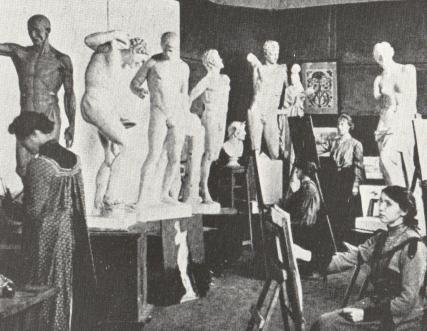
|
1905
[Hornsey]
The Antique Room at Hornsey School of Art was set up when it opened in 1882 with plaster casts supplied by the Department of Art and Science. |
Amongst the photographs of pre-1914 classes in Ashwin 1982, a young man (with three ladies) appears in an undated photograph of Frank Swinstead's perspective class. Otherwise, the students shown are women.
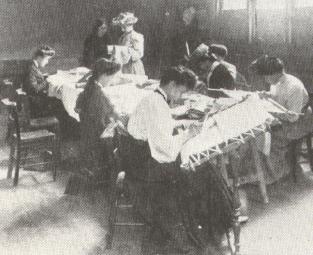
|
The students photographed in art needlework in 1905 were all women. So were
the students photographed in the modelling room (not shown) in the antique
room (above) and in the wood carving class (below).
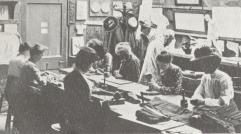
|
29.10.1905 Birth of Joseph Pierce McCrum who "exhibited a number of stunning and highly decorative lacquer panels with the Arts and Crafts Exhibition Society in the late 1920s and early 1930s". One of these was Island Picnic, in 1929, when he lived in Edgware. He and Phyllis Elizabeth McCrum lived n Hendon in 1931. He was teaching at Hornsey in 1943 and wrote for the Your Home Crafts series after the war. He also illustrated a book on Grimsby trawlers, for primary schools, in 1961. He died in Taunton in 1998 or 1999.
1905 [Enfield] The house purchased by Joseph Swan was bought by Middlesex County Council in 1905.
"The Middlesex County Council purchased the building in 1905 and in 1906 it was opened as an evening institute. The kitchen was used as a chemistry laboratory and one of the living rooms as a science laboratory. The junior technical school began using the building a year or two later." [1964-1965 Prospectus p.6]
|
29.9.1906
London Middlesex Gazette Page 5
The success of last year's Classes, has induced the Enfield Technical Instruction Committee to make additions and extensions for this year that cannot fail to increase their usefulness. This year, too, there are five centres, instead of four, the additional centre being located at the Parish Room, Cockfosters. The classes to be formed will be for instruction in Art (teacher, Mr A. H. Greenfield), Building Construction. (Mr. A. Norton), Electric Lighting (Mr. W. H. Bray), Mathematics, Machine Construction, Geometry and Elementary Science (Mr. A. J. Crofts, B.Sc.), Manual Training and Carpentry (Mr. W. Brown), Bookkeeping (Mr. A, W. W?r??ise), Wood-carving (Mr. S. J. Reach), . Shorthand (Mr T. P. Thomas); Typewriting (Mr. J. Rushbridge), French (Mr. ?? G. LeBas), Horticulture (Mr. J. Weathers. F.R.H.S.), Dressmaking (Miss G. Cook), and Cooking (Miss M. Turner). The Art section is divided into elementary and advanced classes, and the instruction given will be such as to meet, the requirements of all classes of students, such as those who are engaged in industrial Occupations, art manufacturers, teachers in elementary.schools, and those who desire to make Art their chief occupation. In the Building Construction Classes will be taught drawing to scale of plans, etc., elementary principles of brickwork, carpentry: and ironwork, plain-lettering, etc. There are also separate classes for woodwork and carpentry in which instruction is given in manual training and carpentry. The syllabus for both the cooking and dressmaking. classes, which have always proved two of the most popular sections of the Committee's efforts, as excellent and thorough in character as hitherto. The French, classes will be conducted in that language which students will be taught to speak from the commencement. In the advanced classes special attention will be given to commercial and conversational French. The shorthand class will, be divided into elementary and advanced sections. In these days when so much importance is attached to a good commercial education, the class for typewriting and office routine has no slight value. It is specially intended to give those who propose entering commercial life a thorough knowledge of general office work. To this a valuable adjunct is the commercial arithmetic and book-keeping. At the Ponders End Technical Institute will be special classes, for instruction in electric lighting and power transmission, a subject which has increased importance now that electric mains have been laid throughout the district. At the same centre classes for workshop mathematics and for elementary experimental science will [illegible] At the Cockfosters Centre there will be ..a woodcarving class. The most important Class at the Enfield Lock Centre is that for machine construction and drawing. Students will be instructed in the form of the parts of machines, the physical [illegible] |
1906: Birth [Islington?] of George A. Roberts who was Chair of the Enfield College governors from 1949 to 1968. Possibly the son of Walter Charles Roberts, a bricklayer who engaged in finance. He married Mabel Florence Cannon in the Edmonton district in the summer of 1929. Mabel (baptised 11.3.1906) was the daughter of Luisa and Augustus Cannon. Her father worked as a woodworking machinist making cameras and in 1911 they lived in Wood Green (in the Edmonton district). From 1949, or before, to 1963, or later, they lived at 17 Eversley Crescent, N21 Southgate. George Roberts became the chairman and managing director of Ripaults in Southbury Road. [Factory 1936] He was very active in local affairs. He was a founding member of both the Enfield Football Alliance and Enfield Trustee Savings Bank. He died in April 1996, aged 90. A member of Winchmore Hill Sports Club from 1937 to his death (at which time he was its senior trustee). His wife was known as "Bobby". (obituary)
3.4.1906 Birth of Alexander George Stretch [Alec Stretch], probably at 54 St Marks Rd, Bush Hill Park, Enfield where his family lived (at least from 1911). His father was George Alfred Stretch (aged 31) an electrical engineer. His mother Ellen Caroline (or Helen Caroline - or Caroline Ellen etc]. Alec also became an electrician. He was "for many years" the Chief Electrician at the Intimate Theatre in Palmers Green. Built as a (Catholic) Church Hall in 1931, this opened as a theatre in 1934, and became a full-time repertory theatre in 1937. In the second world war, Alec was seconded to Enfield Technical College to train army engineers. He helped to found Enfield Technical College Entertainments Association and the development of this was a major feature of his (and his family's) life. In the 1964-1965 Prospectus he is shown as a lecturer or assistant lecturer (one of two with no letters after his name) in the Department of Electrical Engineering. The "Enfield College of Technology Entertainments Association" has its own section (and photograph) which states that "Application for membership and details of current activities should be made to: The Hon. General Secretary, ECTEA, Enfield College of Technology, Queensway, Enfield"
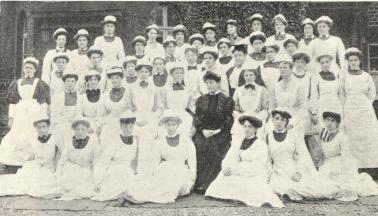
|
Principal Miss Agnes Turnbull
sits in a sea of
her cookery students and staff.
Graham Handley dates this photograph 1906/1907, which would place it before the move to Berridge House. |
Trade schools and employment bureaux needed
Wednesday 24.10.1906 The Conference of Women Workers at Tunbridge
Wells heard "various accounts ... of attempts to solve the difficult work
of training in trades, domestic work, and professions".
Reports received included ones from Belgium of joint assessments by parents
and teachers of a
child's suitability for particular trades followed compulsory "continuation
classes" on two evenings a week (with afternoon time of from work in lieu)
for working children between 14 and 16. The conference also recommended
15.10.1907 Edward John Bassett born. His father, Frederick Bassett,
(39 in
1911) was a "Rubber Moulder". The family lived at 65 West Green Road,
Tottenham North.
See
Eddie Bassett
1921 - married Amy Ivy
2.8.1937 -
war -
Audrey
- Enfield -
1954 -
died 4.11.1997
1907 Higher education in the administrative County of Middlesex,
1907 (report ... prepared by Mr.
B.S. Gott ... and Mr.
E.W. Maples.)
[With plates, including plans, and maps.]
Middlesex Education Committee (Middlesex) London, [1907]
vii and 182 pages. [Later Sir]
Benjamin Scaife Gott and
Edward William Maples].
1908 to 1968 Hendon Aerodrome. See
Wikipedia and
aeronautics
"In the present state of education in England the weak points
are :--(1) There is no recognised system in the trade schools as at present
established. (2) Only children who would do well in any case are taught.
(3) Only about .005 per cent. of the children
are having any specialised training at all. This is absolutely fatal to any
improvement in our trade competition with foreign nations."
"official bureaux... in every large town.., as well known as
the post-office, whore casual employers of such tradesmen as paperhangers,
carpenters, painters, piano-tuners, needlewomen, cooks, charwomen, could
apply, read the qualifications and attested references, and engage for a
day or week as required. This would prove of inestimable benefit to middle-
class housewives and those needing work".
(Spectator 27.10.1906)
| 1908 Hampstead - Berridge House Premises for Field Lane boys' industrial school were built on the north side of Hillfield Road in Hampstead 1877. In 1908 Berridge House opened next to the industrial school, at the junction of Hillfield Road and Fortune Green Lane, as the National Society's training college for teachers of domestic subjects. (Victoria County History) |
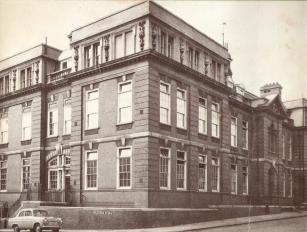
|
This picture of Berridge House about 1962 is taken from the back cover of Graham Handley's history. The building is the one erected in 1908 and an early photograph (1909) shows a sign saying "National Society Training College".
5.2.1908 Birth in Wales of Emrys Williams who became the second Principal of Hendon Technical College in 1955. Probaby a chemistry student at (one of the sites) of the University of Wales, he moved to Imperial College, London. In 1936 he married Hettie Sarah Emily Jones in a Welsh speaking part of West Wales. Her father was both a draper and and a grocer. On 1.10.1947 he was appointed Principal of the Harrow Technical and Art School, in place of John Gerald Platt , who became Principal of the Hornsey School of Art. In 1953 he appeared in The Children's Newspaper endorsing a liberal education for technologists. On 1.1.1955 he became the second Principal of Hendon in place of Reginald Walls.
|
London Middlesex Gazette 21.11.1908
Report on the annual presentation of certificates to successful students in Enfield Technical Classes "The students were almost a thousand - precisely, nine hundred and ninety- seven- a notable increase, from their numbers a few years since, when they found a much smaller room large enough for their annual gathering." This meeting was held in the great hall in the Southbury Road Schools Colonel Henry Bowles (of Forty Hall), Chair of the Enfield Technical Education Committee, "as usual, presided". The speech was made by Sir William Collins, Vice-Chancellor of London University, and certificates were presented by Lady Collins. William Collins, a Liberal, was a cousin of Henry Bowles. Colonel Bowles noted that certificates might have been "sent by post", but "the public presentation helped to increase the interest in tho work the classes" and certificates received from "the hands of some distinguished person" would be "much more appreciated". Colonel Bowles contrasted Enfield to the London Education Authority to which Sir William Collins belonged. Enfield's "population was scattered over a much wider area, and, further, they could not command the same amount of funds, otherwise they would have tried to provide greater facilities for their ever-increasing population. Up to then, unlike the.London area, they possessed no Technical Institute; indeed, he might say they had no proper home. However, he hoped that next month they would be laying the foundation stones of the new Technical Institute and of a new Secondary School for Girls. Their old Grammar School had provided, for the boys, but, in those bygone days no provision was made for the education of the girls, and this was the want that they hoped to supply. Meanwhile, until the Technical Institute was in working order, these classes supplied the want, and among, them he was particularly pleased with the Electrical Classes at Ponders End, which were doing excellent work. They had there already the Ediswan Electrical Works, and he hoped that in the days to come someone of their students might be able to erect works which would enable England to equal even the work of Edison himself in electrical manufacture." Amonst those who took part in the entertainments "Mrs A.J. Crofts, Miss J. Hark and Mr A.B. Nyo gave some delightful songs" |
Enfield County School for Girls and Technical Institute "Enfield County School for Girls opened in 1909 in Holly Walk, sharing a large red-brick building with a pupil-teachers' centre and a technical institute". (Victoria County History) Gott and Crothall's 1915 book on Middlesex Secondary Schools and Technical Institutes (pages 38-40) does not mention the pupil-teachers' centre. It says that there was accommodation for 250 girls in a Hall - Eight Class Rooms - Chemical Laboratory - Physical Laboratory - Preparation and Balance Room - Cooker and Domestic Subjects Room - Art Room - Two Large Workshops - Library - Secretary's Office - Rooms for principal and Staff - Cloak Rooms, Lavatories, Cycle Stores etc.
|
1909 First edition of
Berridge House Recipe Book according to
Graham Handley.
Catalogues list a 1910 copy, but one says an earlier edition exists.
Household Books Published in Britain has a contents list for 1910 that differs from mine: "The main body of the text is divided into two courses of cookery lessons, a first course of thirty- two lessons and a second course of thirty-three lessons. A section of supplementary recipes and the index follow the second course. Sixteen blank leaves, excluding the end-paper, are bound in after page 152." Price given as eighteen pence. My copy is published by London: National Society's Depository, 19 Great Peter Street, Westminster, SW1. It has the signature E. Monatgue-Polloch, LVI [Lower sixth form?] in the front and handwritten notes for medlar jelly dated December 1931 at the back. The book appears to be intended as a school text-book. Contents: Scullery Work Section: [This is about cleaning and maintaining the kitchen] The Kitchen Range - a Stone Hearth - Gas Stoves - Oil Stoves - [No mention of electricity] - Saucepans - Metals - Knives [etc] - China, Earthenware and Enamelled Ware - The Sink - Galvanised Iron Baths and Pails - Wood - Rules for Scrubbing - Recipe for Scrubbing Paste Sauces - Stocks and Soups - Fish - Vegetables - Salads - Meats - Hot and Cold Puddings (Sweets) - Bread and Cakes - Savoury, Egg, Supper Dishes, Etc. - Invalid Cookery, Beverages [This section includes Tea and Coffee] - Jam, Jelly, Pickles - Index. Book of the year for 1909 My copy has thirteen pages for the scullery work section (pages v-xiii), pages 1-217 for recipes and 219-226 index, followed by blank pages for notes. 1910 editions listed in COPAC have vi and 152 pages. A revised edition was published in 1925. [Possibly my edition] It was translated into Braille in 1930. (Graham Handley p.35) A Part Two (Advanced) of the Berridge House Recipe Book was published in 1934. (Graham Handley p.35). "345 recipes in total starting with Bearnaise sauce and ending with veal forcemeat. In between we find hot crayfish or lobster, braised celery, flageolets, spatchcock of game..." (internet) Cookery: Berridge House recipe book 13th edition was published in London by the National Society's Training College of Domestic Subjects in 1963. 238 pages |
Benjamin Scaife Gott presented a report to the [Middlesex] Committee on Trade and Continuation Schools, with details of such schools in England, France and Germany. It was decided to run four such schools as an experiment.
September 1910 The first two Trade Schools opened in the west of the county:
September 1910 Engineering Trades Trade School for boys opened at Acton and Chiswick Polytechnic. [84 students in 1913-1914. 91 pupils Autumn 1914]
September 1910 Dressmaking Trades School for girls opened at Willesden Polytechnic. [61 students in 1913-1914. 91 pupils Autumn 1914]
The second two Trade Schools opened in the east of the county, at Ponders End in 1911 and at Tottenham in 1914. A commercial Trade School was also envisaged.
September 1911 Ponders End Technical Institute opened. A purpose built building the capital costs of which were met jointly by the War Office (£500), Middlesex County Council (who built it) and Enfield Urban District Council. The main part of the Technical Institute appears to have been the Trade School training boys for the Engineering Trades. This had 63 pupils in 1913-1914 and 66 pupils in the Autumn of 1914. However, the Institute had classroom provision for 178 students.
Capital costs of secondary schools were normally divided equally between
the County Council and the District served by the school (1915a p.20)
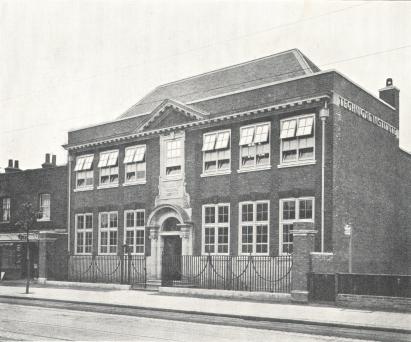
|
This photograph and the plans that follow are taken from
Gott and Crothall's 1915 book on Middlesex Secondary Schools and
Technical Institutes (pages 100-102).
The land to the right of the institute has to let sign in the 1911/1915 photograph, but is still open space in the recent photographs. |
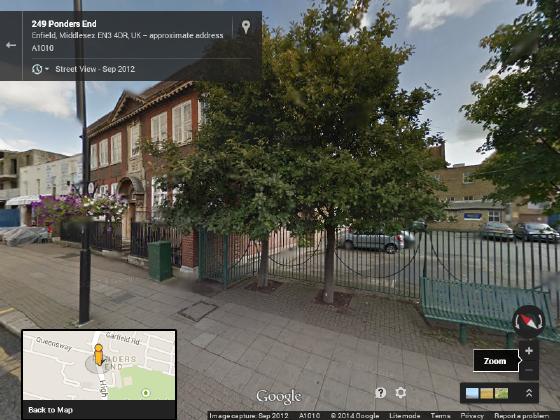
|
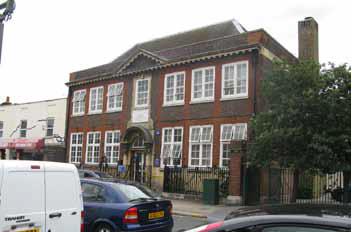
The building now called the Swan Annexe (previously the Science Block) in Ponder's End High Street. |
"Enfield Trade School The Clerk reported that the Middlesex Education Committee had decided to award to boys under 14 years of age on August 1st, last, and not under 12 years of age on Jan. 1st last, twelve scholarships for the County Trade School which is to be opened at Ponders End in September next." London Middlesex Gaxette Saturday 8.7.1911 |
The Trade School provided one or two year education for boys when they left school at thirteen. The Institute also provided day release and evening classes.
Women I have not come across any reference to women students at the Ponders End Technical Institute apart from the provision (shown below) of a cloak room and a typewriting classroom at the front of the building. The back has male urinals etc only. The provision of typewriting does not mean that these students were women, but it seems likely that many were. The classe provided previously by Enfield Technical Instruction Committee included many for women, but Enfield County School for Girls and Technical Institute had opened in Holly Walk, Enfield in 1909.
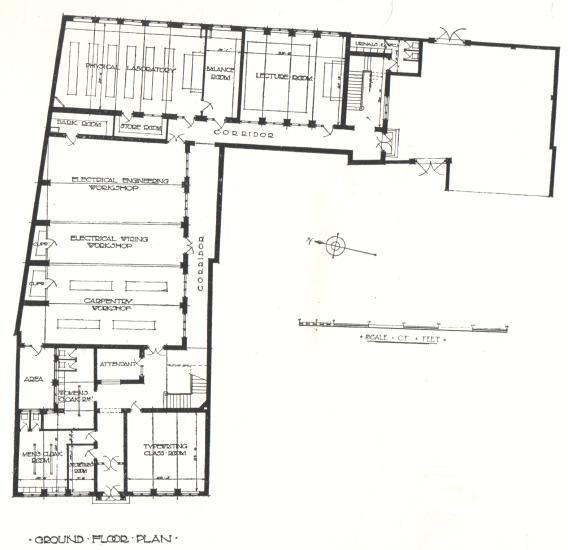
|
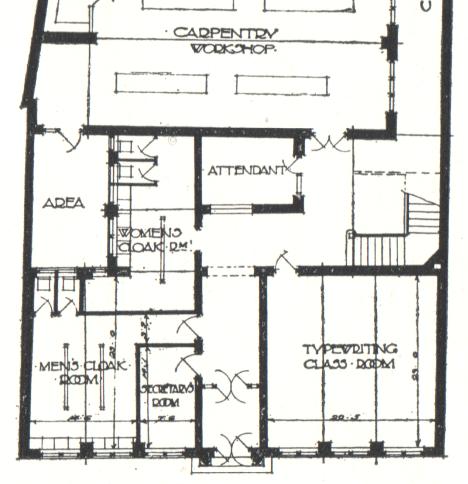
|
|
The front of the building (above) has a women's cloak room, an attendant, a
secretary's room and a typewriting classroom.
At the back only men are catered for Upstairs (see below) there are two sets of classrooms divided by a roof. The front set might conveniently have accommodated women's or mixed classes. |
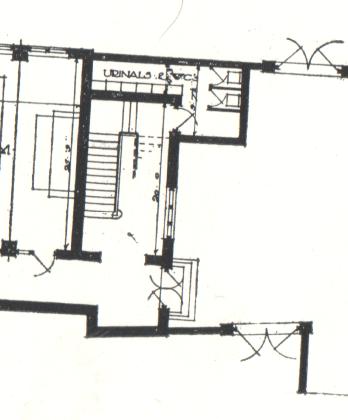
|
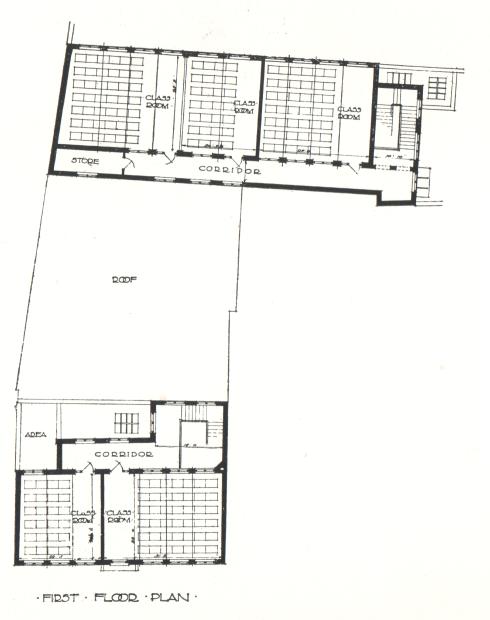
|
|
1915: "In connection with the Trade School at
Chiswick, an attempt is being made to start Part Time Classes
for
apprentices
in the Engineering Trades. These have only stared this
session; but about thirty apprentices are attending for two hours on each
of two afternoons. If this experiment is successful, there should be a
considerable extension of it in those districts of Middlesex in which
industries are established.
"A somewhat similar attempt has been made for a small number of boys who are working at the Small Arms Factory at Enfield Lock. "The scheme adopted by the War Office for the training of the apprentices (trade lads) engaged at the Small Arms Factory Enfield, and at the Woolwich Arsenal is of special interest. The boys are selected by written examination, the successful candidates being bound as apprentices for four years. During this period they are required to attend special technical instruction classes for ten hours a week, including one afternoon, in addition to the time spent in the workshops at the factory. In the latter the trade lad works under the direction of a skilled workman, and passes systematically through three or four of the various shops, thus obtaining an all-round practical training. The theoretical instruction given at the Ponders End Technical Institute includes the study of Practical Mathematics, Machine Construction, Applied Mechanics and General Science. The fee for the classes is £1per session, this being refunded, together with the extra pay for Bank Holidays, on the receipt of satisfactory terminal reports from the class teacher, who frequently visits the factory to consult with the superintendent with reference to the progress of the students. Practically all he foremen and highly skilled workmen employed at the Small Arms Factory have been trained under this part time system, and the authorities speak very highly of the results obtained. The number of apprentices who are being trained under this system at Enfield is 16. (p.72) |
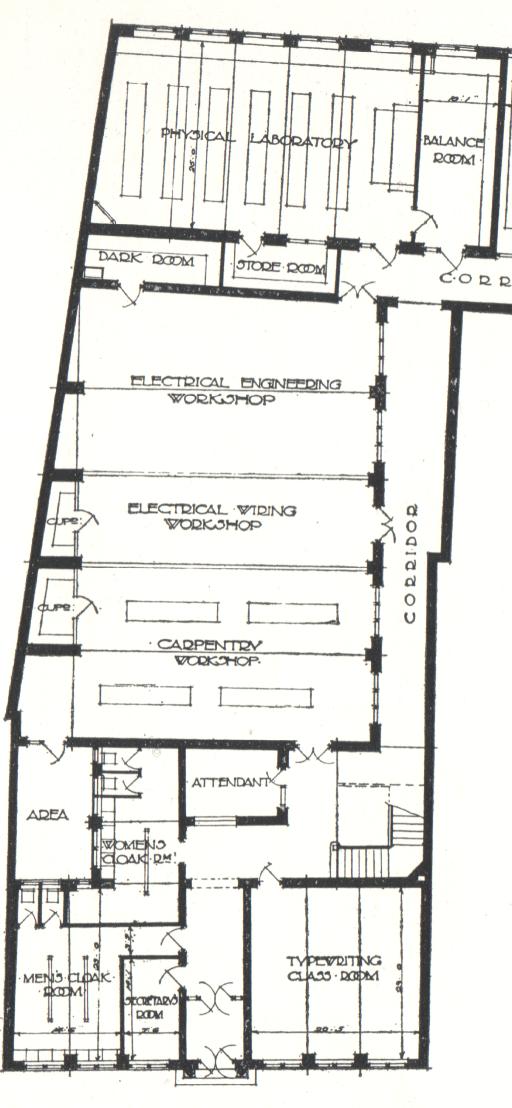
|
Accommodation: (1915)
Five classrooms for 178 students.
Typewriting Class Room.
Physical Laboratory
Balance Room
Lecture Room
Electrical Engineering Workshop
Electrical Wiring Workshop
Carpentry Workshop
Cloak Rooms, Lavatories, W.C.s etc
Missing basement?
The workshop shown in
photographs in 1915 does not appear to me to be one listed
above. It is a workshop with benches, vices and lathes without equipment
relevant to electricity. and it is not a laboratory. A
basement with a lathe is mentioned in the 1964-1965 Prospectus.
The 1915 photographs show light through a window or door and the plans show
an "Area". The definition of an area in a 1900 Dictionary include, in
addition to the general definitions bounded plain surfaces, "a space sunk
below the general surface of the ground before windows in the basement
story of a building"
A Wikipedia entry: plus my notes
The new building included a large electrical testing laboratory and
photometric optical room [1900 Dictionary: Photometry: measurement of the
relative amounts of light emitted by different sources. Photometer:
Instrument to measure the comparative intensity of different lights.
Photometric: Pertaining to or made by a photometer.
The Institute co-operated closely with the local
electricity and gas industries in the provision of day and
evening courses
for workers in those trades. [No chemical laboratory is shown - although
this was standard elsewhere - The original 1911 Institute appears to have
specialised in electrical and mechanical engineering, carpentry and
typewriting]
Another large local employer was the Royal
Small Arms Factory at Enfield Lock, an important supplier of small arms to
the Government. Many of the
apprentices recruited to the armaments factory
came from the Trade School and it was in recognition of the demand for
well-qualified recruits to the factory that the
War Office gave £500
to the
Institute for the new 1911 building. Middlesex County Council and Enfield
Urban District Council provided the rest.
The Trade School offered a two-
year course for boys, including basic subjects in year one such as maths,
English, history and geography, with mechanical drawing and metalwork. In
the second year there were more specialised subjects, such as machine
construction, mechanics, magnetism and electricity and building
instruction.
2.9.1911 London Middlesex Gazette London Middlesex Gazette
"... of the road, a little distance further south, stands the newly-erected
Technical Institute, shortly to be opened. Of all the developments referred
to this latter, with all its facilities for learning, stands..."
24.11. 1911 Birth of Stanley Millward
(Aunt Lily's nephew). He was the navy
during the second world
war and had a short teaching job when he left. He
then came to
Enfield Technical College to teach mathematics. (See
Sources) In 1968 he worked on computer directions for
Robinson's lathe. Stanley died (aged 90) on 17.3.2002 in
Hertfordshire
1911
Edith Mary Gowan was a Governess at Divelsan
Training College For Female Teachers, Fishponds, Bristol at the time of the
1911
Census. She started as Head Governess and
Mistress of Method at
St Katharine's later the same year. Titles and roles were
changing. When the "Lady Superintendent" left to be a nurse in the war,
Edith Gowan became "Vice-Principal"
(1915). In
1919, the
(man) Principal (Edwin Hobson) retired and Edith became
Principal. Edwin Hobson wrote of her that
In 1912 Handley Page established an aircraft factory at Cricklewood after
moving from Barking. Aircraft were built there, and flown from the
company's adjacent airfield, known as Cricklewood Aerodrome
(Wikipedia). The airfield (but not the factory) closed in
1929.
The factory closed in
1964. The factory was close
to Cricklewood
overground railway, which is one stop south from Hendon overground, which
is a bus ride from
Hendon Technical Institute established in 1939.
- See
De Havilland -
Ken Houseman -
Women at work 1942
-
Walls of Hendon -
Hendon Block Release Scheme
-
1954 - Handley
Page's last project, the Jetstream, was assembled at Radlett in
Hertfordshire. The company had ceased operating by
March 1970.
"Soon the Man Principal of a Woman's College will be as extinct
as the Dodo; I can only say that the lady under whose official eye I
carried on my work during the last eight years of my Principalship rendered
the process of 'extinction' in my case as 'painless' as might be. She was
patients of my old fashioned ways, and not too severe even on my
prejudices" (p.18)
Edith Gowan was born Auston, Yorkshire in
1881. (Recorded in
Worksop in the March quarter)
|
Tuesday 23.1.1912 First Annual Meeting of the Enfield Branch of the
National Union of Teachers
held in the evening at Southbury Road School.
Mr Grimshaw, B.Sc. (Ponders End Trade School, transferred from
the Willesden Association) was elected as a new member. (London
Middlesex Gazette Saturday 27.1.1992)
The photograph (right) of a teacher strategically posed in a 1915 war photograph is, I think, of Edwin Grimshaw. He also appears strategically posed (less formally) in a 1914 photograph. |
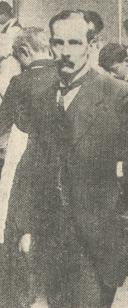
|
Monday 29.1.1912 George Spicer School opened in Southbury Road, Enfield. (history)
Higher education in the administrative county of Middlesex, 1912 prepared by B. S. Gott and E. W. Maples. [London] : [Middlesex Education Committee], 1912 (London : Harrison) 81 pages. "A supplement to 'Higher education in the administrative county of Middlesex, 1907'" - title page.
"The classes in electrical wiring and engineering and the trade classes for the lads at the small arms factory are noticeable features of the work"
Enfield Electric Cable Manufacturing Co Ltd founded by James Walter Grimston (17.4.1880 - 29.11.1949). Its "enormous" (Pam 1994, p.70) factory at Enfield Lock, in the same area as Enfield Small Arms had just been completed at the start of the first world war, and was taken over by the Government, so the firm was not in business for itself until 1919. Eight hundred men and women were employed.
The early history of Enfield College is linked to educating the factory workers. See light and valves - small arms - Ripaults. Stanley Millward said that, after the second world war, most Enfield Technical College's students were either from Enfield Small Arms or from Enfield Cables. The connections with Ponders End Technical Institute presumably developed between 1919 and 1939.
Enfield Rolling Mills next door from 1924
By 1959 it was known as Enfield Cables Ltd. It became part of Enfield Rolling Mills in 1959. In 1959, as Enfield Cables Ltd, it was acquired by Enfield Rolling Mills Ltd and a new company, Enfield Standard Power Cables Ltd was formed. C.T.W. Sutton, an engineer from Enfield Standard Power Cables was a Governor of Enfield College of Technology. By 1979, this and other firms were part the Delta Metal Group. The "core" of Delta's Cables Division was "Delta Enfield Cables Ltd (Monopolies and Mergers Commission, "Insulated Electric Wires and Cables" Report 27.3.1979 p.41) (Offline report).
|
September 1913
Sheila MacEwan, who
was almost 18, came
with her mother to consult the headmaster,
Frank Swinstead, about joining a
class for embroidery, one day a week... purely as a hobby... "We were shown
to the headmaster's room... All we could see through the dense haze of pipe
smoke swirling round this small room were a very high roll-top desk - and a
very tall and far more terrifying - a soldierly looking man with fierce
waxed moustaches - Frank Swinstead."
"The interview was brief. We were introduced by Edith Lindquist - the art teacher at my day school - who explained what I wanted. The moustaches bristled ominously. 'No good having anything to do with art one day a week. Come full-time - start tomorrow - or don't come at all!! Sorry I can't spare more time. Good afternoon.'"... She started the next day. |
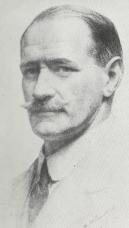
A self-portrait of Frank Swinstead in 1917. Picture from Clive Ashwin 1982 |
31.1.1914 Five photographs presented to Colonel Henry Bowles (Chair of County Aldermen) by the boys of the Enfield Trade School. One of these, wrongly dated, labelled "Enfield Trade School, electrical engineering laboratory, 1935 Ponders End Technical Institute, later Enfield College" is reproduced on the Enfield Society website
Ponders End - Kelly's Directory 1914: "Ponders End Technical Institute, in High Street, was erected in 1911 by the Middlesex Education Committee; trade classes are held in the daytime and technical and engineering classes in the evening; Edwin Grimshaw B.A., B.Sc. Principal". In the 1914 Electoral Register Edwin Grimshaw is at 48 Park Avenue, Enfield.
27.5.1914 Death of Joseph Wilson Swan at his residence, Overhill, Warlingham, Surrey.
4.8.1914 First world war started. At Hornsey the war resulted in a decline in student numbers. A small dark green album has been preserved of photographs of Hornsey taken in 1914/1915 by Sheila MacEwan. Notes say that the first shows the exterior, Page 2 is of the entrance to the headmaster's flat in the school. "If students were late the main door was locked and you had to go and knock on the Headmaster's door - you were never late again.". Page 3: Large room downstairs - used for large groups. Page 4: still life room and drawing room - later used as canteen - Page 5: lecture room. Page 8: Antique room. Page 9: Life room. Page 10: Part of lecture room.
September 1914 Dressmaking Trades School for girls opened at Tottenham Polytechnic. [24 students in Autumn 1914]. The notice facing Tottenham High Road in 1914/1915 read
|
County Council of Middlesex
Tottenham Polytechnic Day Trade School for Girls |
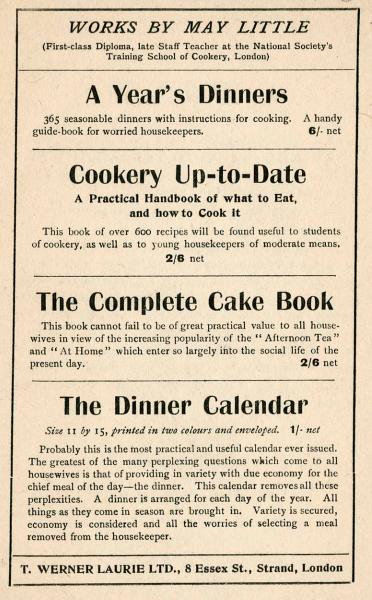
|
Possible dates of these books by May Little, late staff teacher at the National Society's School of Cookery, London 1908: Cookery Up-to-Date: a practical handbook of what to eat, and how to cook it. 1910: A year's dinners : 365 seasonable dinners with instructions for cooking: a handy guide-book for worried housekeepers 1912 The Complete Cake Book. The advertisement is from a book pubished in the first world war. |
1915 The Household and Social Science Department of King's College
for Women opened at Campden Hill Road, Kensington,
[Hornsey]. Etching class commenced under Fred Richards. [I think
this is Fred Richards 1878-1932 - He was not full-time staff, but had
special arrangements with the school].
Etchings: prints made by scratching a film of resin on a metal (usually
copper) plate which is placed in acid. The scratches become groves as the
acid reacts with the exposed copper. The plate can then be used as a
printing block.
April 1915 to March 1916 [Frederick] Trevor Daniel (born
Hendon 27.1.1903) a pupil at the
George Spicer School in Southbury Road,
Enfield. After school, he enrolled at the Ponders End Technical Institute
(1916-1917). He then worked for a year in the Tool Room and Punch Press
Room of the Edison Swan Factory. Most of his time was spent "sweeping the
factory floor". He moved to work for a "small firm manufacturing small
Motor Car parts and munitions". This was the "Royal Enfield" ("made like a
gun"), now known for motor cycles.
(Trevor Daniel: Doing the right thing)
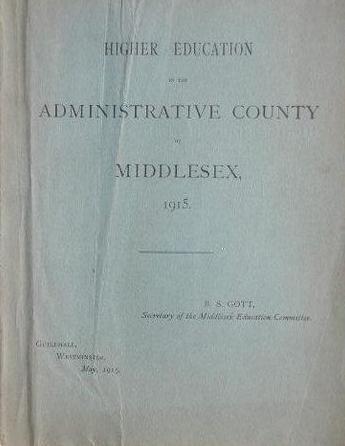
|
May 1915 Higher Education in the Administrative County of
Middlesex by
B. S. Gott.
Followed by June 1915 Secondary Schools and Technical Institutes in the Administrative County of Middlesex by B.S. Gott and H.G. Crothall
May 1915 In Manchester, Henry Winterterbottom Broadbent, aged twenty, began to learn the trade of an electrical and mechanical engineer working for "Messrs Royce Ltd, Trafford Park, Manchester" |
|
June/July 1915 (various sources)
"The hundred boys attending the Ponders End Trade School which is close to the Royal Small Arms Factory at Enfield are now "doing their bit" for their country. The lads have been engaged in the manufacture of munitions of war such as the component parts of small arms-gauges and fittings. This it is understood is giving every satisfaction to the authorities" |
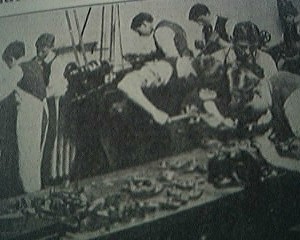
|
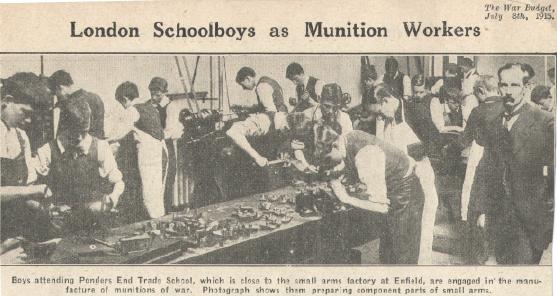
|
Pam 1994, p.264 has a photograph of the same room showing a larger area.
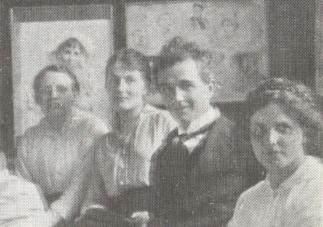
| A war time (April 1916) tea party of the Etching class includes Sheila MacEwan (left) and Fred Richards. An extract from full photograph on page 23 of Ashwin 1982, |
The Hornsey curriculum at this time included embroidery, illustration, commercial design, textile design, art teacher training, drawing and painting.
16.5.1917 The sudden and unexpected death of Peter MacEwan, Sheila MacEwan's father. Sheila was 21, and hoping to turn her studies at Hornsey School of Art into a teaching qualification. Frank Swinstead, she said "gave me the post of school secretary so that I could go on working for a teaching qualification... On a very old-fashioned typewriter, on which you couldn't see what you were typing, he taught me to type. [My] first sentence read 'Please give the bearer £100..."
Sheila began teaching (alongside her secretarial work) sometime between her father's death and 1919. Her first class was a first year one in geometrical drawing and perspective.
"I started teaching in the lowest part of the old building [the large room downstairs?]. "Then I moved up two steps to take Embroidery classes in what is now the canteen. Then came this new building when, having taught in this room" [part of the main hall?] I then moved my classes up on to the stage. From this, the department rose to the top floor of New Beacon and at No 2, Waverley RoadI achieved my Everest ..." (Retirement speech 21.3.1956)
February 1918 Construction of the Royal Aircraft Factory at Oldham began. This was for the final assembly of American bomber aircraft, largely by women from the local cotton industry. The first shipments of parts arrived on 20.8.1918. In September, Henry Winterbottom Broadbent moved there from Messrs Royce's factory in Manchester to become the "Assistant Chief" in the "progress Department". His "aircraft factory work included shop equipment design for construction and supervision". Ten aircraft had been partially assembled by the armistice. (source).
11.11.1918 Armistice signed. Firing stopped on all fronts.
11.12.1918 Mary Alice Wolstencroft married Henry Winterbottom Broadbent, the son of a Trade Union Secretary, in Oldham.

|
Henry left the aircraft factory in January 1919. If Mary Alice was also working there, they may have both left. They had two children, both born in Oldham. Warwick Broadbent was born on 2.9.1919. Alma Broadbent's birth was registered in June 1922. Alma's marriage to Henry M Fulkes (born 23.9.1912 in London) was registered in Edmonton in June 1946. Warwick's marriage to Barbara P Clarke was registered in Edmonton in Jul-Aug-Sep 1947. Henry Winterbottom died suddenly, aged 55, in the spring of 1955. Mary Alice Broadbent died, aged 64, in Wood Green in the December quarter of 1956. Warwick's death was registered in Wycombe, Buckinghamshire in June 1978. Henry M Fulkes' died 9.12.2001 in Colchester.
After his experience in aircraft production, Henry worked for Cleworth, Wheal and Co., Limited of Castleton, Lancashire, a firm that specialised in the manufacturer of air purifiers and humidifiers. The basic principle of their products was to pass air through droplets of water produced by a revolving drum. (See illustrations and description in The Engineer 19.11.1920). Henry designed and fitted a humidifier for the weaving shed at Glebe Mills, Hollinwood, Oldham. This mill both span the cotton (almost 150,000 spindles) and wove and printed the cloth (1,400 looms). Henry kept the air for the weaving moist with his "own humidifiers designed and all pipes, distribution valves etc of whole plant". He "supervised drawings and shop work and erection." In October 1919 he left Cleworth, Wheal and Co. and began a B.Sc Honours degree in Engineering at Victoria University, Manchester.
Miss Gowan became the first Lady Principal of St Katherine's College, Tottenham
|
1919 In the United Kingdom, women engineers made a huge contribution
to the war effort, but faced opposition from government, industry, unions
when the war ended. Some of these women formed the Women's Engineering
Society
(website). Caroline Haslett became the first Secretary of the
society.
The Electrical Association for Women (1924/1925) was formed on the initiative of members of the Women's Engineering Society. Caroline Haslett became the Director and the association was based in the offices of the Women's Engineering Society. In 1999 there was a Middlesex University Students Union Women's Engineering Society. One of the role models of the Women's Engineering Society is Beryl Platt, the first Chancellor of Middlesex University. Born Beryl Catherine Myatt on 18.4.1923, she worked on war planes for Hawker Aircraft Company and then for British European Airways on passenger safety from 1943 to 1949 |
1919 The Royal Small Arms Factory Apprentices Association appears to have started as an association for serving Engineering apprentices at the Royal Arsenal, Woolwich. It is recorded as being in existence by 1919 when the RSAF apprentices were an Enfield Branch of the Woolwich association. (website - archive)
"The first recorded reference to an Apprentices Association is to a Royal Ordnance Apprentice Association that was started in 1919 at Woolwich Arsenal. Membership was open to serving Engineering Apprentices only. As only Enfield and Woolwich were training engineering apprentices at this time the membership was drawn from these two establishments, each operating its own local branch" ("The Lads of Enfield Lock" by Birchmore & Burges)
The association's website says that for most of the 20th century there were two principal streams of apprentices:
| 1919 A Nurses Registration Act set up a General Nursing Council for England and Wales which maintained a register of nurses to ensure that in future all nurses were properly trained. |
Post-war Hornsey
"In 1919 FHS"
Frank Swinstead "called SM" [Sheila MacEwan] into his office and said 'a
brilliant young student has joined the school,
Elsie Davenport - she is
talented but shy. I want you to make her your friend".
1920
Middlesex County Council took full responsibility
for
Hornsey School of Art
Hornsey was mostly a women's college. In 1920 there were 193 women students and 67 men. 144 of the women were fee paying and 49 on a scholarship. 38 of the men were fee paying and 29 on a scholarship. (Ashwin 1982, p.25)
After the war, there were three sections to the Board of Education Examination:
1) Drawing Group
2) Painting Group
3) Industrial Design Group
See 1936
Sheila MacEwan initially taught embroidery in the Industrial Design Group. But embroidery under the Board of Education was becoming too technical for Sheila.
The embroidered handkerchief case
Sheila preserved an embroidered handkerchief case that shows ho technical embroidery was becoming. When I first saw it, I did not recognise it as embroidery because the stitching is so fine one thinks the cloth has been pressed into curving ridges.
Made in the early 1920s, this examination piece for the Board of Education exam, was sent away to the Board to be examined under a microscope. "SM never wanted to do embroidery again when it got so technical"
By 1927, Sheila was no longer teaching embroidery, but was teaching Drawing instead. In the Drawing group "you had to make a life drawing (half imperial size) and then make a linear tracing of it. The linear tracing then had to be filled in (a.) with all the muscles, b. with all the bones. This was the test piece in the Drawing group"
4.8.1981 interview in
HCA/3/2/4
1920 Birth of Stephen Cotgrove who pioneered the teaching of sociology at the Regent Street Polytechnic in the late 1950s and early 1960s. His colleague there was Steven Box See 1958 - Julie Ford in 1962 - 1964 - 1967
January 1920 James Bennett Murray joined the Enfield staff and remained until his death on 22.2.1945. He taught mathematics in both the school and the college. Privately, he was a great reader of English literature. (Magazine 1945)
January 1920 Guild of Learners of Handicrafts set up for members of Women's Institutes. See craft in the WI
October 1920 "An Experimental Study of the Effect of certain Organic and Inorganic Substances on the Bread-making Properties of Flour and on the Fermentation of Yeast" by Helen Masters and Margery Maughan. Household and Social Science Department, King's College for Women. Biochemical Journal 14(5): 586-602.
late 1920 De Havilland Aircraft Company established at Stag Lane Aerodrome, Edgware. It moved to Hatfield Aerodrome in 1930. See Hendon Aerodrome - Hendon Block Release Scheme in 1952 and Anthony White
Eddie Bassett was fourteen years old in 1921. The following is not dated, but perhaps Eddie started at Ponders End Technical when he was 14:
After attending St Michael's Primary School in Enfield, Eddie Bassett went to the Ponders End Technical School for a two year course in mechanical and electrical engineering. (This became the Swan Annexe of Enfield College of Technology). From the Technical School he became an apprentice at the Ediswan factory in Ponders End earning at first 14/- a week, rising to £1 in his third year. (Fred W Clark, North Circular 29.1.1998) [1923 apprentice? 1926 third year? Did he remain with Ediswan until the war?
18.11.1921 Enfield District Manufacturers Association formed by eight founder firms including Edison Swan Electric Co. Ltd, "to focus the opinions of manufacturing interests in the district" (p.21). Its first efforts were directed to getting representation on the Urban District Council to secure improved sewerage and roads (p.37). The second wold war "opened up new opportunities ... and stimulated the ... rapid growth of the association and the consolidation of its position" (p.43). In 1942 it became a non-profit-making company limited by guarantee and by 1943 had a hundred members (p.21). - 1947 - George Shiells - Industries of Enfield 1948 - 1949 - 1955

|
Land for Reeves' Greyhound Colour Works at Enfield was purchased in 1921. By 1927 two bays were added to create a new plant for striking colour and mixing the newly developed "Poster Colour" used by Commercial Art studios in the late twenties and thirties. |
|
1921 The Board of Education discussed with the
Institution of Mechanical Engineers the creation of a
qualification "approaching the standard of a degree for engineers through
part time study" and in a way that would permit "reasonable freedom and
flexibility in teaching method".
Ordinary National Certificates (matriculation level?) and Higher National Certificates were launched for mechanical engineering and chemistry. |
|
Production - electrical engineering - marketing - management -
education
1921 In 1920, a Mr H E Honer (died 1965) proposed the formation of an institution to cater for the specialised interests of engineers engaged in manufacture. In 1921, a meeting in the Cannon Street Hotel, London decided to form an organisation that would establish the status and designation of production engineers. George Brosan claimed this as the bithdate of the Institution of Production Engineers - the same year as he was born. Richard Hazleton (1880-1943) is recorded as (first) Secretary of the Institution of Production Engineers from 1928 until his death. The Institution of Production Engineers was formally incorporated in 1931. There was a House of Commons debate on on "production engineering and management training", mentioning the Institution, on 17.7.1949 The Institution organised conferences and published The Production Engineer, and also had a very active Research Department and Standards Committee. In 1961 the Institution had around 13,000 members. George Brosan was active on many of its committees.
8..8.1921 George Stephen Brosan born in Hungary. See Introduction - "He was brought to this country as a child by parents who could see how things were going in interwar Hungary. He was educated at Kilburn Grammar School. From 1939 to 1941 he went to Faraday House Electrical Engineering College on a Faraday scholarship , and was awarded a diploma. [See Faraday House Association. He joined the Territorial Army at the end of 1941, rising to the rank of major in the Royal Electrical and Mechanical Engineers and running a unit concerned with electrical control equipment (Equipment which controls one or more output quantities to specific values). 1945- 1948: Two accounts of the same history.
1950 to 1951 Taught electrical engineering at Woolwich
Polytechnic and then
In 1960 he became Further Education Officer for Middlesex County Council. See 1960 - 1961 meeting in Dr Brosan's room - 1962 Enfield and Eric Robinson - 1963 consumer king? - 1964 public relations and publications - 1966 Advanced Electrical Power and Machines - 1970 left Enfield - 1971 avoiding anti-industrial feeling - 1972 polytechnics unite vocation and intellect - Melville - He died 31.10.2001. Guardian obituary |
Hornsey School Minutes 1922
"The Principal, who has recently been giving a number of lantern lectures, has obtained a supply of oxygen as and when required, and finds that on certain occasions the supply is insufficient to enable him to complete his lecture satisfactorily"
Quoted Ashwin 1982 p.25, who adds that as a result it was finally decided to "bring in the electricity".
Hornsey: John Henry Willis (1987-1989) taught at Hornsey from 1922 to 1947. He became Deputy Principal - Probably from 1927 . See Hornsey group
Henry Winterbottom Broadbent B.Sc. Engineering 1922, M.Sc. 1923 University of Manchester. See 1941
December 1922 Belling and Lee "Consulting and Manufacturing Wireless
Engineers" formed by Edgar Morton Lee and Charles Reginald Belling. It
rented part of a factory at 1 Queensway Ponders End, absorbed three other
buildings in he following ten years and moved (round the corner) to a
purpose built factory on the Great Cambridge Road in 1932.
Queensway The uniform construction of the factories along the south
side of Queensway (west of the Ponders End Institute and north of what
became Enfield Technical College) suggest that they were all constructed at
the same time - possibly 1922. The victoria County History, basing itself
largely on a Borough of Enfield, Official Guide of 1962, says of the area
immediately around what became the Enfield College Queensway site:
18.4.1923 Birth of Beryl Catherine Myatt
Leigh-on-Sea, Essex. See
Women's Engineering Society (1919)
-
mechanical ciences
-
marriage 1949
-
Woman into Science and Engineering
(1984) -
First Chancellor of Middlesex University (1992)
Birth of an Enfield Laboratory Technician.
The birth of Ralph S. Beckett (mother's maiden name Hogben) is recorded in
Edmonton in the March quarter of 1924. He became a
technician at Enfield, where
he met
Gertie Clark. "A Lab. Assistant is the chap with the key who is
never there. An Office Girl is what a Lab. Assistant carries on his arms"
(K. Eldridge, Inter A. Enfield Magazine, Spring 1947, p.16). They married
in the
summer of 1949.
The
Ponders End Technical Institute was extended in
1924
(A Wikipedia entry)
30.8.1924 Incorporation date Enfield Rolling Mills Ltd [00200137].
What became Delta
Enfield Cables (Holdings) Limited [00156577] was incorporated on
1.7.1919. The rolling mills made the copper wire (and other metals) for the
cables. They used machinery taken from Krupp as reparations after the First
World War (See
James Miller).
Great Cambridge Road By 1924 "much of the North Circular Road was
under construction or completed" between Hanger Lane (Ealing) in the west
and Gants Hill (Ilford, Essex) in the east. Linking with this, Middlesex
County Council had promoted a new road, running north and south across the
county, called the Great Cambridge Road. This was opened for traffic in
September 1924 Initially it was very quiet. Perhaps people preferred
to use the old Hertford Road through Ponders End. Early post-war factories
were concentrates between the Ponders End Technical Institute and the
Edmonton to Cheshunt railway goods line, but new factories were established
along the Great Cambridge (on the west of the line) in the 1930s.
1925
[Hornsey]
Middlesex County Council bought the freehold of the
School
"Several firms were established west of Hertford Road at
Ponders End after 1918, many of them on the sites of former nurseries. E.
and E. Kaye opened a factory for copper wire in Queensway in 1922, Stadium
Ltd., manufacturers of plastics for the motor industry, began production
near by in 1930, and H. D. Murray opened a machine-tool factory in 1936. By
1937 there were factories for making accumulators, wireless apparatus,
metal windowframes, and shop fittings in Queensway, and there were cabinet-
makers in Lincoln Road, where Reeves and Sons had opened a factory for
painters' materials about 1925. Other factories in Queensway in 1938
included those of the Standard Fuse Co. and the British Electric Resistance
Company"
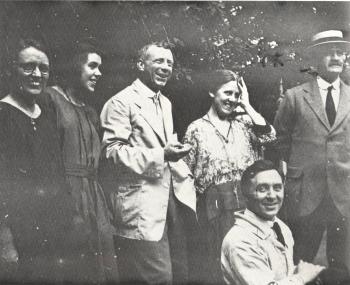
|
I am just guessing the date of this group of Hornsey staff as 1925. Ashwin
gives their names as follows (I have added date of birth). Frank Swinstead
retired in
1927.
Sheila MacEwan
1895
|
The six teachers shown are three male painters and three female specialists in women's crafts (embroidery - dress-making - spinning and weaving)
Birth of the Enfield "College Secretary": The birth of Gertrude E. Clark, whose mother's maiden name was Cordell, was registered in Edmonton in the September quarter of 1925. She started as a secretary at Enfield in 1942 (See transcript of memories). There were four secretaries (female) and only one member of the academic staff was a woman. Gertie was secretary to the Principal. [Shown as "College Secretary" in the 1964-1965 Prospectus ]. Her marriage to Ralph S. Beckett was registered in Edmonton in the September quarter of 1949. She became Administrator of Social Science in 1973 (when the college became part of the Polytechnic) and retired in 1981, aged 55, after almost forty years working for the college. Gertie was one of my main sources of information about the history of Enfield College.
11.8.1925 Kenneth Ernest Deacon Housman was born in Finchley. At the start of the second world war, he went to work for Handley Page, manufacturers of heavy bomber aeroplanes. In 1944, he joined the Royal Air Force and attended Hendon Technical College where he completed his PACT (Pre-Aircrew Training Course). On completing his training he saw very little active service before the end of the War in 1945. (source)
|
12.11.1924 Meeting at the home of Lady Katherine Parsons that
decided to form
a
a Women's Electrical Association. This became the Electrical
Association for Women on 30.4.1925 in order to avoid confusion of
initials with the Workers Educational Association
|
Birth of an historian Graham Roderick Handley's birth was recorded in Hampstead in the March quarter of 1926. His mother was Claudia Lilian George and his father Vernon Douglas Handley. Graham (age 23) was living with his parents in Enfield in 1949. He married Ruth B Tunnicliffe in Blackpool in the summer of 1951. In 1951 and 1952 he is listed as studying English Language and Linguistics at Sheffield University. Afterwards, he and Ruth lived in the Enfield district. His mother and father lived with them at Glasgow Stud Farm House (Theobalds Park Road, Enfield) in 1963. Graham was the author of copious notes on literature. He was also a historian (1978) of the College of All Saints, Tottenham. Graham taught in the English Department at Tottenham in succession to Elizabeth Owen, "whose article on the early on the early history of St Katharine's" provided him with material. Ailie Ramage provided the material for the chapter on Berridge House. (Handley, 1978 p.1)
1926 Retirement of Agnes Turnbull as Principal of Berridge House. Miss Margery Maughan, a former student, had been appointed Vice-Principal in 1925 and now became Principal.
Ponders End - Kelly's Directory 1926 and 1933: Ponders End Technical Institute (Arthur J. Crofts B.Sc Principal) High Street, Ponders End.
June 1926 Audrey Margaret Frost (became Bailey and then Hardwick) born in the Edmonton area (probably Enfield). Her mother was Amy (previouisly Holland) and her father Albert E Frost. Amy had been in domestic service and Albert's father was a bricklayer. Audrey began work at Enfield College in 1947 . Audrey was one of my main sources of information about the history of Enfield College. See 1941 and early history - 1949: Roberts and Ripaults - 1953: Building permits - 1962: Ambrose Fleming School - 1968 The New Polytechnics
About 1927 Alan Spackman born. He went to Beckenham Grammar School in Kent. Originally worked for the South Eastern Gas Board. In the early 1960s he left this to lecture in chemistry and engineering at Enfield College of Technology. During this period he completed an MSc degree at Imperial College. He took early retirement in 1979 and involved himself in the restoration of Markfield Road Beam Engine. He died suddenly on 20.9.2003 after showing visitors around the Beam Engine
"He believed and argued passionately that young people should be given a proper grounding in science and technology and it was perhaps fitting that he spent his last day advocating that the Markfield Road site should become a 'Window on the World of Engineering', linking the past with the future and promoting interest in engineering and science." (source)
12.3.1927 Eric Embleton Robinson born Nelson, Lancashire. See 1962 (died 16.11.2011)
John Charles Moody, Frank Swinstead's second in command, succeeded him as Principal of Hornsey on his retirement. Ashwin 1982 associates the period of Moody's principalship with major changes in Hornsey's teaching.
"the School had conformed to the then widespread view of design... as primarily concerned with the creation and manipulation of forms and ideas on paper. Drawing, copying and painting were regarded as an adequate and desirable foundation for he training of designer in any field of production. As time passed, this was increasingly complemented by the introduction of craft activities such as modelling, carving, embroidery and calligraphy. However, there continued to be a gulf between the concept of design education as drawing supported by manual crafts, which existed in most art schools, and the real world of industrial production." (Ashwin 1982, p.28)
John Moody asked Sheila MacEwan to look after programmes of both staff and students. Moody also asked Sheila to take over the teaching of embroidery (she was teaching the drawing group - which she continued) and dress making. She went to North London Polytechnic [possibly Northern or Tottenham] and learnt dressmaking and subsequently built up women's crafts at Hornsey. Weaving, embroidery, dressmaking was taught in Room C (stage). Shelia also took a class in Women's crafts in the old school but, after the second world war, women's crafts took over Waverley House.
John Moody made Elsie Davenport "leave the school the day he took over". Elsie had taught weaving and spinning and, with Sheila MacEwan, women's crafts. When she left the school, she was still living with her parents. Not long (up to two years) later, she moved in with Sheila MacEwan. They formed a creative partnership in crafts that lead to a series of books after the second world war.
1928
Hornsey School of Art recognised as a centre for Art Teacher
Training
[Chronology] The text says that a role in teacher training had
been played since the "early days" when
"it provided evening classes and short course for teachers in the local elementary schools. By the late 1930s, it was recognised by the Board of Education and Oxford University as a training college for art teachers, and provided a one-year course containing lectures on psychology, pedagogy, school management as well as teaching practice in local schools. It also ran very popular refresher courses for serving teachers in primary and secondary schools." (Ashwin 1982, pp 29-30)
15.12.1928 At the Stadium Club in High Holborn, S Stephens from Ponders End Junior Technical School was an amateur boxing finalist. (roll of honour)
Birth of Mary Wolf and Edna Bowers who went to Hendon Commercial School in 1943, 1944 and 1945
Many more women get a vote - Labour minority government
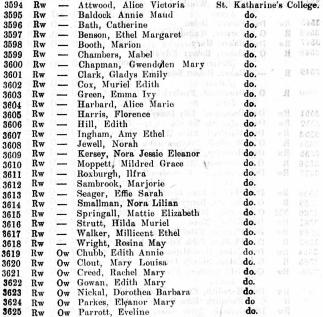
|
"An act to assimilate the franchises for men and women in respect of
parliamentary and local government elections..." received the
Royal Assent on 2.7.1928.
The effect on the electoral register for St Katharine's College was to add the frst 25 names shown to the seven shown at the bottom of he list. The newly enfranchised women would have been entitled to vote in the General Election on 30.5.1929. This election resulted in a minority Labour Governemnt. |
1929 Island Picnicby Joseph McCrum, a lacquer with gilt highlights on board, painted. It was exhibited at the 24th Arts and Crafts Exhibition Society showing (catalogue number 4) in London in 1931, and sold at Christie's in 2011 for £3,750
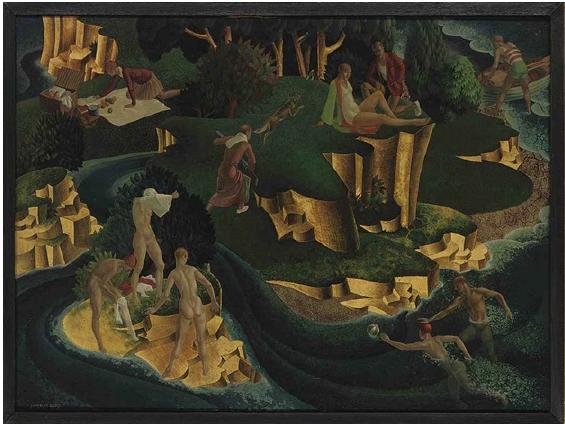
|
1930s English Numbering Machines established in Enfield. In the
1950s and 1960s, it had a factory at 25 Queensway where it produced
mechanical counters and other mechanical office equipment. From
1967, it shared a computer with Enfield College of Technology.
Spring 1930 Birth of Frederick Moore (registered Pancras, mother's
maiden name Reed) and Pauline Lambert (registered Willesden, mother's
maiden name Green), who went to
Hendon School/College in
1943,
1944 and 1945. They married in Hendon in the summer of 1952.
Autumn 1930 Derek Barsham born. His parents, George
Barsham and Margaret Rae married in "Edmonton" in the autumn of 1928.
They lived at 41 Armfield Road, [West] Enfield in 1931 and in 1964.
Derek became a choir boy in 1938. He
joined the Boys' Brigade at the age of
12 (1942) (1st Enfield Company), "where his voice
was 'discovered'" and trained by Percy Jackson.
Derek went to "Chase Boys' School" and then to "Enfield College".
Radio Who's Who for
1947 records him as "Educated Enfield Technical College".
See
Christmas 1943
- Victory in
Europe 1945 -
United Nations 1946 -
voice breaking 1947
1930 to 1994 Hatfield Aerodrome. See
Wikipedia
1930-1947
John Gerald Platt (born Bolton 1892) Principal of Harrow
Technical College and Art School. In
1947
he became Principal of
Hornsey and
E. Williams replaced him as Principal at Harrow.

|
1930-1933 Lorna Beatrice Kell (born London 1914, not Kell), painter of still life and abstracts, printmaker and textile designer, studied at Hornsey School of Art. Her teachers including Russell Reeve, Frank Winter and Norman Janes. Elected to the Society of Graphic Artists in 1959, she was President for eleven years and "saw the Society through some difficult times... as conceptual art became the latest trend" - Click watercolour of Lilium 'Conneticut King' for source. |
|
Occupational
analysis of the
1931 Census
Selected higlights, with relevance to the history of Middlesex University |
|
|
Women unoccupied and retired, 14 years and over.
[Unoccupied includes full-time housewives/mothers] |
10,804,851 |
|
Men unoccupied and retired, 14 years and over.
[The difference between this and the previous figure could give a conservative indication of the number of housewives.] |
1,385,526 |
|
Women in personal service
Of these, 1,332,224 were domestic servants |
1,926,978 |
| Men in agriculture: | 1,116,573 |
| Men in mining and quarrying: | 966,210 |
| Men making coal, gas, lime, etc: | 23,242 |
| Male metal workers. | 1,349,774 |
| Male electrical apparatus makers, fitters: | 186,134 |
| Women textile workers | 574,094 |
| Male textile workers. | 301,552 |
|
Women making textile goods and articles of dress
Including tailoresses, dress and blouse makers, and 180,338 embroiderers, milliners, sewers, etc. |
542,809 |
|
Men making textile goods and articles of dress.
Mostly boots and shoes, or tailoring |
276,738 |
| Women paper workers and bookbinders | 63,994 |
| Men paper workers, bookbinders, etc | 37,427 |
| Men printers and photographers | 152,288 |
| Women printers and photographers | 37,958 |
| Women midwives, nurses, etc. (there were no men) | 153,947 |
| Men professionally engaged in entertainments, etc. | 91,654 |
| Women professionally engaged in entertainments, etc. | 22,369 |
| Men teachers: | 84,346 |
| Women teachers | 199,560 |
|
Men in
commercial and financial occupations.
419,537 owners and managers of shops. 400,408 assistants |
1,466,587 |
|
Women in
commercial and financial occupations.
149,600 owners and managers of shops. 394,532 assiatants |
604,833 |
| Male clerks, draughtsmen, typists. | 795,486 |
| Female clerks, typists, etc. | 579,945 |
1931 Birth of Malcolm R Farrell. See Enfield Technical College Badge - April 1944 - Apprentice. Malcolm provided me with scans of three copies of the Enfield Technical College Magazine - for Spring 1945 - Spring 1947 - and Autumn 1947 -
Summer 1931 Sheila Brook born. See 1945 - 1946 - 1947
21.11.1931 Formal opening of a large extension at
Hornsey School of Art, which was renamed Hornsey School of
Arts and Crafts
. The front to the "extension" (below) was now the main
entrance.
|
This photograph of the "main college at Crouch End" appears to have been
taken in the
1960s when the college had expanded by developing annexes
elsewhere in London. It is on page 43 of
Ashwin 1982.
A very different perspective appears in a 1890 (about) photograph on page 8 and as "The vacant Crouch End building February 1982" on page 59. The tall neo-Georgian facade shown was erected in 1931 at the centre of the Crouch End Hill face of the building. It meant a main entrance being created on the main road. (Ashwin 1982 p.13). |
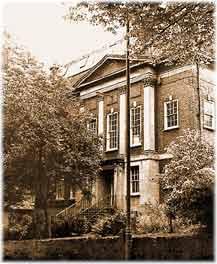
|
18.1.1932 Roberta Joan Zimmer was born in New York. As Mrs de Joia, she came to England in 1967 and later took a job at Hornsey College of Art as a teacher of fashion journalism. She became the first editor of North Circular, the newspaper that sought to unify the scattered parts of Middlesex Polytechnic. She retired in 1997 to engage in other campaigns, and died on Tuesday 11.3.2008. (See Ham&High)
2.6.1932 Tom Nairn born. A leading theorist of the Hornsey revolution and its place in history. An editor of New Left Review, Nairn was a part-time lecturer at Hornsey Colege of Art from September 1967. His contract was not renewed in 1968. He was the oldest member of the New Left Review group writing articles published in Student Power (Penguin Special 1969)
Ponders End - Kelly's Directory 1933 Ponders End Technical Institute included a telephone number: Enfield 0497
1933 Peter Green, printmaker, born. In 1958 he was elected to the Royal Society of Painter-Printmakers. He started teaching at Hornsey College of Art in 1960. At some time, he married Linda, who was first a senior administrator at the Hornsey College of Art followed by over 20 years as Registrar in the Faculty of Art and Design at Middlesex University. See 1967. Professor of Art and Design in 1983. See 1987. OBE 1988. Emeritus professor in 1991.
1933 -
1935
posture
in housework research
Berridge House

|
Under the supervision of Margery Maughan Miss Sylvia Leslie began a year's practical research (1933-1934) at Berridge House to establish some principles to "standardise equipment and conditions for washing up", for the Research Sub-Committee (Household Section) of the National Council of Women. The work developed into an attempt to establish "general fundamental principles for the rest of our domestic work". It was continued in 1934 by Miss Nora Dufton and led to the publication of Posture in Housework |
November 1933 Miss Gowan retired as Vice Principal of St Katharine's. Her Vice Pricipal, Miss Nickal, went (January 1934) to Berridge House. (Handley 1978 p.21)
Edith Mary Gowan and Agnes May Ottley - Principals, Tottenham
21.12.1934 Death of Miss Edith Mary Gowan of 19 Nasington Road, Hampsted Middlesex at Shaleford Rectory, Eashing, Godalming, Surrey. She left £11,303 11.2d to Alice Margaret Douglas (wife of John Frederick Douglas). Miss Gowan retired as Principal of St. Katherine's in November 1933.
Edith Gowan was replaced as Principal by Miss Agnes M Ottley in January 1934 (Shown at St Katharine's on the electoral register. See 1939). Miss Ottley retired in December 1959.
Dr Nahapiet was Principle from 1960 to 1965, The birth of a Violet Nahapiet was recorded in Kensington in the December quarter of 1906. She may have been a missionary in Burma.
1934 [Hornsey] The School had 184 full-time students and 687 part- time students.
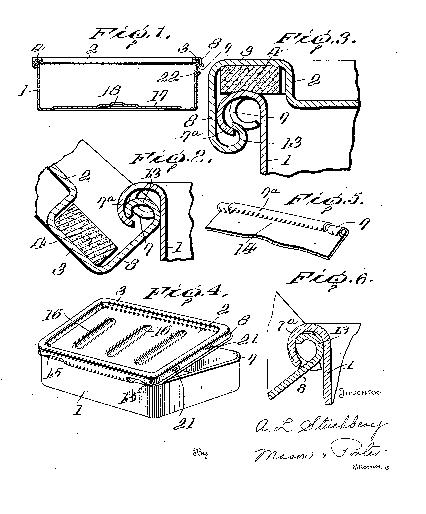
|
"Tin box or like container intended to be vacuumised" Invented by Arthur Leslie Stuchbery, Palmers Green, London. The Metal Box Company Limited, Great Britain 31.8.1934. |
The actor John Clements turned St Monica's Church Hall in Palmers Green into The Intimate Theatre. Alec Stretch was its chief electrician for many years. In 1944, John Clements became the President of Alec Stretch's group Enfield Technical College Entertainments Association
Housework "the national industry that employs the greatest number of workers" - Winifred Cullis, London School of Medicine for Women, in her foreword to:
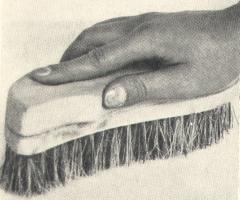
|
1935
Posture in Housework: An application of the principles of
good posture to the practice of
housework
National Society Training
College Teaching Staff. (Miss
Margery Maughan) published London
The research team began by studying the hand and aspects of how it gripped. |
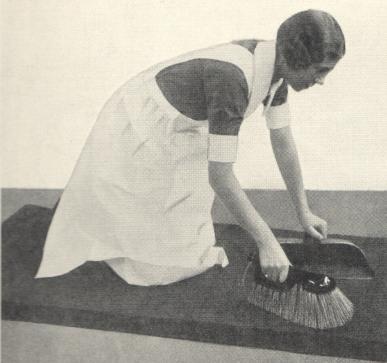
|
Their "newly designed scrubbing brush" could be comfortably held without a
tight grip and did not twist the hand.
The overall aim was to "increase the efficiency of the worker and save her exertion" (p.49) Usually, this was also the healthiest way, but sometimes "more tiring methods" exercised important muscles. |
|
Using a dustpan and brush was inefficient and unhealthy. It strained back
and thigh muscles and put pressure on knees, and on the abdomen and lungs.
The head was also drawn back in a tiring and unnatural position.
The researchers were impressed, however, by the advantages of an upright vacuum cleaner.
This is my
book of the year for
1935
|

|
5.6.1935 Herwald Ramsbotham MP, parliamentary secretary to the Board of Education, laid the foundation stone of the South-East Essex Technical College and School of Art in Dagenham. He said that "large aggregations of capital and industry" had destroyed the old apprenticeship systems:
"the burden of training the apprentices had largely been shifted from the shoulders of the employer to the State and the local education authority" (quoted p.73 of Degrees East
|
See 1931 Census
Entertainment Performing arts 19.12.1934 "Programme of Entertainment" at Hornsey School of Art and Crafts By 1935 the Guildhall School of Music had become the Guildhall School of Music and Drama. (history). In the 1950s, graduates from the school could go to Trent Park for an extra year that would qualify them to teach in schools. 1937 The Intimate Theatre founded in Green Lanes, Palmers Green. Alec Stretch, its chief technician, was at the heart of Enfield Technical College Entertainments Association. Tuesday 21.12.1937 and Wednesday 22.12.1937 "Programme of Entertainment" at Hornsey School of Art 1938 Student drama at Hornsey Christmas 1943 Enfield Technical College Entertainments Association lightened the wartime gloom. From 1947 John Platt encouraged the music society, choral union, film society and dramatic society at Hornsey. "Eyebrows were raised at the purchase of a grand piano". Between 1948 and 1960 Frederick Dalby Flower encouraged perfoming arts groups at Hendon 1957 to 1959 Brian Ellis trained in English, Speech and Drama at Trent Park Trent Park 1958 London Studio Centre founded (External link) |
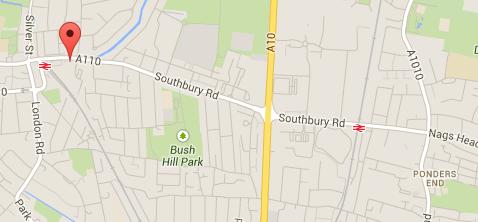
|
At the Ponders End Technical Institute, the demand for day and evening courses required even greater expansion. In 1936 a 39 acre site in nearby Queensway was acquired. Building work commenced in 1938 (A Wikipedia entry)
Technical Institutes/Colleges in Middlesex: The National Archives
have Ministry of Education files relating to two "Technical Institutes" and
one proposed Institute and two proposed "Technical Colleges" in Middlesex:
Ponders End Technical Institute 1936 to 1941
Uxbridge Proposed Technical Institute 1936-1940
Greenford Proposed Technical College 1938
Harrow Proposed Technical College 1938 to 1944
Hendon Technical Institute 1940 to 1943
1936 Thorn Electrical Industries factory in Lincoln Road opened by Jules Thorn producing Ferguson Radios. (Ferguson Radio Corporation founded in 1923 was taken over by Thorn in 1936). A new factory opened on the corner of Lincoln Road and the Great Cambridge Road in 1948. In 1947 Listed in the British Industries Fair as manufacturers of "Atlas" Electric Lamps, Incandescent and Fluorescent, "Atlas" Lighting Fittings, "Ferguson" Radio Receivers, "Mary Ann" Electric Domestic Appliances. See Grace's Guide
|
[Hornsey] The 1936/1937 Prospectus says "The object of the school and its
organisation is to provide instruction and training in all branches of Art,
especially with a view to practical application"
There were five departments: Fine Art Pictorial and advertising design Women's crafts Training art teachers Compare 1920 - Coldstream Report 1960 and Hornsey 1963 [The HCA Archives suggest the Prospectus was preserved by Sheila MacEwan]
Women's crafts
At Brighton (1934) it was proposed to have Women's Crafts as one of two parts of Design It would "embrace embroidery, dress design, fashion drawing, French modelling, costume designing, leatherwork, and textile printing, weaving, dyeing and spinning". The other part would be Industrial Design. (source) See also Sheila MacEwan - women's studies and home crafts. Victoria and Albert discussion of home crafts in 1920s and 1930s magazines
|
Ponders End - Kelly's Directory 1937: "Ponders End Technical Institute, in the High Street was erected in 1911 by the Middlesex Education Committee; trade classes are held in the daytime and technical and commercial classes in the evening. Arthur J. Crofts B.Sc Principal"
1937 [Enfield] The Ponders End Technical Institute building was too small for the growing number of apprentices studying there, either at the school (for 13-16 year-olds), or by day release or evening classes at the College. It was decided to acquire a larger site on which to build a college.
The Director of Education for the Urban District of Enfield in 1937 was E. Pascal, esq. MA [Report of the Medical Officer of Health for Enfield]
Summer 1937 Amy Ivy Jacob, born Brentford 1908, married Edward J. Bassett in Edmonton. The birth of their son, David J. Bassett, was recorded in Edmonton in the September quarter of 1944. David became a local government officer.
|
According to
Clifford Walter Radcliffe (1939), the history of the Hendon
college begins with the industrialisation of west Middlesex after the first
world war
Between 1937 and 1939, the
Middlesex County Council built Hendon
Technical Institute (designed by (H. W. Burchett). The original
building is just
past Hendon Town Hall, designed by T.H. Watson and opened in 1900, Hendon
Fire Station, built 1914 to designs by A. Welch, and Hendon Library, built
in 1929 to designs by T. M. Wilson.
(Wikipedia).
What became
Hendon Secondary Technical School
was just part of Hendon Technical College at first. It probably
became a distinct part of the college after the
1944 Education Act. This
came into force on 1.4.1945. It may be that Hendon Secondary
Technical
School was started in the college with the first eleven plus
exams. The
school leaving age being raised to 15 for everyone was not implemented
until 1947. Raising it to 16 was not implemented until 1973. The school
closed between
1957 and
1959
Developments from 1969 By 1969 there were 1,700 evening students, 1,380 students taking short full-time or part-time day courses, and 1,350 on full-time or sandwich courses. From 1973 the college formed part of Middlesex Polytechnic. (Victoria County History) The "main building" (2004) became the "college building" (by 2007) and then "Ricketts Building". By 1975 the engineering block was called Williams Building, in honour of the 1960s Principal. This must be the building called the "graduate building" in 2004. I do not know which building was the "refectory block" that was being built in 1969. I also do not know where the old Hatchcroft fits in. Maybe they are the same?
See new institutes being built in Enfield and Hendon -
Walls of Hendon
The first Principal of Hendon Technical College appears to have been Reginald William
Walls. I have assumed he started in 1939. He was definitely
Principal in
1945 and through to
1954, when he
appears in the background of a Handley Page photograph.
1941-1945? Hendon staff working with neurotic soldiers.
Fred and Pauline Moore and
Mary Wolf and Edna Bowers 1943
Nursery nurses and Sheila Brook 1945
1947 The Education
Committees Year Book 1947 shows Hendon divided into parts.
Hendon Technical College under
R. W. Walls, a chartered accountant, [who may have had overall
responsibility] -
Hendon Junior Technical School: (Engineering) under C. Buckle, an
electrical engineer - Hendon Junior Technical School: (Domestic Science,
etc.) under Miss A. S. Macdonald (no qualifications shown) -
Hendon Junior Commercial School under W. T. Smith (who had a Master of
Commerce degree)
1948 An Olympic Housing
Centre.
Frederick Dalby Flower 1948-1960
1949: The College Library
officially opened
Hendon Block Release Scheme 1952
Reginald William Walls of 151 Sunny Gardens Road, Hendon, NW4
would have been 65 in the summer of 1955. Born Dartmouth, Devon, in
the summer of 1890. In 1953 he was living with his wife, Margaret le G.
Walls, and their daughter, Clemency M. Walls. Reginald and Margaret
Le G Short married in Totnes in 1916. Clemency was born in Prescot,
Lancashire, in 1929 and married John M Lewis in Wokingham, Berkshire in the
last quarter of 1955. Reginald died in Wokingham (344 Nine Mile Ride) on
11.1.1963. Margaret died (aged 78) in Bridgwater in Somerset in the last
quarter of 1967.
1955: Personnel management
courses
Williams of Hendon
The second Principal of Hendon Technical College was Dr
E. Williams B.Sc, Ph.D, F.R.I.C. [Fellow of the Royal Institute
of Chemistry],
who was previously (from
1947) Principal of Harrow Technical College
and School of Art. His resignation from Harrow was noted by the Education
Committee on 17.11.1954 and he took up his post at Hendon on
1.1.1955.
(Journal of the Royal Institute of Chemistry Issue January, 1955)
See
1961 and
(probably) through
to 1973 - Dr Williams had previous connections with the University of
Wales and Imperial College. According to Bits of Enfield College
(29.1.1969) his view was that "education is the business of educationalists
and politics is the concern of politicians, with the consequence that
education must change rapidly to keep in line with social and economic
changes but must not be allowed to deliberately bring about these changes
before, or in contradiction to the wishes of society". He was strongly in
favour of a single site Polytechnic as his experience had taught him that
loyalty to separate buildings prevented the formation of a "single
coherent unit"
1957 to
1959, closing
Hendon Secondary Technical School
1958 Marine Engineering
apprentices
1961
Expansion in engineering and archaeological
excavation of the
old part of Hendon on which it was planned to build the new
engineering block.
1962
Hendon College of Technology
Middlesex Higher Education Advisory Centre June 1962
- Working with Enfield
Hendon Business Studies
degree 1965
From 1966
Doris McLauglin
teaching sociology at Hendon. (Previously at Trent Park)
November 1968 student
liaison -
29.1.1969
Middlesex Polytechnic, Hendon
Behavioural Geography
1973 - 2000-2003
Compared with Tottenham -
Phase One -
2004:
Sheppard Library (before and after)
-
Flagship Campus -
Phase Two -
Enfield moves to Hendon 2008
-
Hatchcroft -
Phase Three -
Phase Four -
Phase Five -
|
|
Commercial studies, business and law
See
1931 Census
In the history of Middlesex University, commercial and business studies became a focus of attention with the creation of the Hendon Junior Commercial School during world war two. I suspect that management subjects at Enfield had a mainly industrial focus compared to commercial one at Hendon. This would fit in with the different economic location of the two colleges. Business studies
What became known as "Business" may have been called "Management" before.
See 15.8.1945 at Enfield
and
Hendon Block Release Scheme 1952 and
21.12.1955 at Enfield.
For business see Wikipedia on
history of Master of Business Administration
(mostly USA) - and
Europe -
and TES Business Studies Forum on
history of Business Studies as a subject
1943 shorthand, typing and commercial French." 1945 typing to music - arithmetic, bookkeeping, English, French, geography, history, shorthand and typewriting, and physical training. 1947 Smith of Hendon 1948 Department of Arts and Liberal Studies 1949 Hendon library opens 1950s The Wikipedia entry on Middlesex University, quoting a dead business school link, says that business studies started at Hendon in the 1950s. The current Law School website says that "The Law has been taught at Middlesex University since the 1950s". Current Business School history website: Higher National Diploma courses in "Management Studies" were established at Enfield sometime between 1950 and 1955 by Roderick McCrae. 1952 "Management of men" and "work study" part of the Hendon Block Release Scheme 1953 "destined to become leaders in industry and commerce" 1955: Hendon College of Technology pioneered the first personnel management courses. 1963 Alan Hale set-up and led the Business Studies Course at Enfield from 1963 to 1973. (Gerry Mellor 2005)
Business studies degrees started at Hendon and, then, Enfield after the Crick Report of 1964
1964
London Business School established -
27.7.1964 Royal Charter establishing the UK "Council for National Academic Awards" Higher National Diploma courses in Business Studies were taught at Enfield in 1964-1965, but plans were underway for a CNAA degree
Current Business School history
website:
See Enfield
Business
1967 1,000 full-time students at Enfield were taking degree and diploma courses in technological, business and arts subjects including B.Sc Engineering, B.Sc in Business Mathematics and BA Business Studies.
1974 At some stage, business studies were concentrated on the Hendon Campus, which became the base for the Middlesex Univesity Business School.
Current Business School history
website:
1991: Michael Driscoll appointed Dean of the Business School 1995 See the Telephone Directory 1998 See the Telephone Directory In 1999 the Middlesex University Business School taught 25% Middlesex's undergraduate students and 36% of its postgraduates, providing the university's biggest source of income. - David Kirby was succeded by Dennis Hardy as head of the school in 1999/2000 |
|
Developed from Dick Booth's obituary
Education Guardian 13.8.2001)
1938 Frederick Dalby Flower (born 6.6.1915 - died 4.7.2001), a private school teacher with qualifications in classics and divinity, became involved in left-wing politics (attending communist party meetings) as a result of the Spanish Civil War. October 1939 volunteered for army service and (October, November or December) married Lorna M. Sayer in Hendon. Lorna was born about 1909. He joined the Army Education Corps. November 1941 Formation of the British "eighth army" which fought against Germany in north Africa and then crossed to Italy in the late spring of 1943. [The soldiers of the eighth army had a reputation for strong left-wing sympathies]
"Travelling with the Eighth Army in north Africa and Italy, he organised educational and recreational events for troops. It was brought home to him how wide were the interests and talents of many who had not been successful within the formal educational system." 1946 Responsible for training at the Treasury. After the war he took an economics degree by correspondence from Wolsey Hall. 1948 Hendon |
1938 to 1940 - First phase of the Queensway site
[Enfield] Work on the Queensway site started in 1938 and although it was not completed for several years due to the war, the Institute, now called the Enfield Technical College, together with the Junior Technical School, moved onto the new site in 1941. The College played an important role in fulfilling the national demand for trained technicians in the services and factories during World War Two. (A Wikipedia entry)
[I suspect the account below is correct and the Junior Technical School moved to the new site first (1939?) and the adults joined after the old site was bombed in the autumn of 1940. Perhaps the school was upstairs and the army cadets downstairs at first and then the adult technicians joined the cadets? This would be consistent the upper floor (occupied by the school) interior being finished before the war started and the ground floor interior (panelling in the hall, for example) not being completed until after the war. Herbert Willan Wadge, the junior head, was still registered in West London in 1939. Henry Winterbottom Broadbent, the first Principal, was appointed in January 1941 . Gertie Clark was appointed a secretary in June 1942]
1939 War distorts
[Enfield] Work started on the college site in Queensway, but was suspended at the outbreak of war. The unfinished building was used by the Junior Technical School. Stanley Millward said that the new building should have faced the old building across Ponders End High Street. However, during the war, many air raid shelters went up between the High Street and the new building, and so the front was put up facing Queensway instead of Ponders End High Street.
|
It seems to me that the name Ponders End Technical Institute (School
etc) was used for the organisations whilst they were on the east side of
Ponders End High Street. When they moved to the Queensway site, they became
Enfield Technical Institute (School etc) or (then or before
1945)
Enfield Technical College (School etc). However, the name change may
have related more to the institute being developed into a regional college
of engineering
The badge is preserved from the blazer of Malcolm Farrell, who joined the Junior Technical School in April 1944. |
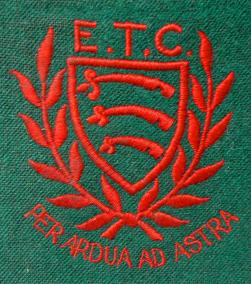
|
[Hendon] Hendon Technical Institute opened in 1939. The Medical Officer of Health for Hendon concluded his annual report for 1939 with a paragraph about Secondary Schools. He wrote
" In accordance with the arrangements made with the Middlesex County Council routine medical examination was continued in secondary schools and the treatment of visual and dental defects. At the commencement of the war there was a period when only limited numbers of children were being instructed but as shelter accommodation became available all the children were ultimately re-admitted. Arrangements were made for these services to be extended to the junior day departments of the Hendon Technical Institute."
From Middlesex. The Jubilee of the County Council 1889-1939 by Clifford Walter Radcliffe:
"Before the Great War, Middlesex was mainly a 'dormitory' county', the only industries of wide distribution were agriculture and horticulture. Today, Middlesex is an important centre of manufacturing industry and commerce, and under these conditions the public system of technical education has acquired an added importance. The County Council's programme of school building contemplates the provision of well-equipped technical colleges in all the important industrial centres in the County. These have already been provided in Acton, Chiswick, Ealing, Enfield, Harrow, Southall, Tottenham, Twickenham and Willesden. Extensions are now in course of erection at Acton, Chiswick, Willesden and Tottenham; new institutes are being built in Enfield and Hendon, and other institutes are to be built in Enfield, Greenford, Harrow, Kingsbury, Southgate, Staines and Uxbridge". (C.W. Radcliffe, 1939 pp 128-129)
During World war two,
Eddie Bassett was a draughtsman at the Royal Small Arms Factory
at Enfield Lock. (Fred W Clark, North Circular 29.1.1998)
1939 At Kingston Technical College,
Roderick McCrae
was appointed Head of Engineering in place of the first
head, Mr Kinnaird, who had retired. He "continued to encourage innovation
and diversification. McCrae quickly became a well known bowlerhatted figure
as he traipsed around all the local industries in search of students - like
his predecessor he
believed that local knowledge and personal relationships were the keys to
successful recruitment." In
1950, Mr McCrae became Principal of Enfield
Technical College. (Text of Michael R. Gibson's
History of Kingston University) -
offline
27.4.1939 Military Training Act introduced conscription for men aged
20 and 21 who were required to undertake six months' military training. On
2.9.1939 the National Service (Armed Forces) Act made all men
between 18 and 41 liable for conscription. It was announced that single men
would be called up before married men. Registration began on 21.10.1939
for those aged 20 to 23. By May 1940, registration had extended as far as
men aged 27. It did not reach those aged 40 until June 1941.
End of October 1939 Delayed start for second year students Second week of November 1939 Delayed start for first year students: "Air-raid shelters having been provided in the basements of he College and the West Wing." "the examination for the Teachers' Certificate was almost over before the first air-raid warnings in London began". June 1940: "At the end of June, however, the closure of local schools during the first week of teaching practice compelled me to disperse the 1st Year Students to complete the work in their own home areas."
Includes Accounts as at 31.7.1940 and Appointments of students who have
finished their training July 1940.
Staff list from the annual report Working at St Katharine's was still a celibate vocation. The staff universe was one Reverend, two Doctor, twelve "Miss" and one Mrs. "Miss Shead, lecturer in Physical Education, married in April, and is at present continuing her work with us". Temporary help has been given by Mrs Robson, Mrs Oliver and Miss Kirkness". 1939 Electoral Register On both 1939 lists
Agnes M. Ottley, MA - Principal
1941 St Katharine's in Devon ... "the College was given over to the housing of refugees from Gibraltar with one family per room in the West Wing. The magazine was of war time economy slimness and the College moved to Babbacombe, Torquay" (Handley, 1978, p.23) [Agnes Ottley grew up in Teignmouth, south Devon, which is north along the coast from Babbacombe and Torquay]
5.6.1941 Western Morning News Devon, England
"Miss Ottley addressed the first students from the Penrhyn Hotel, telling of the three hotels they used as lounge, library and lecture rooms, as well as a local school gymnasium, an art school and a secondary school laboratory" (Handley, 1978, p.23) Exploring possibilities of a return to Tottenham. At some time (1943/1944) cooperation with Whitelands College, Chelsea led to the establishment of "The Branch College, Whiteland's - St Katharine's" Stored furniture was all destroyed in the bombing
November 1944 Miss Ottley inspected the buildings which had been vacated by the Gibraltarians. November 1945 Return to Tottenham: "The Branch College, Whiteland's - St Katharine's, had functioned in the preceding months, and Miss ottley looked forward to 200 students, 50 of whom were already in Tottenham...the main and the branch college amalgamated happily, with an important contingent of mature students; the value of the latter had been recognised at Babbacombe, and the College helped to pioneer their training in Emergency Colleges. The Permanent Secretary to the Ministry of Education, who initiated this scheme, spent a day at Katharine's in order to learn about the College's experience". (Handley, 1978, p.24) |
2.2.1940 David John White born Edmonton, Middlesex. From
1957 to 1959 he was employed by the Electricity Board as an
apprentice
electrician. He had one day a week on day release at Enfield
College of Technology to learn electrical theory.
(David Jason: My Life)
17.8.1940 German aircraft photographed "Enfield Lock London". The
picture for official use only was marked to show A) Staafliche
Waffenfabrik, ROF
[State Armoury - Royal Ordinance Factory] - B) Staafliche Waffen
und
Pulverfabrik
[Weapons and powder factory - Waltham Forest] - C)
Großkraftwerk Brimsdown
[Large power station Brimsdown] - D King George's Reservoirs.
The photograph ("A German Aerial Survey of Lee Valley targets, August
1940") is reproduced (p.36) in
Industries of Enfield (1948) where it illustrates not
only the importance of Enfield's industries but also the way that the war
brought local manufacturers together in
Enfield District Manufacturers Association to
plan collectively on spotter and warning systems, air raid precautions,
sub-contracting urgent work and similar war-time cooperation and then on
post-war planning (pages 43-45).
|
Birds of the Air
The Heron with a parting croak
F.L. Mitchell (5B) in the Spring 1945 magazine p.15 |
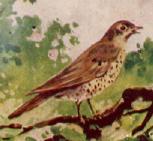 The Observers Book of British Birds (thrush on cover) was published in
1937. The first one not about natural history was airplanes in
1942
The Observers Book of British Birds (thrush on cover) was published in
1937. The first one not about natural history was airplanes in
1942
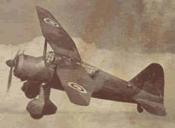
|
3.9.1940 The Two Brewers Pub, Ponders End, destroyed in the bombing. People sheltering in the basement killed. Enfield Council will create a memorial garden here.
1.11.1940 Reeves Dalston factory was badly damaged in the bombing. Five people lost their lives and half the factory was destroyed. The whole of Reeves premises in Cheapside was destroyed by bombing in 1940.
During the nineteen forties, Reeves developed powder colours called Tempera. They also developed solid blocks for teachers who were not able to cope with powder colour mixing in large classes.
The bombs were falling, but one still had to get to work
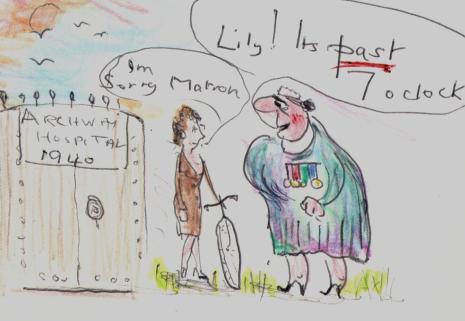
|
1940 My mother's timekeeping was inadequate.
Fortunately she was domestic, not nursing, staff Confrontation cartooned by her brother Stan. The medals! |
1941
Hendon recuperates
soldiers
May 1941 Regular staff at Hendon College of Technology began
classes for soldiers at
Mill Hill Emergency
Hospital. Maximum of sixty at a time in classes of twenty.
(Reported by Aubrey Lewis and K. Goodyear, SRN (Administrative Sister, Mill
Hill Emergency Hospital)
"Vocational aspects of neurosis in soldiers" The Lancet
22.1.1944, Pages 105-109
June 1941 to November 1945
St Katharine's in Devon
July 1941 UK state bursary for engineering undergraduates
announced. At Cambridge University
Beryl Myatt switched from studying
mathematics to studying Mechanical Sciences. She was one of only five girls
amongst 250 men. At Girton College, Cambridge, the women did not graduate
with a degree until 1948. In 1943 she obtained a "title of degree". (WISE
history) - See
Bernard Crossland "before the Second World War, Great Britain
had a very
stratified society, and I came from a working class family with no
tradition of university education"
1941
Enfield transition
begins
Spring 1941? Possible date for the edition of the college magazine
four years prior to its reintroduction in
Spring 1945. The Spring 1945 edition called the period between
magazines the transition. "Since the previous issue the School has
crossed over the High Street from the old building to the grand new
building that is Enfield Technical College, off the Queensway."
The Ponders End Technical Institute suffered bomb damage in 1941.
Students and staff moved into Queensway with the Junior Technical School.
January 1941
[Enfield]
Henry Winterbottom Broadbent appointed first Principal of
Enfield Technical College. (Gertie Beckett 4.8.1998: This is confirmed
from
a copy I have of a cutting from the Enfield Gazette - undated
unfortunately - reporting
his sudden death. I have still been unable to find the large
photo I had of him and the Enfield Gazette report of his funeral
service.
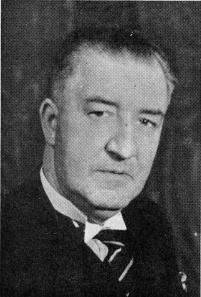
|
Henry Broadbent wrote:
This may have been, initially, to train technicians for the fighting forces. Broadbent says
|
"A large number of training courses for Service personnel have been operated, particularly for the technical branches, in connection with varied practical trades like welding, sheet-metal work, electrician's courses, etc.Before the Air Ministry could provide its own training centres to meet the expanding needs of war, the Technical Colleges had to carry the whole load in connection with the new recruitment. Many units of the original 8th Army which fought the succesful North Africa campaign, were trained here in radio-location technique." (H.W. Broadbent in the Spring 1945 magazine p.9)
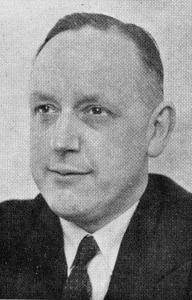
|
At about this time the Junior Technical School became a "department within
the Enfield Technical College". At some time before 1942,
Herbert Willan
Wadge was appointed as the headmaster of the Junior Technical
School.
Autumn 1941: Junior Technical School transferred to the new building, "and has since been doublied in size, with full operation over a three-years' course" (H.W. Broadbent in the Spring 1945 magazine pp 8-9) As the size of the Junior Technical School increased and the three "houses" (Wren - Newton - and Stephenson) that has existed for over twenty years were converted in four (Whitworth (previously Wren) - Newton - Stephenson - and Faraday) |
Audrey Hardwick: "Ponders End Technical Institute was also Ponders End Technical School. One of our lecturers, Eddie Bassett had two years of secondary education there. When the Technical Institute came across to the main Enfield building the school came to. (I believe called Enfield Technical School). They were not a full-blown school then because they recruited boys only at 13 plus who stayed for three years. Eventually [1963] they moved to new premises in Ponders End, The Ambrose Fleming School, and became a mixed secondary school. The school was closed in ?? and the premises are now Enfield College. The first known inhabitants of the Enfield site I believe were army cadets. Gertie knows more about this than I do." (Information July 1998)
|
June 1942
[Enfield]:
Gertie Clark began work as a secretary, aged
17, at Enfield Technical College. She met
Ralph Beckett, a
technician,
there and married him in
1949. Henry Winterbottom Broadbent was Principal. A
Mr Crofts had hoped for the post.
Herbert Willan Wadge was Headmaster of the
Technical School.
Eric Pascal was Education Officer for the Borough of
Enfield.
From her 1981 retirement speech: I first walked up the drive at the age of 17 straight from secretarial college. It was the only job I ever applied for. I was interviewed by Henry Winterbottom Broadbent, the first Principal of the college. I remember he appeared as a dear looking granddad. Thinking back I realise that he was probably about the same age as I am now. Looking round the site I realise that I was here before the two top wings of the Broadbent building, the Macrea Building, the Roberts Building, the Projects block, the Huts, the car park, and even before the trees in the drive, and before most of the staff in social science were born. When I arrived in 1942 it was war time. We worked a five and half day week and because it would have been impossible to black out the building the evening classes were held on Saturday afternoons and Sunday mornings. The general office team of four was Myrtle Thimble, Myra Horn, Vera Huhn and myself. [I do not think these are the right names. I will keep on listening to the tape] Mentions overtime. The three single girls also took turns on the fire-watching rota fire duties. We could be seen on the roof in our tin hats watching out for incendiaries - or washing our hair in the Principal's room - or playing table tennis or other indoor games with the male staff, or the army cadets who were then on duty. At that time the college had a junior secondary school on its top floor. [Called something because of the colour of their blazers - green]. Some years later got their own premises as the Ambrose Fleming School and then became part of the comprehensive system. I remember acting as secretary to the school headmaster who was a Herbert Willan Wadge, for a few years, and going away on the summer camp at Wanstead in the company of Mr and Mrs Wadge and the canteen manageress. There was only one female member of the academic staff in those days. That was Miss Woodward took Geography for the junior technical school. The top level courses then were Higher National Certificates And the ... workshops ... engineers, sheet metal workers, carpenters and joiners, cabinet makers, motor vehicle technicians and radio mechanics, courses that later were transferred to classes in Tottenham There were also teams of army technicians trained in ... workshops. Some Science courses took place in ..., Barnet ........... ..... Which was where Andrew Collier was very much involved. The administration of the college was then into five [?] departments: Electrical engineering - science (Percy Wick) - Mechanical Engineering (Simon Chapman) - Structural Engineering - and Management? (M.W. Clark), for those who can still remember the names. The next Principal to come along, Roderick McCrae ... |
17.9.1942 Enfield District Manufacturers Association Limited (00376134) registered as Private Limited company.
Women at work in the machine shop of the Handley Page aircraft factory at Cricklewood in 1942 - See 1954
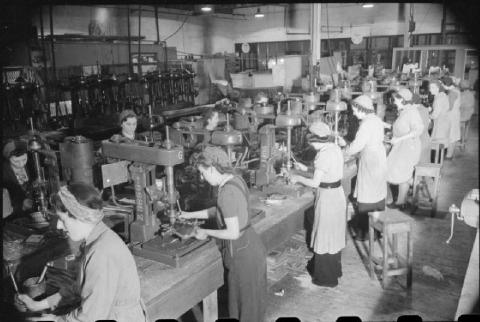
|
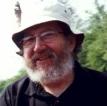
|
1942 Birth of Brian Frank Gardner who says his "height of arrogance" was to write his autobiography (offline) for his great-grandchildren. When he left school in 1958 he went to work for Ediswan and began an apprenticeship (See 1958 and 1959) which involved a sandwich course at Enfield Technical College and the award of a Higher National Diploma in 1964. See his website |

|
Fred and Pauline Moore met in 1943 when they were both 13 at
Hendon
Technical College. They married 5.9.1952.
(source)
archive -
"Technical" education in the 1940s bridged secondary and tertiary education. See also Sheila Brook in 1945 |
September 1943 Probable start of Mary Wolf and Edna Bowers period at Hendon Commercial School. "Most girls left" [elementary school] "at 14 to work as clerks, shop assistants, etc. The boys' school was separate from ours. Edna and I were fortunate to go to Hendon Junior Commercial School, where we learned shorthand, typing and commercial French." ( BBC WW2 Peoples War archive
Hornsey in 1943 and
1944
Paper supply was
controlled by the Ministry of Production under the No 48
Paper Control Order of 4.9.1942.
At Hornsey, students during the war were only allowed a quarter Imperial
sheet of paper a day [Imperial quarto = 15 inches x 11 inches]. One side
would be used for the morning session and one side for the afternoon. A
student with an evening session would need to divide one side in half.
| Gerard Hoffnung (22.3.1925 - 28.9.1959) was in Sheila MacEwan's drawing class in 1943. They were drawing tomatoes and Hoffnung's quick sketches made her laugh. John Charles Moody was not amused when Hoffnung painted ivy growing up the leg of the life model. |
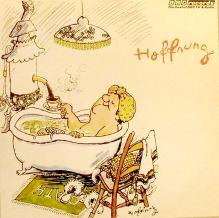
|
Autumn 1944 When students were allocated to
classes, Hoffnung was not allocated a class. For class allocation, all the
students gathered in the hall ("rooms A and B") with John Charles Moody,
assisted by Sheila MacEwan who was in charge of timetables, standing on the
stage ("room C"), with the other teachers in a line. Each student was
called by name and given a timetable, and as each teacher collected a full
class, they filed out of the hall.
Eventually, Gerard Hoffnung found himself standing alone in the hall. He
came up to the stage and said "excuse me sir - I've not got a timetable".
Moody said "there is no place for you here".
"Rather distressed, SM" [Sheila] "took Hoffnung to see
Joe McCrum. Joe
suggested he telephoned Platt at Harrow and he was subsequently transferred
to Harrow."
Gerard married Annetta Perceval Bennett
in 1952 and she helped with the
Centenary
exhibition
August 1943 Sixty five boys and several members of staff camped in
the village school of Wanborough, Wiltshire to assist local farmers with
the harvest. The camp lasted four weeks. "In spite of some wet days, 5,280
hours were worked".
Christmas 1943
College Pudding launched the illustrious career of the
Enfield Technical College
Entertainments Association (now Broxbourne
Theatre Company).
Alec Stretch was active from the
Electrical Engineering
department. His son, Ian Stretch (born about 1941) is still active in the
Broxbourne company. Alec was on temporary secondment to the College to
train army engineers. Previously, he was "for many years" the Chief
Electrician at the Intimate Theatre in Palmers Green.
Complete list of shows
See
1944a -
1944b -
1945 -
Christmas 1946 First
Pantomime -
1947 -
1948 -
1949 -
1950 -
1951 -
1952 -
1953 -
1954 -
1955 -
1956 -
1957 -
1958 -
1959 -
1960 -
1961 -
1962 -
1963 -
1964 -
1965a -
1965b -
1966 -
1967 -
1968 -
1969 -
1970 -
1971 -
1972 -
1973 -
1974 -
1975 -
1976 -
1977
4.8.1981 interview in
HCA/3/2/4
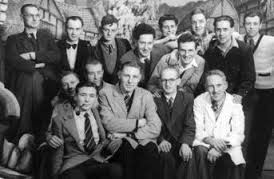
|
Broxbourne Theatre Company's history includes a photograph of
the Enfield Technical College
Entertainments Association's stage crew in 1943. There are sixteen of them
and one (half hidden) may be a woman.
Unfortunately, no names are given. |
"Our stage consisted of an empty void; no floor, no lights, no facilities for fixing scenery. Those of you who remember the show saw with what measure of success we overcame these difficulties and the necessity of a repeat performance on the Saturday to a crowded house proved the popularity of the type of entertainment provided." (Alec Stretch in the Spring 1945 magazine p.24)
Christmas morning 1943 First broadcast by the Enfield boy soprano Derek Barsham (age 13). With Uncle Mac.
Enfield Technical College
Entertainments Association presented a variety show Easter
Parade. An item in this was a perfomance by the Play Reading Society of
the Scottish comedy "Rory Aforesaid" (1928). Easter Parade ran for
three perfomances, In order to produce it, Alec Stretch formed the
Enfield Technical College
Entertainments Association with John Clements as its President,
Henry Broadbent as its chair, and a committee elected by the staff.
[7.4.1944 was Good Friday]
April 1944 Having passed an examination,
Malcolm Farrell became a student at the
Enfield "JTS" (Junior Technical School). He continued in the
Senior Day Courses, then other evening classes, making a final attendance
in
1962.
From June 1944:
Flying bombs: "The School has continued to operate
throughout the whole period of enemy action against this country, and in
the trying days of the "fly-bomb" only nine per cent of the total boys on
the roll were evacuated, and most of these due to damaged homes." (H.W.
Broadbent in the
Spring 1945 magazine p.9
"The Junior Technical School
course was for three years but there was an option to transfer to the
Senior Day Courses of the Enfield Technical College after two years. This
offered Diplomas in Mechanical or Electrical Engineering, or Matriculation
leading to InterBSc courses. I opted for the Diploma courses. The
Matriculation Course did not appeal as the one weakness of the otherwise
very good Junior Technical School was that languages were not included and
at that time a language was necessary for University entrance. Our classes
now included ex servicemen returning from wartime service. I remember being
much impressed with one who saved his life jumping from a blazing
bomber."
|
3.8.1944 The
1944 Education Act required that secondary education be provided
free for
all children in grammar, technical or secondary modern schools,
selection for which was to be by an examination taken at age 11 (the
"eleven-plus exam."). School leaving age was to be raised to 15 years
(implemented in 1947) and later to 16 (implemented in 1973)
Egalitarianism - Academic - Vocational Eric Robinson links the 1944 Act with the acceptance of "egalitarianism" (p.76). He argues that before these "matric and the school certificate" were the concern of grammar and public schools, not "senior elementary schools" [See Enfield and Hendon] Grammar and public schools prepared children for University and "it was generally accepted" that there would be other further and higher education courses to prepare people without university "pretension" for specific vocations. "Training colleges trained elementary school teachers, hospitals trained nurses, technical colleges trained craftsmen and technicians" [See Hornsey - Enfield - Hendon]. [Apprenticeships or work based learning might also be mentioned]
National certificate - national diploma
Ordinary National Certificate and Higher National Certificate
Developed
"between the wars" the national certificate scheme rapidly
expanded after 1945. It was "designed for the part-time vocational
education of engineering technicians" (p.82).
Ordinary National Certificate. A two year course. Requires GCE O
levels or a preliminary technical college equivalent. A very good pass
equated by some universities as equivalent to GCE A level.
Ordinary National Diploma and Higher National Diploma
Tne national diploma scheme came later with a "simliar function for full-
time a and sandwich students"
Higher National Diploma See
1962
|
19.12.1944 Council of Industrial Design, founded by Hugh Dalton, President of the Board of Trade, "to promote by all practicable means the improvement of design in the products of British industry". It was renamed the Design Council in 1972 "when it took on engineering and the design of capital goods as an integral part of its operations" (Jonathan M Woodham)
Christmas 1944 Enfield Technical College Entertainments Association presented Silver Lining
"A heart full of joy and gladness
Will always banish sadness and strife
So always look for the silver lining
And try to find the sunny side of life"
Broxbourne Theatre Company's history includes a photograph of "Into The Snow" from Silver Lining
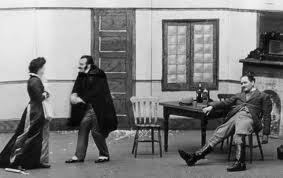
|
An on stage cast (in this scene) of two men and one woman. The revues were mixtures of song, dance and comedy. I think "Into The Snow" would have been a comedy sketch. The musical element in productions has always been strong. Alec Stretch, like the young Derek Barsham, had been a choir boy. |
| 1944 John David Farquhar B.Sc Forestry, Aberdeen University. In the Colonial Forest Service from 1945 to 1962. From 1962 to 1968 with the Food and Agricultural Organisation of the United Nations, with a break in 1965- 1966 when he took his Ph.D. The Economics of Forest Land and Associated Wild Land, a Problem Analysis Southern Illinois University, Department of Forestry, 1966, 262 pages. Enfield lecturer 1968 to 1984 |
|
London College of Dance
After the World War Two Madge Atkinson (1885-1970) and Anita Heyworth assisted in establishing The London College of Educational Dance Training which opened at Rawdon Hall, Holyport, Maidenhead in 1945. It was the first dance specialist teacher training college in the United Kingdom. It became London College of Dance and Drama (London College of Dance). Idea first mooted between Miss Grace Cone and Miss Anita Heyworth during the Dancer's Circle Dinner in either 1937 or 1944. See memories of Phrosso Pfister The London College of Dance became part of Middlesex University in 1994 |
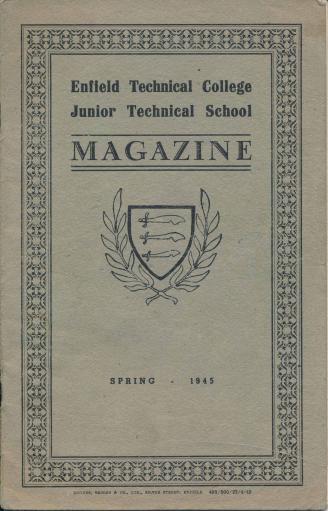
|
Spring 1945 Enfield Technical College - Junior Technical School - Magazine. Edited by Mr G. Bygrave. Business Manager Mr D. Waller. Sub- Editors: W. Kirby (6B and Captain of the School) and L.J. Alexander (5A) offline |
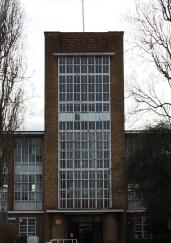
The "front" vision of the Technical College, which, because of the war, faced onto a back-street (Queensway) instead of the main Hertford Road. The building was not completed until 1953. |
1945
[Enfield] In the
post-war years the college was completed and
expanded.
15.8.1945 - VJ-Day. The front page of the Tottenham and Edmonton Weekly Herald of August 24th 1945 has an advertisement placed by Middlesex County Council Education Committee of the courses available at Enfield Technical College. The Principal of the College was H.W. Broadbent, M.Sc (Eng.), M.I.Mech.E, F.I.I.A. Courses will be held in Automobile, Civil, Electrical, Mechanical and Production Engineering, Metallurgy, Management Subjects and Trade Courses. The Science Department provides Matriculation and Inter. B.Sc. Adult Courses and Discussion Groups will be in operation. The District Education Officer for the Enfield Area was E. Pascal, M.A. Silver Street, Enfield. |
I believe that Matriculation and Intermediate B.Sc courses were ones to prepare people to enter University. They were replaced by GCSEs.
Audrey Hardwick: July 1998: There were also science courses and students could take the Intere B.Sc and then go on to more advanced colleges to get their degree. And there were courses in office skills and languages. These were offered at Enfield PTD and in the evenings at Enfield County School and Edmonton Technical School. One of our college lecturers had as part of his duties the responsibility of running these office and language classes. This went on for several years with the evening clases expanding. Eventually the day classes went, where to? and the evening classes were hived off and were the nucleus around which Enfield College grew. - The Edmonton Technical School was used by the Polytechnic for a period of time, being used as the Examinations Office.
1945 to 1949
George Brosan's industrial and graduate
experience
Two accounts of the same history. The first based on the
Production Engineer and the London Gazette, the second from
the obituary by Tyrrell Burgess and Anne Pimlott Baker's article in the
Oxford Dictionary of National
Biography.
Account one
After the war he "had production experience in the refrigeration and
ceramics industries with British Diamix. Ltd. from 1945-1948 as Director
responsible for design and technical development". This company
manufactured a toaster and electric irons. It went bankrupt in 1949.
As "Director" Brosan put a notice in the
London Gazette on 31.5.1949 about a meeting in Croydon on 8.6.1949.
Account two
At the same time he studied mathematics part-time at Birkbeck
College, London; graduating BSc in
1947. He then worked on his PhD at Birkbeck, which he achieved
in
1951.
April 1945 "I said to myself -"Good lord - another boy soprano - and
singing
The Holy City - doesn't everyone know there's a war on?"
Record Review, April 1945
8.5.1945
Derek Barsham's pre-recording of Land of Hope and Glory was
played on the radio in advance of Winston Churchill's Victory in Europe
Broadcast.
Tho' thy way be darkened, still in splendour drest,
Throned amid the billows, throned inviolate,
Land of Hope and Glory, fortress of the Free,
Hendon 1945
Mr Walls, Principal of
Hendon Technical College had been of great assistance in
providing "essential classes" to train students for the National Society of
Children's Nurseries Diploma. Hendon had eight nurseries. This appears to
have been a recent venture and, so far, only twelve students had entered
the
course and ten qualified.
(Report of the Medical Officer of Health for Hendon for
1945)
September 1945 "I began my commercial training at Hendon Tech., as
we called it, in the September of 1945."
Sheila Brook
(2010-01-01).
Where is the Key? (Kindle Location 219). Chipmunkapublishing. Kindle
Edition. (Born Summer 1931 - So 14 years old). Sheila wanted to be a nurse,
but her father wanted her to be a secretary. When she wrote an essay about
her ambition to be a nurse she was offered a transfer from the Commercial
Department to the Pre-Nursing Department. She declined because of her
father's wishes. The head of the Commercial Department, Mr Smith,
later found a clerical position for her in a medical setting.
At Hendon, Sheila studied arithmetic (not mathematics), bookkeeping,
English, French, geography, history, shorthand and typewriting, and
physical training. (Kindle Locations 440-441).
1945
Enfield Technical College
Entertainments Association
presented (reviews) Get Cracking in 1945 and Wait for It in 1945 or 1946
"While
studying, he
established a small manufacturing business in electrical goods, which he
sold advantageously, making him, for much of his subsequent career in
education, a millionaire".
(source Tyrrell Burgess)
"He had sold his electrical equipment business in the
mid-1950s, but then set up a property company; throughout his time in
higher education he was wealthy enough to drive a Rolls-Royce and to
entertain colleagues at his own expense at the Reform Club several times a
week." (Anne Pimlott Baker)
"New earth there seemed to be.
I saw the Holy City
Beside the timeless sea.
The light of God was on its streets,
The gates were open wide;
And all who would might enter
And no one was denied."
[Listen]
"Truth and Right and Freedom, each a holy gem,
Stars of solemn brightness, weave thy diadem.
As the star that trembles o'er the liquid West.
Thou hast reigned victorious, thou has smiled at fate.
How may we extol thee, praise thee, honour thee?""Among the memories I have of my two years at Hendon Tech. is
the sound of the clatter of keys in unison in our first few typing lessons,
as we tapped away in time to the music of a gramophone record. I can still
remember the tune that accompanied our early typing lessons, teaching our
fingers to move rhythmically on our keyboards." (Kindle Locations 263-265).
"the excitement and thrill of jumping off the moving No. 183
bus from Kenton if we saw the No. 83 bus from Ealing appearing at the
Kingsbury Green road junction. Oh the dismay, if we missed it. The No. 83
bus saved us the long walk up the hill from Hendon Central." (Kindle
Locations 412-414).
[Although the bus routes have changed a little, these buses still run]
|
Post-war (Year not certain for everything)
[Enfield] After the war Eddie Bassett joined the staff of the Enfield Technical College, and continued his education becoming both a Fellow of the Institute of Mechanical Engineering and a Fellow of the Institute of Production Engineers. He retired as Principal Lecturer in Mechanical Engineering at the Polytechnic. (Fred W Clark, North Circular 29.1.1998) When Stanley Millward left the navy he had a short teaching job and then came to Enfield Technical College to teach mathematics. [I was told he was at the College for thirty years, but the dates do not appear o fit] He got the job because he lived near. The person they wanted could not find lodgings near the college. At that time lecturing started at 8am, to fit in with the kind of day that people had in industry. If he was also doing evening classes he might not finish until 9pm. The college students were mainly from Enfield Small Arms and Enfield Cables. The college had started as a trade school (For Enfield Small Arms?), then become a Technical School. It gained more students, including full time students, became a Technical College and moved to the new building (Broadbent) In 1946 the old building (Swan Annexe) looked as if it had been badly scarred by bomb blast. The windows were boarded up and it was not used. The new building had the front that it has now, but it only had two stories. The new building was still not completed. There was brickwork instead of panelling in the hall, for example. The building work went on for two or three years.
See accounts that work was not completed until
1953 and that second floor wings were added after that. "The
interiors were completed only after 1945" confirmed by
listed building
report. This also mentions the "original gymnasium to side". The
1949 aerial photograph confirms gymnasium and two story wings.
The college also used an old church in Lincoln Road for teaching. Stanley Millward did not see much of Mr Broadbent. He met him when he came for the interview, but not much afterwards. Mr Broadbent died a few years later In his first year, Stanley Millward taught matriculation (This was not normal college business). He taught Charlie Dust a student who was taking matriculation then and had previously been a student in the school in the old building. They were still in contact in 1998. |
10.1.1946 The first meeting of the United Nations was held at Methodist Central Hall Westminster in London. At the live BBC world broadcast to mark the inauguration Derek Barsham (aged 16) sang "The Star of God", words by Frederick Weatherly, music by Eric Coates.
"Lord of the bygone centuries,
Thou once didst send a star
That led the feet of wand'ring men
To Bethlehem afar;
Lord of these wild and whirling years,
We need a star today
To guide us through the troubled world,
To point the only way.
Lord of our lives and destinies,
Oh, now fulfil Thy plan,
Bring in the golden years of peace,
The brotherhood of man!
By all the blood that men have shed,
By all the hearts that bow,
Oh, God of the Star of Bethlehem,
Be with the nations now."
(source)
23.2.1946 Old Boys reunion at an informal dinner in the College Hall. Saturday 29.6.1946 the first general meeting of the "Old Students' Association of Enfield Technical School and College". A.J. Crofts and his wife, and Mr C.H. Rigby were made honorary life members (Enfield magazine Spring 1947, pp 44-45)
Alma Broadbent's marriage to Henry M. Fulkes was recorded in Edmonton in the June quarter of 1946.
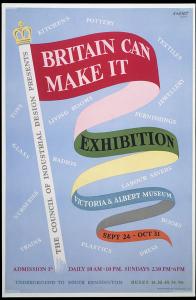
|
The Ministry of Education organised Art and Design education as a two year
Intermediate Certificate in Art and Crafts followed by a two year National
Diploma in Design.
"The new system of examinations... was intended to give the art schools a strong orientation to design and manufacture, emphasising their role in the post-war reconstruction of te country" (Ashwin 1982 p.35).21.9.1946 - 31.10.1946 The Council of Industrial Design organised at "Britain Can Make It" exhibition See the Enfield Can Do It exhibitions. |
August 1946 (age 16) Sheila Brook discusses the "late developing and unprepared-for", arrival of puberty and periods. (Kindle Locations 334-335).
"There were quite a few boys doing a commercial course in one form in my year group. I think their course differed in some way from the girls' course, perhaps with a little less emphasis on typing and more on what was then called bookkeeping, probably with a view to a job in a bank. A few lessons in ballroom dancing were organised by another member of staff after college hours, where the two sexes met. " (Kindle Locations 358-360).
Sheila Brook, Beryl and Miss Marianne Cross (who taught office practice) started a Christian Union at Hendon College of Technology (Kindle Location 382). [Possibly Marianne Cross born West Ham in the summer quarter of 1906]
12.12.1946 Darrell Viner born. See Hornsey and John Vince. Darrell Viner died 15.11.2001.
1946-1947 Doris E. McLauglin was and assistant librarian at West Ham Public Libraries. In 1950 she graduated BA (Honours) Sociology from London University. She taught in primary schools from 1950 to 1952. In 1955 she obtained a Post Graduate Certificate of Education from London University Institute of Education. She taught in secondary schools from 1955 to 1958 and in Further Education from 1958 to 1963. From 1963 to 1966 she was a lecturer in Sociology of Education at Trent Park College of Education. In 1965 she obtained a Diploma in Education from Cambridge Institute of Education. From 1966 she was a senior lecturer at Hendon College of Technology (Middlesex University from 1973) being Course Leader for University of London Certificate in Education at Middlesex. In 1979 she obtained an MA in sociology from the university of Essex, for which she wrote a dissertation on "Women Teachers and Equal Pay 1930-1961". Her teaching interests were the sociology of education, sociology and women's studies. (MP 1981 p.110)
Cinderella - A pantomime written by Frederick William Teare and produced by Alec Stretch
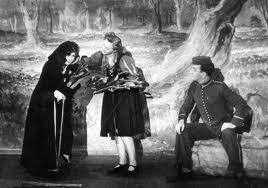
|
Christmas 1946
Enfield Technical College
Entertainments Association presented their first annual
pantomime: Cinderella
Broxbourne Theatre Company's history includes a photograph of a scene from Cinderella, with Cinderella, Buttons and the fairy godmother in a wood. The next photograph they show is of a performance after casts ceased to be drawn from within the college. |
Cinderella's Coach The School Model Club met twice a week throughout 1946. Amongst its constructions was "Cinderella's Coach, which gained so much applause in Mr Stretch's stupendous pantomime" (Enfield Magazine, Spring 1947, p.25)
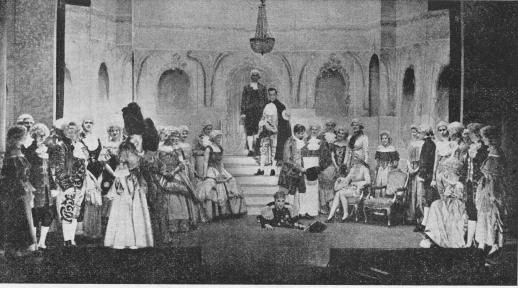
|
|
Sylvan Press, 24-25 Museum Street, London, WC1. Telephone Museum 4691-4692.
"General publishers. Books on typography, printing and manual crafts"
(Writers and Artists Year Book 1949)
The Your Home Crafts Series began in 1947 with Your Leatherwork by Betty Dougherty. There were eighteen books in the series, of which six were written and illustrated, in whole or in part, by Elsie Davenport or Sheila MacEwan, starting in 1948 with the second in the series Your Handweaving by Elsie G. Davenport. The full list was: 3. Your Embroidery by Helen Brooks - 4. Your Rugmaking by Klares Lewes and Helen Hutton - 5. Your Millinery by Winifred Reiser - 6. Your Linocraft by Betty Dougherty - 7. Your Pattern Cutting by E. Sheila MacEwan - 8. Your Textile Printing by Evelyn Brooks - 9. Your Jewellery by J. L. Auld - 10. Your Children's Crafts edited by E Sheila MacEwan, which included a chapter on Weaving by Elsie G. Davenport - 11. Your Puppetry by John Wright - 12. Your Penmanship by Kathleen U. Ockendon - 13. Your Toymaking by Joseph Pierce McCrum 14. Your Machine Embroidery by Dorothy Benson - 15. Your Light Furniture by Joseph Pierce McCrum - 16. Your Handspinning by Elsie G. Davenport - 17. Your wood-engraving by Mark Fernand Severin - 18. Your Yarn Dyeing by Elsie G. Davenport It is clear from examination of Sheila and Elsie's books that preparation for these began before the war - probably about 1930. It is also suggested that the book were part of a [women's] movement, as indicated in the following paragraph from a 1950s review of one of Elsie's books: "If there is one thing noticeable above others in the life of such organisations as Women's Institutes and Towns-women's Guilds, it is the manner in which such organisations are reviving interest and stimulating and encouraging craft work" [Bucks Examiner]
|
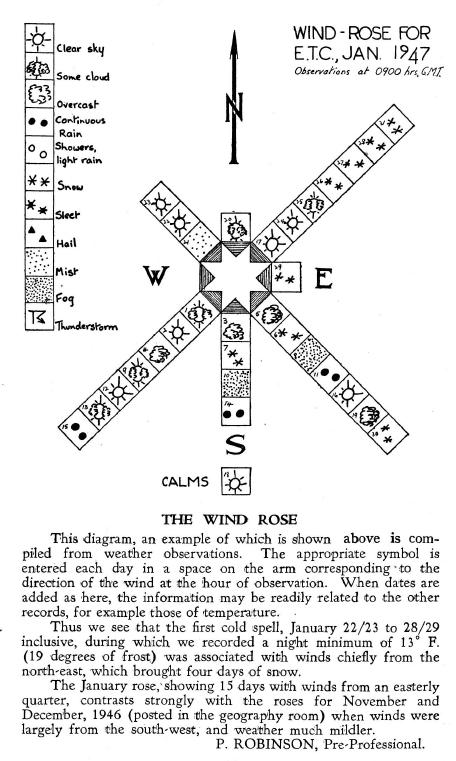
|
The beginning of the 1947 freeze is shown on this Wind Rose compiled at Enfield Technical College in January 1947. published in the Enfield Magazine Spring 1947, page 20. |
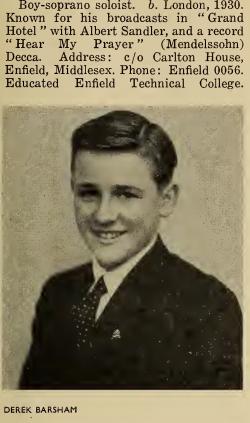
|
Cutting, left, from Radio Who's Who 1947:
10.2.1947 London Evening News "The Golden Voice is Saying Good-bye to the Air. Sixteen-year-old Derek Barsham of Enfield, whose voice is known to millions of radio listeners, will give his farewell broadcast as a boy vocalist this week. As Derek's voice is on the verge of breaking, he has been advised to rest it for two years, but before doing so he will take the part of Theodor in the Russian opera "Boris Godunov", which is being broadcast in the Home Service on Wednesday, February 11th and in the Third Programme on Friday, February 14th."
Biographical information from
The Better Land - Great Boy Sopranos of the early
Twentieth Century
|
July 1947 National Service Act extending
conscription into peacetime
and requiring military service of
young men from 18. It came into force at the beginning of
1949. The
National Service Amendment Act in December 1948, increased the
period of service from one year to 18 months. It became two years after
1950. National Service remained until
1960.
1947 Audrey Frost, aged 21, began work at Enfield Technical College. She bacame Audrey Bailey in 1951 and Audrey Hardwick in 1956.
|
John W. Hamer, known as Rex, joined Enfield College in 1947 after service
in the RAF. His wife's name was Joan.
Stanley Millward first met him in January 1947. The (senior) college had less than 20 members of staff. Rex taught mathematics to students studying for the intermediate BSc, or the Ordinary or Higher National Certificates "when these were the 'bread and butter' of the college courses" He made a special study of the results of the National Certificate Courses in the country. "Rex was one of the key lecturers in the courses the college organised for the Technical Teachers Certificate; courses which were intended to widen the educational and teaching skills of teachers of handicrafts and practical technical subjects. Many of the students came from the staff of the Government Training Centre and some from the college workshops and laboratory staff." "He also lectured on te courses for the Mathematical association's Diploma in Mathematics; a Diploma designed to improve the mathematical knowledge and qualifications of practising teachers from local schools" "In addition, Rex was responsible for the development of the remedial Mathematics and Programmed Learning Unit at Enfield" Mary Shakeshaft (14.5.1987) wrote: "A versatile teacher, he began as a teacher of maths but became increasingly interest in psychology, taking his MSc at Birkbeck part time. His teaching interests in his later years ranged from industrial psychology to education but perhaps focused most sharply on educational technology where he was responsible for the development of programme leaning, writing several valuable programmes and lecturing to business and commerce as well as using the technology to help students on various courses in the college. USA study tour - Ted Coates - Division of Education and Psychology - - March 1965 Mary Shakeshaft (14.5.1987) wrote: "He started and ran for many years a pioneer course for Women Graduates Wishing to Tech, which laid the foundations of the successful BA Sociology of Education and also the emphasis on recruitment of mature students which is still one of the polytechnic's educational principles." 15.3.1972 Assistant Academic Registrar with special responsibility for academic staffing. When the polytechnic was inaugurated he became its appointments officer. He gave up this job after a severe heart attack, returning to teaching. He retired in December 1977. He died 28.4.1987. (Obituary by Mary Shakeshaft in North Circular 14.5.1987). |
1.1.1947 Mr G. Bygrave took over as Acting Headmaster of the Secondary Technical School in place of Herbert Willan Wadge who had resigned as Headmaster at the end of the previous term to take up a "similar appointment" at the Central Technical School in Sheffield. Mr Bygrave was later confirmed as headmaster.
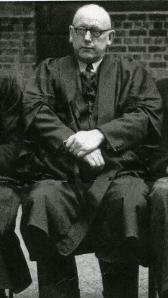
|
Herbert Willan Wadge went as headmaster to Sheffield Central
Technical
School in 1947. The picture left is from his period in Sheffield.
On of his students Tony Jackson recalls "The Headmaster Mr Herbert Wadge ruled the school with a fist of iron: One day he entered our classroom and walked straight over to a lad sitting at his desk. Without speaking a word he smashed his hand across the lad's face sending his glasses flying to the other side of the room. Then he said " You don't chew in class, boy!" I think our form-master was as surprised as the lad at the Headmaster's aggression." Herbert Willan Wadge was awarded an MBE in 1956. |
See
Sheffield Forum discussion of memories and
Old Boys anniversary video. No one appears to remember anything
about Herbert Wadge apart from his extreme violence.
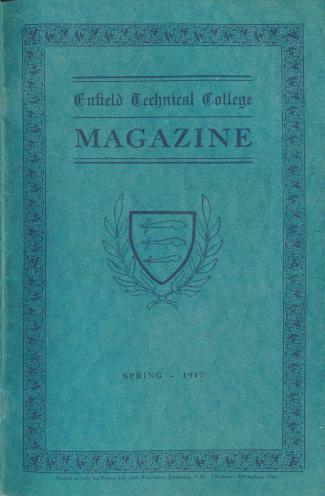
|
Spring 1947 Enfield Technical College Magazine. Edited by |
April 1947 School leaving age raised to 15. The "materials and
labour force allocated to educational projects have been concentrated on
providing the necessary accommodation". Consequently few resources
allocated to developing Enfield Technical College (or, presumably, Hendon
or Hornsey). Enfield Magazine Spring 1947 p.6.
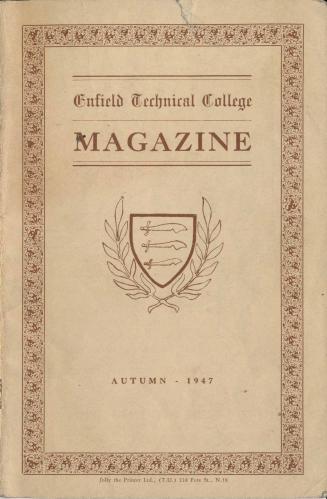
|
Autumn 1947 Enfield Technical College Magazine. Edited by |

|
In the autumn of
1947, Henry Broadbent wrote:
|
So in the new session let us to the task! By the combined efforts of students and staff, along with the useful support we have throughout this area from our District Manufacturers' Association, we can make a worthy contribution towards the easement of our present troubles."
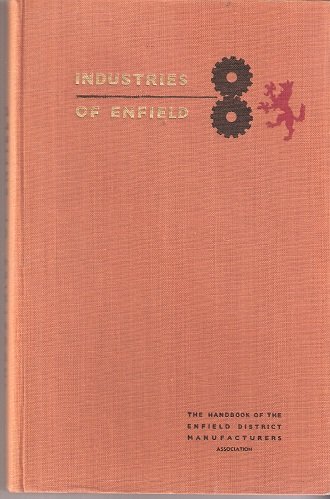
|
In 1946-1947
George Roberts, the managing director of
Ripaults in Soutbury Road, was chair of the
Enfield District Manufacturers Association, 6 Palace Gardens,
Enfield, Middlesex.
[See national context]
In December 1947 he signed the Preface to
"Industries of
Enfield - The Handbook of the Enfield District Manufacturers Association
", presumably published in 1948.
"So far as I know, no other manufacturing centre in Britain has an industrial record as complete and as eloquent as this one". (p.8) The Association "constantly" discussed "education within industry, and the smooth changeover from school to industry" and "a special liaison committee of member collaborates with the Principal of Enfield Technical College" (p.45). George Roberts became the Chair of the Enfield College governors in 1949. |
"Enfield District Manufacturers Association collaborates with Enfield Tecnical College" (page 38)
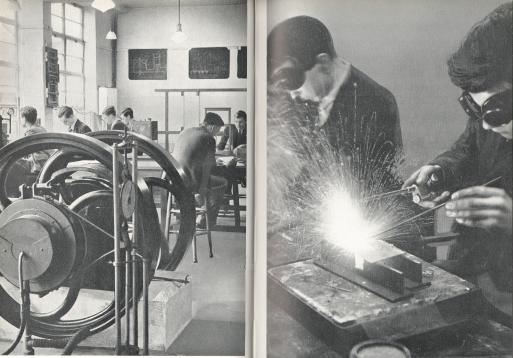
|
"New hands must be taught new jobs, in college and factory"
(page 39) |
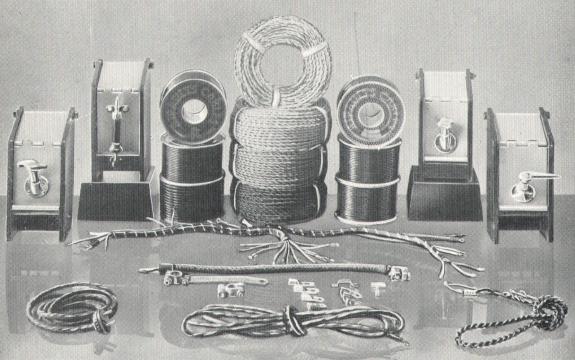
|
|
EDUCATION COMMITTEES YEAR BOOK 1947
Published by Education The Official Organ of the Association of Education Committees. Councils and Education Press Ltd. 10 Queen Anne Street, London, W.1.
Harrow Technical Institute and Harrow School of Art: J. G. Platt, A,R.C.A., A.R.E.
Borough of Hendon
Hendon Technical College: R. W. Walls, B.SC. (Economics), B.COM., A.L.A.A., [Accountant and Auditor] A.C.I.S. [Institute of Chartered Secretaries] Hendon Junior Technical School: (Engineering): C. Buckle, B.SC. (Hons.), Associate Member of the Institution of Electrical Engineers. [A.M.I.E.F. - but I think the F. must be a printing error] Hendon (Domestic Science, etc.) Miss A. S. Macdonald. Hendon Junior Commercial School: W. T. Smith, M.COM.
Urban District of Enfield
Enfield Technical College: H. W. Broadbent, M.SC. (Engineering), Member of the Institute of Mechanical Engineers. F.I.I.A. Enfield Junior Technical School: (Engineering) H. W. Wadge, B.SC. (London). |
Hendon 1947 Sheila Brook: "After we had been given the results of our exams near the end of our final term, the top few students from each of the classes in our year were given the opportunity of staying on at college for a further year before taking the general matriculation examination, (this was before ' 0' levels were introduced.) This was another new opportunity for which we had to thank the 1944 Education Act." - However, her father could not see the point of her taking another year for study. She was disappointed, but then had the opportunity to work in a medical setting.
Harrow and Hornsey:
1.10.1947 The District Education Officer of Harrow informed
the Sub-Committee that Mr.
E. Williams, B.Sc., Ph.D., had been
appointed Principal of the Harrow Technical and Art School, as from
1st October, 1947, in the place of Mr.
J. G. Platt, who was leaving to take up appointment as Principal
of the
Hornsey School of Art.
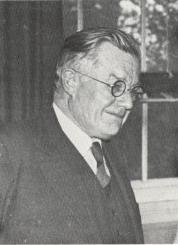
|
John Gerald Platt was "a very nice man"
Sheila MacEwan, who said that it was thanks to his never-failing
kindness and encouragement that her last seven or eight years
[to 1956] had been as happy as her early days [under
Frank Swinstead].
Sheila was not happy under John Charles Moody and the typescript of her retirement speech jumps from Swinstead to Platt with just a handwritten insertion in the margin "J.C.M." |
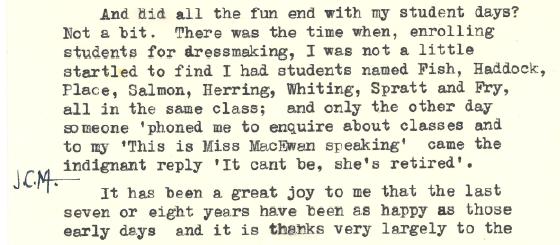
|
|
Trent Park
Developed from A concise history of Trent Country Park, by Alan Mittelas. 1946: All teachers must be qualified
19.10.1945 The Trent Park Prisoner of War Camp closed. It was taken over by the Ministry of Education and in 1947, it was opened as an emergency training college for male teachers. By December 1947, fifty five temporary colleges had opened. By 1951 [when I was in a London infants school] one in six of the teachers in maintained schools was emergency-trained. In 1950, Trent Park became a (permanent) residential training college for men and women. By August 1951 all the emergency colleges had either become permanent, or had closed. Trent Park provided qualifications for teachers in various disciplines, including Art, Drama, Music, Dance and Handicraft (Design and Technology). Shortly thereafter, Geography, Maths, Science and English were also taught there. From 1951 Trent Park tutors sometimes taught at Hornsey. In 1951, Middlesex County Council bought the entire Trent Park estate, by compulsory purchase order, as Green Belt land. New buildings were eventually added to the campus, including an assembly hall and teaching block to the west of the mansion. 1957 to 1959 Brian Ellis training In June 1962 the Middlesex Higher Education Advisory Centre, based at Enfield, established cooperation between colleges, including Enfield, Hornsey and Trent Park 1963 to 1966 Doris McLauglin teaching sociology at Trent Park 1965. Dissolution of Middlesex County Council. The estate was divided. The new London Borough of Enfield took over the college and college grounds and the Greater London Council the parkland. About 1965, Stanley Millward speaks of informal cooperation between colleges. In 1973, the GLC officially opened the 413 acre (167 hectare) Trent Country Park to the public. The expansion continued into the 1960s and 1970s, including two halls of residence called Sassoon Hall and Gubbay Hall.
1981 all pre-1981 alumni were invited to the third Trent Park reunion on Saturday 3 September 2005 "in an attempt to get as many former Cert. Ed. students as possible back to Trent Park". [Certificate Education preceded Bachelor of Education]. The earliest graduate was Brian Ellis from the Class of 1959. Most guests graduated in the mid-late 1970s and included several married couples who had met whilst students at Trent Park. The range of subjects went from from art, drama and dance to music and science. Following the end of the GLC in April 1986 , the management of the park passed to the London Borough of Enfield. Summer 1995? Summer School 2006 Refused planning permission for developing Trent Park as its flag ship campus, Middlesex decided to focus on developing Hendon. 2010 Save Philosophy occupation 6.5.2011 ephemerita's historical farewell Wikipedia says "The campus was home to the performing arts, teacher education, humanities, product design and engineering, television production and biological science departments of the university and the Flood Hazard Research Centre". Summer 2012 Middlesex University left the Trent Park Campus and relocated to Hendon Campus. The following year, in July 2013, Middlesex University sold the 51.89 acre (21 ha.) site to the Allianze University College of Medical Sciences, a private higher learning institution based in Malaysia. At the time of writing, the AUCMS are starting the process of upgrading the campus, and plan to cater not only for their Malaysian students, but also for local and other international students. |
|
Enfield Technical College events
12.9.1947 Enfield Technical College Entertainments Association Variety Concert in aid of the Royal Air Force Benevolent Fund. Held in Battle of Britain week. "Another link was forged between the College and the R.A.F." (A.G.S. Magazine 3, p.37)
1.11.1947 Enfield and District Chrysanthemum Show at 3pm 7.11.1947 Ladies' Night (Old Students) :- Dinner in Town (M.O.F. [Ministry of Food] Regulations permitting) 15.11.1947 College Dance (E.T.C.E.A) 7.30pm 22.11.1947 Safety Week Campaign Concert 7.15pm 29.11.1947 Old Students' Dance December Old Students' Smoking Concert (Local Hotel)
Christamas 1947 Enfield Technical College Entertainments Association presented Sleeping Beauty, its second Christmas Pantomime. It hoped these would become an annual event. There weer perfomances statrting at 7.30pm on December 26th, 27th and 30th and on January 1st, 2nd and 3rd. 31.12.1947 New Year's Eve Ball 8pm to 1am 31.1.1948 Old Students' Dance 14.2.1948 College Dance (E.T.C.E.A) 7.30pm 27.2.1948 Old Students' Annual Dinner (M.O.F. [Ministry of Food] Regulations permitting) 19.3.1948 Annual General Meeting (Old Boys) 20.3.1948 College Dance (E.T.C.E.A) 27.3.1948 Old Students' Dance
|
1948 Crafts Centre of Great Britain in Hay Hill opened. Elsie Davenport became a member of its weaver's sub-committee. She was also a member of the Arts and Crafts Exhibition Society, formed in London in 1887, which gave its name to the Arts and Crafts Movement of William Morris and Walter Crane.
The Your Home Crafts from Sylvan Press had started in 1947 with leatherwork. The second book, in 1948, was on hand weaving, by Elsie Davenport
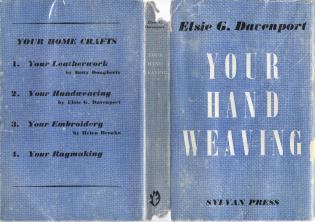
|
Your Hand Weaving was written by Elsie G. Davenport, with assistance with the diagrams from Miss E. Sheila MacEwan, A.T.D. [Art Teacher's Diploma], in charge of the Department of Women's Crafts at Hornsey School of Art. John Platt, the new Principal of the school, had given permission to include work by students in the photographs. |
"Man is by nature a creative artist... a community deprived of the opportunity to create with hands as well as with brain, becomes ill- balanced and ultimately unsound... The machine... must produce things in large quantities, and all to the same pattern... while it might be impractical to design and make one's own car... when you have woven your own cushion square... it will possess an individual character which no machine could produce" (p.7)
Your Hanweaving was reprinted in 1949, 1950 and 1951 - and then in 1970 in the USA.
This is my
book of the year for
1948
|
In 1947 and 1949, Frederick and Lorna Flower lived at 5 Pinner Park
Gardens, Harrow. In 1956 and 1964 they lived at 8 Elmcroft Crescent, Harrow
1948 Frederick Dalby Flower became Hendon Technical College's head of adult education. He developed a liberal arts programme, including performing arts groups and an English programme for overseas students. He had left the Communist Party after the Soviet Union's suppression of the Hungarian revolution in 1956. By 1959 Flower was Head of Department of Arts and Liberal Studies, Hendon Technical College. He wrote "Balance in Liberal Studies" Education and Training, Vol. 1 Iss: 6, pp. 20 - 22. Abstract: "Lasting differences between the 'extract' and the 'inject' schools of thought on liberal content suggest that some more general principle is needed. The author finds in wartime Army education a principle which gives coherence, balance, and some guidance on allocating time". He left Hendon College in 1960 to become Principal of Kingsway Day College. Fred Flower wrote in 1960: " Teachers of all subjects in technical colleges are largely agreed that there is a place for English in their curricula. Badly written and misspelt lab reports force them to recognise the inadequacy of their students' command of language. Employers, aware of the difficulties their technical staff find in writing correctly and comprehensibly, demand a sound grounding in English. The White Paper of February 1956 on Technical Education found space to call for "good plain English, the use of which saves time and money and avoids trouble". (F.D. Flower, M.B.E., B.A., B.Sc.(Econ.), (1960) ""Good Plain English" - English Courses for Technical Students", Education and Training, Vol. 2 Iss: 11, pp.15 - 17 1961 Foreign Girls in Hendon. A survey. 78 pages. Typed manuscript, bound in blue cloth. . By Sheila Williams and Frederick Dalby Flower: Hendon Overseas Friendship Association. [A copy in the British Library] "Full-time" au-pairs were paid £3 for a six-day week. Margaret Thatcher was President of the Hendon Overseas Friendship Association in the 1960s. Gladys M.C. [Celia] Tichborne (a socialist) was the secretary or chair.
|
18.7.1948 to 20.8.1948 "Hendon Technical School" was an Olymic Housing Centre. It had a capacity of 250, with 1 kitchen and 1 dining room and was allocated to the male athletes from Hungary. source [Nothing for Enfield. Centres appear to be on west of the county]
1948 Enfield
1.4.1948 Under the Electricity Act 1947, the Eastern Electricity
Board took over the Northmet Power Company (40 Church Street, Enfield and
Brimsdown Power Station). The Eastern Electricity Board was
authorised to supply Cambridgeshire, Hertfordshire, Huntingdonshire, the
Isle of Ely, Norfolk, Suffolk, parts of Bedfordshire, Buckinghamshire,
Essex, Middlesex, Oxfordshire and Soke of Peterborough.
(Industries of Enfield (1948) p.108
Autumn? 1948 George Bedford Clarke (born Middlesbrough 18.2.1910?
died Haywards Heath December 1981?) began as an Assistant
Grade A at Enfield Technical College. He had studied
Metallurgy at Bolton Training College (Teacher's Certificate? 1946) and
then been an Assistant Master at the Secondary Technical School
for Boys in Middlesbrough. At some time he became a Fellow of the Institute
of Metals (F.I.M.) and A.M.Inst.F. (I think that is a misprint: Associate
Member of the Institute of Physics). At Enfield, he was Assistant Grade B
from 1952 to 1954,
Lecturer 1954 to 1959 and Senior Lecturer from 1959. He taught in the
Department of Pure and Applied Science which concentrated on Sandwich
courses in Physics, Chemistry and Metallurgy for "scientists intending to
take up an industrial career". The two major courses in 1964-1965 were
Higher National Diplomas in Applied Physics and in Chemistry. Metallurgy
was available on a part time basis (Higher National Certificate) or at
Ordinary National certificate level. The first year of HNC study was at
East Hertfordshire or Tottenham Technical College. ONC was being phased
out.
"Where are they now?", The Vocational Aspect of
Education, 1963. 15:30, pp 64-68 and
1964-1965 Prospectus
The Enfield Sports Field in the summer of 1948
The sports field lay to the east of the college and was bounded to the
north
by the factories on Queensway, to the east by the buildings on the high
street, and on the south by the back gardens of the houses of Derby Road.
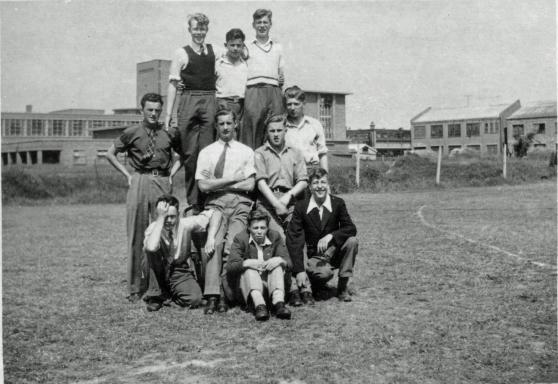
|
The top row are J. Hill, D. Heathorn and Terrence Williams. The middle row is Watts, Pierce Trehearne, Peter Teece and P. Doe. In the front are B.Rose, Mason and S. Legeard.
Malcolm recalls that during the summer of 1944, the V1 doodlebugs were arriving regularly and we took shelter in the air-raid shelters which were situated behind the fence to the rear.
By 1964, when the Enfield College of Technology Prospectus was published, the "sports field and pavilion" were in "World's End Lane about three miles away".
Malcolm Farrell becomes an Apprentice
"After completing the Diploma I started an apprenticeship in thermionic valve engineering at the Edison Swan Electric Company, Brimsdown - in the very year that the transistor was first announced! I finished up with HNC's in both Mechanical and Electric Engineering but have always regretted not going to university I owed a great deal to the College and am sad that the building is now decaying with the departure of Middlesex University. "
1948 Enfield Technical College Entertainments Association presented Spring Review (Easter?) and Babes in the Wood (Christmas). Babes in the Wood "played to packed houses for 10 performances. This was nearly 5,000 people - no mean achievement for a school production!"
1948 Reeves and sons built a new factory at Enfield and moved from their main office in Dalston. Its post-war policy was to develop and international market and this was done by Managing Director Archibald G. Simmons and by his successor George William Alfred Shiells (12.4.1928 - 15.2.2007). George Shiells became vice chairman of Enfield College of Technology (after 1964). He was president of the Enfield District Manufacturers Association and secretary of the Enfield Chamber of Trade. He launched the free newspaper the Enfield Advertiser in May 1978. "He took great pride in his involvement as a director and trustee in the creation of MoDA, the Museum of Domestic Design and Architecture". (source)
|
13.11.1948 Austen Albu (21.9.1903 - 23.11.1994), an engineer,
elected MP for Edmonton (Labour) in a bye-election following the death of
the sitting MP. He was MP for Edmonton (the constituency south of Ponders
End at the time) until 28.2.1974. During his whole parliamentary career he
persistantly and consistently promoted the cause of technical education, At
one time promoting a "politechnic club" in the House of Commons.
In his final speech in the Commons he said that "In the past 20 years" [1954 - 1974] "we have had a revolution - a revolution which has not been fully recognised - in technological education and industrial training in which previously we were the most backward of the industrialised nations." (Hansard 21.1.1974) |
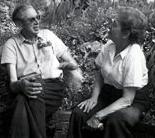
Austen Albu in conversation with his second wife, the social psychologist Marie Jahoda. Marie's worked demonstrated the negative effect of unemployment on mental health and the positive effect of meaningful social engagment. |
1.1.1949
National Service for 18 and 19 year old young men replaced the
conscription of adult men.
March
1949
End of
clothes rationing in Britain
|
The Libraries of
Greater London - A guide
compiled by L. M. Harrod. Chief Librarian and Curator, Islington Public
Libraries. London. G. Bell and sons, Ltd. 1951:
HENDON TECHNICAL COLLEGE, THE BURROUGHS, HENDON, N.W.4 "The library was officially opened in 1949, and is restricted to students of the College for reference only. Stock: Books and pamphlets 5,000; current periodicals 65. Staff: 1. Open: 9 - 12.15, 1.15- 5, 6 - 8.30 Monday to Friday Services: I. Books are lent only to members of the staff in exceptional circumstances. |
Enfield
1949
G.A.Roberts =
George Roberts.
Ripaults
was a family firm and George Roberts
was its Managing Director.
(Audrey Hardwick July 1998)
E. Pascal was
Eric Pascal (Gertie)
George Roberts was chairman of Enfield College's
Governing Body from 1949 to
1968 and E. Pascal MA former (in 1971) education officer
of the Borough of Enfield, was clerk to the Governors from 1949 to
1965
(College Times 18.3.1971).
George. Roberts was also the chair of the
Advisory Committee to the Department of Industrial Engineering. He was from
Ripaults Ltd. [1964-1965 Prospectus p.28]
Enfield District Manufacturers Association
Apprentice
Training Scheme
started in 1949. Fifteen local firms participated. Apprentices
gained experience in
more than one firm. An objective was to train people who might take
executive posts. (Recruitment to Skilled Trades by Gertrude Williams
Williamson, International library of sociology and social reconstruction
Routledge & K.Paul; 1957. p.132)
[Enfield] Nationalised Gas from 1949
Ponders End used to be known for its
Gas Works. These were run by a private
company until 1949 when all gas production was nationalised (under
the 1948
Gas Act) and a new
remodelled gasworks was built. In
1953 the Duke of Edinburgh visited this
and was given a tour by Sir Harold Smith, Chairman of the Gas Council.
When the gas industry was nationalised the Tottenham and District
Gas company came under the Eastern Gas Board which covered
Cambridgeshire, Huntingdonshire, the Isle of Ely, Norfolk, the Soke of
Peterborough, Suffolk and parts of Bedfordshire, Buckinghamshire, Essex,
Hertfordshire and Middlesex
The original members of the Eastern Gas Board were Sir John Stephenson,
18th November (the chair, appointed 18.11.1948), John Horsfall Dyde (the
deputy chair, appointed 23.12.1948) and two part time members (A. M. Baer
and Edward Woodall) appointed in January 1949. John Horsfall Dyde was a
Governor of Enfield College of Technology in 1964.
The fortunes of Ponders End gas rose, and then fell as attention moved to
north sea gas. Exploration for British gas were first successful in the
Groningen area off The Netherlands in 1959. Natural gas in British
waters was made in 1965 at the West Sole field, off the East Anglia
coast. Something significant happened in 1972 making town gas
generation unnecessary and London converted to natural gas about
1965.
26.4.1949
Factories along Queensway and Enfield Technical College, Ponders
End
The role of chemistry in the
Enfield curriculum and the need for chemistry laboratories seems
to be related.
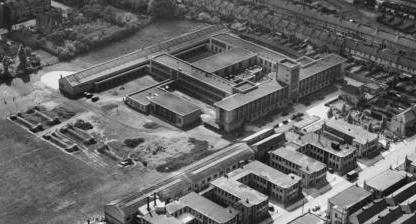
|
This shows what was later named the Broadbent building. As far as I can see, all its parts are here apart from the bar, which completed the rectangle (quad) to the left and the second floors of the two main wings (See Stanley Millward 1946) |
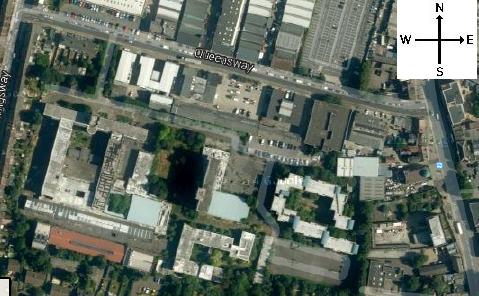
|
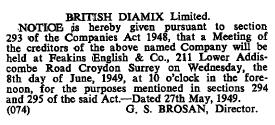
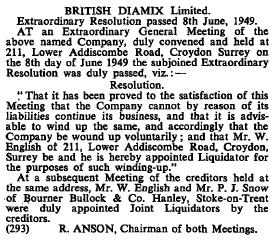
|
27.5.1949 As Director of British Diamix,
George Brosan signed a notice published in The London
Gazette on 31.5.1949
Messrs. Feakins, English & Co., of 211 Lower Addiscombe Road, Croydon, Surrey may have been a firm of solicitors specialising in insolvency 17.6.1949 Notice in The London Gazette of the appointment of liquidators by the company (Diamix) and by its creditors. |
Summer 1949 Gertie Clark married Ralph Beckett. They lived at 126 Kingsway, Enfield in the 1950s and 1960s. This house was on the right as one walked down Kingsway from Southbury Road to get to Queensway.
|
17.7.1949
The kingdom of evil is a phrase used to describe
practical matters in a
House of Commons debate on
production engineering and management training initiated by
Austen Albu, the MP for Edmonton. A similar idea is part of
George Brosan 's sociological explanation of the
role of technical eduction in English society:
"When an existing organisation fails to carry out a needed task, an undercover or immoral organisation emerges... The mechanics' institutes, technical colleges and polytechnics which successively recognised the need... have to be tolerated as a type of necessary evil ... in the same way that the Church accepts the existence of the Davil" (George Brosan, 1971, p.62) |
Autumn 1949 Beryl Catherine Myatt married Stewart S Platt in the Southend district. "As was normal in the Civil Service and most professional employment, she gave up her job to become a housewife and mother. Once her children were at school she had other options but there was no aircraft industry within range of Writtle." "In 1956 another chapter was opening in her life". (16.7.2008 outline)
1949 Enfield Technical College Entertainments Association presented ETCEA Follies and Dick Whittington (Christmas?) [Not quite what the official listing says]
Enfield 1950
1950 Early stage in the intellectual development of
Julienne B. Ford
as documented transparently by
Amy Gdala
and Julie herself in various
places.
"It may be that Little Miss J. tried to grow up to fast without ever growing up at all. Or, perhaps she had already grown up when, at the age of four she had graduated from Beatrix Potter to Arthur Ransome." |
|
Roderick McCrae
1950 The sudden death of Henry Broadbent led to the appointment of Roderick McCrae as Principal of Enfield Technical College. The death of Henry W. Broadbent, aged 55, was recorded in Edmonton in the March quarter of 1950. The death of Mary A. Broadbent, aged 64, was recorded in Wood Green in the December quarter of 1956. Gertie Beckett's 1981 memories: The next Principal to come along, Roderick McRea, went out to establish Higher National Diploma Courses. I well remember having to type and stencil draft after draft of 68 page schemes ... Individual letters to firms telling them they might save by ..... exams or suggesting the firms sponsored them for a .... course. There was no such thing as microprocessors in those days. The thought would have been as remote as putting a man on the moon. My other memories of Roderick McCrae are his liking for a free meal and time of in lieu. He always made a point of asking me to make his appointments for him to go to firms about 11.30 so as someone would be bound to invite him to stay on for lunch ... social occasions in the evenings, old boys association, staff associations, performances of which there were many in those days, were entered in the diary so that time of in lieu could be claimed. |
1950 Enfield Technical College Entertainments Association presented Variety Vogues and Red Riding Hood [Not quite what the official listing says]
Hornsey 1950
4.3.1950 Birth of Wendy Dagworthy in Gravesend, Kent
Fashion Encyclopedia entry -
Link to an
interview [Education: Northfleet Secondary School] [Started at
Medway College of Art (Medway College of Design?) when she was 16. 1966-
1968] "I did a two-year foundation and pre-diploma course at Medway School
of Art, which used to be in Rochester, on the High Street"...
"I went to Hornsey College of Art.. I started in the year of the sit-in, I
moved away from home and had a flat just off the Kings Road."
[1968-1971; first-class honours degree. Family: Married Jonathan Prew in
August 1973.]
|
Published 1950 in the
Your Home Crafts series
Your Pattern Cutting by Euphemia Sheila MacEwan During the past twenty years, pattern drafting on paper, as opposed to modelling in material on a dress stand, has come into its own; far from being looked on as the Cinderella of the cheap dress trade, it can now be regarded as an almost exact science based on careful observation of the varying proportions of the figure in action and repose, coupled with the latest knowledge of garment fabrics in wear.
A Handbook of your Children's Crafts by various authors, edited by Euphemia Sheila MacEwan. 10 in the Your Home Crafts series. This included a chapter on Print Making by Ronald I. Colman, A.T.D., who was "Teacher of Art and Crafts, Bishopshalt School, Uxbridge and Junior preparatory class, Hornsey School of Art and one on Weaving (which also discussed spinning) by Elsie Davenport
These are my
books of the year for
1950
|
May 1950 At an exhibition of weaving in Bristol, members of different guilds planned what became the Quarterly Journal of the Guilds of Weavers Spinners and Dyers. The London and the Home Counties Guild of Weavers, Spinners and Dyers was amongst the original guilds, and Sheila MacEwan and Elsie Davenport were on the six-person Editorial Committee.
|
Autumn 1950 Gwendoline J. Smith of 9 Heston Road, Lampton was 21.
She was a member of the newly (1950) formed
London and the Home Counties Guild of Weavers,
Spinners and Dyers, had been weaving for eighteen months and
already had a
length of coat cloth on exhibition in the Arts and Crafts Society's
exhibition at the Victoria and Albert Museum. She was studying for the
National Diploma in Woven Textiles at Hornsey School of Art under the
guidance of
Miss MacEwan and hoped to qualify as an art teacher in May and
specialise in weaving.
Gwendoline's parents had also taken up weaving, and had "woven 13 yards of pale blue stair carpet and two attractive tapestry mats on hand-made looms" "My wife and I found we could not buy the sort of carpets we wanted, so we had a shot at making our own" |
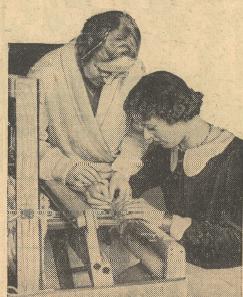 I think the picture shows
Sheila MacEwan and Gwendoline Smith, but information and picture
are from separate cuttings and I cannot be sure.
I think the picture shows
Sheila MacEwan and Gwendoline Smith, but information and picture
are from separate cuttings and I cannot be sure.
|
At the invitation of Elsie Davenport, Gwendoline Smith "who recently gained the Ministry of Education National Diploma in Handweaving" wrote in the September 1952 edition of the Quarterly Journal of the Guilds of Weavers Spinners and Dyers a detailed description of the London Guild's visit to Lullingstone Silk Farm in Kent.
|
Fashion at Hornsey
An undated cutting from the News Chronicle appears to belong to the very early 1950s. Called Girls Design for the Future it was written by Mabel Ellott "News Chronicle Reporter"
|
George Stephen Brosan PhD at Birkbeck College. "He began teaching electrical engineering at Regent Street Polytechnic before two short stints as departmental head at Willesden Technical College and further education officer for Middlesex county council." (source)
1951 [Hornsey and Trent Park]. Art Teachers Diploma to be replaced by and Art Teacher's Certificate. The certificate "had a greater academic content ... and teacher training students at the School received lectures on educational theory and history, some of which were given by visiting lecturers from Trent Park Training College" Clive Ashwin (p.36)
1.1.1951 Birth of Derek Lovelock who graduated from Enfield College
of Technology BA (Hons), Business Studies, possibly in 1971 or 1972. He
went to Kings College School in Wimbledon. If the BA was a four year
sandwich course, the years could have been 1967-1971 (aged 16-20). He was
graduate trainee in the buying team at C&A 1971 or 1972. He has been a
chief executive of Mothercare and of Sears Clothing.
Chief executive Mosaic Fashions 1999-2009; executive chairman: Aurora
Fashions since 2009.
1951
Enfield Technical College
Entertainments Association
presented
Festival Review at some time during the year and Jack and the
Beanstalk at Christmas.
1952
A new Elizabethan age
| The 75% grant Under existing arrangements, central government paid 60% of educational expenditure and local authorities 40%. At some time in 1952 it was decided to give special grant aid of 75% to local authorities doing advanced (that is, university level) work. (The New Polytechnics pp 22-23) |
West Ham Municipal College (1922) West Ham College of Technology in 1952. It was designated a Regional College of Technology in 1962, aftter which the new West Ham College of Further Education took over the lower level work. In 1970, West Ham College of Technology joined with two other institutions to form the North East London Polytechnic.
|
A sandwich course for engineering
apprentices was introduced at the Hendon
Technical College in 1952, initially for
Handley Page
factory [?] workers. Others
became part of the "Hendon Block-Release Scheme". Before coming across the
Hendon - Handley Page link, I wondered if the connection was with
De Havilland.
First Year Mathematics, Engineering Science, Engineering Drawing, Light and Sound, Elementary Design or Elementary Aeronautics, Workshop Technology, Elementary Electrical Technology, English, and Governmental Systems. Second year: Mathematics, Applied Mechanics, Applied Heat, Light and Sound, Graphics or Aeronautical Design, Materials and Processes, Electrical Technology, English, and Modern Industry. Third year: Mathematics, Strength of Materials and Theory of Machines, Applied Thermodynamics I or Aircraft Structures I, Principles of Engineering Production I, Metallurgy I, and English. Fourth year: Mathematics, Strength of Materials, Theory of Machines, Applied Thermodynamics II or Aircraft Structures II, Principles of Engineering Production II, and Metallurgy II. Fifth year: Industrial Administration, Management of Men, Work Study, Probability, Fuel and Combustion Engineering, Advanced Electrical Technology, Electronics, Design Project, and Economic Aspects. |
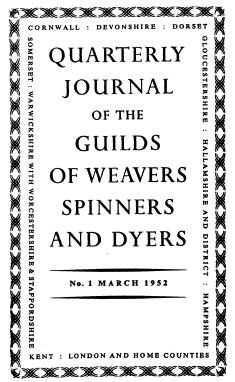
|
March 1952 First number of the
Quarterly Journal of the Guilds of Weavers Spinners and Dyers
"at a time when the tide of materialism has all but washed away the vestiges of individual creativeness and enterprise... People of all walks of life are beginning to realise that, unless the handscraftsmen are there to maintain a standard of excellence, the great tradition of good workmanship which has been the mainstay of Britain will not survive. The Guilds are today, as they once were in the past, the guadians of a standard"
|
16.8.1952 George Brosan married Maureen Dorothy Foscoe (born August 1927), an almoner, and daughter of Dominic Foscoe. They had three daughters.
21.10.1952 To achieve the bigger factory building programme for 1953 licences were to be issued for more industrial building. (Rab Butler, the Chancellor of the Exchequer, in response to Roy Jenkins in the House of Commons). Later (April 1953) the Chancellor "announced that the licences will be provided for building factories almost without any limit" (See Hugh Molson in the 20.7.1953 House of Commons debate). Building licences were not liberalised for other uses, but some of Enfield's industrial ones were diverted into building the McCrae Building.
1952 Enfield Technical College Entertainments Association presented both its first major musical, A Country Girl and its first straight play, Full House. The group became an Evening Class, allowing its membership to expand beyond staff and students of the college to include anyone with an interest in the performing arts.
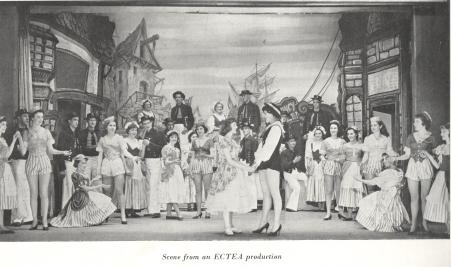
|
The Christmas Pantomime was Cinderella. This is my best guess at the photograph left from the Enfield College of Technology 1964-1965 Prospectus page 42. The previous Cinderella was in 1946 |
1953 "Women's papers show women proud to make their own dresses on new sewing machines, dresses with plenty of cloth (after the shortages) and calf length skirts - However, there is the shocking behaviour of a French woman, Bridget Bardot, photographed in a bikini at Cannes" - The Archers - "everyday story of country folk" just beginning its eternal run on the BBC - In 1952 all scheduled broadcasting was replaced for a day by solemn music because the family king had died. In 1953 we may visit friends with a television sets to watch the new Queen being crowned, or listen on the wireless and go to the cinema to see the film of the fairy- tale coronation." (timeline) Sherpa Tenzing Norkay and Edmund Hilary reached the top of Everest, the world's highest mountain, in an expedition led by John Hunt. The news reached Britain on he day of the coronation, and was headlines in the morning papers. (timeline)
|
Your Handspinning by
Elsie Davenport, 16 in the
Your Home Crafts series commented, in its
Preface, on the
apparent iliogicality of the book on spinning appearing after the book on
weaving:
"Your handweaving was written when a great wave of enthusiasm overwhelmed all exisiting organisations able to give reliable information about the craft... "Spinning, dyeing and weaving are but parts of one whole craft." Elsie also said "I hope... that some... will experience the extraordinary tranquility of mind induced by the gentle rhythms of spinning" |
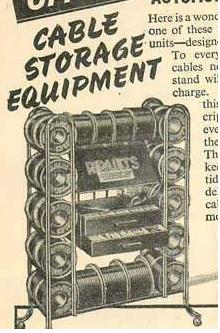
|
A
Ripault's cable storage and display unit in a 1953
advertisement. As well as off the peg cable, the company was (in the 1970s)
one of the principal UK manufacturers of "automobile wiring harnesses"
supplied (by tender) to the motor industry and also made telephone cords
and cordage for the Post Office. (1979 Report Insulated Cables and Wires)
1953 [Enfield Campus] Broadbent building was completed. Between 1953 and 1971, second floor wings were added and the McCrae building, Pascal Laboratories and Roberts Building and huts were all added. The Broadbent, McCrae and Roberts buildings were, according to the Campus Guide, named after local councillors. (But the Campus Guide was wrong. Roberts was from Ripaults, Pascal was Education Officer and McCrae a Principal) |
Audrey Hardwick: July 1998:
"The McCrae building was built in the aftermath of the war. At that time priority was given to categories of building that would help the country to recover from the destruction it had received during the war and building permits were issued to regulate this. Colleges did not come into that category and were not allowed permits. It was, however, agreed that if the college could "collect" enough permits the extension could be built. The chairman of the Board of Governors, Mr George Roberts, lobbied local industry asking for any building permits that they had not used. Eventually enough were collected and the McCrae building was built."
The McCrae Building opened in 1955. One wonders if permits also had to be collected to enable the completion of Broadbent?
Summer 1953 Peggy A. Yates married Alan J Bullock in Romsey. At some time, Alan became a lecturer at Enfield. See 1964 and 1965
Statistics of growth 1953 to 1960 See Table 1953 and Table 1959
3.1.1953 Prince Philip visited the Gas Works at Ponders End, Middlesex. Unused Pathe news material shows various long shots of Ponders End Gas Works. Philip arriving and being welcomed by Sir Harold Smith (Chairman of the Gas Council) and shaking hands with officials. Hatless, Philip in white coat like the managers who accompany him, tours works. The managers wear bowler hats. At one time, Philip is introduced to a worker (smiles all round), who wears a cloth cap (see below). The tour includes the tippler house. a retort charge. a truck leaving the quenching tower. We see Philip watching retort charging. Then there is a shot of Philip talking to the feeding-machine operator. The operator has no hat, has a black jacket and what appears to be an open-neck white shirt. Railway wagons being pushed into Tippler. Philip chatting with a worker in his cloth cap. A wagon with steaming coke is shown being lifted onto transporter. We see Philip looking up at the transporter, the transporter in operation, and hot flaming coke being unloaded.
We were all identified by our clothes in 1953. I was a nine years old
Hornsey school boy so I wore a school cap, shirt and grey flannel trousers
(plus braces) with socks to pull up. So did almost every other boy in the
district.
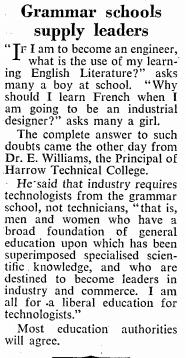
|
In the year of the
Coronation,
Principal Williams issued a clear message to
the boys and girls of Britain:
industry requires technologists from grammar schools, not technicians, "that is men and women who have a broad foundation of general education upon which has been superimposed specialised scientific knowledge, and who are destined to become leaders in industry and commerce. I am for a liberal education for technologists"
Childrens Newspaper 21.2.1953 |
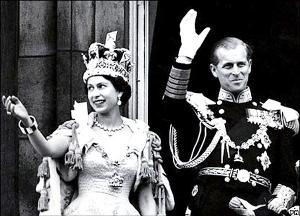
|
2.6.1953 A new Elizabethan age: The second Queen Elizabeth, and her consort Philip (of Greece, not of Spain) wave to the crowd from the balcony of Buckingham Palace after her crowning at Westminter Abbey. |
20.7.1953 House of Commons debate on Science and Productivity - The first Commons debate on the subject since the war. There was one in the Lords on 11.6.1952 at which it was said the Advisory Council on Scientific Policy would be asked to prepare a report. The Commons debate was stimulated by that report which had found that 1) investment in manufacturing was too small; 2) there was inadequate interest in scientific development, and 3) there were too few scientists and technologists. (Hugh Molson's speech).
"In 1900, output per manhour in the United States was approximately the same as in Western Europe. Now, output is about two-and- a-half times as great" (Hugh Molson's speech).
Austen Albu was amongst those who spoke in the debate.
1953 Enfield Technical College Entertainments Association presented Our Miss Gibbs - Queensway Review - and Aladdin (Christmas)
Our Miss Gibbs is an Edwardian musical comedy, popular with amateur theatre groups into the 1950s, that explains (amongst other things) that a woman's education is not complete until she has experienced the thrill "all through" of having a man's arms [both] around her waist. "Forgetting all anxiety, Lay your head upon his shoulder".
"Dear old maids may look disgusted,
The simple fact is
They've had no practice,
But I'm sure that if they only knew,
They'd like to do the very same as you."
|
The Women's Crafts Department at Hornsey may have been
the first
semi-autonomous annexe.
Sheila MacEwan said in 1956: "at No 2, Waverley Road I achieved my Everest ..." Sheila also said "When my department moved out of the main school, I feared I might, at last, feel cut off from H.S.A. I am more grateful to Mr Platt and to my colleagues over here that I have continued to feel as much a part of the school as ever." Peter Green's interview notes refer to Women's crafts taking over "Waverley House" sometime after world war two. Planning permission was requested on 16.3.2005 for the demolition of "Waverley House, 9 Waverley Road N8 9QS" [In the 1977 Post Office Guide all the buildings in Waverley Road are shown as blocks of flats apart from Highgate Lodge Hotel (9 Waverley Road)] The next annexe appears to have been for the Teacher Training Department. Sometime after Sheila retired, the Women's Crafts Depertmant became Textiles and fashion. Textiles and fashion and three-dimensional design moved to the new site at Cat Hill in 1970. Three Dimensional Design and Textiles/Fashion were the two areas at Hornsey that wre not initially approved for the National Council for Diplomas in Art and Design.
|
Edward John Bassett, Associate Member of Enfield, transferred to the class of Members. Council Minutes 19.3.1954 Institution of Mechanical Engineers.
24.7.1954 Listing in The Chemist and Druggist "Enfield: Technical College; evening courses in radiochemistry and in vacuum technology."
Hendon 1954
A "recent"
Handley Page
apprentices' prize-giving reported Flight
7.1.1955
page 25. "In the background... Mr
R.W. Walls, principal,
Hendon Technical College"
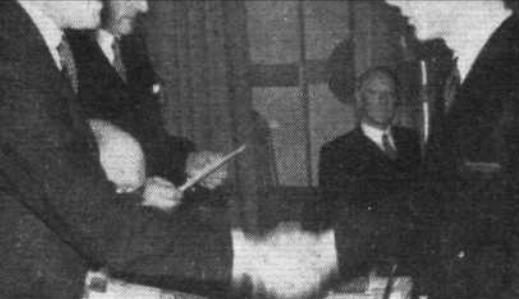
|
1954 Eileen Younghusband, lecturer in Sociology at London School of Economics, initiated a generic social work course. which "quickly becoming an example for other social work training courses". (source) - See 1961 - 1964 -

|
18.10.1954 David Eccles became Minister for Education in a Government reshuffle. He was previously at the Board of Works. From 13.1.1957 he was President of the Board of Trade and then returned to being Minister for Education from 14.10.1959 to 13.7.1962. His combined periods of office make him the longest serving Minister of Education in England and Wales. Great Education Secretaries website. |
1954 Enfield Technical College Entertainments Association presented Maid of the Mountains - The Middle Watch and Mother Goose (Christmas)
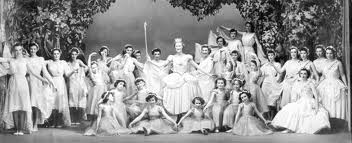
|
Broxbourne Theatre Company's history includes a photograph of a scene from Mother Goose with over thirty women players - One of whom appears to be a fairy queen. |
1955 Hornsey School of Arts and Crafts renamed Hornsey College of Arts and Crafts. [Later Hornsey College of Arts]
|
Friday 24.6.1955 The Star [One of the three London Evening
papers until 196], page 2 Students run own dress show - Men help too
"High fashion at the heights of Hornsey - for the first time in six years
the Hornsey College of Arts and Crafts are giving a dress show"
Students learn not only how to design and cut patterns, to sew them and fit them, but also how to make hats; to do both hand and machinery and all kinds of feather work. [The three students modelling their outfits in the photograph are, from left to right: Drusilla Jenden 17, Hampstead: Brigit Stenberg 21, Stockholm: Pat Hollick, 20, Hornsey.] |
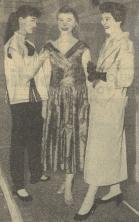
|
Derek Stephens, "a male student - one of three at the college" had made a (woman's) suit designed "by petite Betty Jane Cherrington, of Tottenham". "She wove the material herself - an attractive beige and grey with slub effect - and designed the double-breasted suit with its pouch back and hem skirt". She planned to wear it for job-hunting in the autumn.
Your Yarn Dyeing - A book for handweavers and spinners by Elsie Davenport was the last in the series of three books she published for the Your Home Crafts series. Although published in 1955, the Preface is dated December 1953. The book includes acknowledgements "To the group of Weaving Students of Hornsey School of Art who have acted as such willing 'guinea-pigs'"
Reginald William Walls, the first Principal of Hendon, would have been 65 in the summer of 1955. He may have retired at the end of 1954.

|
Emrys Williams, the second Principal, took up this new appointment on 1.1.1955 (Journal of the Royal Institute of Chemistry January 1955). His resignation from his previous post at Harrow was recorded in the Education Committee minutes in November 1954. |
See 1950
Gertie Beckett 4.8.1998: The building that became McCrae was built in 1955. Probable named McCrae shortly after his death in 1962. Stanley Millward says that Mr Chapman, head of mechanical engineering, was retiring when the McCrae Building was opened. The 1964-1965 Prospectus says that there were three buildings: The College Building [which became Broadbent] the Mechanical Engineering Block [which became McCrae] and the Science Block [which became the Swan Annexe]
24.2.1955 Hansard Technical Education (Building Projects)
Mr. Ashton asked the Minister of Education what response he has received from local education authorities to the proposals set out in Circular 283 for more building for technical education in 1955-56.
David Eccles Authorities have responded well, and I have been able to add 41 projects having a total value of £2,500,000 to the 1955-56 building programme, of which £200,000 is for Wales.
26.4.1955 House of Commons debate on Education.
14.7.1955 House of Commons
Dr. King asked the Minister of Education how many projects or instalments
of projects designed to expand the facilities for technical education were
submitted to him as a result of Circular 283; how many were added to the
1955-56 programme; how many are to be included in the 1956-57 programme;
and how many deferred beyond 1956-57.
David Eccles:
"Of 220 projects submitted, forty-six to the value of £2.5 million
were added to the 1955-56 programme, about sixty estimated to cost about
£9 million are to be included in the 1956-57 programme and the rest
are to be deferred.
14.7.1955
Hansard
David Eccles to accept the recommendation of the
National Advisory Council on Education for Industry and Commerce to
establish a council responsible for making national awards in technology in
technical colleges.
21.7.1955
House of Commons debate on Scientific and Technical Manpower
David Eccles: "As far as possible, the local technical colleges
will bring
the education to the students, whereas the advanced colleges will find that
most of their students will travel to the education." (column 601)
Austen Albu (MP for Edmonton) "Will the colleges be allowed to
divest
themselves of lower-grade work?"
David Eccles: "Yes, they will, and I hope that that will happen. I hope
that the regional colleges will, as the hon. Gentleman says, divest
themselves of the lower-grade work, which will be taken up by the group of
local technical colleges which will serve as satellites, one might say,
around the regional college."
1955 The National Council for Technological Awards (NCTA) (1955-
1964) set up by he Minister of Education
(National Archives Records). This introduced
the Diploma in Technology (Dip. Tech.) in March 1956. Courses approved had
to be sandwich courses and include liberal studies and studies in
administration. The Council set standards for accommodation, equipment and
staffing. Responsibility for setting up the courses lay with the colleges,
the Council just granted (or did not grant) approval.
(The New Polytechnics pp 26-27)
|
Enfield statistics
Statistics charting the expansion of Enfield may have survived for |
Enfield statistics 1953-1956
| 1953-1954 | 1954-1955 | 1955-1956 estimate | |
| Full-time | 173 | 196 | 250 |
| Part-time | 5373 | 5837 | 6000 |
| Total | 5546 | 6033 | 6250 |
See 1959
| Volume and standard of work |
| Total number of student hours for the completed session from 1st September to 31st August |
| 1953-1954 | 1954-1955 | 1955-1956 estimate | |
| Work of University standard | 121,573 | 151,830 | 200,000 |
| Advanced Work | 356,596 | 390,450 | 400,000 |
| Work of School Standard | 265,360 | 294,428 | 300,000 |
| Total | 743,529 | 836,708 | 900,000 |
Work of University Standard: [Presumably 1955]
Full-time
Sandwich Diploma Courses in Civil Engineering, Electrical
Engineering, Mechanical Engineering and production Engineering - Second,
Third and Fourth Years.
Full-time Sandwich Diploma Course in
Management Studies
Part-time Higher National Certificate Courses in Civil, Electrical,
Mechanical and Production Engineering, Metallurgy and Chemistry, - A1, A2
and A3 years.
Part-time B.Sc. (General) Degree Course.
Part-time Intermediate Management Studies.
Part-time Final Diploma Course in Management Studies.
City and Guilds Mechanical Engineering Inspection Course.
Full-time staff: Principal, 5 Heads of Departments: One at Grade 1; three
at Grade 3 and one at Grade 4.
Part time teachers: 255
Office, maintenance, caretaking and canteen staff for whom the Principal
has responsibility: 70.
The Principal is responsible for the work of three Annexes of the College
at Ponders End, Enfield (Holly Walk) and Edmonton. He is also responsible
for the supervision of contributory classes to the National Certificate
Scheme at Southgate Evening Institute. He supervises Preliminary Technical
Courses held in the local Secondary Modern and Central Schools. A fair
amount of research work is carried out at the College and seven lecturers
and assistants have time table allowances for research. The Principal is a
member of Training Committees is several industrial firms and takes an
active part in the
Enfield and District Manufacturers' Association
Apprentice Training Scheme.
1955
Enfield Technical College
Entertainments Association
presented "The Geisha" (an Edwarian musical) and "Dick Whittington".
Enfield Museum Service have
a photograph of The Geisha which includes Julia McKenzie,
Enfield born actress who later played Miss Marple. Such a cast of women
demonstrates the extent to which the plays
drew casts from outside the college. The Geisha comes from an
album of 34 black and white photographs of 1950s productions by
Technical College Entertainments Association
taken by Enfield photographers John W.Young and C.S. Wilkin. The album was
found in the loft of an Enfield house.
Prelude to
Technical Education, the white paper, 1956
17.11.1955 Nikolai Bulganin, USSR Prime Minister, and Nikita
Khrushchev, Soviet Communist Party First Secretary, left Moscow by air for
a goodwill visit to India, Burma and Afghanistan. The commercial aspect
of the visit related to technical rather than financial aid. Prime Minister
Nehru said "he had not so far had any discussion with the Soviet Government
regarding the assistance for the development of nuclear energy". (The
Hindu
23.6.1955 and
18.11.1955)
November 1956 First publication of the Technical Education,
the book, by Peter Venables.
5.12.1955
Winston Churchill's speech
15.12.1955
House of Commons debate Technical Colleges
and Schools.
I have interpreted Diploma as HND rather than
Dip.Tech in
the light of
Gertie Beckett's memories and the
1964-1965 courses
list.
9 Senior Lecturers; 15 Lecturers.
18 Assistants Grade B; 14 Assistants Grade A.
Number of teaching hours (PT teachers): 26,304
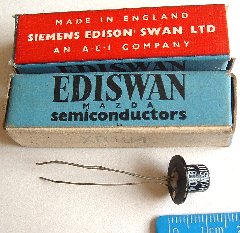
|
1956 Siemens Edison Swan formed. The XB104 general-purpose semi- conductor (transistor) shown was released in July 1958. The image shows the Ediswan box in which the transistors were supplied. (Andrew Wylie's transistor history) |
18.1.1956 Anthony Eden on the world-wide scientific revolution
|
29.2.1956 Publication of Technical Education (Cmnd
9703 - 43
pages)
a White Paper on the future of technical
education, covering England, Wales and Scotland. See
National Archives: Colleges and
polytechnics. Presented to Parliament by the Minister of
Education and the Secretary of State for Scotland. Published HMSO 1956.
[
The New Polytechnics reference 7]
29.2.1956 House of Commons announcement by David Eccles, the Minister of Education. (available online) "A White Paper on the future of technical education, covering England, Wales and Scotland, was available to hon. Members in the Vote Office earlier this afternoon. This Paper is mainly devoted to technical education in the schools and technical colleges. The universities review their programmes every five years and are now working on plans for 1957-62. For this reason it has not been possible to deal in the White Paper with the university side in the same detail." 29.3.1956 House of Commons debate on Higher Technical Education, Tees-side (available online) 21.6.1956 House of Commons debate on Technical Education (available online)
"I think there is just a danger that we may campaign for technical education as though it were an international race, like the arms race." (The Minister of Education (Sir David Eccles) in the debate) See International Geophysical Year below. |
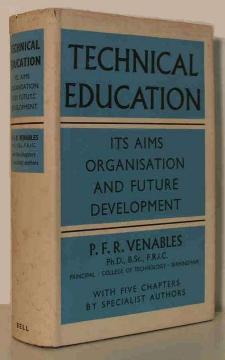
|
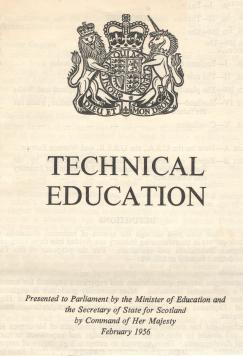
|
Peter Venables' very large book and David Eccles' very small white paper appeared about the same time. |
|
Definitions from the
Technical Education White Paper, page 2
Most of those who pass through the system of technical education and make their careers in manufacturing industry are divided into three categories... Technologists A technologist has the qualifications and experience required for membership of a professional institution... A technologist has studied the fundamental principles of his chosen technology and should be able to use his knowledge and experience to initiate practical developments... Technicians A technician is qualified in specialist technical education and practical training to work under the general direction of a technologists... Craftsmen Craftsmen represent the skilled labour of manufacturing industry and account for more than one third of its manpower. With the growing complexity of machines and the introduction of new materials it becomes all the more necessary for them to appreciate not only the how but also the why of the work they do. |
Bishop and Brosan's torque convertor
16.4.1956 Great Britain Patent claim for an invention relating to transmission mechanisms or like devices by Dudley Oswald Bishop of 12 Austyn Gardens, Tolworth, Surbiton, and George Stephen Brosan of 25 Holly Lane West, Banstead, England. (Link to USA Patent application) [Presumably the same as "An electromagnetic variable-ratio torque convertor" "The torque convertor differs radically from any other type known to be in commercial use. It depends for its operation upon the phenomenon exemplified in Faraday's disc and constitutes, theoretically, an `infinitely variable' gear whose ratio can be varied over a wide range" (Bishop, D.O. ; Brosan, G.S. December 1959 Proceedings of the IEE)
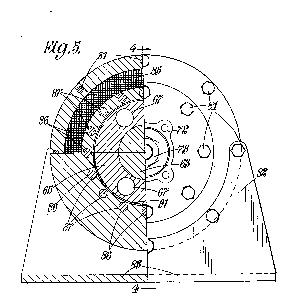
|
Filed 12.4.1957
A torque convertor transmits power in a variable way. They are used for automatic transmission in gear-free cars. The Bishop-Brosan invention could also be used as a measuring instrument. |
Herbert and Edith Wadge at Buckingham Palace
25.5.1956
Herbert Willan Wadge (National Schools Advisory Committee,
National Savings Committee) made a Member of the British Empire in the
Queen's birthday honours.
Culminating events on Technical Education
21.6.1956
House of Commons dabate on (the white paper) Technical
Education. Circular 305 on the "Organisation of Technical Colleges" was
issued at this time.
July 1956 or later Second impression of Technical Education
the book.
1956
Enfield Technical College
Entertainments Association presented "The Belle of New York" -
"Humpty Dumpty" - "Women aren't
Angels"
"Remarkable changes, some foreseen and some almost past hoping
for, have come about since this book was published in November 1955. First
came the disclosures made by Sir Winston Churchill ... [to the] culminating
events" of the 21.6.1956 debate and Circular 305. (Venables "Note to the
Second Impression" 25.6.1956)
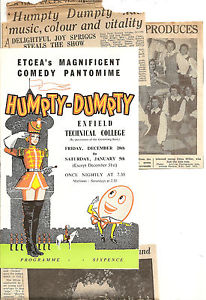
|
December 1956
ETCEA's magnificent comedy
pantomime "Humpty Dumpty" at Enfield Technical College. 8 page
pantomime programme
and two newspaper cuttings, with a picture on each, sold on Ebay July 2013
Sometime in 1957 (Easter?) the company put on a performance of Show Boat. Amongst the singers in Show Boat was Maureen A Nelson (aged 17). At rehearsals, she met the Director's son, Ian Stretch (16), who was at Naval College. They married in St Andrew's Church in Silver Street in 1962. Fifty years later they were still active in the company. |
|
The retirement of
Sheila MacEwan
Hornsey 1956. 25.2.1956 A letter from E. M. O'R. Dickey at the Ministry of Education, that he had heard Sheila was retiring. [Edward Montgomery O'Rorke Dickey 1.7.1894-1977. See Wikipedia)] 21.3.1956. 4.30pm Greetings Telegram from Enid Russ in Newport, Monmouthshire, to be delivered. [Gertrude Enid Russ (1921-14.12.2011), known as Enid Russ, taught Textiles at Newport Art College. She founded the Gwent Guild of Weavers, Spinners and Dyers in 1951.] Beyond Sheila Margaret Melliar-Smith, also known as Margaret Melliar, took over from Sheila in 1956. She had taught dress design at Harrogate School of Art, Later she became a fashion consultant and freelance designer. She published Dressing to Please in the Design for Living series in December 1964 and Pattern Cutting in 1968. "While fashion changes the principles of pattern cutting remain unaltered. Here Margaret Melliar shows how., by using a basic block, patterns can be adapted to any style without the complication of having to draft out each design separately." Marianne Straub (1909-1908), Head of the Textile Department at The Central School of Art and Design, moved to Hornsey College of Art in 1963 and the Royal College of Art in 1968. Julian Robinson was head of the Fashion and Textile Department from the mid-1960s to 1977.
|
1957 The University of Leicester was granted a Royal Charter which
enabled it to grant its own degrees instead of using external degrees of
the
University of London. London School of Economics and the
University of Leicester were two major sources of teaching staff for the
expansion of social sciences at Enfield in the 1960s
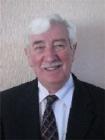
|
1957 Brian Ellis trained as a teacher of English, Speech and Drama at Trent Park. He obtained his Certificate of Education in 1959 and taught English and Drama in a North London Secondary School for three years, and then entered the Theatre in 1962. The roles he has played include Henry Higgins in "My Fair Lady" - Sherlock Holmes in "Baker Street" - and Fagin in "Oliver". (main source) |
Minutes of Harrow Education Committee: 20.2.1957.
119. Hendon Secondary School of Engineering: A letter was submitted from the Chief Education Officer stating that the Hendon Divisional Executive have proposed that admissions to the Secondary Technical School of Engineering should be discontinued after 1957 and that the school should be continued only for such time as would be necessary to enable the existing pupils to complete their courses of instruction. The premises occupied at present by the Secondary Technical School are urgently required for the development of Further Education courses.
The views of the Divisional Executives for the areas served by this school are requested and the Chief Education Officer asks whether it is considered possible to make provision in the secondary modern schools in the Borough for pupils who might otherwise have attended the Hendon Secondary Technical School.
Details were submitted of pupils from Harrow sitting the Selective Test for the School and the number gaining places in recent years which indicated that the numbers of Harrow pupils admitted to Hendon Secondary Technical School had fallen from 32 in 1953 to 9 in 1956 and your Sub-Committee are of the opinion that the Advanced Courses provided in Secondary Modern Schools within the Borough should largely meet the demand.
RESOLVED: That the County Council be informed that, as far as Harrow is concerned, there would be no objection to the closure of the Hendon Secondary School of Engineering
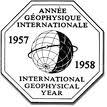
|
July 1957 to December 1958: The International Geophysical Year - Friday 4.10.1957 First Sputnik (Russian satellite) sent into space. The second was sent on 3.11.1957 with a dog on board. - 2.9.1958 USA National Defense Education Act (NDEA) |
1957 Enfield Technical College Entertainments Association presented: "Show Boat" and "Sleeping Beauty"
| 1958 Roy Bailey (born 20.10.1935 in London) began singing in a skiffle group. He later went to Leicester University to study Sociology and came to Enfield College in 1964 |
Stephen F. Cotgrove 1958 Technical Education and Social Change. London: Ruskin House. [Preface dated November 1957. Reviewed in New Scientist 14.8.1958] Presumably developed from his Ph.D thesis "A sociological study of further technical education with special reference to the London polytechnics" (London School of Economics 1957) . The survey of students at Regent Street and Woolwich Polytechnics was sent out in the autumn of 1955 (p.207. He thanked David Glass for "constant help and encouragement". Jean Floud, George Baron and Asher Tropp read the typescript. (p.vi).
1958 Bob Wyatt, Wilf Jolley, Roger Blencoe, Trevor Baker, Alan Birkett and John Lightfoot were amongst apprentices of shipping companies starting training at Hendon Technical College under a scheme set up by the Board of Trade as a fast track to producing marine engineers. The apprentices came from companies including Shell, BP, Shaw Saville and British India. Once trained, they went to sea as junior engineers. This group later met every few years to renew acquaintance and in 2009, to mark their 50th anniversary of starting training at Hendon, they went together on a mini cruise on the QE2. R. Ian Harper was a marine engineering apprentice with BP Tankers at Hendon College of Technology between 1961 to 1966. He achieved Ordinary National and Higher National Diploma certificates in Mechanical Engineering
|
1958
Brian Frank
Gardner
left school without completing his
examinations. It appears he started work in September 1958:
" Now living in Edmonton I was close to a large amount of engineering industry, much arranged along the Lea Valley and along the Cambridge Arterial Road, now better known as the A10. Without any help or advice from school or home I wrote application letters for a job with training from a range of these local firms. Unlike what would be the likely response today, I got replies and a number of interviews. I remember interviews at Weston Meters, Belling and Lee and one or two other smaller companies plus as luck would have it, an interview with Siemens Edison Swan who were recruiting for apprentices to start at the beginning of the next school year. Ediswan, as they were known, ran a large apprentice scheme with an intake each school year in three grades of apprenticeship and had their own apprentice training centre in Ponders End, very close to home. On the basis of my 'O' level GCE's I was accepted as a 'Technician Apprentice'. This was the middle grade, more theoretical than the Craft Apprentice, less so than a Student Apprentice. As a Technician Apprentice I was required to attend day release at Enfield Technical School plus a couple of evening classes."
|
1958 Enfield Technical College Entertainments Association presented: "Vagabond King". the Premiere of "Off the Shelf" and "Robinson Crusoe"
Hendon Secondary Technical School was housed within the College until 1959
- See
Fred and Pauline Moore 1943
- See move of Enfield Technical School in
1962
[Enfield] - See 1953- 1956
| Students 1959/1960 |
| Number of students | Estimated student hours | |
| Full-time | 436 | 250,000 |
| Part-time day | 2,301 | 480,000 |
| Evening | 3,247 | 300,000 |
| Total | 5,984 | 1,030,000 |
1959 External London degrees at Enfield
"In 1959 the college gained recognition from London University for courses leading to external degrees" in engineering" (Victoria County History based on notes from senior tutor librarian) - See 1963 - 1964-1965 courses - and Enfield staff explosion September 1964
1959 Begining of transition of Ediswan Factory to Thorn: "AEI merged its small domestic appliance business "Hotpoint" with Thorn, which included part of the production at Ponders End". (Lamptech)
|
31.8.1959 Date of commencement of apprenticeship of
Brian Frank
Gardner
with Associated Electrical Industries Ltd.
(Siemens Edison
Swan). The apprenticeship was for
five years. "A five year sandwich course, six months college six
months work experience".
(website
autobiography
offline)
. The name
Edison Swan ceased to be used in 1959 and all Associated
Electrical Industries' lights were marketed as the AEI-Mazda brand.
"Semi-conductors were new and were the devices to replace thermionic valves. Siemens Ediswan had been a big name in valve and television tube manufacture and had a large plant at Brimsdown Enfield devoted to the mass production of those devices. The electronics syllabus of my college course had originally been based around the study of thermionic valves and circuits but had been enlightened enough to move over to semi-conductor theory from the outset, the course even included the subject of electronic computing machines such as analogue and digital computers. As part of the course our lecturer had arranged for a visit to the Texas Instruments semi-conductor factory in Bedford where I was amazed by the American style of working environment with its open plan offices, name badges and egalitarian style management." |
1959 Enfield Technical College Entertainments Association presented: "Oklahoma" and "Babes in the Wood"
Britain demobbed
1960 Last intake of
National Servicemen The last National Serviceman was demobbed on
16.5.1963. In 1960, 1961 and 1962, the children born at the end
of the second world war left secondary school.
In 1960 teacher training courses were extended from two years to three.
|
George Brosan at Middlesex County Council and related
George Brosan was Further Education Officer, Middlesex County Council, from 1960-1962. This meant that he actively oversaw developments in the technical colleges, including Enfield. (See below) Joseph Hayim Abraham was Extension Lecturer in Sociology at the University of London from 1960 to 1965. He had worked for the Egyptian Educational Service from 1932 to 1951 and completed his Ph.D at London University in 1956. John Crutchley said he thought the first sociologist appointed to Enfield was "Harold Abrahams", but see the 1964-1965 Prospectus which has "J.H. Abraham". He was brought there, John said, by George Brosan, but only stayed for a short time. J. Abrahan had responsibility for "Public Lectures" at Enfield College in 1964. (Aide Memoire) These had run for two years in the lunch hour break in the lecture theatre which "has always been filled to capacity". Although public "the lectures were designed primarily for the student body". Guest speakers had included Lord Boothby, Professor Bondi, Miss Marghanita Laski, Mr A.J.P. Taylor and Dr Donald Sooper. The main purpose had been to "present by expert and qualified speakers a broad pattern of interests, Current Affairs, Science, Art and Religion". The main bias of the next series was to be towards "the sociological aspects of industry, education and law". (1964-1965 Prospectus p.40) Joseph Hayim Abraham was Head of Department of Social Science at the West Ham College of Technology from 1965 to 1968. In 1968 he was appointed to the Chair of Sociology at the University of Ghana. J.H. Abraham was the uncle of "Jack" Jacob, who assisted him with his socology of law in Sociology in the Teach Yourself series (1966). Because of its cover picture. John recalled J.H. Abraham's Origins and Growth of Sociology (1973) as having a title "something like" "The Tree of Knowledge" John said that Brosan mainly brought in sociologists from LSE and Leicester. Jean Death (later Jean Gregory) came from Bedford College. Roy Bailey came from Leicester. Rachel Parry and Sam Wolfe (who only stayed about a year) from LSE. |
|
1960 Roger Murray BA in History from the University of Oxford.
See New Left Review
1963.
From 1963 to 1965 Roger was Research Fellow at the Institute of African
Studies at the University of Accra in
Ghana. From 1966 to 1967 was engaged
in research in the Tanzanian Government Vice President's Office. See
Enfield 1968
University College in Accra became The University of Ghana awarding its own degrees by Act 79 of the Ghanaian Parliament on 1.10.1961. Previously (since 11.8.1948) degrees had been awarded under the ultimate supervision of the University of London. Joseph Hayim Abraham was Chair of Sociology at the University of Ghana from 1968. The island of Zanzibar and mainland Tanganyika became Tanzania on 26.4.1964. |
|
John Hamer and
Programmed Learning
John Hamer, a mathematics lecturer at Enfield College, became interested as early as 1960/1961 in the emerging educational technology of "programmed learning" (programmed instruction in USA jargon). He arranged a study tour to the USA where he worked with Professor B.F. Skinner in the psychology laboratory at Harvard University and visited many other research and development centres working on emerging technologies applied to education. On his return he set up the Learning Systems Unit at Enfield (around 1962/1963) [email from Alexander Romiszowsk 13.7.2014]
|
Hornsey 1960 Wood Green annexe opened for Art Teacher
Training. This appears to have been the first of the proliferation of
annexes, after
2 Waverley Road. It moved to
Page Green in 1964.
October 1960 Ministry of Education's First Report of the National
Advisory Council on Art Education. [Coldstream Report]. Included detailed
proposals for a new award to be known as the Diploma in Art and
Design.
See May 1961 -
Brighton and
Hornsey 1963 -
1964 -
1966 - Became
BA (Art and Design) in 1974.
Art education was classified in four main areas
Fine art, in which the chief studies were painting and sculpture
Graphic design, which did not have separately approved chief studies [but
related to printing, advertising and the media]
Three Dimensional Design, in which the chief studies were Silversmithing -
Silversmithing and Jewellery - Silver-Metal Jewellery - Industrial Design
(Engineering) - Furniture - Ceramics - Interior Design - Theatre - Glass -
and Wood-Metal-Ceramics.
Textiles/Fashion, in which the chief studies were Woven and Printed
Textiles - Woven Textiles - Fashion - and Embroidery
21.11.1960 Southbury station opened for passengers following
electrification of the Edmonton to Cheshunt loop. From
1919 to 1960 the line had just been used fro goods services.
Enfield College was now a few minutes
walk from a railway line from London's Liverpool Street station. The bus
links for Enfield meant it was accessible for the region (see
1964-1965 Prospectus), the opening of Southbury Station for
passengers may also have opened the possibility of
a more national catchment area.
end of 1960 planning permission to build the school which became
Ambrose
Fleming
1960
Enfield Technical College
Entertainments Association presented: "Annie Get Your Gun" and
"Puss in Boots"
Hendon 1961
May 1961: M.E. Rosner (Mechanical Engineering, Hendon Technical College)
left the college, His article
"Nine years of block release at Hendon" was published in The
Journal of
Vocational Education and Training [?]
Publication of the year for 1961
E. Williams oversaw the rapid development of Hendon
College in the 1960s. The picture I have used below is from Bits of
Enfield College 29.1.1969, page 1.

|
23.11.1961
New Scientist advertisement:
Hendon Technical College Principal E. Williams B.Sc, Ph.D, F.R.I.C.
"This college, situated in pleasing surroundings only a few miles from the centre of London, is one with well developed advanced courses. "Sandwich" courses are a feature of the college work. Due to the rapid development of advanced work an increasing number of men and women of ability and initiative are required as members of the full-time staff." (source) |
Mechanical Engineering Department
1) Lecturer in Metallurgy
2) Lecturer in Applied Thermodynamics
Duties for both these posts will be with students taking courses up to and including Higher National Diploma level.
3 and 4) Two Assistant Lecturers, Grade B, to take one or two of the following subjects: -
Applied Thermodynamics
Mechanics of Fluids
Workshop Technology
Assistant Lecturers will work with classes at Ordinary National Diploma and Certificate level and possibly some classes at higher levels.
Summers: 1961 - 1962 - 1963 - 1964 - 1965 - 1966 Archaeological excavation on the land of Church End Farm by the newly formed (1961) Hendon Archaeological Society. In 1961 and 1962 the sole focus of the excavations was the Church End Farm Farmhouse. "The site of the farmhouse, together with that of its successor, was shortly to be used for the extension of Hendon Technical College, originally constructed as the Technical Institute in 1937." (source)
Hornsey 1961 Bowes Road annexe opened for Graphic
Design.
(See 1975 Polytechnic
map)
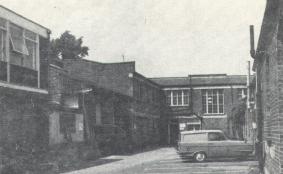
|
The top photograph is from the
May 1975 Development Plan and the bottom one from
Ashwin 1982, p.42
May 1961 National Council for Diplomas in Art and Design (Summerson Council) - First Report published 1964. Lisa Tickner was 16 in 1961 when she became a Fine Art student at Hornsey College of Art Starting on the intermediate course (the first two years of the four year National Diploma in Design), she switched to the pre-diploma course (the foundation year for the new Diploma in Art and Design) in 1962. She was one of the first cohorts of the Diploma in Art and Design (DipAd) degree [?] students, graduating in 1966 - (Lisa Tickner 2008 p.7 and the Association of Art Historians ). |
1961 Ripaults had 1,300 employees engaged in the manufacture of electric cables, motor equipment and accessories, covering lighting cables, starter cables, ignition cables, battery cables, cycle dynamo leads, tools for stripping and cutting cables, cable storage equipment, motor bonnet fasteners, terminals and plastic cable clips. (Grace's Guide British Industrial History)
1961 AEI's Valve and Cathode Ray Tube division, much of which was based at Ponders End, amalgamated with Thorn Electrical Industries, with Thorn taking 51% of the shareholding. The ownership of the Ponders End site was thus split for the first time, with Thorn taking control of some departments and the balance remaining with AEI. (Lamptech)
|
Wednesday 27.9.1961. 10am meeting in Dr Brosan's room. Present: Mr
Lawrence, H.M.I.,
Dr Brosan, Miss Butters. Mr McCrae, Mr Hoffman [Principal
Tottenham Technical College]. [From the Architect's Department: Mr Holden,
Mr Newman and Mr Southgate. Mr Smith [Isleworth Polytechnic]
Enfield Enfield Technical College Extensions: The Ministry in their letter of the 28th July had approved the schedule of Accommodation subject to amendment, and had allocated £100,000 to the project. This limited allocation would provide some 20,000 square feet of new accommodation in the first instance. Mr McCrae indicated that the County Architect should prepare a scheme having regard to the following priorities:
Chemistry laboratories
Reference was made to the points raised by the Ministry in the final paragraph their letter of the 28th July in regard to dining facilities and the provision of Common Room facilities for teaching staff. No useful purpose would be served by endeavouring to seek Ministerial approval to an increase in the limited administration and communal provision. In these circumstances, it was, therefore, agreed that: 1. The County architect should be asked to site the two classrooms in the refectory block adjacent to the staff and students dining room. This would provide a means of extending the dining facilities at some future date. 2. That in considering the adaptations which must follow completion of the new extension, the provision of staff common room facilities would be taken into account. Mr Newman and Mr Southgate undertook to visit the College to discuss the scheme in greater detail with Mr McCrae and to prepare an outline sketch plan for consideration. Mr Southgate and Mr McCrae withdrew from the meeting.
The fortunes of chemistry at Enfield were, I believe, related to the fortunes of the Ponders End gas industry. In 1961, when the new chemistry laboratories were planned, this was still thriving. I believe the Roberts Building was originally planned as the new laboratories. Chemistry laboratories before 1967 were in the west wing of Broadbent (right of the refectory block). When displaced by the computer, is suspect they were relocated to the Swan Annexe or McCrae Some collective memory of the pressures above appears in the following passage from (The New Polytechnics p.154) "For much of their time, even in new buildings ... teachers and students work in squalid conditions though often surrounded by ultra-modern machinery. The college may have an electronic computer valued at £50,000, or possibly more, but the library has no vacant seats and many vacant shelves; the electron microscope is used occasionally but the students queue for twenty minutes to get a cup of tea; the college entertains an international conference on metrology but the lavatories won't flush. Some of the teaching is very good and some very bad."
|
| 1961 Jock Young met Steven Box (1937-1987), lecturer in Sociology at Regent Street Polytechnic, on a CND demonstration. Jock was studying biochemistry at the time but moved to sociology in 1962 He graduated BSc Sociology (London School of Economics) in 1965 and began teaching at Enfield College of Technology in 1966. See 1971 - 1973 - historical approach - 1984 - 1991 Sociologists |
1961 The Ministry of Education appointed an advisory subcommittee on a higher award in business studies under the chairmanship of Mr. W. F. Crick. This reported in July 1964: A higher award in business studies: report of the advisory subcommittee on a higher award in business studies (Ministry of Education. London. HMSO. 1964)
19.12.1961 "Government Plan for 34 London Boroughs". The Times. A White Paper in November had suggested that the proposed abolition of Middlesex County Council would not be followed by the new Greater London Council taking over strategic planning for education. Instead education would be a borough-level function in most parts of the capital, with a single authority for central London. George Brosan's move from Middlesex to Enfield took place in these circumstances. See 1962/1963 and April 1965
1961 The National Institute for Social Work was set up in 1961, following the proposals in the report of the Ministry of Health Working Party on Social Workers in the Health and Welfare Services (the Younghusband Committee) in 1959. It operated throughout the UK and internationally. The Institute was wound up in 2003. The Certificate in Social Work (CSW) was issued by the Council for Training in Social Work from 1962 to 1971.
1961 Enfield Technical College Entertainments Association presented: "Desert Song" (Easter?) and "Aladdin" (Christmas)
1962 "Hendon Technical College has been renamed and in future will be known as Hendon College of Technology" [If Twickenham, Hendon and Enfield Technical Colleges were all converted to Colleges of Technology in the summer of 1962, this would have provided Middlesex with a College of Technology in its south-west, north west and north east]
See Social Science Dictionary:
technology
|
2.3.1962 Letter in archives from C.E. Gurr to E. Pascal, Esq., M.A., Clerk to the Governing Body, Enfield Technical College. Copy to Mr. McCrae, Enfield Technical College. (R.McCrae was Principal)
May? 1962
Roderick McCrae died. His death was recorded in Newcastle upon
Tyne in the June quarter of 1962. He was 61 years old.
29.6.1962 Letter from C.E. Gurr to W.T. Pratt, Esq., B.Sc. (Eng.), Acting
Principal, Enfield Technical College. Stanley Millward said that Mr
Pratt was only meant to be a relief between Principals.
W.T. Pratt was Acting Principal between McCrae and Brosan and became (at
some time
before 1964) the vice-Principal. Known as "Bill Pratt" in some
late 60s literature. William Thomas Pratt, author of Worked examples in
electrotechnology (first edition 1944) and Worked Examples in
Electrical Engineering had the same qualifications. (B.Sc. (Eng.),
D.I.C., A.C.G.I., M.I.E.E.). I believe Bill Pratt was succeded as Vice
Principal by John Osborne
Moss about
1970.
The College was designated Enfield College of Technology by the
Ministry of Education in 1962
Between 1962 and 1970, George Brosan and Eric Robinson engineered the rapid expansion of the social sciences at Enfield College of Technology. Middlesex Higher Education Advisory Centre. In June 1962 a group of Middlesex colleges banded together to provide advice on the possibility of obtaining higher education in establishments outside universities. They were impelled to this by the large number of qualified students who were failing to gain university places and by the widespread ignorance of the facilities offered by colleges of technology and other colleges. The Centre was administered from Enfield College and in the three months from June to September 1963, over 640 individual enquiries were dealt with and about 20 per cent of the enquiries were found places in degree and degree-equivalent courses. As a result of this experience, the Centre has been established as a permanent service of the County Council. It is administered at Enfield and draws on the experience of the staffs of Ealing Technical College, Enfield, Hendon and Twickenham Colleges of Technology, Hornsey College of Art and Trent Park Teachers Training College. [1964-1965 Prospectus p.40.] |
29.3.1962 Education Act 1962 required Local Education Authorities to provide grants for living costs and tuition fees to students resident in their area for full-time first degree courses, for teacher training, and for courses leading to the Diploma in Higher Education (Dip HE) and the Higher National Diploma (HND).
|
In the early spring of 1962
"little Miss J" was 16. Miss J. was the
youngest student ever to be accepted to study for a degree at the
Regent Street Polytechnic. At this stage,
Friedrich Engels'
The Holy Family began to
play its part in her intellectual development. In a different way, so to
did conservative American sociology:
|
| 1962 John Carr MA in Geography. Thesis on Cultural Landscapes and National Park Policy "Making of the Peakland Cultural Landscape". Undergraduate Tutor at University College London 1962-1963. Then Lecturer at Enfield. |
1962 The Ministry of Education made a contribution £126,683 to the Middlesex County Council's School Building Programme to free existing accommodation at Enfield Technical College for Further Education use. This and extensions to Ealing Technical College (contribution £215,146) were the two Middlesex major projects in further education due to be completed in 1962. (Hansard 8.6.1962)
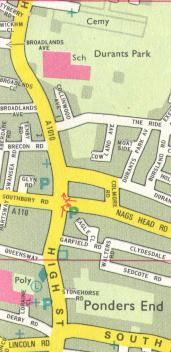
|
Ambrose Fleming School
[Enfield] The Technical School pupils moved from the Queensway site to their own premises in Ponders End, becoming the Ambrose Fleming Grammar Technical School. [Audrey Hardwick] The 1984 map on the left shows the school not far up the Hertford Road from what had (by then) become Middlesex Polytechnic. ".. the site formed part of a much larger area that was granted permission at the end of 1960 for the construction of a school, with its main entrance off Collinwood Avenue. Reference to historical information indicates that Ambrose Fleming School moved to Collinwood Avenue in 1962. By the publication of the 1967 OS map, a school building complex (indicated on the map as Ambrose Fleming School) was now indicated to the northwest of the site, whilst the site itself was indicated as part of the playing fields to the school." (source) |
"As I grew up, first I went to St. Andrews Primary School, which then, was in Cecil Road behind the Gas showroom in the Town. Later I went to Ambrose Fleming Technical Grammar School in Collinwood Avenue. The school had grown out of Enfield Technical College which my father had attended when he came to England. I even had some of the same teachers. I left there in July 1970" Chris, born 25.12.1952"The Junior Technical School ... left the Queensway site in 1962 to new buildings in nearby Collinwood Avenue, the site of the present Enfield Centre. It became the Ambrose Fleming technical grammar school for boys. Dr Ambrose Fleming, after whom the school was named, carried out research at the Ponders End Edison Swan factory which led to the diode lamp and the invention of the thermionic valve, a vital early component of radio and television. The main bias of the school was Applied Science and Technology, as well as general education, and it took boys from 11 to 18, leading to examinations in GCE O and A levels and Royal Society of Arts qualifications. The school was reorganised as a comprehensive school for boys and girls in 1967. It increased in size, and new buildings were added in Collingwood Avenue in the 1970s. Then with falling rolls due to a decline in the school age population, Ambrose Fleming closed in 1987." (Wikipedia)
See move of Hendon Secondary Technical School in 1959
Hornsey September 1962
Foundation courses set up to prepare students for the
Diploma in Art and Design
22.11.1962 London Government Bill published. On 6.12.1962
Iain Macleod described it as "perhaps the most important and probably the
most controversial of the domestic Bills of this Session." It affected so
many interests that efforts were made to have it considered as a "hybrid
bill" (public and private). The
London Government Act became law on 3.7.1963 and came
into force on
1.4.1965
|
New College of Speech and Drama (Ivy House) Ivy House, Hampstead was the home of ballerina, Anna Pavlova from 1912 to 1931.
(archives). Below is descriptive text from: 1962 The New College of Speech and Drama was established in Ivy House, which was bought for this purpose by a company limited by guarantee formed to found this independent college. It was set up by the senior staff of the former Speech and Drama Department of the Royal Academy of Music, which was run out of space for all its activities. As a non-profit making educational institution, the College was governed by a Board of Trustees. The College provided a three year course for teachers in speech and drama. Students could work towards a University of London Diploma in Dramatic Art, the LRAM (Licentiate of the Royal Academy of Music) in Speech and Drama, the LRAM in Mime, or the certificate of the International Phonetic Association. They also receive the Diploma of the New College of Speech and Drama, which was recognised by the Ministry of Education as conferring Qualified Teacher status. 1974 The College joined Middlesex Polytechnic 2002? College relocated to Trent Park June 2002 three reunions were held on three Sundays to say farewell to Ivy House, the home of drama students for nearly 40 years. They each concluded in the Old Bull and Bush. A cacophony of greetings, often overtly and highly theatrical but always sincere, were heard in Pavlova's Rehearsal Room. The weather improved each week, wet start to brilliantly bright finish. Rain certainly could not dampen the exuberant spirits of the graduates and staff of the BA in Drama & Theatre Studies/Technical Theatre Arts.
At the last reunion some meet again for the first time in over 40 years. The co-founder of the college Pauline Stuart was present. Together with the late Greta Colson, she was instrumental in raising the money to buy the site and become Middlesex University's first Head of the School of Drama. Klaus Neuberg, the former New College principal, was also in attendance. Klaus, of course, sang us a song, and Pauline was spontaneously warm and funny. I recalled our history and whilst describing the fabric reminded everyone of those people and incidents which gave us our training, shaping our lives in such a specially wonderful way and the fun we had in doing so. The second, for those from 1977 to 1989, brought together what can only be described as a festival of personalities, now involved in the entertainment industry - former Diploma in Dramatic Art and the Certificate in Stage management and Technical Theatre courses. As they so fluently reeled off the impressive resumes, I felt very proud that I had been that course leader. From all over the world they came for each one, but particularly for The New College of Speech and Drama. ...Everyone just wanted to renew old friendships, perhaps heal old wounds, wildly celebrate and take trips down memory lane The first reunion, was held for those who studied from 1990 to 2001. July 2002 The freehold of the Ivy House property was purchased by King Alfred School. |
1962 Enfield Technical College Entertainments Association presented: "Salad Days" - [Broxbourne list "The Merry Widow"] (Easter?) and "Jack and the Beanstalk" (Christmas)
Sometime in 1963 the USA firm Honeywell established a factory to make computers at Newhouse, Lanarkshire, Scotland. In 1967 it sold one to Enfield College of Technology and English Numbering Machines (both of Queensway, Enfield).
Sometime in 1963, Edward (Ted) Coates joined Enfield College of Technology as a laboratory steward for John Hamer - (Rex) who was "then Head of the Department of Education and Psychology. "Rex was a very considerate and likeable man, as Mr Stanley Milward - described him to me: 'he is a gentleman', so I found him to be" (Letter North Circular 14.5.1987, p.2)
| 1963 Dennis Hardy (BA 1962) was Planning Officer, Middlesex County Council and Greater London Council from 1963 to 1968. Then Lecturer at Enfield. See Behavioural Geography Hendon 1973 - Alternative Communities 1979 - On the margins 1985 - Dean of Business School 2000 - Closing Tottenham 2003 - Trent Park plans - Dubai - |
July 1963 Letter from George Brosan in the Production Engineer headed "Consumerism is king?" argued that today's production engineers were no more than extensions of machines whose tasks might be taken over by machines or might be computerised, if human beings were not cheaper. Status was only available to those who move into management and Brosan's law of success was that "A production engineer is judged not by what he makes, but by how other people sell what he makes". Production engineers should take up marketing, which is much more than selling. Marketing is concerned with "every aspect of the business to meet the needs of the customer". Marketing "pays your wages, not the 15% saved on floor-to-floor time" and should be "introduced at the beginning, not the end, of the product cycle".
1.10.1963 Harold Wilson on redefining socialism in terms of the scientific revolution.
|
September 1963
John Carr
started work at Enfield College. He was one of a
group of six lecturers brought in by Dr Brosan to spearhead his project of
a college education that would combine technical and social sciences. This
meant working with, and expanding,
external London degrees for some years,
whilst designing the internal degrees that became the BA Social Science and
the BA General degrees. The project was eventually written up as The
Enfield Experiment.
Eric Robinson Cadre 5.5.1970: "Much of the leadership in developing new degree courses at Enfield was shouldered by people who had only recently graduated themselves. With extraordinary commitment and solidarity between 1963 and 1967 a group of them took the lead in developing and implementing new ideas about undergraduate education." Eric Robinson said that, as far as he knew, this was the first time that people who had just graduated were put in control of courses and given the opportunity to create new ones. "I wanted a tutorial system of teaching.... I did not realise... that an effective tutorial system depends on establishing a library and tutorial room on a scale that is rarely dreamed of in the technical college world. Our success in expanding the library and in obtaining first the huts and then the new building still astonishes and even mystifies many technical college people." "The initiative on these things came from the young staff. ... Their demands culminated in favourable decisions only after appeals had gone right to the top of the department of Education and Science. Until they succeed our library occupied one classroom and its annual expenditure was £8,000, tutorials were held in the hall and in the corridors (and on at least one occasion in the tutor's car) because staff rooms were shared by six, eight or a dozen teachers." Alan E. Hale may have started at Enfield in the Autumn of 1963. Gerry Mellor in 2005 said Alan Hale set-up and led the Business Studies Course at Enfield from 1963 to 1973. A.E. Hale, B.Sc.(Econ) is shown as a lecturer in the Department of Mathematics in the 1964-1965 Prospectus p.15] Gerry Mealor said of him "his heart was in this period at Enfield. He was part of a groundswell of ideas, which, because of the newly established Council for National Academic Awards, facilitated the birth of higher education in the FE sector, leading to the widening of access to mature and many so-called unqualified entrants." (Gerry Mealor, Former Staff Head of Trade Union and Industrial Relations Courses 2005) (source) Alan married Diane C Golding (Di) in the spring of 1968. Both of them were regular attenders at Enfield staff reunions. Alan died in 2005. Wiliam C. Craze, who was also in the Department of Mathematics, headed the Maths for Business Course. October 1963 John Heywood (1930-)was recruited to the staff of Enfield College of Technology by George Brosan who "I had met through a common interest in the status of technicians". "Dr Brosan wanted Enfield College to become involved in education but the way teacher training institutions were regulated prevented any significant move in that direction. So he had started a division of programmed learning and he asked me to join it with the agreement that I could go to Birmingham once a week to bring that investigation to a conclusion. That I did and at the same time I learnt something about programmed learning. I did not think much of the technology and thought there would not be much of a take-up. But I also learnt that if it could be got right then it had enormous potential. Ten years later in 1975 I was able to write a report to a committee of the Irish Government on the potential of computer assisted learning for helping students in the low ability range of the spectrum (Final report of the Committee on the Form and Function of the Intermediate Certificate Examination. Dublin, Government Publications, pp 70 -73)". (source) |
|
October 1963 Robbins Report on Full Time Higher Education published.
Its recommendations included that
|
1963 Tom Wengraf BSc Sociology London School of Economics.
See Enfield 1966
December 1963 New Left Review article by Roger Murray and Tom Wengraf "The Algerian Revolution".
January-February 1964 New Left Review article by John Crutchley "Robbins and Newsom" See 1965
| Harold and AnneMarie Wolpe escaped from South Africa in 1963 and were joined by their children in London. Harold was Nuffield Foundation Sociological Scholar at the London School of Economics in 1964 and 1965 and then moved to the Univesrity of Bradford. From 1967 to 1969 AnneMarie was Research Assistant in the Unit of Yugoslav Studies at the University of Bradford. She became a Research fellow at Enfield College of Technology in 1969. See Feminism and Materialism 1978 |
1963 Enfield Technical College Entertainments Association presented: "Merry Widow" [Broxbourne list "Salad Days""] (Easter?) and "Humpty Dumpty" (Christmas)
Hornsey 1963 and the Diploma for Art and Design:
[Departments: fine art - graphic design - three dimensional design - fashion/textiles. Compare 1936/1937
4.7.1963 Questions in Parliament
"The Hornsey College of Art and Crafts was approved by the National Council for Diploma in Art and Design to offer courses leading to the Diploma in Art and Design in the fine art and graphic design areas of study. The National Council was not satisfied that the courses proposed by the college in the two remaining areas, namely three dimensional design and fashion/textiles, measured up to the exacting standards required for the new diploma." (Hansard)
"Mrs Eirene White (Flintshire East) asked the Minister of Education what steps he is taking to alleviate the position of students at colleges of art who have been taking the preliminary course for the new Diploma in Art and Design, but for more than 50 per cent. of whom no places for the diploma course will be available" (Hansard)
September 1963 Courses for Diploma in Art and Design commenced at Hornsey. See Lisa Tickner
September 1963 Brighton began to operate its Dip AD courses in Fine Art (Painting) and Graphic Design (See source) -
Ashwin's 1963 chronology annotated by Tom Nairn's building notes:
Alexandra Palace annexe opened for Fine Art. This was in The Badminton Suite, described in 1975 as "used by fine art and film and television courses". The picture of it swathed in scaffolding is from the May 1975 Development Plan.
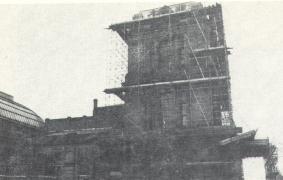
"The immense Piranesi-like hall of the Fine Art, where an endless struggle for artistic lebensraum reminiscent of Hitler's most fevered propaganda took place" (p.20). There is a 1967 photograph of this (right) on the back cover Hornsey 1968. The photograph is copyright Gerry Cranham |
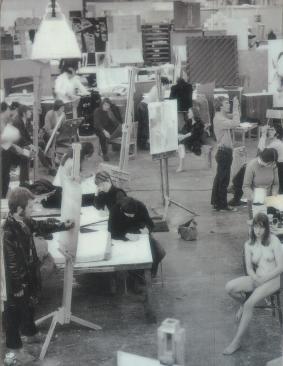
|
"Fine Art, at Alexandra Palace" supported the 1968 sit in and made proposals for course reform. (Tickner 2008, p.128, note 41)
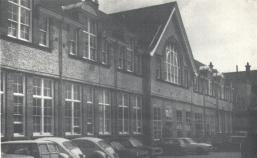
|
South Grove annexe housed part of Graphic Design. "the peeling plaster and 1880 lavatories of the under-privileged Vocational Department at South Grove" (p.22) This was a school building shared with a primary school. A nearby factory, the Jaxa Works was used for industrial, interior and environmental design from 1969. |
"Interior Design, at South Grove" and "Graphic Design at Bowes Road" supported the 1968 sit in and made proposals for course reform. (Tickner 2008, p.128, note 41)
First Report of the National Council for Diplomas in Art and Design Hornsey received approval in three areas in the first round of course reviews:
Two other areas were added in subsequent reviews
Compare with the
Hornsey 1936/1937 Prospectus
Hornsey 1964 Art Teacher Training moves from Wood Green annexe to Page Green. Page Green was a school building in Tottenham, two miles beyond South Grove and five miles from Hornsey. Page Green had been a mixed school for 10/11 to 14/15 year olds. (war time memories). Welbourne primary school, opened in 1972, began its classes in part of the school shared with the teachers' training department of Hornsey College of Art. (Victoria County History).
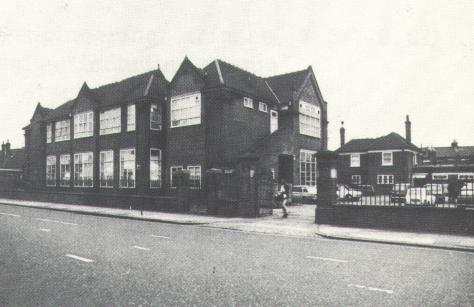
|
"the mandarin-like calm of the remote Teacher Training colony in Page Green (veterans who had come through) (Nairn, p.20) |
Peter Green was appointed Head of the post graduate Art Teacher Training Department at Hornsey College of Art in 1967. See 1987
|
Enfield and Hornsey collaborate on Engineering design
From 1964 to 1966 Engineering Design Abstracts published periodically at Enfield, Middlesex by Enfield College of Technology in conjunction with Institution of Engineering Designers and Hornsey College of Art. 1.4.1964 to 4.4.1964 Conference on the Teaching of Engineering Design at Scarborough. Proceedings were published as
Peter Jeffrey Booker mentioned. He may have edited
Peter Jeffrey Booker born 1924.
29.3.1992 to 20.3.1993 A directorship at
The Institution
of Engineering Designers.
and the again to the seaside:
|
Spring 1964? - The cherry trees in flower
{From the
1964-1965 Prospectus
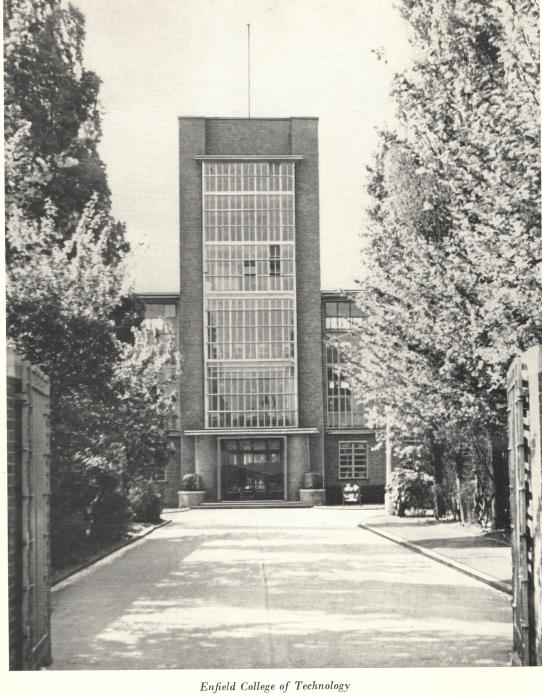
|
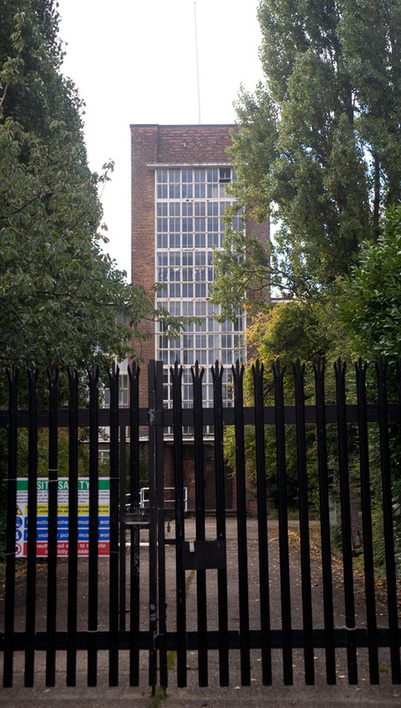
|
A picture from the same perspective after
2008
(source).
The lombardy poplars are closing in. The trees were planted after the second world war. |
The Aide-Memoire and the Prospectus that follow emphasise the college's national, or at least regional, significance. They might have been partly intended to emphasise to Enfield Borough, when it took over in the following year, that it was not inheriting a local institution.
|
1964: AIDE-MEMOIRE. PUBLIC RELATIONS. ENFIELD COLLEGE. 1964. G.S.BROSAN There is mention in this of "McCrae Shield meetings". p.7: PUBLICATIONS POLICY It is desirable that all booklets, leaflets, etc. should have a house style and as far as possible a standard form. The college could issue any or all of the following:
p.11 GETTING TO THE GRAMMAR SCHOOL Method 1: Write a Pelican. Send it to, say, 600 schools. Get their opinions as from 5th and 6th forms.
[600 would have been about 10% of all secondary schools in the United
Kingdom or about half of all Grammar Schools in England and Wales]
Method 5: Run courses, e.g. on Landec computer, for grammar schools. |
The "Landec" computer was probably a `LAN-DEC' digital educational computer from Lan-Electronics Ltd., 97 Farnham Road, Slough, Buckinghamshire. An article about this appeared in the Journal of Scientific Instruments Volume 41 Number 8 in August 1964 and its handbook, by John Roger Abrahams, was published in 1964. There was also a LAN- Electronics Analogue Computer (1965 - Photographs at Early Computers)
May 1964 Stephen Cotgrove "Sociology and the Technical Colleges" 1964 Education and Training, Volume 6 Issue 5, pp.234 - 236 (offline)
"Quite apart from the contribution which the social and behavioural sciences could make to research on problems in industry and education, there will be increasing pressures on the technical colleges to provide education and training for those rapidly growing occupations fo which the social sciences are the basic studies. Careers in social work are an obvious example here. Eleven colleges are already providing 'Younghusband' courses for careers in child care, care of physically and mentally disabled, and old people. A further five are offering courses from September 1964. Others offer courses leading to the London external Diploma in Social Studies or the external degree in Sociology. However, the latter is not intended as a training in social work, and there is room for additional new-type sociology courses under the CNAA - organised perhaps on a sandwich basis-which are more positively oriented towards careers in social work and administration."
July 1964 Council for National Academic Awards and Crick Report
27.7.1964
Royal Charter establishing the UK "Council for National Academic Awards"
The
National Council for Technological Awards was incorporated into
the Council for National Academic Awards and, in effect, established
Diploma in Technology (Dip.Tech) courses just became B.Sc
courses. Students
on Dip.Tech courses could complete them as such, or change the title to
B.Sc. Almost without exception, they changed to B.Sc. Holders of
Dip.Tech were invited to trade them in for a B.Sc.
(The New Polytechnics p.135)
July 1964 Publication of the Crick report
A Higher Award
for Business Studies
"After the publication of the government committee report
A Higher Award
for Business Studies in 1964, Brosan set up a team to develop an
honours
degree in business studies. The four-year business studies sandwich degree,
the first in Britain, in the tradition of the technical diploma sandwich-
course system, set the pattern for business studies degrees across the
country, attracting large numbers of applicants. Enfield went on to develop
other business degrees, including a degree in mathematics for business."
(DNB)
Business Studies was not available as an external London degree and was not
available as a degree in Universities. The Council for National Academic
Awards gave high priority to the development of its BA in Business Studies,
following closely the pattern of the established sandwich courses in
technology. All the courses that had started by 1968 included economics,
social science, accountancy and statistics and usually required a later
specialisation in an aspect of business studies. Marketing proved
particularly popular.
(The New Polytechnics p.139)
CNAA Degrees
"It is intended to seek approval from the Council for National Academic
Awards to offer from September 1965 a three year course leading to a
Bachalor's Degree (honours) in Marketing and Business Studies"
(1964-1965
Prospectus p.39).
The BA in Social
Science was approved by the CNAA in
1968 and started in September 1969. Subsequently a BA in
Humanities was approved. In 1974 it was envisaged that the intake on the BA
Social Science degree would increase "from about 150 to over 200 per year".
(MP1978 pp 10-11)
Summer? 1964
Brian Frank Gardner's final examination for a
Higher National
Diploma
in electrical engineering. He had to pass in every
subject: Mathematics, Electrical Engineering, Electrical Measurements,
Machines and Materials, Electronics and Engineering Physics. He did so,
with distinction in Electronics. The Diploma was awarded by the
Institution of Electrical Engineers in conjunction with the Department of
Education and Science, but also included
G. S. Brosan's signature. Brian was offered, and took up, a job
in the
semi-conductor manufacturing section of the company.
to start as soon as possible after 1.9.1964
New Scientist - 11.6.1964 - Page 699
New Scientist - 11.6.1964 - Page
699
The Governors sought graduates to teach at "degree level" in the following
subjects. "duties to start as soon as possible after 1st September"
DEPARTMENT OF ARTS AND SOCIAL SCIENCE
DEPARTMENT OF CIVIL AND MECHANICAL ENGINEERING
DEPARTMENT OF ELECTRICAL ENGINEERING
DEPARTMENT OF MATHEMATICS
DEPARTMENT OF INDUSTRIAL ENGINEERING
12) Senior lecturer to assist with development of the Management work
of the department and be capable of teaching Organisation Theory with
particular reference to the Personnel Aspects of Management.
DEPARTMENT OF SCIENCE
1) Tutor in social science subjects generally. "Experience in library work
is desirable"
2) Research Fellow in social science "to prepare project work"
DIVISION OF BUSINESS STUDIES AND MARKETING
3)Senior lecturer in Marketing. Field experience essential.
4) Lecturer in Accounting
5) Lecturer in Engineering Drawing Design.
6) Research Fellow in Civil Engineering - "interest in the application
of
digital computers to civil engineering desirable"
7) Research assistant in mechanical engineering. A post sponsored by
the Department of Scientific and Industrial Research, which was to last for
no more than three years.
8) Lecturer in Electronics... "knowledge of semiconductors is
essential"
9) Lecturer in Methods of Science within the programme of general
studies for degree and diploma students. A degree in science or engineering
is essential and research experience is desirable.
10) Principal lecturer to be responsible for developing the Management
work of the department.
11) Senior lecturer to develop research in Industrial Engineering and
be capable of supervising post-graduate students. Evidence of research
ability is required.
13) Lecturer for the Economics Unit of the college. An interest in
Mathematical Economics and Economic Theory is desirable.
14) Lecturer in Physics
15) Lecturer in Chemistry (inorganic)
|
1964
Ivor Grattan-Guinness. BA Mathematics Wadham College Oxford
1962,
Research Mathematician, EMI Electronics Ltd (Secret and Top Secret work)
1962-1963, became Assistant Lecturer Grade B. in Mathematics at Enfield
College of Technology. He completed his MSc (London) in Philosophy of
Science in 1966, his PhD the History of Mathematics in 1969, his DSc in the
History and Philosophy of Mathematics in 1978. See
1980 -
1994 -
1997 -
1964 Roy Bailey graduated (a mature student) from the University of Leicester in 1963. He began teaching at Enfield College of Technology in 1964, where he was senior tutor. He was responsible, at that time, for the development of sociology at the College "Whilst a mature student in the 1960s, Roy began exploring the English Folk Tradition, encouraged to do so by Ewan MacColl, Bert Lloyd and Martin Carthy. "Then I met Leon Rosselson and began to hear new songs written about my world, of an urban culture. Leon invited me to join his group The Three City Four. Martin was about to leave the group and had suggested to Leon he should meet me. I was about to move to London to teach in an FE College in Enfield, so I readily agreed." Robb Johnson The Living Tradition. folkmusic.net Issue 26 April/May 1998 1964 Jonathan Penrose, born 7.10.1933, a son of Lionel Penrose, BA Psychology 1956, International Master at chess 1961, Ph.D. London 1962, Research Officer International Tutor Machines Ltd 1962-1964, became Lecture Grade Two (later Senior Lecturer) at Enfield College of Technology. He was in charge of the Psychology Department. |
Monday 7.9.1964 Enfield College of Technology opened for the autumn term
Thursday 10.9.1964 - Friday 11.9.1964 - and Monday 14.9.1964 Registration of students, 9.30am to 12 noon - 2pm to 4pm - and 6.30 to 8pm
Monday 14.9.1964 to Friday 18.9.1964 Induction course for new full-time students
Monday 21.9.1964 All classes commence
9.10.1964 Meeting of the Governing Body at 7pm
| Planning and design under Labour |
|---|
15.10.1964 Labour victory at the General Election promises to advance the "new science-based industries with which our future lies" by "socialist planning" rather than "leaving the economy to look after itself" [See 1979]
Polytechnics under Labour Anthony Crosland, Secretary of State for Education and Science, envisaged a 'binary system' of autonomous universities, and a public sector of technical and other further education colleges. The policy was aimed at meeting manpower requirements of industry through upgrading the status of technical education so that it equalled that of the universities. A White Paper, 'A Plan for Polytechnics and Other Colleges' was published in 1966 (National Archives)
"Following the expansion of higher education in Britain in the decade following the election ... in 1964 a new type of degree-awarding institution came into being - the polytechnic - and it was here that the history of design saw its most significant developments. ... such institutions were formed from the amalgamation of previously free-standing colleges of art and design, colleges of technology and colleges of education and were felt ... to offer students more vocationally-oriented and occasionally rather more radical, programmes of study." (Jonathan M Woodham)
|
the Enfield College Prospectus
as far as I know, this was the only one |
The following map from the Enfield College of Technology. Prospectus 1964-1965 places the college at the centre of the local transport universe and emphasises how smoothly this relates to the national universe. In 1964 the link to the underground at Seven Sisters did not yet exist. See 1901 - Queensway - Great Cambridge Road - Southbury Station - National Enfield - Underground plans
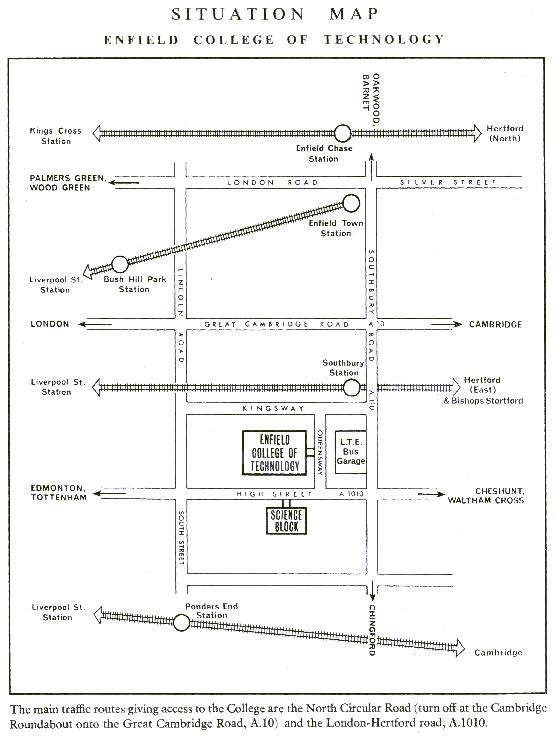
|
|
Enfield College of Technology. Prospectus 1964-1965. Middlesex
County Council Education Committee.
G.S. Brosan, T.D., Ph.D., M.I.E.E.,
M.I.Prod.E. (Principal);
W.T. Pratt, B.Sc. (Eng.), D.I.C., A.C.G.I., M.I.E.E. (Vice-Principal). Queensway, Enfield, Middlesex. HOWard 1126. Growth. Enfield College of Technology has shared in the general and rapid expansion of technological and cultural education which has been a characteristic of higher education in this country during the last two decades. It is in a rapid state of development now. Due to additional room at Tottenham Technical College and the building of new colleges at Southgate and Turnford, a very large amount of work below final degree and diploma level has been transferred from Enfield. The process is continuing and is now virtually complete. Today. The College, currently serving a population of about one million in the Lea Valley and elsewhere is housed in three buildings. The College Building and the Mechanical Engineering Block are in Queensway, and the Science Block is 400 yards distant in Ponders End. The sports field and pavilion are in World's End Lane about three miles away. A further science building, incorporating a large refectory, is in an advanced planning stage. There are some fifty laboratories in the college now; the new block will add a further twenty-seven.
Department of Pure and Applied Science
Department of Arts and Social Sciences
Department of Civil and Mechanical Engineering
Department of Electrical Engineering
Department of Industrial Engineering
Department of Mathematics
Department of Pure and Applied Science
Division of Education and Psychology
Division of Marketing and Business Studies
|
| Full-Time | Course Title |
Reference
number |
| B.Sc. (Eng) | Electrical Engineering | 1 |
| B.Sc. (Eng) | Mechanical Engineering | 2 |
| B.Sc. (Eng) | Civil Engineering | 3 |
| B.Sc. | Sociology | 5 |
| B.A. (Hons) | Sociology | 6 |
| B.A. (Hons) | Geography | 7 |
| B.A. | General | 8 |
| Higher National Diploma | Applied Physics | 11 |
| Higher National Diploma | Business Studies | 12 |
| Higher National Diploma | Chemistry | 13 |
| Higher National Diploma | Electrical Engineering | 14 |
| Higher National Diploma | Mechanical Engineering | 15 |
| Higher National Diploma |
Mechanical Engineering with
reference to Production Engineering |
16 |
| College Diploma | Civil Engineering | 17 |
| College Diploma | Gas Engineering | 18 |
| College Diploma | Mathematics for Business | 19 |
|
Post-Higher National
Certificate/Diploma |
Gas Engineering | 20 |
|
Post-Higher National
Certificate/Diploma |
Mechanical Engineering | 15 |
| Part-Time | Course Title |
Reference
number |
| Higher National Certificate | Applied Physics [also ONC] | 21 |
| Higher National Certificate | Business Studies | 22 |
| Higher National Certificate | Chemistry [also ONC] | 23 |
| Higher National Certificate | Civil Engineering | 24 |
| Higher National Certificate | Electrical Engineering | 25 |
| Higher National Certificate | Mechanical Engineering | 26 |
| Higher National Certificate | Metallurgy [also ONC] | 27 |
| Higher National Certificate | Production Engineering | 28 |
|
Post-Higher National
Certificate/Diploma |
Electricl Engineering | 25 |
| City and Guilds | Technical Teachers' Certificate | 30 |
| City and Guilds | Telecommunications Technician's Final Certificate | 31 |
| City and Guilds | Mechanical Engineering Technician's Certificate (Part 2) | 32 |
| Management and Work Study | 33 | |
| Mechanical Engineering Inspection | 34 | |
| Statistical Quality Control | 35 | |
| Post-Graduate Certificate in Education | 36 | |
| Short Courses in Education | 37 | |
| Courses in Programmed Learning | 37 | |
| Mathematics for Teachers | 38 | |
| Technological Mathematics | 38 |
|
Division of Education and Psychology
[From 1964-1965 Prospectus] Prospectus Director: J.W. Hamer, M.Sc, Dip.Ed, Dip.Psych Senior Lecturer: J. Heywood, Sen.MIEEE, FRAS, FCP Lecturer: D.B.A. Brasier-Creagh, B.Sc Associate Lecturer: S.K. Manstead, Ph.D., D.Phil Laboratory Assistant: E.A. Coates - The Division of Education and Psychology, as its title indicates, functions in two distinct but related fields of activity. Within these two fields the division operates in three different directions, those comprising courses in education, acting as a service division for courses in other departments of the College and directing research in education. Courses in teacher-training are run, mainly on a part-time basis, to prepare students for a variety of professional qualifications in education. Short series of lectures are also run by the division on a number of topics of educational interest. In particular, the division acts as a centre for Programmed Learning and runs courses on the subject and specifically on Programme Writing. The division is particularly well-equipped for this purpose having a Teaching Machine Laboratory with a wide range of equipment ranging from simple linear machines to a "car simulator". The Division also provides courses in psychology for students in other departments of the College such as students following the B.A. Course. Educational research is a particularly strong feature of the division, one supported by the D.S.I.R., and one by the O.E.C.D. Itis proposed to run the following courses during the 1964-65 session. FULL-TIME COURSES Courses in Programmed Learning for Programme Writers These courses of eight weeks' duration are meant to meet the demands of teachers an others who wish to write their own programmes. |
|
Industry and Enfield
George A. Roberts, MIMA, MBIM (Member British Institute of Management), FIAC, FIFM from Ripaults Ltd was chair of both the Governing Body and the Department of Industrial Engineering Advisory Committee Governors as "representatives of industry and commerce:" John Horsfall Dyde, OBE 1957. [Deputy Chairman and then Chairman of the Eastern Gas Board who helped to bring North Sea natural gas to Britain. See below] John Murray Grammer BA [Born 27.10.1911 in Edmonton, lived in Southgate] C. E. Payne, BSc (Engineering), MIEE, of Ferguson Radio Corporation, who was also on the Department of Electrical Engineering Advisory Committee. [Ferguson was linked to Thorn Electrical Industries] R. B. Pearson, MIEE, MIMecE, MInstF, MBIM, of the Central Electricity Generating Board who was also on the Department of Electrical Engineering Advisory Committee. Arthur L. Stuchbery, MIMechE, MIProdE. from The Metal Box Co Ltd who was also on the Department of Industrial Engineering Advisory Committee C.T.W. Sutton, MSc (Engineering), MIEE,AMICW, AMIMechE from Enfield Standard Power Cables Ltd The Department of Civil and Mechanical Engineering Advisory Committee included B.H. [Beaumont Holiday] Broadbent (born 1901) B.Sc (Engineering), Member of the Institution of Civil Engineers (1920) from John Laing and Son Ltd, who lived in Potters Bar. W.F. Pritchard MIGasE from Eastern Gas Board The Department of Industrial Engineering Advisory Committee also included H. [Hans] Bud from English Numbering Machines J.W.F. Golley from Belling and Lee Ltd |
December 1964 Thorn made a succesful take over bid for the whole of AEI's lampmaking operations, taking at once a 65% stake in AEI Lamp and Lighting Company, including the final part of Ponders End, the Lamp Works. A new holding company, British Lighting Industries was formed under Thorn, to fully integrate each of the different lampmaking companies that had fallen under its control in recent years. (Lamptech)
28.12.1964 to 2.1.1965 Having presented "Carousal" as their spring 1964 production, Enfield Technical College Entertainments Association presented: "Cinderella" as their Christmas pantomime
31.1.1964 Closing date for applications for Approval of Candidature at B.A. (General), B.A. (Sociology) and B.Sc (Sociology) examinations.
1964 Start of Geography degrees at Hendon College of Technology. [The class that graduated in 1969 was "the 3rd intake into the Geography degree which therefore started in 1964". (Email from Peter Williams 25.11.2012)
4.1.1965 Start of the spring term at Enfield. The Governing Body met at 7pm on 8.1.1965
7.2.1965 Closing date for late applications for Approval of Candidature at B.Sc (Eng) examinations Parts 1, 2, and 3.
24.2.1965 Closing date for entry for City and Guilds of London Institute Examinations.
7.3.1965 Closing date for submission of entry forms to London University for B.Sc (Eng) examinations Parts 1, 2, and 3.
13.3.1965 Closing date for entry for Higher National Certificate and Endoresement Examinations.
23.3.1965 Examinations for Diploma Courses commence
March 1965 John W. Hamer "Enfield College of Technology survey of the use of programmed instruction in the county of Middlesex during the session 1963-64." Report No. 1, March 1965.
1.4.1965: The 1963 London Government Act came into force. Middlesex County Council ceased to be and the new Borough of Enfield took over responsibility for Enfield College of Technology and Trent Park (?). The new Borough of Haringey took over responsibility for Hornsey and the new Borough of Barnet for Hendon.
7.4.1965 [Enfield] The McCrae Shield Athletics Meeting
9.4.1965 Meeting of the [Enfield] Governing Body 7.pm. Spring term ends.
27.4.1965 to 1.5.1965 Enfield College of Technology Entertainments Association presented The New Moon as its Spring production.
About 1965 Stanley
Millward came back (for five years) to take over an ex-Trent
Park course about 1965. Although the colleges were not linked formally,
there were informal links between All Saints, Trent Park, Enfield and
Hendon. Other people Stanley Millward mentioned: Edward Cutler who taught
technical drawing and Jonathan Penrose
who was in charge of the Psychology
Department and was British Chess Champion for 11 years.
1965
Peggy Bullock started working at Enfield college. [although she
said she thought she started a few months after
John Carr]. Her husband,
Alan Bullock, was a lecturer here. She worked in Admissions and
Examinations, with the Academic Registrar.
October 1965 First students at the new University of Kent at
Canterbury. At some time
Steven Box moved here from the
Regent Street Polytechnic
Nick Wright went to
Hornsey College of Art in 1965 to study graphic design
and typography. He became Secretary of the Hornsey College of Art Student
Union in 1966 and President in 1967. In 1969 following the student
occupation of the college the authorities obtained a High Court injunction
preventing him from entering the premises. Fifteen years later he returned
to Middlesex Polytechnic and completed his degree before taking an MA in
Art History at Sussex University.
|
1965 Ilona Phombeah (Sometime MA, Oxon, Msc, London School of
Economics) started teaching at Enfield College of Technology. See
CNNA -
David Levy -
Man and Society -
Society, History, Environment
18.3.1989
1965 John Crutchley, BSc (London), a LSE graduate, previously extra mural lecturer, began working as a Sociology teacher at Enfield College of Technology [Much of information below based on who John said started working at the same time] Stan Cohen, another LSE graduate, started teaching Sociology at Enfield. Mike Harrison (from Leicester) began working as a Sociology teacher at Enfield College of Technology [According to John Mike Harrison was brought in by Roy Bailey and (later) Geoff Dench and David Levy were also brought in by Roy Bailey. 1965 Alfred J. Holt, (Alf Holt) BA (Philosophy) 1962, became also BA (Sociology). He became Lecturer in 1965, later Senior Lecturer and Principal lecturer at Enfield College of Technology and Head of the Faculty of Social Science and Dean of Social Science. He may have left in the early 1980s (between 1979 and 1984)
|
| Ken Plummer: Stan Cohen was my first teacher and inspiration in sociology. He taught me social psychology and the sociology of deviance as a student at Enfield College in 1965 and 1966 - and he showed me what a non pompous intellectual life could look like. His ideas inspired me as I turned to 'homosexuality' - as it was then - as a personal area for my own understanding and research. He supported me in following a PhD; and encouraged me to apply to Essex University for a job in 1974... Meeting Stan was probably the single most influential shaper of my academic life. |
1965 Enfield Technical College Entertainments Association presented Red Riding Hood as its Christmas pantomime.
1966-1967 The Ponders End lampmaking division was closed and the work absorbed by Thorn's factories. Shortly afterwards the Valve and CRT division met a similar fate, shifting into Thorn's Mullard tube works at Brimsdown. By 1969 all production had ceased at Ponders End, and the site was demolished in 1970. (Lamptech)
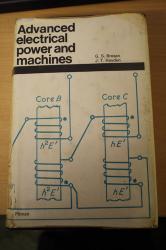 " "
|
Advanced Electrical Power and
Machines by
George Brosan, TD,
PhD, MIEE, MIProdE - Principal, Enfield College of Technology and
and John Thomas Hayden, BSc (Eng), DIC, AMIMechE, AMIEE - Department of
Electrical and Control Engineering, The College of Aeronautics, Cranfield.
Preface dated March 1965. Book copyright 1966. Possibly not published until 1.12.1966. Brosan used diagrams for electrical engineering and social engineering. This is and Abraham's Sociology are my joint choice for the books of the year for 1966 |
Abraham's analysis belongs to the era before British sociology focused on Marx, Durkheim and Weber as "classics". It owes much to Pitirim Sorokin' efforts in Contemporary Sociological Theories (1928) to discuss a multitude of theorists by arranging them in schools of thought. The Geographical and Environmental School included Buckle and Le Play. The Organic and Evolutionary School included Spencer, Summer, Durkheim and Tonnies. The Formal School included Simmel, Bougle, Ross, Park, Burgess, Wiese and Vierkandt. The Psychological School included Tarde, Small, Giddings, Cooley, Ward, Morgan, Hobhouse, Westermarck. The Economic School included Marx, Weber and Pareto. The Anthropological School included Coulanges, Elwood, Kidd, Tylor, Frazer and Malinowski. The richness and complextity of Abraham's historical approach to sociology contines in his 1973 sociology reader. Books like this, Raymond Aron's Main Currents in Sociological Thought and Eric Roll's A History of Economic Thought give an indication of the intellectual background of social theory as it developed in the BA Social Science degree and, particularly on Society, History and Environment.
|
January 1966 The Museum of London has a Henry Grant photograph which it describes as a "Maths student in the computer centre at Enfield College of Technology in 1966. On the left is a PACE analogue computer and on the right is a hybrid computer, designed and built by students at the college" - See also another picture
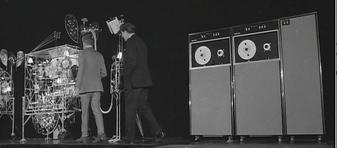
|
20.3.1966 Roland Emett invents the Emett-Honeywell Forget-Me-Not Computer. This is the one with bright lights on the left. The one on the right may be a mock-up of a real Honeywell. |
May 1966 White Paper, A Plan for Polytechnics and Other Colleges published. (See above). Recommended the designation of colleges with the most potential as regional polytechnics to form a nation-wide network for technical education. The polytechnics would be 'large and comprehensive' providers of full-time, part-time and sandwich courses of technical and vocational higher education. The aim was to reduce the number of small colleges providing full-time courses, but those already doing so were allowed to continue. (National Archives)
|
1966 First Diploma in Art and Design graduates leave
Hornsey
1966 Julian Robinson appointed Director of Fashion Studies at the Hornsey College of Art. The Penguin Book of Sewing (1974) by Julian Robinson with illustrations by Reneé Robinson says that they "first achieved fame in the early 1960s with their own fashion collections". "Seven years ago they were asked to reorganise the Fashion at Hornsey College of Art, Julian being made director of Fashion Studies and Renée teaching Fashion Design". Julian describes himself as "titular Head of the Fashion and Textile Department at Hornsey College of Art 1964- 1973" [I think 1964 is a mistake] and highlights that he taught "Wendy Dagworthy ... the current Professor of fashion at the Royal College" [A Facebook entry]. Wendy Dagworthy started in "the year of the sit-in". [1968] "Julian Robinson, Head of Fashion and Textiles, was a vociferous opponent of the sit in". Kim Howells told the Fashion and Textiles staff and students that they were "bloody fools" selling themselves down the river. (Tickner 2008, p.128, note 41) 1966 Silver Studio colection given to Hornsey College of Art. This became part of Middlesex University's Museum of Domestic Design and Architecture. The Crown Wallpaper Collection was acquired in 1989, and the Charles Hasler Collection in 1993. See Aviva Leeman "Bringing you Better Living" in 2015
|
|
1966
Julie B. Ford graduated with a BSc (Sociology)
external London degree. She taught Sociology for a time at
Regent Street Polytechinc and took her PhD (Sociology
of Education) at the University of Kent, completed in 1968 as
Social Class and the Comprehensive School. Amy Gdala
speaks of boredom being ousted as the train from London to Canterbury "as
the train shudders uncertainly over the credibility gap known as the
Medway". At some time she worked with George Homans (1910-1989), who was
visiting professor at the University of Kent in 1967. She taught Sociology
at the London School of Economics before becoming a Senior (aged 23?!)
Lecturer at
Enfield Colege of Technology in
1969.
1966 Geoff Dench, who had studied Archaeology and Anthropology at Cambridge and then for a PhD in Social Institutions at the LSE, previously (1962-) Research Assistant at the Institute of Community Studies, began working as a sociologist at Enfield College of Technology. See CNAA - 1975 on books He became Professor of Sociology at Middlesex University before rejoining the Institute as a research associate in 1992 and research fellow in 1999. 1966 Tom Wengraf began working as a sociologist at Enfield College of Technology.
|
15.10.1966 Roundhouse, Camden Town opened as an Arts venue with the launch event for International Times - (link) - In July 1968 it was the venue for the national conference of the Movement for Rethinking Art and Design Education
October 1966 Mary Moore, from Drayton Manor Grammar School, began an honours degree in English at Hendon Technical College.
1966 Enfield Technical College Entertainments Association presented The Land of Smiles and Ali Baba (Christmas)
|
London School of Economics student rising
1967 First edition of The Science of Society: An introduction to sociology by Stephen Cotgrove. Spring 1967 Student occupation of the London School of Economics. At this time, Richard Kuper, who was involved at a very high level in the protest, was already a lecturer at Enfield College of Technology. Later members of staff who may have been involved as students include Michael McKenna and John Lea. Ralph Miliband, a marxist lecturer who supported the students, was the author of Parliamentary Socialism (1961) and The State in Capitalist Society (1969), two books prominent on relevant Enfield reading lists, as were articles from his annual journal. the Socialist Register [See The Trouble at L.S.E. 1966-1967 by Harry Kidd]. See also Gautam Appa and the demonstrations of 1969. March 1967 "Mr Richard Kuper... was another of the South African emigrés, a graduate of the University of Witwatersrand and then of Cambridge, a lively and attractive intellectual, he had been a graduate student at L.S.E. since 1964, and was also a lecturer at a College of Technology. Prominent in the Socialist Society, he had come to the fore among the militants, and was in the following year to be one of the founders of the Revolutionary Socialist Student's Federation". (Kidd, H. 1969 p.94) |
Hornsey 1967 Acquisition of Silver Studio Collection.
May 1967 Plans to incorporate Hornsey College of Art into a new polytechnic by amalgamation with Hendon and Enfield colleges of technology opposed by Hornsey Governors. Hornsey administration and students opposed. Opposition reaching a peak in October 1967. (Lisa Tickner)
"Enfield, in particular was run by a pair of high powered academic sharks, public advocates of polytechnic education, and well connected politically. The Hornsey incompetents would have been eaten alive." Nick Wright 1988 (archive)
3.7.1967 to 7.7.1967 A Careers Conference at the Salvatorian College [a Catholic boys school], High Road, Harrow Weald, Middlesex "mainly for the benefit of the present Sixth Form". "The conference opened with a general talk on 'Further Education' in all its aspects given by Mr. R.H. Brousson, Vice-Principal of Hendon College of Technology, and followed by a Seminar discussing the subject in depth."
The earliest surviving planning permission record for the Enfield site is "one granted in June 1967 for the erection of a pre-fabricated building at what was then the Enfield College of Technology (LBE/67/0021)". (2012 Heritage Statement par. 2.9 Planning History). These were what we knew as the "huts".
A 1,000 full-time students at the College were taking degree and diploma courses in technological, business and arts subjects including B.Sc Engineering, B.Sc in Business Mathematics and BA Business Studies. (Journal of the Royal Statistical Society Volume 130, No. 3, 1967 Current Notes)
The
Honeywell H120
mainframe or midrange computer
26.4.1967 Official opening of the Computer Centre at Enfield College
of Technology. The computer was a "120 Model in the Series 200 range
manufactured at
Honeywell's Newhouse Lanarkshire plant". It was jointly
owned by the college and
English Numbering Machines Ltd of Enfield. The
computer will support advanced work in the business studies and technology
departments and courses for systems analysts and programmers. (Journal
of the Royal Statistical Society Volume 130, No. 3, 1967
Current Notes)
My previous information was that the Honeywell was mainly
financed by a large firm near the college [which would be English Numbering
Machines] who used it to do their payroll. In 1969/1970 Enfield College of
Technology is recorded as using a Honeywell
H120 the
approximate capital cost of which had been £99,000.
(House of Commons Debates 8.2.1971).
McDougall in his Primer of Computing (1971) says that its "most
obvious use is in the calculation of the weekly wages of a company's
employees" (p.79) "Running for half an hour, together with a girl working
for a few hours punching cards" it "can largely replace the wages office
staff". To make this economic, however, the computer would need to be in
use for other things throughout the week. (pp 82-83, with calculations).
|
The computer was set up in what had been the Chemistry laboratories and
which later became the Student office.
It and its supporting banks of tape were in a long air-conditioned room that occupied mot of the west side of Broadbent. |
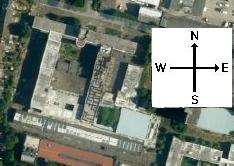
|
"As magnetic tape recording systems are delicate, the computer is kept in a special room which has its temperature and humidity controlled, and, to prevent the tape getting scratched by dust particles, the air entering the computer room is carefully filtered. Those who would master this highly expensive and complex machine must see that it is well looked after and fed on a diet of sound logic and correct data" (Holmes McDougall Primer of Computing 1971, p.6
The Honeywell H120 was a new product in December 1965. None had yet been installed and there were 170 unfulfilled orders. It was aimed at a new market of small users. (Computers and Information October 1975). The Honeywell H120 is mentioned in the history of the UDP Data Centre of Texas which "upgraded its services and equipment in 1966 with the purchase of a Honeywell H120. The machine had 4k memory, three 200 bpi tape units and a printer that was capable of printing 240 lines per minute." UDP were using it for computerised billings to telephone company customers (source) - offline.
By 1977 , Middlesex University had two computers. The new one was a DEC System- 10 computer at Hendon which "offers both batch and multi-access processing facilities to all sites" (Handbook/Diary p.42)]
John Vince (born 1941) was a computer programmer before he became Lecturer in Data Processing at Enfield. He was in charge of the Honeywell and "a rare 12" Calcomp 565 plotter". - See the plotter at work - See Catherine Mason
Vince began working in computer graphics in 1968. At Brunel University, from 1972 to 1976, he studied for a Doctor of Philosophy (PhD), writing a thesis (1975) "based on my PICASO system" on Computer Animation. He later developed another program, PRISM to enhance PICASO to use the GEMS colour image processing unit. He developed PICASO (Picture Computer Algorithms Subroutine Orientated) in Fortran "designed to enable graphic peripherals to be used with the minimum of programming effort and skill".
At Enfield Vince taught computer languages - Basic, Fortran, Cobol - and computer technology to social scientists as well as technologists and when the Polytchnic was formed in 1973 the range of his teaching increased. At Cat Hill, art students would provide him with coding sheets to run through the Enfield Computer. Amongst those he worked with was Darrell Viner
At (Bounds Green and?) Cat Hill "designed the UK's first MSc course in Computer Graphics, and developed a popular programme of short courses in computer animation for television designers." - See 1986
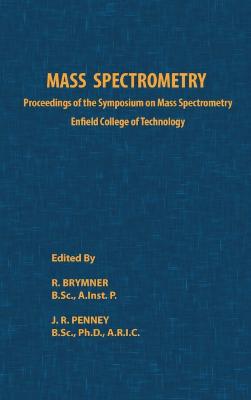
Mass Spectrometry: Proceedings of the Symposium on Mass Spectrometry, Enfield College of Technology, 5th and 6th July 1967 edited by R. Brymner and John Ronald Penney. Published London : Butterworths, 1968. ix and 275 pages: illustrated |
SESSION 3 -
CHEMICAL APPLICATIONS I - 3.1 The Use of a Quadrupole Mass Filter in the
Study of a Reacting Surface - 3.2 Mass-spectrometric Investigation of the
Formation of Di-imide by the Catalytic Decomposition of Hydrazine at Low
Pressures on Platinum - 3.3 Rearrangement Processes in the Fragmentation of
Organic Ions - 3.4 A Novel Ion in the Mass Spectra of Arylureas and Related
Compounds - 3.5 Mass Spectra of Some Substituted Cyclotetrazenoboranes -
3.6 The Decomposition of 9,1O-Diphenylanthracene Under Electron Impact -
SESSION 4 - CHEMICAL APPLICATIONS II - 4.1 Use of Multiplet Peaks in the Examination of High Molecular Weight Petroleum Fractions - 4.2 Inorganic Analysis of Spark Source Mass Spectrometry - 4.3 An Examination of Metal Chelates by Mass Spectrometry - 4.4 Data Handling and Instrumentation in the A.W.R.E. Mass Spectrometers - SYMPOSIUM IMPRESSIONS - INDEX |
Enfield 1967 to
1970 Early
postgraduate
work [Also
see below]
K J, Cornwell On 7.7.1967 a manuscript from K. Cornwell of the
Faculty of Technology, Enfield College of Technology on "The possibility of
using molten salts for thermoelectric generation" was received by
Journal of Physics D: Applied Physics. A
revised edition was accepted for publication on 16.8.1967. Later (1969) K.
Cornwell published with R. W. Dyson (Enfield College of Technology). In May
1970 (having often been tempted to give up) K J, Cornwell submitted
"Thermoelectric Generation Using Molten Salts" to the CNAA for a Ph.D. It
may have been the first CNAA Ph.D. awarded within the constituent parts of
what became Middlesex Polytechnic. It is available from
Middlesex University's Research Repository
His supervisors were D. T. Swift-Hook, Ph.D., "head of electrical research
at the Marchwood Engineering Laboratories of the Central Electricity
Generating Board", and B. J. Zaczek, M.Eng., Ph.D...
head of the fuel technology section at Enfield College. he thanked
Drs J. R. W. Warn and Dr. R. W. Dyson, both of Enfield College, for many
discussions on the electrochemical and thermodynamic aspects of
his work. "The general helpfUlness of the Enfield College Laboratory
technicians, especially Mr. J. Webster, is acknowledged. Finally
I would like to thank my wife for typing the manuscript and for
giving encouragement at times when I would have discontinued this
work."
|
1967
Michael McKenna graduated BsC Sociology from London School of Economics. He
taught Sociology in the London University extra mural department for two
years. Enfield College of Technology from
1968.
Bernard Burgoyne gained his MA in Mathematics at Cambridge and moved to the London School of Economics to take his MSc in Philosophy (1968). From 1967 to 1968 he was Research Assistant to Karl Popper. See 1968 - CNAA - 2000 - 2001 - 2011 - 2016 Enfield was reorganized in 1967 into a Faculty of Arts and a Faculty of Technology. (Victoria County History based on notes from senior tutor librarian). The Academic Head of the Faculty of Arts was Eric Robinson. 1967 Vera Derer, previously a Psychiatric Social Worker, began working as a sociologist at Enfield College of Technology. 1967 Gautam Appa, BCom Commerce, Gujarat University, India 1963 - BSc Economics, London School of Economics 1966 - MSc (Operational Research) LSE 1967, began teaching at Enfield College of Technology. (1967-1970 and 1971-1988). As a Ph.D student he was active in demonstrations at London School of Economics in 1969. (See BBC 24.1.1969 |
Hornsey September 1967 Tom Nairn started teaching at Hornsey.
|
October 1967
"There had been marches to the Wood Green Civic Centre to protest against the forcing of Hornsey into the Polytechnic, which had aroused an enthusiasm and feeling of community no one had ever before seen" (PB The Hornsey Affair 1969 p.30) "Polytechnics Action Day Monday 23rd October 1987" urges mass lobby and picket of council meeting. (Tickner, p.24) |
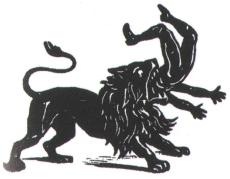
a man being swallowed by a lion was now the emblem of the campaign (Tickner, p.24) |
1967 Enfield Technical College Entertainments Association presented South Pacific and Robinson Crusoe (Christmas)
1968: Early
postgraduate work
These are (Wednesday 11.6.2014) the first item available from
Middlesex University's Research Repository
Trevor David Kennea (1968) "Changes of the sea fishing industry of southern
England since the Second World War". PhD thesis, Hendon College of
Technology. appears to have been a Ph.D for the London School of Economics
and Political Science. The library used was that of Hendon College of
Technology.
F. J. Robinson (1968)
"Digital
position control of a lathe tool". Masters
thesis, University of London. Supervised by Dr C.R. Webb, Reader in
Mechanical Engineering at Queen Mary College, London. Messrs T.S. Harrison
and Sons, Ltd,. of Heckmondwike, Yorkshire lent the lathe on which the
tests were carried out. Enfield College of Technology provided the
laboratory facilities, and assistance.
Stanley Millward
advised in the preparation of the computer programme which forms an
essential part of the analysis. G.A.H. Thomas was a co-worker on the
project. As far as I can understand,
digital code messages were fed to the lathe from tapes set up in a nearby
cabinet and the instructions were varied through a bank of switches.
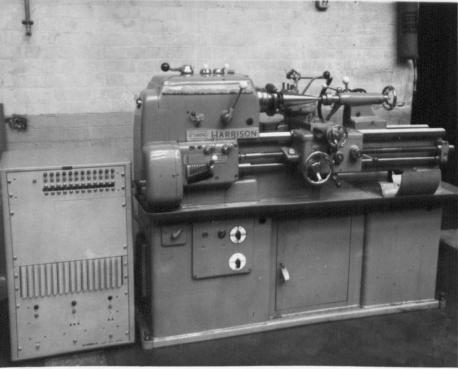
|
The Harrison L6 lathe used and the prototype control cabinet (left) |
February 1968: Anti-University started in London
Enfield
Easter 1968:
Car park behind Broadbent cleared to erect Pascal
Building, or
the Project block.
"To many this tombstone is known as is known as the project block, although
it is entered into the Councils machines as the 'Pascal building'..."
(Bits 29.1.1969
p.5)
[As the Pascal Laboratories, the Project Block was officially opened along
with the
Roberts Building on 17.3.1971.
Gertie Beckett
had an invitation to the "Official Opening of the Roberts Building and
pascal Laboratories by Mrs Thatcher, Secretary of State for Education and
Science". (Letter 4.8.1898).]
The Pascal Laboratories were designed to meet the requirements of final
year students in the engineering and civil engineering degree courses. Each
student undertakes a major project as an integral part of his final year
studies and therefore, laboratories easily adaptable in design, layout and
equipment are essential. These laboratories will accommodate 150 degree
projects. College Times 18.3.1971.
The library: In 1969 the library was at the front to the main
building, on the first floor.
The new car park An area of sand
and gravel was laid down beside
the huts to serve as the new main car park.
It had concrete blocks instead of white lines. The Tower Block was expected
to be completed early in 1970. When this happened, the car park was to be
asphalted and extended right up to the Tower Block. (Bits 29.1.1969
p.5)
May 1968: Paris student rising
"The present car park has been with us since Easter 1968; the
previous depository for Students vehicles having been a marsh behind the
main building. During the Easter holidays men were hired to drain the
water and exterminate the fauna, and in remembrance to all those cars that
were lost, the authorities have erected a suitable tombstone, bearing the
epitaph 'LIBRARY'
| Hornsey student rising | See 1967 |
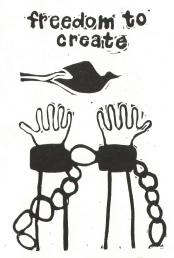
|
Freedom to Create
[Handbill produced during the sit-in] 28.5.1968 Start of six week student occupation of Hornsey College of Art. "The college became a national centre for debate about the nature of design education and its social implications... Small deputations of students travelled the length and breadth of the country, visiting local art colleges to report on events at Hornsey ad encouraging students and staff to press for reform" (Ashwin, page 45) |
The Gestetner Revolution "the Hornsey sit-in was a physical occupation first... before it was a Gestetner revolution'' (Lisa Tickner 2008 p.121) [See Roneo purchase by Ingrebourne Society in 1963 and BIT in 1968]
|
June 1968
This is my choice for the Middlesex University book of the year for 1968 |
1968
[Enfield]
The idea of "People's
Universities" was
publicised by Eric Robinson in
The New Polytechnics, a
Penguin
paperback in 1968. At about the same time, the whole side of
the main
building at Enfield was converted to a room in which
technicians maintained
a large computer at exactly the right temperature. This
computer was shared
with local industry. By the 1970s, social scientists
outnumbered engineers
and Middlesex Polytechnic (now Middlesex
University) had an
international reputation as a centre for the social sciences
and, in
particular,
criminology.
"Sooner or later this country must face a comprehensive form of education beyond school - a reform which will bring higher education out of the ivory towers and make it available to all. The shape and speed of this change to come depends on the success with which the polytechnics are established." |
The New Polytechnics acknowledgements John Isaac, George Brosan, Tom driver, Edward Britton, Tyrrell Burgess, Audrey Hardwick, Julian Ayer, Tom Evans, Kim Polk, Jim Little, Joan Robinson (his wife), Andrew Robinson (his son).
1968: Engineering "At the present time the demand from potential students for places in engineering degree and diploma courses is remarkably low - this is one of the few academic fields in which here is no shortage of places - and is the cause for national concern" (The New Polytechnics p.68)
Dialogue of the revolutions
Eric Robinson's vision "sees new, American style popular universities which will finally destroy the congenital elitism of British education. But he himself makes perfectly clear that the realisation of this mission goes against the whole natural trend of the system. How can it be realised, therefore, without a far more profound educational and social revolution than Robinson apparently envisages?
It is the revolutionaries of the art sector who have in fact launched the movement which could - amongst other things - make the polytechnic development significant and worthwhile (p.112)
|
11.6.1968 Meeting of all Hornsey staff held at Parkwood School, near the new Haringey Civic Centre at Wood Green. Chaired by Alderman Bains. Staff voted (161 to 119) for an amendment proposed by David Warren Piper to set up a joint Association of staff, students and administration. A steering committee of sixteen staff and sixteen students was set up to get the new joint Association started and a Commission of eight of each to examine the administrative and academic structure of the College and propose changes. (The Hornsey Affair pages 150-151) 3.7.1968 What the The Hornsey Affair calls the "day of the dogs" when the Governors attempted to close the college, and end the sit- in, using security guards with Alsatian dogs. (page 161 following) 5.7.1968 Hornsey Strikes Again exhibition opened at the Institute of Contemporary Art
"This is a revolution of Gestetners instead of guns, meetings instead of marches, seminars instead of riots, old movies instead of fresh massacres, cabarets instead of civil wars, documents instead of slogans, microphones instead of a mob in leather jackets" (Mike Bygrave quoted (Lisa Tickner 2008 p.31) 8.7.1968 to 10.7.1968 Movement for Rethinking Art and Design Education national conference on art/design education at the Roundhouse in Camden Town Friday 12.7.1968 "... the Hornsey College of Art and all its buildings and premises are closed until further notice. The next term will commence on a date to be announced in due courses. No person may enter the premises without the authority of the Chief Executive and Town Clerk, the Chief Education Officer or the Principal" (quoted The Hornsey Affair page 178) |
In 1977 the staff in the Enfield library were Leslie Kilbey, the senior tutor librarian; Peter Dodds and Henry Brown, the tutor librarians; and Vicki Scarlett, Laurie Greenfiedl, Mary Courcha, Joan Woolattt, Felix Ekpe and Maureen Fearn, the Assistant Librarians. Vicki was eventually promoted to senior campus librarian.
"A fearless defender of high standards of service, she was warm and approachable, always ready to help the bewildered library user." (Obituary)
|
|
1968 Bernard Burgoyne began to teach at Enfield College of Technology. 1968 Michael McKenna began to teach at Enfield College of Technology. 1968 Roger Murray, previously in Africa, began to teach at Enfield College of Technology. 1968 John Farquhar Senior Lecturer and Principal Lecturer in Economics at Enfield. Subject Head - Economics. He became Course Leader, BA Social Sciences in 1969. 1968 Dennis Hardy lecturer at Enfield. Senior Lecturer 1970-1973. Principal Lecturer 1973. |
| The BA (Social Science) was approved by the Council for National Academic Awards in 1968 [Started September 1969] with specialisations in Sociology, Economics and Social Work. In 1969, Land use was added. The degree was based on a common introductory course of one year for all students, provisional specialisations during the second year, a broadly defined vocational bias [the third year was a placement year for Sociology, Economics and Land Use students], an emphasis on public policy [Social and Economic Foundations of Public Policy was the compulsory "core" theme for all students] and an integrated approach to the study of the social sciences. (MP1978 pp 10-11) |
|
November 1968: North London Polytechnic Liaison Committee
"In an attempt to establish closer cooperation between the Unions of the proposed Polytechnic the North London Polytechnic Liaison Committee was founded in November 1968 at a meeting of the representatives from Hendon, Hornsey and Enfield. There have been regular meetings of this committee. Unfortunately, the effectiveness of his committee has been hampered by the non-attendance of representatives from certain colleges, namely Hendon and on one occasion Enfield. Hornsey are greatly at fault in that their representatives feel unable to make absolute agreements without consulting the general will - that is always the case when democracy rears its ugly head in any student affairs. Although there have been attempts to establish closer cooperation by having reciprocal union rights - his proposal never really got off the ground. There has been a lot of talk but no action. Perhaps one of the problems is that whilst there are many faults within Enfield, Enfield Union is in itself the most effective and advanced - politically and socially of the other two. The result is that there has been the feeling amongst the other colleges that the initiatives proposed by Enfield are really inspired by the desires of 'Enfield Imperialism' In a recent interview, the S.U. President Brian Churchill said that there was antipathy amongst the students at Hendon towards Enfield. He added that, whilst he felt it was unreasonable for such antipathy to exist, there was nothing much that could be done to combat it. This surely, is what the Liaison Committee should be concerning itself with. Why aren't Council meetings open to students from these colleges: visitors from Hendon have speaking but not voting rights at Enfield S.R.C. meetings. There should be co-opted members from Hendon on Enfield's Executive and vice versa. When these proposals were suggested to Brian Arbery he agreed that they were useful and added that, whilst he himself, had suggested some of them there had been no response. The tragedy of the situation is that if the students of the proposed Polytechnic were to work collectively, they would perhaps achieve what they had failed to do individually. Bits of Enfield College 29.1.1969, page 4 |
1968 Enfield Technical College Entertainments Association presented The King and I and The Queen of Hearts (Christmas)
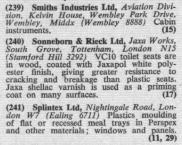
|
Hornsey 1969 Interior Design moves to Jaxa Works annexe.
The notice in a photograph is headed "Hornsey College of Art and
Design"
(Ashwin 1982 p.43).
Sonneborn and Rieck had moved their Jaxa Works to Hainault in Essex. The advert for their VC10 aircraft toilet seats (left) is clipped from Flight International 26.1.1967 |
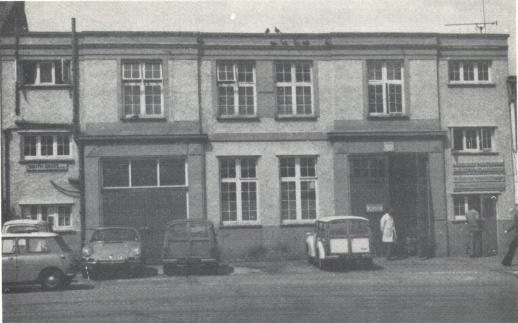
|
|
Hornsey / College
of Art and Design
Industrial. Interior Design
The punctuation makes a difference to the meaning.
Environment technology sounds too green to be true. Was anyone there who can help?
|
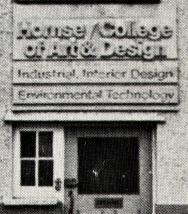
|
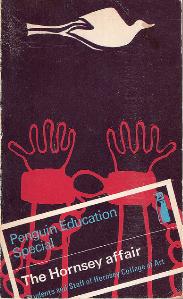
|
The Hornsey Affair: Students and staff of Hornsey College of Art
Association of Hornsey College of Art. Penguin education special.
Harmondsworth : Penguin Book Ltd, 1969. 220 pages.
"This book records the beginning of a revolution. Its subject is the meaning of a train of events which started in Hornsey College of Art in May 1968. But in November 1968, when we finished writing. It was clearer than ever that this May revolution was unfinished. It is continuing at Hornsey, and in other colleges all over the country, a ferment of renovations..." "A very full, collective account account... edited by David Page, Tom Nairn and Victoria Hamilton" Student Power footnote p.113 |
14.10.1969 and 15.10.1969 Members of the National Council for Diplomas in Art and Design visited Hornesy in a review of the Diploma in Art and Design. This was renewed for only two years.
The battle of the paint-brushes - Red for right, white for left - Have
we got something wrong? Or are we anticipating the
battle of the bridges between red (positivistic) and white
(idealistic) spiders?
LSE TODAY. ECT TOMORROW (Or words to that effect) painted in white
on the side of the MacCrea building at Enfield, [Probably in January 1969].
They were there when I arrived in September 1969 and, being a psychiatric
patient, I first wondered if ECT stood for Electro-Convulsive Therapy. I
thought LSE could have been a misspelling of LSD. The slogan remained for
several years until it was ineffectually painted over with a reddish brown
was. It eventually disappeared under ornamental ivy in the 1980s. Some of
the young lecturers starting at Enfield were active in London School of
Economics politics.
Other slogans: ADAMS=BROSAN (EVE OR A SNAKE) - CONTROL YOUR OWN
EXISTENCE - ENFIELD HAS BEEN OFFERED 1 MORE GOVERNOR THAN BRIXTON
PRISON. My account of the reddish brown paint above is incorrect. The
partially obliterating paint was applied by (short-haired) students.
Bits of Enfield 29.1.1969 has pictures of it being applied.
"Rightwing backlash begins" "Confusion over red aims" "Student majority
angry at red activities"
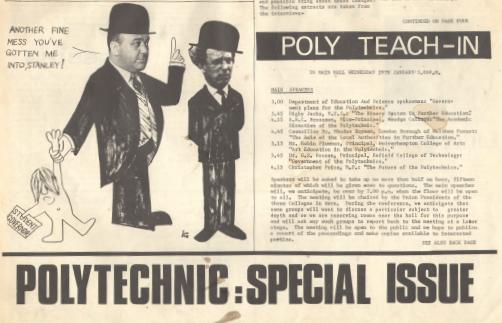
|
At the Teach In, George Brosan chose to sit near the Socialist Society.
Challenged publicly to defend his having previously torn down a Socialist
Society notice, he stood up with a beer mug in his hand, wobbled
dramatically, and said "I totally deny that I was pissed at the time". He
then sat down.
Wednesday 29.1.1969 Bits of Enfield College, special edition for the Poly Teach-In to be held in the Main Hall from 3-7pm. This includes a small part of an interview with "Dr Williams, Principal of Hendon College of Technology". At the Poly Teach-In, R.H.C. Brousson, Vice Principal, Hendon College spoke on "The Academic Direction of the Polytechnic". The edition also contained a picture and quotes Brian Churchill, President of the Students Union at Hendon College of Technology.
Andrew Roberts came to Enfield for interview on the day they had the Teach-in. I travelled from Swanage in Dorset for the interview and had no sense that Enfield was particularly a local, as distinct from a national, institution. Just as Hull University (which also offered me a place) had its local connections, so did Enfield. The sense of locality was probably much greater amongst engineering students than it was amongst arts and social sciences students.
For more about Andrew (if you must) see BASS 1969 - 17.3.1971 - David Levy 1972 - Middlesex Polytechnic - Spring 1986 - David Melville - 1991 Sociologists - Suzi Clarke - This history 1998 - Academic Freedom - the stuff of dreams - bad, but not that bad
20.1.1969 memo TW/6 Enfield College of Technology (Arts). CNNA Social Science. First Year Sociology 1969-1970. From Tom Wengraf To Bernard Burgoyne, Jeanne DeAth, Geoff Dench, Sami Daniels, John Farguahar, John Gray, John Lea, Roger Murray, Ilona Phombeah, Phil Powell, Geoff Pilling, Tony Woodiwiss, Pat Cooke.
13.2.1969 Samuel Eilon gave the Sir Joseph Swan Lecture at Enfield College of Technology on "Prescription in Management Decisions". It was published in the Journal of Management Studies Volume 6 Issue 2 in May 1969.
|
Hendon College of Technology ran Geography (BA and B.Sc) and
English (BA)
degree courses from
1964. There were 37 geography graduates in 1969.
One of them, Peter Williams, comments that the degrees "rescued
many a university reject and A level flunker from the real world". At a
2008 reunion it was found that "no one had had more than a few months
unemployment" since graduating. Graduate unemplyment may seem to be a
notable social change, but the class of 1969 commented "that one of the
biggest changes to have
occurred since the 60s was the willingness of people to use wine to dull
the senses instead of beer".
(source)
|
September 1969 Julie Ford, Ph.D, having worked for a year as an Assistant Lecturer at London School of Economics, started teaching at Enfield. In similar circumstances, Amy Gdala described herself as a "gaudy, arrogant and flamboyant performer" (Gdala 2003) p.96). Dr Ford was elegant, confident, and a prematurely accomplished teacher. She was also kind. Amy Gdala has documented her moral career over the next twenty eight years. [See Biscuits and Caryatid] |
September 1969 Start of the BA Social Science at Enfield. There was a cohort of students who started in their second year. Andrew Roberts was one of the first cohort of students who took the full (four year) course.
Bernard Burgoyne was teaching mathematics at Enfield when I arrived. He lent me his copy of Euclid.
Dr Ray Aldridge-Morris led the School of Psychology from 1969 to 1982 and from 1985 to 1987. (North Circular 10.2.1994)
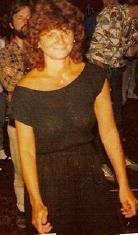
mid-1980s photo by James Swinson |
Lynne Segal taught at Enfield (then Middlesex) from 1969 to 1999. Her
specialisations in 1984 were "social psychology, myths and realities of
family life and sex and gender".
Born in Australia in 1944, she obtained a Ph.D. from the University of
Sydney in 1969 with a thesis on "Conceptual Confusion in Experimental
Psychology". She left Australia for London (Islington) and was lecturer
grade two from 1969 to 1977, and then a senior lecturer (School of
Psychology)
"As a single parent in the early 1970s... financially secure and living collectively, I was able to raise my son in what I still firmly believe were ideal conditions.." (Lynne Segal, 1983, p.25) |
|
Second year
Socio-Economic Foundations of Public Policy was the "Core theme" for all students. From a bibliography, undated, aparently before 1974: Personality and Society compulsory for sociologists.
Sociological Theory compulsory for sociologists consisted of:
Sociological Theory had replaced "Models of Society"
Above may have been Part-Time BASS
|
John Lea "The State of Society". A review of The State in Capitalist Society by Ralph Miliband Weidenfeld and Nicolson, 45s. International Socialism (1st series), No.41, December 1969/January 1970, p.42. Available at http://www.marxists.org/history/etol/newspape/isj/1969/no041/lea.htm
|
Gas engineers versus Socialist Society
In the student politics of my first year the conflicts appeared to be between students organised by the Socialist Society (of which I was a member) and students organised by the "gas-engineers". The gas engineers were, I think, honest workers on part time release to learn their trade. They perceived us as long-haired shirkers living off their taxes. But we did not get many opportunities to debate the issues as the main political activity was rushing ones forces in and out of the meeting room to try to prevent the other side's motion being put to a quorate meeting.
|
1969 Enfield Technical College Entertainments Association presented Guys and Dolls and Mother Goose (Christmas)
Hornsey 1970 At the
beginning of 1970 confidence at Hornsey was low.
16.1.1970 A meeting of representatives of the
National Council for Diplomas in Art
and Design, Haringey Council, the Hornsey governors and the
Principal. A reassuring Press Release was issued by Haringey, but
Lisa Tickner (2008, p.79) presumes that the meeting received a
report that "cats doubt on the college's academic and administrative
structure..." [and] "expressed a lack of confidence in the Principal as
'sensitive or alert to the priorities essential to raise the low morale
amongst staff and students'"
4.3.1970 - The Times - College of Art students union last
night carried a motion that if Mr
David Page, an English Literature tutor,
was not allowed to renew his contract the union would regard this as a
political and not an academic decision. Mr. Page, a coeditor of the book,
The Hornsey Affair, about the sit-in two years ago, has been a constant
critic of the college administration.
(source)
17.3.2014 Hornsey Students Union called for the college to be
blacklisted and passed a unanimous vote of no confidence in the Principal
and administration. (Tickner
2008, p.79)
1970 Built for Chemistry laboratories [No - Mechanical Engineering]
in 1955, the
McCrae Building
at Enfield
became home to the Flood Hazard Research Centre, founded by Edmund
Charles Penning-Rowsell (1946-) in 1970. . By the late 1990s,
this Centre has an international reputation for developing methods and
databases to measure the value of environmental improvements. It used
computer models to estimate the social and economic costs of flood damage.
See
The benefits of flood alleviation in 1977.
In
2000 Middlesex University was awarded its third Quaeen's
Anniversary Perize in recognition of the work of the Centre.
Edmund Penning-Rowsell was Head of the Centre until February 2010.
|
Exit
George Brosan [On the verbal account of one member of the
academic staff, I believe George Brosan left under pressure consequent on
his innovative methods. I have no means of knowing if this is true, but it
feels true!]. Brosan became director of the North East London Polytechnic,
where he stayed until his retirement in 1982. North East London Polytechnic
was formed in 1970 by the merger of Barking Regional College of Technology,
Waltham Forest Technical College and West Ham College of Technology. It
became University of East London in 1992.
15.1.1970: The new Principal (John O'Neill) to visit the college
30.1.1970:
Dr Brosan gave a farewell talk to staff
|
Jock Young "Big Business". A review of Organised Crime in America edited by Gus Tyler Ann Arbor Paperback, 25s. International Socialism, No.42, February/March 1970. Available at http://www.marxists.org/history/etol/newspape/isj/1970/no042/young.htm
March 1970 John O'Neill took over from George Brosan as Principal of Enfield College of Technology.
10.3.1970 "Dear Miss Ford": Letter from Cyril Burt "I have read your book Social Class and the Comprehensive School with great interest". There were further letters on 31.3.1970, 10.4.1970 and 16.5.1970 (Amy Gdala 2003)
|
Hendon
13.3.1970 Margaret Thatcher was well received at Hendon MARGARET, MP, HANDS OUT THE HONOURS The Hendon College of Technology degree ceremony last Friday was a very special occasion. For Mrs. Margaret Thatcher. Shadow Minister for Education and MP for North Finchley, was the guest of honour. The degree winners were "chuffed" when Mrs Thatcher told them how impressed she was with the wide range of courses that were offered at the college and, indeed, the courses that would be offered in the future. She praised the system of joining colleges to become polytechnics. And she hoped they would become "centres of excellence in their own right." Mrs Thatcher talked about what she believed were the aims of education. First, it was "to bring out a young person's talents" Secondly, "to provide sufficient reserves of skill for the economic growth of the nation," and then, "to develop a capacity for informed and balanced judgment." Finally, "to advance the frontiers of knowledge and to lead responsible lives in society." But the man who would have been most gratified by Mrs Thatcher's appraisal was, unfortunately, away ill-the principal of the college, Mr. E. Williams. His report was given by the acting principal, Mr R. H. C. Brousson, who spoke about the development of the college as a community and, in particular, the Students' Union. He said: "Our students' union executive and the student body who support them have, over the past few years, set a standard of responsible behaviour which, I feel, has been an example which others could do well to follow. "Students are represented on our governing body, the academic board, departmental boards of studies and a number of college committees. "The relations between the executive of the students' union and the staff association are excellent, he added. Among the other guests were the mayor and mayoress, Councillor and Mrs. Victor Usher, the town clerk and Mrs. Williams, Alderman Freedman and Mrs. Freedman, a number of councillors, members of the governing body, staff governors and student governors, the chief education officer, Mr. Dawkins, and guest principals from other colleges. A year later, and now the Secretary of State for Education and Science, Margaret Thatcher was not well received at Enfield |
April 1970 Joan Robinson was a speaker at Enfield Socialist Society meeting.
September 1970 Peter Kennison joined the Metropolitan Police
(London) and served in the force for 25 years and 8 months to April 1996.
In August 1997 he became a senior lecturer at
Middlesex University. He is an authority on
London police
stations
Thursday 18.6.1970 United Kingdom election. Unexpected Conservative
Victory under Edward Heath. - Margaret Thatcher, Secretary of State for
Education and Science in the new government, attracted the "maximum of
political odium" (her words) for removing free-school milk for older
children.
|
1970 Jean Cooke, London University BA Sociology (1965), MSC
Demography (1966), then research and teaching at London University, began
teaching at Enfield. From 1970 to 1976 she was primarily involved in
teaching on BA Social Science. From 1976-1980 she arranged sandwich
placements for BA Social Science and BSc Society (?) and Technology. From
1980 she mainly taught Trade Union Studies.
1970 David Levy, MA Oxford, MSc London School of Economics (both 1970) began teaching at Enfield. See 1972 - 1976 - 1981 - 1987 - 1993 |
Cat Hill September 1970 New buildings at Cat Hill opened to house Textile/Fashion and Three Dimensional Design for Hornsey College of Art and Design.
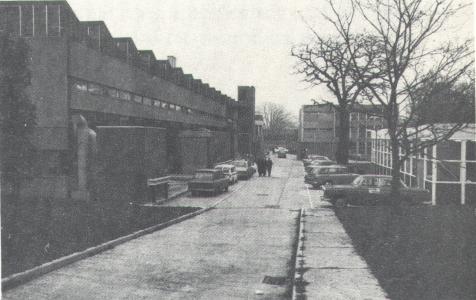
|
1970 Enfield Technical College Entertainments Association presented Chu Chin Chow and Dick Whittington (Christmas)
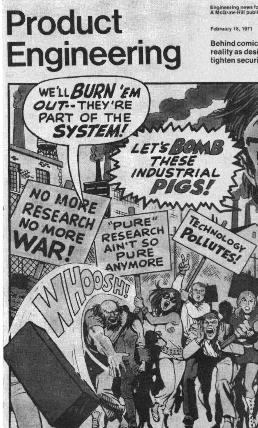
|
Going in different directions
Enfield student politics set long haired left wingers against short haired technicians. Or, in short-hand, gas-engineers against sociologists. There was none of the unity that the new polytechnic ideal was premised on. ("the fundamental purpose of the polytechnics is to attempt to refute the putative dichotomy between vocation and intellect." below) George Brosan took an American cover dated 15.2.1971 to discuss what could be done about the divide between industry and radical desire. How, he asked, can we avoid "anti-industrial feeling" arising amongst students in this country? ("The changing educational requirements of the chartered production engineer" by G.S. Brosan, Production Engineer Volume 50, Issue 6, June 1971, page 227). |
|
More going in different directions
The Drugtakers. The Social Meaning of Drug Use by Jock Young published. See the crime timeline Perhaps the problem is that we have different values? We go in different directions and that leads to conflict - And that is the way it is? "Absolutists view society as an organic entity ... each part has its place to play in an organised division of labour, and there is, over and above individual ends, the notion of the general social good" (Young, J. 1971, p.49) On the other hand "Relativists"... [see] "society as a multitude of groups each with its own ends and interests who agree and cooperate over certain issues but who conflict, sometimes drastically, over others" (Young, J. 1971, p.49) |
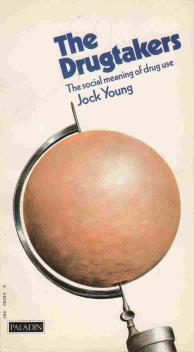
|
|
Enfield's new buildings
"In 1971, when there were 1,300 students on full-time or sandwich courses and 900 part-time students, a new tutorial block was opened and Capel Manor, Bull's Cross, acquired as a management centre." (Victoria County History based on notes from senior tutor librarian) The Pascal Laboratories were officially opened for Engineering projects at the same tims as the Roberts Buildings (Tower Block) for tutorial rooms. However, that building (Pascal) was erected during 1968. Pascal was named after Eric Pascal who was Education Officer of the Borough of Enfield from before 1937 until 1965, and clerk to the Governors of Enfield College from 1949 to 1965. He and George Roberts were clerk and chair of the Governing Body during the period that Enfield began to develop as a degree level college. Pascal Laboratories were demolished in the early 1990s and replaced by the Pascal Building
Wednesday 17.3.1971
Margaret Thatcher was not well received at
Enfield
Tuesday 20.4.1971 Trial of four students at the Civic Centre, Silver Street, Enfield 7.45pm. Andrew Roberts, Dave Bounds, Mick Gentleman and M. O'Brien were suspended for a week. It was a compromise solution between those who wanted to expel them and those who feared judicial review. |
|
Hendon's new building
"The purpose built Williams Building (engineering)" was "completed in 1971" ((May 1975 Development Plan p.51) In 1975 the "former Hendon College site" included this and the "1930s building". Between them, they housed "humanities, social science, engineering and catering courses"
|
1971 Enfield Technical College Entertainments Association presented My Fair Lady and Sleeping Beauty (Christmas). Alec Stretch was 65 on 3.4.1971 so may have retired as a lecturer about here. He continued to produce theatricals.

|
"Dr George Brosan the original director of N.E. London Polytechnic wrote in Grauniad in about 1972 (and I have reason to remember it well) that 'the fundamental purpose of the polytechnics is to attempt to refute the putative dichotomy between vocation and intellect.'" (source "Anonymous" 16.3.2011 - towards the bottom) |
1972? A survey of second homes in East Monmouthshire compiled by J.P. Carr and W.I. Morrison. Monmouthshire studies. no.7. Report ; Published Enfield : Planning Research Group, Enfield College of Technology
Edmund Charles Penning-Rowsell (1946-) Flood Hazard Research Project Progress reports 1. Enfield : Enfield College of Technology, 1972.
|
ENFIELD COLLEGE OF TECHNOLOGY - Memo. From the Principal. 15.3.1972
ASSISTANCE TO ACADEMIC REGISTRAR As a result of the recent internal advertisement I have appointed Mr J.W. Hamer, Mr G.J. Pridham and Mr F.A. Rhodes as Assistant Registrar. The three will assist Mr Blockley as a team, in general matters but, in particular, they will take College responsibility as follows: J.W. Hamer - Academic staffing Mr G.J. Pridham - Timetabling and Accommodation Mr F.A. Rhodes - Examinations Mr Hamer will continue to be responsible for the Programmed Instruction Centre and Mr Pridham will continue as Section Head of Electronics. |
David Levy was teaching at Middlesex by the autumn of 1972, when he became my (Andrew Roberts) personal tutor. He and Ilona Phombeah (from far right wing and far left perspectives) ran the Political Sociology course. David introduced me to Mosca and Pareto. Later (before the publication of Political Order) articles he shared with me developed the idea of society as the necessary strucure for human freedom.
Mike McKenna "Empiricism and its Evolution". A review of Empiricism and its Evolution, A Marxist View by George Novack. Pathfinder Press, £1.05. International Socialism (1st series), No.53, , October-December 1972, pp.41-42. Available at http://www.marxists.org/history/etol/newspape/isj/1972/no053/mckenna.htm
6.12.1972 Written Statement launching Education White Paper (A Framework for Expansion) - See George Brosan, 1973, "The making of the Eurograd"

(website) |
1972 - 1975 Lesley Davies studied for Certificate of Education in Primary School Teaching at Trent Park College of Education. It was, she says, the "pre-B.Ed era". After a varied career she is now an "Artist Geometer" "inspired by "many traditions across the world. Sacred Geometry, timeless and universal, grows from the symmetry to be found in the natural world and represents the interconnectedness of all things." |
1972-1973 Planning of the revised BA Social Science
1972 Enfield Technical College Entertainments Association presented The Pajama Game and Cinderella (Christmas)
|
Middlesex Polytechnic
1.1.1973 Middlesex Polytechnic established, combining Enfield and Hendon Colleges of Technology and the Hornsey College of Art. Raymond Rickett Director 1972?- 1991
The Polytechnic had no logo and no more fancy headings than the above (A 1981 example). The degree certificates its students received were from the Council for National Academic Awards, with its heading.
31.1.1973 First edition of North Circular. Headline was "Row
brews
over faculty boards". (Picture in North Circular. 28.1.1993)
Part of the text of an (edited) letter to North Circular from Andrew
Roberts in
February 1998
"When I came as a student, in 1969, I saw Enfield College of Technology, a
one campus college with a radical culture in which everyone could
participate by attending meetings in the main hall. When we became
Middlesex Polytechnic (and then a University), the visible unity vanished.
New students could no longer see anything unless they had telescopic eyes
that could see the many separate parts of Middlesex, on either side of the
North Circular ring road.
That is why the North Circular newspaper was created. It was to hold
the
parts of our academic body together. I went to meetings where the first
editor,
Bobby de Joia,
explained her dream of North Circular as a paper in
which all of us, staff and students, would take an active part. It was to
be the forum to replace the college hall, the debating chamber to replace
the student hustings, the show case to represent the people's university to
the world outside. This was what the new student would see when he or she
looked for the unity of the academic community that he or she had joined.
According to an
alumni source (August 2013) Graduation
ceremonies were cancelled in 1974 after the Students Union
threatened protests if university funds were used towards graduation
ceremonies. It relates this to
Margaret Thatcher's visit and to "government
cuts to the education budget". In 1975 and 1976, "no suitable venue could
be found to accommodate all of the colleges that had come together to form
Middlesex Polytechnic in 1973".
"A number of us have been getting together and having reunions over the
last five or six years and realised that we had never had a degree
ceremony," said event organiser John Thay, who completed his BA Business
Studies degree in 1975.
"We decided that we should hold our own ceremony and thankfully we
approached the Alumni Association and they came on board and helped us
organise the event."
Following several months planning, ten of the 'Ponderonians' were welcomed
back to the University by Anna Kyprianou, Pro Vice-Chancellor and Dean of
the Business School, herself an alumni of the Ponders End campus.
Middlesex was the first University in the UK to offer a
Business Studies
degree and Barbara Frost, who helped devise the programme and later went on
to be Course Leader, attended the ceremony to present John and his former
classmates with their degrees.
Former BA Social Sciences course leader Bryan Davies, now the Labour peer
Baron Davies of Oldham, was also there to hand his former students their
scrolls.
|
Art and Design The Hornsey Principal (Harold Shelton) became assistant director (research and consultancy) and acting Dean of Art and Design. "In 1975 Mr John Reid, who had a standing asociation with the College as a member of its govening body, was appointed dean of Art and Design" (Resigned 1978. Harold Shelton retired in 1978). Peter Green appointed Dean in John Reid's place. (Ashwin 1982, p. 41)
1973 Readings in Art and Design Education 1. After Hornsey. Edited by David Warren Piper.
[Enfield Campus] 1973 Gertie Beckett became Administrator of Social Science.
Ted Lewis was teaching at the Hendon College of Technology when it became part of the new Middlesex Polytechnic in 1973. Gertie Beckett 4.8.1998: "From the time of the inauguration of the Polytechnic in 1973, Ted Lewis was Assistant Dean for Geography and Planning and was based at Hendon. I am not sure when Geography was transferred from Hendon to Enfield but I have Social Science Resource Centre staffing lists for 1980/1981 which still show him as being based at Hendon."
OR: Ted Lewis was acting Dean of Social Science for two years from 1974 and then reverted to head of economics and geography.
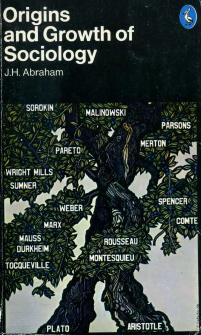
|
The cover design for J.H. Abraham's Origins and Growth of Sociology is by the Italian graphic artist Flavio Constantini (1926- ). Joseph Hayim Abraham (now in Ghana) had been the first sociologist at Enfield. This reader in sociological theory followed his Teach Yourself Sociology (1966). Many of the authors shown in the tree of sociological knowledge were part of the historical approach to sociology adopted at Enfield by tutors such as Ilona Phombeah and Jock Young |
|
1973 The
New Criminology by Ian Taylor, Paul Walton and
Jock Young, set out a
specifically social theory of deviance, developed after an analysis of
criminology since the 18th century. Particular attention was paid to the
theories of Robert King Merton and Friedrich Engels.
Book of the year for 1973 For many years (from before and after 1973) the only undergraduate teaching of Criminology at Enfield was a second year BASS option on Deviant Behaviour which followed the plan for this book, as it was written, and continued with the same syllabus afterwards. In the classes I attended, Jock Young would read out extracts from his drafts as the lecture. |
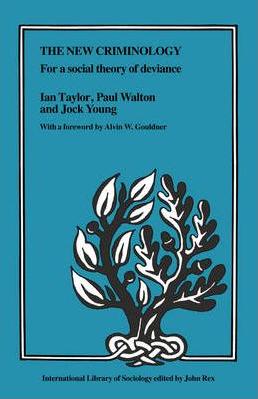
|
Criminology: See 1973 - MA Deviancy and Social Policy - Centre for Criminology 1986 - 1998 [Hello Criminology - Goodbye Sociology] -
21.3.1973 Symposium on "Advances in Behavioural Geography" at the
Middlesex Polytechnic, Hendon. Listed by Dennis Hardy as "Hendon College of
Technology". Dennis presented a paper on "Recreational Space and Social
Planning". Ronald John Johnston (born 30.3.1941), Reader Department of
Geography, University of Canterbury presented a paper on "Mental Maps: An
Assessment". Peter Michael Townroe (Centre for Urban and Regional Studies,
University of Birmingham) presented a paper
on "Industrial location search behaviour and regional development" (14
leaves).
September 1973 Andrew Roberts thinks this was the start of the
MA Deviancy and Social Policy, but David Porteus believes it started in
1972.
"it was the first post-graduate degree to be taught outside a university
anywhere in the country" - "In
1986 the MA Deviancy and Social Policy was renamed MA
Criminology"
(Mulholland and Porteus)
1973
Enfield Technical College
Entertainments Association
presented Half a Sixpence - Something's Gonna Happen -
and Aladdin (Christmas)
1974
John Rex's
Approaches to Sociology. An
Introduction to
Major Trends in British Sociology contains contributions
from twelve academics, eleven connected to a "university" and one (Jock
Young) to a "polytechnic". The universities are
Birmingham, Edinburgh,
Kent,
Leicester, London (including
LSE), Oxford, Warwick and York,
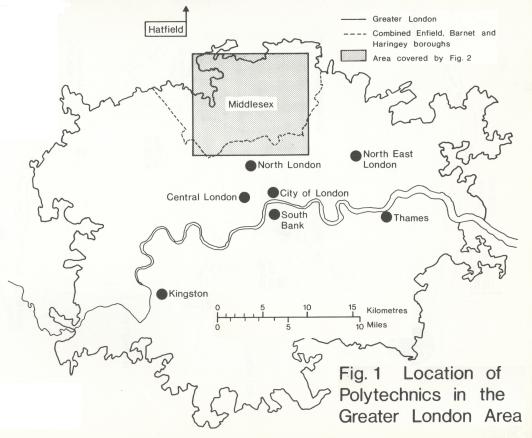
|
1.9.1974 Trent Park College incorporated into Middlesex Polytechnic.
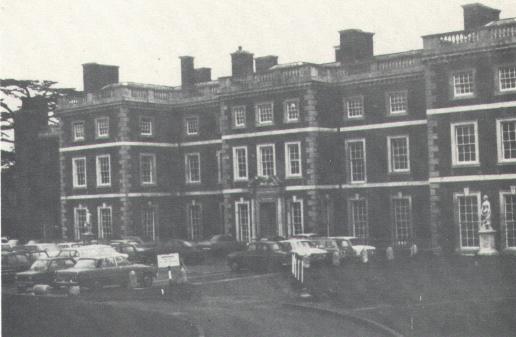
|
October 1974 Appointment of the working group that produced the May 1975 Development Plan
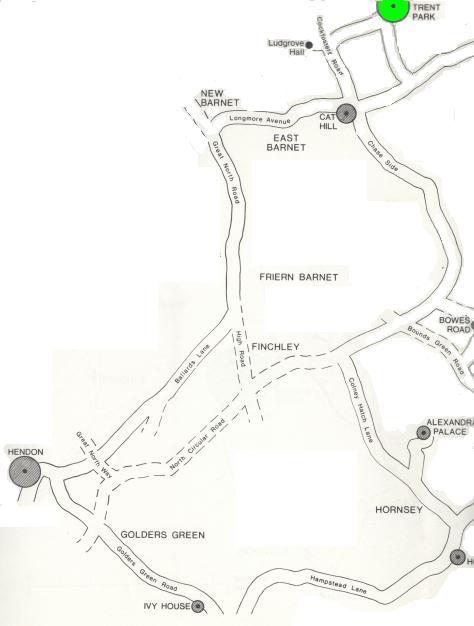
|
Poly south east of Trent Park
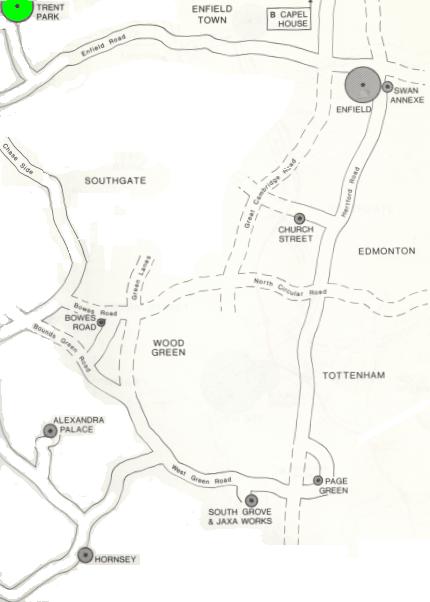
|
Middlesex Polytechnic Sites in alphabetical order:
Alexandra Palace The Badmington Suite, used by Fine Art
and Film and
Television courses, is located in the southwest wing. The courses are
scheduled to move to new accommodation by
1977. [Lease expires 1977]
47 Bowes Road "A small, isolated site housing the three
Graphic
Design courses" ... to move to Cat Hill in 1977.
Capel House A Georgian Mansion used for short courses in
Business
and Management.
Cat Hill (Phase 1).
Church Street Short-term accommodation housing some
central
Polytechnic functions including Communications and Admissions.
17 South Grove
(Jaxa Works)
South Grove "Accommodation shared with a primary school,
currently
housing four-year Graphic Design courses... scheduled to move to Cat Hill
in 1977.
Page Green
School accommodation housing postgraduate Art Teacher
training and in-service teachers' courses. The work here is expected to
move to Trent Park.
Art and design 1974. From 1.9.1974 art and design students
enrolled for a Bachelor of Arts degree with honours through the
Council for National Academic Awards instead of
Diploma in Art and Design.
The National Council for Diplomas in Art and Design and the Council for
National Academic Awards merged.
(Design Journal 1974)
BA Social Science revised
1974
[Enfield Campus] The first resubmission of the BA Social
Science (BASS)
(in
1974) saw a number of changes. A Psychology specialisation was introduced,
and with five possible specialisations a large intake was proposed. To make
this more manageable, the course was split into two "branches" - [etc] The
initial phase of the course - interdisciplinary and preparatory - was
separated out as a general Phase 1 for all students, lasting two terms
[etc]
September 1974? Start of the revised BA Social Science. This
included a new foundation course for all students called "Man and Society".
The course was apapted, and changed its name to
"Society, History and
Environment (SHE)" in 1980. It eventually became "History of
Social Ideas".
Accomodation "in use" figures for 1.4.1975. Table 2, page 23
2,000 square meters of accommodation.
700 square meters of
accommodation
800 square meters of accommodation
5,600 square meters of accommodation
3,400 square meters of accommodation
The largest
site. 21,000 square meters of accommodation including the Swan Annexe.
900 square meters of accommodation
1,900 square meters of accommodation
17,800 square meters of accommodation.
15,100
square meters of accommodation.
1,500 square meters of accommodation
1,100 square meters of accommodation
|
Original Aims of "Man and Society"
1) To provide a pre-disciplinary introduction to the development of
issues in various social science disciplines, with reference to Britain,
France and Germany in the period from the Enlightenment to the early 20th
century.
|
1974 Enfield Technical College Entertainments Association presented Encore ETCEA and Babes in the Wood (Christmas)
Paradigms and FairyTales is a contender for my Middlesex University
book
of all
times and
Picaso: a computer language for art and design by
John Vince is my thesis of the year for 1975
Paradigms and Fairy Tales by
Julienne
Ford used the idea that
theories are like fairy tales ... The following people did "their damndest"
to destroy her faith in the credibility of her own ideas: Peter Blau,
Steven Box,
Bernard Burgoyne (who also corrected some of her sums and
appears as an alchmist in the first picture), Aaron Cicourel, David Cowell,
Len Doyle,
Jeff Evans, Sunshine
Ford (aged?), George Homans, Michael Lane, John Offord, Ray Pahl, Jonathan
Powers,
Jock Young "and the window cleaner whose name is Richard"
1975
Geoff Dench
Maltese in London

|
"I dropped mathematics at 12, through some freak of the syllabus. And that, effectively though I did not appreciate it at the time, closed most careers and half of culture to me forever. I cannot deny that I dropped maths with a sigh of relief, for I had always loathed it, always felt uncomprehending even while getting tolerable marks, didn't like the subjects I wasn't good at, and had no notion of this subject's appeal or significance. The reason I imagine, was that, like most girls, I had been badly taught from the beginning: I am not really as innumerate as I pretend, and suspect there is little wrong with the basic equipment. But I shall never know" (Margaret Drabble. The Guardian 5.9.1975. Quoted as the opening words of the Mathematics Diagnostic and Developmental Booklet in 1977.) |
Picaso: a computer language for art and design available online. See above.
|
Bounds Green
"Bounds Green: Large, new warehouse/office accomodation acquired in April 1975. The site, expected to accomdate some 1,200 students, will undergo phased adaptation to house engineering and design work among other disciplines" (May 1975 Development Plan p.45) 1975-1985 Bounds Green Campus created for Design and Engineering in several stages: 20,000 square meters... including library, restaurant, sports hall, lecture theatres, general teaching and administrative accommodation and one of London's largest indoor streets. Architect: Charles Thomson of Studio 54 Archtecture. (source) Site history 1910 Glassworks established on the site of the former Bounds Green Farm. This became the Standard Bottle Company Limited (established in 1836) in 1926. [Site north of Cline Road, Bounds Green] (London Borough of Haringey Contaminated Land Strategy citing Wood Green Past by Albert Pinching, Historical Publications, 2000) It was destroyed by fire and closed in 1971. The Standard Bottle Company (which used the site until the fire) had been acquired by Heenan Beddow in 1970. (Victoria County History). The company had been making "substantial trading losses". Under the new owners the company in 1971 was "trading profitably", but "the return on capital employed does not justify the continuing operation of the plant" (Company statement quoted by Red Mole Red Mole 20.10.1971 makes no mention of a fire. On 6.10.1971 the "men" working for the company were told that 250 of them would be made redundant from 22.10.1971 and the remaining 50, retained as skeleton staff, by the new year (1972). The factory will be replaced by warehouses. The new Middlesex Polytechnic acquired the site for its engineering and design teaching in April 1975 The first part of the Bounds Green Campus was established "in a concrete warehouse" by Rock Townsend 1977-1981. "This was to give a high-tech factory image by recladding in sheet steel, with much colourful pipework exposed in an open-plan interior." (Edith's Streets - London Local History) 1977 Handbook/Diary suggests that the administrative accommodation had been opened as most of the second tier of senior administrative staff are based at Bounds Green (the top tier were at Trent Park). The Art and Design "Resource Centre" (Dean: John Reid) was mostly at Bounds Green (Peter Green at Hornsey). The Dean of Engineering Science and Mathematics (John Osborne-Moss and two assistants were at Bounds Green, but the other Resource Centre members listed were at Enfield. The site manager was Ron Grisley (Level 4). Rooms for booking were limited compared to other sites. A conference room seated 50. Room 3.1 seated 25 and was to be fitted with teleconference facilities and there "are also four rooms seating up to 10". (p.34). There was no library. A remote batch terminal to the Hendon DEC System-10 was planned. Although the computers were at Hendon, "Peter Hammersley, based at Bounds Green, is the head of computing services" (p.42) [By 1985, the DEC System-10 had moved to Bounds Green]. Some workshops had opened: "Art and design and engineering workshops provide facilities for prototype model making; fibreglass, timber, plasterwork, glazing, photography, in addition to electrical, electronic and mechanical engineering laboratories and drawing offices" (p.43) A "temporary catering service" was located in "bay four". The Students Union did not have a presence at Bounds Green. 9.9.1980 Peter Hammersley, head of computer services at Middlesex Polytechnic, gave a "wide ranging talk covering the general development of microprocessors and the increasing role of micro-electronics in updating production and commercial practices" to The North London Branch of "Institute of Management Services," 1982 Data Communications System linking all major sites to Bounds Green initially installed using a Case DCX asynchronous network. This lasted until the early 1990s.
1985/1986 Two IBM4381 computers installed at Bounds Green to replace
the DEC-10. [One was for academic use and the other included
administration]. For up to a year, the two systems ran in parallel while
the
workload from the DEC 10 was transferred.
VAX (after 1985)
1985 Bounds Green
Campus completed.
|
May 1975 Development Plan for the Middlesex Polytechnic
The Department of Education and Science had requested a plan from each
polytechnic dealing with the academic, physical and other aspects of its
development. The two hundred page plan for Middlesex was for submission by
the Joint Education committee of the London Boroughs of Barnet, Enfield
and Haringey "which carry local responsibility for the provision of
resources" (Preamble). A working party, chaired by
Alf Holt, had been
established in
October 1974 and had met weekly or more as necessary. Other
members included [Ian?] J.C. Berry [BSc Eng CEng MIMechE], Principal
Lecturer, Engineering; H.F.
Dickie, Assistant Dean, Education and Performing Arts; Peter Green,
Assistant Dean, Art and Design [a former Head of the Teacher Training
Department of
Hornsey College of Art]; D. Mitcheson, Principal Lecturer,
Accounting; and
Jonathan Powers, Principal Lecturer, Philosophy.
1975 Piccadilly line plan
Three plans from underground
Whilst looking at the Polytechnic from the top (Trent Park), it was
important to look at from underground. How would people get from site to
site? The 1975 Development Plan argued that radial routes should
replace orbital routes. The key to Polytechnic planning over the
next quarter of a century and more was the London Underground map.
The map below is based on the 1969 map.
The Picaddilly Line plan
Trent Park is a 15? minute walk up Snakes Lane from Oakwood at the north of
the Picaddilly Line. Cat Hill can be reached from Oakwood or Cockfosters.
These are at the far north of the London conurbation, in the Green Belt,
but they are (just) on the underground and Bounds Green is just a few
stations to the south.
The Picaddilly Victoria Line plan
At Finsbury Park and Seven Sisters it is possible to change radial routes
without going into central London. Finsbury Park links the Picaddilly and
Victoria Lines and so connects to Seven Sisters and Tottenham Hale. Seven
Sisters links to the overground running north to Southbury
(for Enfield
College). When All Saints College, Tottenham, which is also on
this line,
joined the Polytechnic
(1978), it opened up the
possibility of a University that
included Lee Valley sites. Eventually this focused on creating a new
campus at
Tottenham Hale - a plan abandoned
after 2004
The Northern Line plan
Hendon is isolated on the Northern Line (Hendon Central - 10 minutes walk).
The only way Hendon could be considered as a University site of the future
was if all the
University was to be concentrated there. This idea was
not considered until
the 21st century.
September? 1975
Diploma of Higher Education Social Science Set started. Student
numbers increased from 25 in the first year to 150 in 1980. On achieving
the Diploma, some students wished to proceed to a degree. Thiw was possible
with an additional year at the City of London Polytechnic or two years on
the Middlesex Polytechnic BA Social Science Sandwich Course.
(MP 1981 pp 3-4)
1975
Enfield Technical College
Entertainments Association
presented The Sound of Music and The Wizard of Oz (Christmas)
Amy Gdala moved into a tiny derelict
14th/15th century
cottage in the Powys
hills in Wales. She then spent thirty years rennovating this by hand,
unaided by electricity or vehicles. See
1949 -
1969 -
1970 -
1982 -
1997 -
2002 -
2003 -
2005
The Never Setting Sun: Poems of imperial
England selected and introduced by
David Levy.
April 1976 The Second Conference of Twentieth Century
Design
History was held at Middlesex Polytechnic. The first had been held at
Newcastle Polytechnic in 1975 and he third was held at Brighton in 1977.
The focus of the 1976 confererence was "Leisure and Design in the Twentieth
Century" and the Design Council published the collected papers of this
conference ("Leisure in the twentieth century", 1977, edited by Bridget
Wilkins). The fourteen papers published included ones on "The History and
Development of Do-It-Yourself" by David
Johnson, founder of Do-It-Yourself magazine, "Women and Trousers" by
Lisa Tickner, "Art
and Design as
a Sign System" by Jon Bird, "Having a Bath - English Domestic Bathrooms" by
Mark
Swenarton and
"Transportation and Personal Mobility" by Noel Lundgren. ("Design history
from a British
perspective", by Jonathan M Woodham in
Towards a disciplinary identity
of the making professions - The Oslo Millennium Reader
Bridget Wilkins (born 9.4.1943 Crowborough, East Sussex, UK. Now lives
Hertfordshire). She taught at Hornsey School of Art and pioneered
the development of a methodology for Design History and the formulation of
first MA History of Design at Middlesex Polytechnic.
(source)
1977
The Open
University produced its first
Mathematics Diagnostic and Developmental Booklet using
both "materials" and "encouragement" from the
Learning Resource Unit of the Enfield Campus of Middlesex
Polytechnic
1976
Enfield Technical College
Entertainments Association
presented Fiddler on the Roof and Puss in Boots (Christmas)
Easter 1977
ETCEA musical Kismet to be performed at Easter.
"Rehearsals for Kismet were frequently disrupted by students conducting a
campaign of sit-ins. Just before Easter, the police finally evicted the
students and the Polytechnic authorities ordered that the College be closed
throughout the holiday. As a result, a number of our scheduled performances
of Kismet had to be cancelled at the last moment."... "Ill health had
forced
Alec Stretch into retirement" and "he died in June 1977 after an
extended illness". The company moved to the Broxbourne Civic Hall in
Hoddesdon and the nect perfomance was Robinson Crusoe in 1977/1978
By 1977 , Middlesex University had two computers. The new one was a DEC
System- 10 computer at Hendon which "offers both batch and multi-access
processing facilities to all sites" (Handbook/Diary p.42)] Used for
SPSS
Graham Handley's The College of All Saints - An Informal
History of One Hundred Years was published by The College of All
Saints, White Hart Lane, Tottenham, London, N17 in 1978. 47 pages plus
eight pages of illustrations
Contents: Foreword - 1. St Katharine's College, 1878-1919 - 2. St
Katharine's, 1919 -1864 - 3. Berridge House, 1893-1964 - 4. The College of
All Saints, 1964-1978 - Conclusion. Illustrations.
This is my choice for Middlesex University
book of the year for
1978
[Enfield Campus] Psychology decided to base its laboratories on
microcomputers. They used
South West Technical 6800 computers using 6502
(Intel) chips. They had a text editor. This meant you had to put in command
lines.
1978 Feminism and Materialism: Women and modes of production
edited by Annette Kuhn and
AnnMarie Wolpe.
1978 Anthony Sidney White's PhD graduated from Queen Margaret
University
College (1963 - 1978?) He graduated from Queen Mary College, London
University in
Aeronautical Engineering and later completed a PhD in the
same subject, as well as a PhD in Mechatronics. He also holds MSc degrees
in Astrophysics and Geophysics. After working as a research engineer for
Hawker Siddeley Dynamics he returned to academia to teach Fluid
Mechanics.
He was Dean of School of Engineering Systems at Middlesex University
until 2000 and then
moved to the School of Computing Science as Professor of Systems
Engineering.
1978 Margaret House a Ph.D. research student at Middlesex. Returned
as a post doctoral research fellow in
1986. Dean of the School of Health and Social Sciences
2002. Deputy Vice-Chancellor
Academic
2005
13.5.1978 First edition of the free weekly newspaper the Enfield
Advertiser launcehd by George Shiells. Sold to United Newspapers in 1985,
George Shiells remained as Chairman until 1989. He continued to act as a
consultant to United Newspapers until his retirement in 1993.
September 1978 Tottenham Probation Office, Anthony Goodman, began
his five year MA Deviancy and Social Policy course at Middlesex University.
In his first year, he bought a copy of
Policing the
Crisis
"Use will be made of the Polytechnic
DEC-10
computing facilities to
introduce the students to the use of the package statistical analysis
programmes (particularly
SPSS)" (Phase 2 Planning Studies Data Collection and Analysis.
Compulsory. BASS1978 volume 2, p.189)
1979
Alan Spackman took
early retirement and involved himself in the restoration of Markfield Road
Beam Engine
1979
Alternative Communities in Nineteenth
Century England by
Dennis Hardy
3.5.1979 Conservatives led by Margaret Thatcher won the
General
Election in the
United
Kingdom. The key word from now on was to be
enterprise. The word that was no longer desirable was
planning
Society, History, Environment was the foundation course for all BA Social
Science students from 1980. It was developed from
Man and Society by
Ilonah Phombea who persuaded academics from
all specialisations to take part in regular seminars to devise a course
that would be truly inter-disciplinary and not just a mixture. The solution
adopted was to begin in the seventeenth and eighteenth centuries when
theory had not yet specialised.
The title Society, History, Environment (SHE) came to
Bernard Burgoyne in his bath, as he pondered avoiding the
genitally challenged title Man and Society.
I believe phase one is the part entered from the A110 along the path going
south to
Sheila MacEwan and phase two is the part entered from Chase Side
(A111) along the path to the circular building.
1980s teachers increasingly studied for the one year Postgraduate
Certificate in Education (PGCE), although a BEd degree was also available.
At this point many colleges were absorbed into polytechnics and colleges of
higher education.
(source)
[I think this means that after
1972, when all graduate teachers became the
aim, and the decision to open teacher training colleges to people not
training to be teachers, teacher training as it had been known ceased to
exist and was replaced by degree students taking a Postgraduate
Certificate in Education]
1980
Ivor Grattan-Guinness (Editor) History and Philosophy of
Logic.
Abacus Press.
In 2000 he was awarded a
Doctorate in Printmaking from Middlesex University.
Phil Shaw's trademark prints are of shelves of books. He paints with pixels
and light on the computer.
1980 MA in Design History at Middlesex. At the same time a
conference on "The problems of taste".
David Levy
Realism: An essay in interpretation and social
reality
Speeches were made by
John Osborne-Moss,
John Carr,
Audrey Hardwick,
George Brosan and
John O'Neil, John O'Neil
said to Audrey Hardwick when the date was being arranged "May the first.
That sounds an Enfield sort of time."
The story
was recounted that when Gertie met George Brosan she commented that he was
the third Principal she had acted as secretary to.
Henry Broadbent had
appeared to her as her grandfather,
Roderick McCrae as
her father. He (Brosan) seemed more like a brother. So she wondered what
the next one would seem like.
It was said that Gertie wrote all of Brosan's
agendas and minutes and John O'Neil remarked that one never read Gertie's
name in the accounts of Enfield's history but that wherever one looked it
was her typing.
Thursday 11.6.1981: Jacqueline Horesh's leaving party at 31 Derby
Road.
Quicksilver Place A large 1980s era glass facade commercial building
at Quicksilver Place which runs off Western Road, N22 and is located west
of Wood Green Town Centre. The property is situated between a former
swimming pool that is now a conference and event venue [The Decorium, 22
Western Road] and a large depot
building with Alexandra School situated directly across the road. The
property is not situated within a Conservation Area. [It is somewhere in
that picture! The Decorium is on the left side corner of Western Road and
Alexander School on the right.]
PLANNING HISTORY
OLD/1981/1654 - Change of use from general industrial to use for Middlesex
Polytechnic - GRANTED 28.4.1981
Hornsey
Century preparation
7.3.1981 Letter from
Sheila MacEwan in a Nursing Home, Highfield Manor, N.H. Bideford
[In HCA/3/2/4] Hornsey
School of Art "was my life from 1913 to 1956". The Principals she knew
(Swinstead,
Moody and
Platt) were "three completely different men with totally
different ideals"
were
16.3.1981 letter from Peter Green to Sheila MacEwan
4.8.1981 Notes by Peter Green from an interview with
Sheila MacEwan in Bideford. Handwritten and typed manuscripts
in HCA/3/2/4
27.8.1981 letter from Peter Green to Sheila MacEwan
[In HCA/3/2/4]
Clive Ashwin's
A Century of Art Education 1882-1982 was published by
Middlesex Polytechnic to accompany the exhibition.
This is my choice for Middlesex University
book of the year for
1982
Computing Apart from a photograph of screen printing (a keyboard and
visual display unit) nothing in Clive Ashwin's history to 1982 suggests
computing. The final student working
on Graphic Design uses a pencil and on Three Dimensional Design a potters
wheel.
12.5.1982
Sheila MacEwan died in Bideford
27.5.1982 Peter Green sent an obituary of Sheila MacEwan to the
Hornsey Journal
Education was doing the same thing "Now the machines
were taking over -
computers, vibrators and drum-machines"
Gdala 2003 p. 97)
The Roland TR-909 Rhythm Composer "drum machine" introduced by the Japanese
Roland Corporation in 1983. It, and similar products can be related to the
"techno" and "acid" music of the 1980s (See Wikipedia)
The cultural popularity of the vibrator may have been more a feature of the
1990s, rather than the 1980s. It should not be confused with a
caryatid
A
Cat Hill BA Graphic Design student Cath Johnson (23) wore a
toast
dress designed by fellow student John Pretious as part of his final
project. She also modelled a jammy dodger necklace and raw bacon and cling
film. Her raw bacon and cling film picture ("pre-digital") was used to
advertise an album by The Undertones: "All wrapped up" - "30 sizzling
cuts". Criticised as sexist at the time.
(sauce -
sauce)
"The picture associated women with being meat" -
Women were "ever more blatantly consumed yet degraded as sex objects" (Lynn
Segal - below - p. 61) - "It was pure happiness. It was just very funny"
(Cath Johnson)
Digital was coming. The National Centre for Computer Aided Art and Design
was founded at Cat Hill in 1985.
Graphics were not glamorous though.
"that image of the husband out at work and the wife at home with her young
baby embodies the idea of family life - like an eternal freeze frame from
the video of life". (Lynne Segal p.215)
"a Gallup Poll commissioned by Woman's Own in 1979... found that
four out of five mothers would want to go out to work... and that 96 per
cent thought that the council should provide child-care provision" (Lynne
Segal p.228)
"A socialist feminist perspective would seek to foster new and wider
bonds
of love and loyalty beyond ties of
blood and
marriage" (Lynne Segal p.229)
What is to be Done About Law and Order - Crisis in
the Eighties by John Lea and
Jock Young published - See the
crime timeline
Thursday 28.6.1984
John Farquarhar's farewell party.
1984 About 50 graduated BA Graphic Design from
Cat Hill. In
June 2004, twenty-five of
them attended a re-union organised by the Alumni Association. All were
still working in the design area, many with their own companies. Lecturer
Phil Shaw, who attended the event said "Those of us who used to
eat at the
Oakwood Palace regularly were delighted to see the same old chap scurrying
around serving food."
Before the meal the participants had a tour round the Cat Hill campus and
then broke the ice in a nearby pub. One of the re-union organisers,
Claire Henley, described the re-union as a triumph. "We all had
a totally fabulous
time," she says. "We emerged from the restaurant at midnight, determined to
do it all again in five years".
Baroness Platt became the
first Chancellor of Middlesex University in 1992. Much of the
information available on her career is from an
outline by Southampton University (16.7.2008)
offline
1984 - 1986
Clive Boddy's
postgraduate studies in
Marketing included
Liverpool John Moores University. He was an executive with Frank Small and
Associates in Sydney, Taiwan and Korea from 1987 to 1993 and then President
of Asia
Market Intelligence in Korea until 1996.
He joined Middlesex University
Business School in
2000. In 2012 he spoke on
"Bullying and Corporate Psychopaths at
Work".
Bounds Green Campus completed in 1985. At some stage engineering
of all kinds moved from the Enfield Campus to Bounds Green. The
Pascal Laboratories
became redundant and were replaced by the
Pascal Building. The following established entry no longer
appeared in Handbook/Diary for
1987/1988 "Enfield: Civil engineering and applied science
laboratories and workshops with specialist facilities and workshops in the
Pascal laboratories for projects and research."
We did not usually have pictures on the cover of our handbook/diaries.
All
Enfield
Trent
Front:
Cat
Bounds
Hendon.
19.10.1985 a seminar held at the London School of Economics: Papers
pubilshed as On the Margins: Marginal space and marginal economics
the School of Geography and Planning, Middlesex Polytechnic. Edited by
Dennis Hardy.
1986
Ted Lewis became head of Academic Development Unit at Middlesex University
before becoming the first head of Academic Development and Quality
Assurance.
1986
Centre for Criminology established and
MA Deviancy and Social Policy renamed "MA
Criminology"
Landscape meanings and values edited by Edmund C. Penning-Rowsell,
and David Lowenthal. London : Allen and Unwin, 1986. 160 pages.
A report of a symposium organised by the Landscape Research Group, 4-6
April, 1984 at Royal Institution, London and Down Hall, Essex.
1986
John Vince left Middlesex to work on real-time computer systems
for commercial flight simulators with Rediffusion Simulation. Graphics was
now an important aspect of computing at Middlesex. The following pictures
are from the July 1989 Computer Centre Users Guide in which Graphics
software and John Vince's part in its development features.
In stages after 1985,
Bounds Green acquired four
DEC-VAX computers. As each was
acquired it was linked into a cluster and these VAX computers were (1989)
"used mainly for specialist computer graphics applications, micro-
electronic design work and some of the engineering packages"
Picaso, the 1969 guide
says, "was initially designed for artists and designers, but included
extensive facilities relevant to mathematics and engineering. It enables
the user, working in 2 or 3 dimensions, to create, manipulate and analyse
geometrics structures before their realisation as a visible image on a
graph-potter, visual display or micro-film"
Spring 1986 Andrew Roberts' class on
social and political movements.
Jeanne Gregory Sex, Race and the Law: Legislating for Equality
London, Sage
Lynne Segal Is the Future Female? Troubled Thoughts on Contemporary
Feminism
Geoff Dench
Minorities in the Open Society
David Levy
Political Order: Philosophical anthropology,
modernity, and the challenge of ideology
1988 The Royal Society of Arts set up HEC: Higher Education for
Capability. This national project was hosted by Leeds University and Leeds
Metropolitan University from 1991 to 1997 and by Middlesex University till
2004. It focused on encouraging higher education institutions to develop
programmes that enabled students to become more personally capable, and to
share their experiences with others.
(source)
1988 "What happened at Hornsey in May 1968" by Nick Wright
September 1988 to August 1996
David Kirby (born 1945) Booker
Professor of Entrepreneurship in the Service Sector
University of Durham. "The UK's first chair in Entrepreneurship"
(Wikipedia). He moved to Middlesex in
1996.
January 1989 to September 1989 Andrew Roberts Examinations tutor for
BASS and part time BASS in place of David Owen.
Saturday 18.3.1989
Ilona Phombeah's farewell lunch at Mildred's Cafe, 58
Greek Street. Afterwards at the club Sheba was connected with.
"Using the Computing Service" Mike Bell. July 1989
The Polytechnic's large computers could be used by any member of staff or
student for study or research - once the user had learnt a computer
language. The computer would reply with a print-out.
Mainframe computers at
Bounds Green
This was based on two "IBM 4381 mainframe computers" and
"VAX cluster" of
four individual machines. IBM A was for general academic use and IMB B for
some resource-consuming packages and for management information systems and
administration.
The total storage of the "VAX Cluster" was
"approximately 3
Gigabytes"
The "most
important development" was linking all the computers, via the inter-Campus
network and site networks. "It should be possible to transfer data from any
computer system, be it mainframe, mini or micro, to any other system"
Centre: DG MV 4000 - not mentioned in the text
Background:
IBM 4381 (Two of these)
The
University sold Lotus 123 (Spreadsheet) - DBase 4 (Data base) - WordPerfect
5.0 (Wordprocessing) - Accu-type (Keyboard training) - T3 (Scientific word-
processing) - Quattro (Spreadsheet) - Minitab and SPSS-PC (Statistics)
packages.
Summer 1989:
Modularisation of all Middlesex Polytechnic courses
began. It was the Modular Degree Scheme [MDS] and worked its way up from
the bottom, with first year courses being modularised first. The University
was fully modularised in
1993.
September 1989 Students and staff from the Humanities Faculty moved
to Enfield from
All Saints. The re-design of Enfield had taken several years
because asbestos had been discovered. A new library occupied two floors in
the centre of the Broadbent building, replacing the old theatre on the
ground floor and incorporating the old library on the first floor. A new
Modular Degree Scheme office occupied the space that had once been used by
the large computer. The bar was refurbished and taken over by the Students
Union.
Peter Morea's Penguin on
Personality - An introduction to the theories of
psychology discussed Sigmund Freud's psychoanalytic theories
(the "savage infant"), B.F. Skinner's version of behaviourism (pigeon
people), Carl Roger's self theory ("flower people"), Erich Fromm's neo-
Freudianism ("lonely liberals"), the social behaviourism of role theory and
G.H. Mead ("merely players"), and George Kelly's
construct theory (the "knowing scientist")
1990 About here that Alan Muller established the Middlesex
University Able Centre. "His determination and enthusiasm put Middlesex in
the forefront of support for Higher Education students with disabilities."
(Robert Crick email 14.1.2004). See
2001 -
2004
1990 The Social Policy Research Centre established [?]
1990 North London College of Health Studies formed by merging the
nursing schools of the Royal Free, Whittington, North Middlesex
and Chase Farm Hospitals.
I transmuted from a
gaudy, arrogant and flamboyant performer into a small grey
person in a third-hand Mao suit with a single cartoon plait flailing out
behind me as I rushed about on roller-skates trying to run several
simultaneous
undergraduate research workshops located all over the campus.
("Must hurry!") (Gdala
2003) pp 95-96)
Five years of expansion 1991-1996
1.6.1991 David Melville (born 4.4.1944) Director of Middlesex
University in
succession to Raymond
Rickett. A
physicist who was previously vice-rector of Lancashire Polytechnic.
Michael Driscoll
succeeded him as Vice-Chancellor in
1996. I believe the decision
to reopen the
Tottenham Campus for teaching was made during the summer of
1991. Ian Birchall mentions it with grudging approval in a letter to
North Circular on 18.10.1991.
In
1997, David Melville's succesor, Michael Driscoll "explained
that the
university had doubled its student population to 22,000 in five years."
Wednesday 26.6.1991 Last BASS Exam Board. Sociology meeting in room
41 from 10am-12.30. Roger Murray, John Crutchley,
Bernard Burgoyne, Mike
McKenna, Mehmet Ali Dikerdem,
Geoff Dench,
Jock Young, Barbara Read,
Brendan Caffrey, Andrew Roberts. (Brendan's memo 12.6.1991)
Tony Cutler and Barbara Waine in
"The politics of quasi-markets:
(May 1997) argue that
"regulatory criteria applied in health are significantly different to those
applied in education".
15.10.1991 (North Circular) "New
nursing degree kicks off with 50
students". "the School of Health Care Studies has got under way..." Course
Director Barbara Shailer. Head of School, June Clark "who is also president
of the Royal College of Nursing". "The School, based at Enfield, is part of
the Faculty of Social Science". Based on a partnership (signed in 1990)
between Middlesex and Barnet College of Nursing and Midwifery and the
North
London Joint College of Health Studies. "through the colleges,
Middlesex is
linked with the five district health authorities of Barnet, Enfield,
Hampstead, Haringey and Islington".
1992 Alpha systems were launched to replace VAX, still using VMS.
Within a few years, Middlesex had Alpha computers as well as VAX. (See
1998)
[Enfield Campus] In the following years, halls of residence were added to
the Enfield Campus and the Pascal building was built on the site of the old
Pascal laboratories.
Geoff Dench
The Frog, The Prince, and the Problem of Men
January 1992 Daniel Linehan was Site Administrator of the Royal Free
Education Centre, North London College of Health Studies
(Royal Free Hospital) from January 1992 to
March 1995. From April 1995 to January 2001 he was Quality and
Marketing Manager, Faculty of Health Studies, Middlesex University, based
at the Health Campus,
Archway. See
Telephone Directory 1998 and
HSSC
6.3.1992 Royal Assent to Elizabeth 2, chapter 13, Further and
Higher Education Act 1992 making it possible for Polytechnics to be
allowed to change their names to Universities.
Wednesday 25.3.1992 Joint Faculty Day School on Changing Practice.
David Melville's Educational Philosophy.
Vicki Scarlett's ideas about the Library that linked in with the
Society, History and Environment course.
8.5.1992
Barbara Taylor spoke on
"Mary Wollstonecraft and the Wild Wish of
Early English Feminism"
in the McCrae Building at Enfield Campus of Middlesex University
[Polytechnic?]. The
meeting was organised by John Annette
September 1992 "Middlesex ... pioneered work based learning giving
all employees the opportunity to gain academic credits for their learning
in the work place" (Jonathan Garnett 22.4.2012
"Twenty Years of University Work Based Learning -
Middlesex University"
1992 to 1994 Work Based Learning Research and Development Project
funded by the Department for Education and Employment.
1993 The National Centre for Work Based Learning Partnerships
1996 Middlesex was awarded a Queens Anniversary Prize for
"Excellence and Innovation" for pioneering work based learning.
Middlesex University
Middlesex Polytechnic became Middlesex University.
David Melville became the first "Vice Chancellor" instead of
"Director" (Left 1996)
Thursday 15.10.1992 "New look for North Circular" "The university
name has inspired a new logo and a new approach".
Sunday 1.11.1992 Day long "official launch" of Tottenham Campus that
included the BBC Television's Songs of Praise from the campus. The day
began with a multi-cultural, multi-faith event in the morning at which
David Melville "re-emphasised Tottenham's commitment to work in partnership
with the community to extend higher education opportunities in Haringey."
(North Circular 12.11.1992)
1992 to 2000
Julie Ford [below] made her
Great Escape early in
1995:
This is what "education" has come to?... the key is in the sound bites and
logos. As Professor Pending Arousal always says "put it in
bullet
points!"
Add up the points or get the bullet. No that wasn't it, was it? Does anyone
here have a copy of the
Mission Statement?
I'm finding it difficult to accomodate markets and missions on the same
platform now...
(Gdala 2003 p.98)
Daniel Bell
said that we cannot wish to be "mere caryatids, holding up a
platform for future generations to dance upon?". And I
said,"I can.
I do. I will" ... supporting the basis for a
better tomorrow.
(Gdala 2003 p.95)
All the former polytechnics in England are now universities, funded, like
the old universities, by the Higher Education Funding Council England
(HEFCE).
Those to change their names after the first 28 are: The London Guild Hall
University (formerly City of London Polytechnic), Leeds Metropolitan
University (Leeds Polytechnic), Manchester Metropolitan University
(Manchester Polytechnic), Nottingham Trent University (Nottingham
Polytechnic) and Oxford Brookes University (Oxford Polytechnic).
"In 1993 the University, as part of a wide ranging review of its academic
organisation,
modularised its entire provision - the Common Academic Framework
(CAF); the University now operates a computerised block timetable which
allows students to combine subjects on different campuses more easily."
(HEQC1995)
Susanne came at a time when the Sociologists were fractionalised. She
managed to organise the school so that it was a coherent entity and we
worked together. My contemporary notes show that I found some of the
collegiate togetherness excessive - but I admired her achievement. See
11.7.2003
David Levy
The Measure of Man: Incursions in philosophical
and political anthropology
Environmental Science B41 Trent Park (1998) -
HSSC R33. Enfield
11.10.1993 Tim Westmacott died.
The new Pascal Building was opened in 1993/1994
Enfield Rules OK! October 1993. Issue 3. "The Pascal Building is due
to be completed within four weeks"
The Pascal Building replaced the
Pascal Laboratories
.
Pascal Building contained a large Lecture Theatre (P8), equipped for
electronic presentations and comfortable viewing. It was also where you
would find the Social Work offices and a new Social Science Centre for
Postgraduate Studies.
1994
Ivor Grattan-Guinness A Companion Encyclopedia of the History
and
Philosophy of the Mathematical Sciences. Two volumes. Routledge,
1994
London College of
Dance
became part of Middlesex University
This covers the period in which
Ponders End Technical Institute developed and its context of
pre-war and wartime industry, post-war unemployment
and the growth of the new electrical industries including Ediswans,
Enfield Cable and Belling and Lee.
The cover illustration is from a postcard that shows the
electric tram terminus in Enfield Town sometime between 1911,
when the link was established to Ponders End, and probably before 1914.
Mission Statement
The purpose of Middlesex University is to provide comprehensive opportunity
for educational and personal development through a supportive learning
environment and a commitment to the creation and transmission of ideas and
knowledge.
The "six large Campuses" were connected by the "main system" (Ericsson
MD110) which meant staff could dial one another by just dialling a 4 digit
extension number. (p.11) The six appear to be:
ENFIELD: Queensway, Enfield, Middlesex, EN3 4SF
The other "Campuses" listed are
Each Campus (larger and smaller) had its own Fax number [Just one per
Campus as far as I can see]
1995 Vice-Chancellor: David Melville. Deputy Vice-Chancellor
(Academic): Ken Goulding.
Faculties:
Business School. Dean:
Michael Driscoll. Campus:
Hendon
Technology. Dean John Butcher. Campus:
Bounds Green
Humanities. Dean:
Dennis Hardy. Campus: Tottenham
Social Science and Education. Dean:
Edmund Penning-Rowsell. Campus:
Enfield
April 1995 North London College of Health Studies became part of
Middlesex University
Kirsty Hall obtained her MA Psychoanalysis from Middlesex
University in
1995. After this she taught Psychoanalysis at Enfield for a decade, before
ascending to practice and literature. See
2007
Summer 1995? First Summer School at
Trent Park
The audit took place between 24.1.1995 and 26.1.1995.
THE UNIVERSITY CONTEXT
(3) Middlesex University was created in
1992
from Middlesex Polytechnic
under the provisions of the Further and Higher Education Act (1992). The
former Polytechnic (formed in
1973)
evolved out of the former
Enfield
and
Hendon
Colleges of Technology and the
Hornsey
College of Art, the
Trent
Park
College of Education, the
New College of Speech and Drama, and
All Saints College of Education. In
1994, the
London College of Dance merged
with the University, and at the time of the audit there was a proposal that
the
North London College of Health Studies should also merge with
the
University. This came to fruition in
April 1995, shortly after the audit
visit (see below, paragraph 13).
(4) The University is located on six main campuses within a 100 square mile
area of North London in the 1993-94 session, the University employed some
654.8 full-time equivalent (fte) academic and associate staff, and 818
administrative and other support staff. It provided programmes of study for
some 15,528 students (full- and part-time) of whom 11,838 were
undergraduate students, 1,724 students were pursuing programmes below
degree-level and some 1,966 students were studying at postgraduate level.
In 1993-94, more than 3,200 of the University's students (18 per cent of
the total) were following a programme of study with a sandwich element.
Some four per cent of students came from overseas.
(5) The University's academic programmes are delivered on six main
campuses, and there is a strong relationship between a faculty programme
and a campus location, although one of the main campuses, Trent Park, has
no faculty attachment. At the time of the audit the University had five
faculties and 26 schools of study, with programmes of study organised
within a modularised and semesterised structure, the 'Common Academic
Framework', and operating across the whole institution at levels from
foundation and introductory to postgraduate. The five faculties of the
University are: Art, Design and Performing Arts; Humanities; the Middlesex
University Business School; Social Science and Education; and Technology.
The University has devolved a substantial degree of management
responsibility to faculties and schools, while retaining a set of central
support services. The University operates corporate and campus
administration systems which co-ordinate academic and service provision.
In addition to the six main campuses, the University controls a number of
'satellite' campuses and students' halls of residence.
October 1995
From Carole Adams 5.12.2014:
I have just been reading your 'A Middlesex University History' online, and
I note you appear unsure of when Julie Ford left the Enfield campus and
moved to Wales. I can confirm she left in early
1995, and I was
interviewed as her Research Methods replacement lecturer in October 1995,
and commenced in post on the
1st April 1996. In my office on the 5th floor
of the Roberts building I was left Julie Ford's skates to inherit as a way
to get around campus - sadly they were too small for me to try! I hope
this is of interest to you.
March 1996 First issue of the Learning Development Project
Newsletter. Based on the second floor of the Mansion at Trent Park with
Anne Shelley as coordinator and Pauline Foley as administrator. Its
"Mission Statement" was
All faculties were required to have Teaching and Learning Strategies.
Geoffrey Alderman and Chris Osborne had compiled a 'checklist' as a guide.
Pages at higher level of the structure were provided centrally on the
academic DEC Alpha.
Marketing Services was responsible for the
"University's corporate image and, therefore, for the style and
content of these pages.
September 1996 to
March 2000
David Kirby Pro Vice Chancellor and Dean of the
Business School. Middlesex University: "I was responsible for managing the
Business School and the Hendon campus, and was a member of the university
Senior Management team."
"Middlesex University's
National Centre for Work Based Learning
Partnerships has firmly established itself as Britain's foremost
developer
of systems and techniques to support learning in the workplace. It takes
its techniques to people in their workplace and draws their working
experience into an academic context where it can be rigorously tested so
that credits, leading to formal qualifications can be awarded. The
applicability of the training leads to degrees or diplomas in many
different disciplines, and the strength of this centre is that it is able
to tailor courses to fit employers' and employees' needs."
A "Centre for Research in Industrial and Commercial Law" existed from 1996
or before until an unknown date. At some time "David Lewis" [born 1947]
"Professor of Employment Law and Dr
Malcolm Sargeant ... Senior Lecturer in Employment Law at
Middlesex University Business School" were "both active members of the
Centre for Research in Industrial and Commercial Law at Middlesex
University Business School". In May 1999, Kate Schroder was "doing her PhD
on whistleblowing at Middlesex University", but by December she had
discontinued her research having been warned that public discussion of her
work would make the Vice Chancellor "nervous". (THE 3.5.1999 and
17.12.1999)
Ivor Grattan-Guinness 1997 The Fontana History of the
Mathematical
Sciences. Fontana
John Pratt The Polytechnic Experiment: 1965-1992.
Society for Research into Higher Education, Ltd., London
(England). Committee of Directors of Polytechnics (England); Leverhulme
Trust, London (England). Available at
http://files.eric.ed.gov/fulltext/ED415724.pdf -
(offline)
17.2.1997
Middlesex faces up to Pounds 3m deficit
April 1997 Malcolm Sargeant
"A study of the implementation of the
Acquired Rights Directive in the United Kingdom and other member states of
the European Community". A thesis submitted to Middlesex
University in
partial fulfilment of the requirements for the degree of Doctor of
Philosophy
1.5.1997 United Kingdom General Election won by "new" Labour.
Prime
Minister Tony Blair. New Labour, replacing
true
Conservatism had a
philosophy of freemarkets balanced, or humanised, by the
state. Possibly a development of
citizenship?
Wednesday 18.6.1997 New Dean of Social Science addresses staff 10am P8. It
is to be Dennis Parker or Tony Vass. [Dennis Parker]
Tuesday 22.7.1997 Farewell to
Bobby de Joia
(founder editor of
North Circular in the Staff Common Room at Trent Park. When she
left, Bobby de Joia was head of "External Relations Services", which
included "Marketing Services". "External Relations Services" became
"Marketing Services" under Joe Ormerod. In the same
period of reform, Marketing became a curriculum group in the
Business School. See
dictionary.
Friday 1.8.1997 New School of Social Science Commences. Deans and Old
School Heads run in parallel until 31.8.1997. Existing Set and Programme
Leaders continue in parallel with Curriculum Leaders until 17.10.1997
Sunday 31.8.1997 Deans and Old School Heads cease.
Monday 1.9.1997 NEW STRUCTURE FULLY OPERATIONAL. All staff and students
will receive details of how the University is organised.
Geoff Pilling 3.3.1940-20.8.1997
Wednesday 19.11.1997 Geoff Pilling memorial at 6pm in P8: An event to
celebrate Geoff's work. Speakers include: Lord Meghnad Desai, Professor of
Economics, London School of Economics - Professor Ben Fine, Professor of
Economics, School of Oriental and African Studies - Keith Gibbard,
Manchester Metropolitan University. Following the formal meeting, the staff
lounge will be renamed the Geoff Pilling room, and there will be a light
buffet and drinks. John Lea and Rosemary Sales organised this. It was also
planned to launch a fund to give prizes for dissertations in Geoff's name.
A few weeks before Christmas 1997,
Eddie Bassett died. He was ninety years
old and had a long association - nearly eighty years - with technical
education in the Enfield area both as student and lecturer. (Fred W. Clark,
North Circular 29.1.1998)
The "Corporate Plan for Middlesex University 1998 - 2002" stressed
"autonomous
learning"
The concept of autonomy was linked, in practice, to
the concept
resource based.
Archway Campus
Closed
August 2013
1998 The Royal Free and University College Medical School created.
Its units were the Bloomsbury Campus (UCL) - the
Royal Free Campus - and
the Whittington Campus (the Whittington Hospital, The
Archway Campus and the Camden and Islington Mental Health and
Social Care Trust)
February 1998 Telephone Directory issued with new structure. This
included:
Martin Pitts as Dean of
Art, Design and Performing Arts overseeing
the following Academic
Groups:
David Kirby
as Dean of
Middlesex University Business School
overseeing the following Academic Groups: Accounting and Finance,
Economics, Law, Entrepreneurship and Economic Development Policy, Human
Resource Management, Management Strategy,
Marketing, Mathematics and
Statistics
Norman Revel as Dean of Computing Science overseeing the following
Academic
Groups:
Anthony White
as (Acting) Dean of School of Engineering Systems overseeing the
following Academic Groups:
Ron Hamilton as Dean of Health, Biological and Environmental
Sciences overseeing the following Academic
Groups:
Gabrielle Parker as Dean of Humanities and Cultural Studies
overseeing the following Academic
Groups:
Richard Tufnell as Dean of Lifelong Learning and Education
overseeing the
following Academic
Groups:
Dennis Parker as Dean of Social Science overseeing the following
Academic
Groups: Social and Applied Psychology - Social Policy and gender Studies -
Social Work - Space, Society and Development - Society and Environment -
Criminology - Cognition and Brain Science. [Note arrival of Criminology and
departure of Sociology]
CAMPUSES NOT LISTED IN 1995
Bedford. 10 Linden Road, Bedford, MK402DA
Chase Farm Education Centre, Chase Farm Hospital, The Ridgeway, Enfield,
Middlesex, EN2 8JL
Highgate Hill, Faculty of Health Studies, 10 Highgate Hill, London, N19 5ND
North Middlesex Education Centre, Faculty of Health Studies, North
Middlesex Hospital, Sterling Way, London, N18 1QX
Royal Free Education Centre, Faculty of Health Studies, Royal
Free
Hospital, Pond Street, London, NW3 2XA
Whittington Education Centre, Faculty of Health Studies, Whittington
Hospital, Highgate Hill, London, N195NF [And Archway 7 and Archway 15 at
the same address]
23.2.1998 Letter from Andrew Roberts to Suzi Clarke, editor of
North Circular. "... I am generally happy about people
editing what I say. You would not say anything that got me fired, would
you?... The SHE Notice Board is turning into a "What North
Circular says about us" display, and I strut up and down beside it
waylaying anybody I can persuade to read it."
18.3.1998 Dear Suzi. What happens about editorial comment? Last year
you often signed editor's comments on letters. Now comments appear to be
made by
Joe Ormerod, Head of Marketing Services. Is the real dialogue
between staff, students and North Circular now one with the Head of
Marketing Services? If so, does that mean you will publish my letter on
your New Editorial Policy with a reply from Joe Ormerod? Best Wishes
Andrew Roberts
June 1998 Email correspondence of Tony Crilly and Andrew Roberts
about
the history.
Friday 19.6.1998 Farewell party for
Vicki Scarlett
1pm
1.7.2023 In the School of Computing Science at Bounds Green, Paul
Curzon had a
vision of the future
September 1998 "Alphas: The alphas are large computers at Middlesex
University that take instructions in a language called VMS. Because of this
they are best avoided whenever possible. You will need to use them to get a
password for getting to your email. (Glossary of Study Terms by Andrew
Roberts)"
September 1998 660 students take up 720 available places in the
School of
Engineering Systems
Socrates returned to Middlesex as a lecturer in
September 2004
2014 Award for the
most innovative teacher.
"Middlesex University's Technology Education Centre designs, manufactures
and supplies innovative resources for more than half the secondary schools
in the UK and exports to countries around the world. The centre has
pioneered the introduction of 'smart' materials and has made new products
and processes available in the classroom at low cost. Its extensive product
range gives pupils 'hands-on' access to the latest modern technologies,
while university students and staff gain the opportunity to enter the 'real
world' of design and production."
A community is a group that you belong to, that you feel you belong to, and
that you share important things with. It is infinitely easier to describe
our University as an academic community than it was to make it one.
Creative effort over thirty years made one University out of the separate
colleges we started as, and maintaining it requires continued struggle.
The North Circular newspaper is the most important medium for bringing us
together as a community. It is the only forum where we all can meet. In
this newspaper we expect to find our community affairs reported and
discussed. It is the market place where we gather to gossip about what is
going on, to hear the town crier announce official events, and to exchange
our ideas.
Freedom of ideas is what a University is about. Some other groups place
great value on dogma, on fixed ideas which give security to their members.
Even dogmatic societies need some intellectual freedom and some gain this
by granting privileges of debate to academics that they deny to others. In
Medieval Europe, for example, people with academic privileges could escape
penalties for crimes.
In modern Europe, freedom of speech is valued for everyone. Our liberal
society protects open forums of debate where its faults can be examined and
rectified. Without this clash of ideas, including repulsive and dangerous
ones, the health of the community declines as the strength and value of its
ideas are not tested.
Academic freedom is no longer the privilege of academics, but the
responsibility of all. The health and strength of a University is the
special duty it has to preserve intellectual debate. Reading North Circular
over the past twelve months has convinced me that Middlesex University has
failed to do this. Recovery will depend on our recognising the importance
of North Circular and protecting its staff when they report events and
ideas that are uncomfortable for the University.
Earlier this year, important events happened at Middlesex University that
were not reported or discussed in North Circular. News of them spread by
rumour. By word of mouth people heard that the Editor of North Circular had
been told she must not publish a particular article by a University tutor.
Then we heard, by rumour, that the Editor had been suspended. Nothing was
written about this in North Circular.
It undermines us all if the national and local press is discussing the
University's affairs but we cannot discuss them in our college newspaper.
The Editor has restated (North Circular 8.10.1998) the limits to freedom
that have always been accepted by North Circular's staff. Freedom of speech
is not freedom to defame or to invade personal privacy. But if these
precautions are used as an excuse to prevent open and free debate about the
University's actions and policies, the community that we belong to will
cease to share the values that are most essential to its success.
In February 1999, Sam compared herself to a rotten apple: "I feel fake as I
sit with a ... plastic bag stuck on my side... I might look good, but
really I'm portraying a rosy apple (my appearance) with a rotten core (the
stoma)".
(Shakes, S,
2010 page 82)
In
May 2008, Sam painted her 1999 perception as two halves of
herself:
one clothed and smiling, the other naked "revealing the damage". In a note
to the picture she said "In all this suffering there is something
refreshing... As time passed - the spiritual was being awakened (the core
essence of us)... "
March 1999
"Millions of computers around the world are linked in different networks
through fibre optic cables, phone lines and satellites. With a
modem any computer can
link into large parts of these networks. Middlesex
University has Local Area Networks (LANs) on each
campus, which are linked together in a Wide Area
Network (WAN). This Middlesex University WAN is
linked by the
internet
to networks
throughout the world." ABC
of Computers
March 1999 "The web site of the MUSU
Women's Engineering Society is
a good starting point for exploring broad issues in science and engineering
as it is well linked to sites inside and outside Middlesex University. It
is also a good source of information about the achievements of Middlesex
University, its staff and students." (Unfortunately, the website is now
lost)
Friday 11.6.1999 Pat Woolston's farewell party
September 1999 590 students take up 744 available places in the
School of
Engineering Systems. This decrease followed
"a high-profile advertising campaign on London's tube network" aimed at
reversing the downward trend. The University decided to close its
engineering.
17.12.1999 Times Higher Education
See
How 'things have changed' at MUBS
The school "teaches 25 per cent of Middlesex's 22,000 undergraduate
students and 36 per cent of its postgraduates, providing the university's
biggest source of income."
Sometime in 2000
Clive Boddy
was appointed as Professor in
Marketing. In August 2012 he was been appointed Professor of Leadership and
Organisation Behaviour. He spoke on "Bullying and Corporate Psychopaths at
Work" on 3.12.2012
and
gave an inaugoral lecture on "Corporate
Psychopaths: Who they are, What they do, Why they should be
managed" on
26.3.2014
January 2000 Professor
David A. Kirby left Middlesex University
"after a
year's "sabbatical" on full pay, which he was persuaded to take after he
had suggested external help for his investigation into a whistleblower's
allegations of mismanagement in the business school."
(Times Higher Education
Question mark over Middlesex gagging clause
27.10.2000. [His
severence was subject to a confidentiality clause.]
Dennis Hardy was appointed as Dean of the
Business School
From March 2000 to August 2007 David Kirby was Professor of
Entrepreneurship at the University of Surrey. From September 2007 he has
been Professor at The British University in Egypt
15.1.2000
The Engineer reported that "almost 600"
engineering students had been told that their "Bounds Green-based
department would close at the end of this academic year." On Tuesday,
Anthony White had issued a statement that
In 2000, the 2005 World Athletics Championships planned for Picketts Lock:
Announced 24.3.2000 that the Lee Valley Leisure Centre was to be the
location of the National Athletics Stadium. On 3.4.2000 announced that the
2005 World Athletics Championships would be on the site.
2000 Middlesex University Development Strategy to consolidate
campuses in North London and improve those remaining. Trent Park to be a
key site. The original application for building at Trent Park was withdrawn
in the face of public opposition and a revised proposal submitted in
2005.
Sometime in 2000: Middlesex University purchased land at Tottenham Hale for
use as the site of its proposed Lee Valley Campus. See
11.5.2004
5.5.2000
Bernard Burgoyne
What is a Psychoanalyst?
14.9.2000 "Enfield Technical College" (Enfield Campus) became a
Grade Two listed building. - See
2012 Plan
3.11.2000 Adults' Mathematical Thinking and Emotions: A
Study of Numerate Practices by
Jeff Evans. A product of
many years of research.
My millennium book of the year
"The
Flood Hazard Research Centre is at the forefront of efforts to
ensure more sustainable protection worldwide for communities at risk from
flooding. It seeks to educate communities and governments about their flood
risks, to mitigate the effects of these natural disasters and to help
governments and other responsible bodies to devise more sustainable
protection. The centre has undertaken cutting edge research into the causes
of flood hazards and the impacts on the community, particularly its more
vulnerable members. Its flood damage assessment techniques are now used to
evaluate flood alleviation plans worldwide, from the Thames to the Yangtse
River in China."
2001
Alan Muller retired from the Able Centre. He was
succeded by Bryan Jones.
Wednesday 28.2.2001
Bernard Burgoyne's inaugural lecture as a
Professor
October 2001 plans to stage the 2005 World Athletics Championships
at Picketts Lock, Enfield, abandoned.
2002 J.D. Hoker started Lamptech, The Museum of Electric Lamp
Technology (a web site) at
http://www.lamptech.co.uk/. This includes a
list and histories of lamp factories, including the
Ediswan Ponders
Factory
(web link)
2002
Pascal's Wager by
Amy Gdala.
February 2002 The School of Health and Social Sciences (HSSC) was
formed in February 2002 as a result of the merger between the School of
Social Science and the School of Health, Biological and Environmental
Sciences. The School is distributed across three university campuses,
Enfield,
Archway
and
Bounds Green
and four hospital campuses,
North
Middlesex Hospital,
Chase Farm Hospital, The
Whittington Hospital and the
Royal Free Hospital. HSSC is the largest School in the
University. It is
responsible for over 6000 students, offers the widest range of programmes,
is the most research active School in the University and is supported by
over 300 members of staff based across seven campuses.
Two of Middlesex University's campuses are closing down as part of a long-
term streamlining programme.
The university's Bounds Green campus and Quicksilver Place site in Wood
Green will be shutting down by summer 2003, with all teaching transferring
to other campuses.
Bounds Green has suffered a fall in student numbers over recent years and
has proved an unpopular choice as it does not have any accommodation.
Meanwhile, its sister campus in Quicksilver Place is to be redeveloped by
Haringey Council and the university has been given notice to vacate the
premises in 2003.
The reshuffle is part of the university's 10-year development strategy
aimed at streamlining its learning on fewer campuses.
Pro vice-chancellor of development strategy Dennis Hardy said: "Middlesex
University will work hard to ensure that there is minimal disruption during
this transfer and we guarantee continuity of provision."
Computing science and business management students and their tutors from
Bounds Green will move to the Tottenham campus while those studying
environmental and occupational health, pollution and housing will move to
Enfield.
Meanwhile, students and staff at the Quicksilver Place/Chocolate Factory
base will be relocated to Cat Hill in Barnet.
In the future the university plans to have three large campuses at Trent
Park, Hendon and a new site in the Lee Valley, as well as one specialist
health campus at Archway.
Mr Hardy said: "The Tottenham and Enfield campuses will not close until the
new facilities are ready in the Lee Valley and any students starting their
courses this year are guaranteed to remain there for at least three years."
25.6.2002 Email to all staff in School of Social Science that
"Colin Francome,
Tom Wengraf
and Lynn Hancock will be leaving
Criminology and Sociology at the end of the year." Sandra Dias and Diana
Young (Academic Group Administrator
Criminology/Sociology) in R130 were in charge of leaving cards and
collections. [All are in the
telephone and email directory as members of
HSSC - which dates that as 2002
24.6.2002 Samantha Tracy Shakes
(Sam Shakes)
graduated with second class honours (upper division) in Health Studies with
Race and Culture.
2003: Behind the Blue Lamp : Policing north and east London by
Peter Kennison and David Swinden is a book about police
stations.
2011: More behind the blue lamp : Policing South and South East
London by David Swinden, Peter Kennison and Alan Moss is a book about
more police stations.
Discovering more behind the blue lamp: Policing
Central, North and South West London by Peter Kennison, David Swinden
and Alan Moss is a book about even more police stations.
Tales they Lose by
Amy Gdala: with contributions from
Steven Box,
Cyril Burt and Garcia Lorca.
Karen Duke
Drugs, Prisons and Policy-Making. London, Palgrave
Macmillan
2003 Jacqueline Halina Watts Women in civil engineering:
continuity and change. PhD thesis, Middlesex University.
(offline)
22.4.2003
Michael Driscoll, Vice Chancellor of Middlesex University,
appointed a Director of the Bernie Grant Centre Partnership in Tottenham
(established 2002). He resigned on 27.9.2006. At this time, his address was
Principals Lodge, Trent Park, Barnet, Hertfordshire
EN4 0PS.
11.7.2003 Email from
Susanne MacGregor
to all members of the School of Health and Social Sciences, and to Ken
Goulding, thanking "everyone for their good wishes on my giving up being
Director of Research and PostGraduate Studies in the School of Health and
Social Sciences." As
Professor of Social Policy she would still be around one day in each week,
"and happily will be able to keep my friendships with all the good
people I have worked with for the past ten years."
Saturday 20.9.2003
Alan Spackman died
suddenly and unexpectedly after showing visitors around Markfield Road Beam
Engine and site as part of the London Open House programme. He was 76 years
old.
In the same edition
(February 2004) of the
Greater London Industrial Archaeology Society's Notes and News that
recorded Alan Spackman's death, Robert Carr wrote about The End of
Engineering saying:
September 2003 Students Helping Students started on Enfield Campus.
Continued to September 2006. This student initiative was a stimulus for
later University "We are here to help you" projects.
Thursday 4.12.2003 Global Email to all Middlesex staff
Subject: Closing Tottenham Campus:
Wednesday 7.1.2004 Sudden death of
Alan Muller, aged 61, Middlesex graduate
who founded the Middlesex Polytechnic
Able Centre as a
volunteer fourteen years ago. (Global Email to all Middlesex staff from
Robert Crick 14.1.2004)
13.1.2004
"Michael Driscoll: Brand leader"
"- Anthea M Lipsett meets Michael Driscoll, the man determined to give new
universities an image overhaul"
The Guardian
Global email to all staff 5pm 11.5.2004
Dear colleague
A large feature in today's Guardian begins: "The revelation that
Middlesex University is pulling out of plans for a multimillion pound
campus in Tottenham has caused fury in the north London borough".
The rest of the article is a very fair account of our current position
regarding the proposed new campus at Tottenham Hale, but this
introduction clearly implies that we have made a decision to sell the 12
acre piece of land which we purchased in
2000. We have not made
such a decision.
Our development policy is unchanged: we want to operate on three
main campuses
(Trent Park,
Hendon and the
Lee Valley) and one
specialist health campus. Since we announced this strategy in
2000 we
have made excellent progress by moving out of
Bounds Green,
Ivy House,
Bedford and
Quicksilver Place. We shall leave our
White Hart Lane site in summer 2005.
It is unfortunately true that the viability of the third campus - Lee
Valley - is now questionable for two reasons: since 2000 there has been no
growth in UK undergraduate student numbers (all growth is in
foundation degrees at further education level); and there has been no
regeneration in the Tottenham Hale area (and we made clear from the
beginning that the University could not, as the Guardian puts it "be the
sole source and catalyst for regeneration".)
Any change in the University's development strategy will be made by
the University's Board of Governors. Board members agreed in April
that the University should review the proposed Lee Valley development.
There are obviously three options open to us: disposal (we are testing
the market at the moment so we know the current value); retention of
the land so that, long term, if demand rises, we can build the campus;
and some sort of mixed use development with partners (again, this
would be a medium to long term option).
The University will review the case for and against the Lee Valley
campus very carefully. The Board of Governors has set no deadline for
a decision.
If the Tottenham Hale campus cannot be realised, the University will be
disappointed to end its
long history" [See Hornsey
and Tottenham] "of
operating from at least one
Haringey address. However, its commitment to Haringey students will
not change. These students, many of whom are non-traditional and first
generation students, will continue to be welcomed and supported at
whatever Middlesex University campus they choose.
Michael Driscoll
August 2004 "The Whittington Campus is an embracing term which
includes the Whittington Hospital, The
Archway Campus and the
Camden and
Islington Mental Health and Social Care Trust. In due course it may also
include some of the developments that will occur as part of The Archway
Regeneration."...
offline
1.9.2004
Bounds Green [closed
Summer 2003]
was "one of twelve sites to be disposed of" as
part of Middlesex University's programme of centralisation and expansion.
"The University's strategy was to develop three sites at Trent Park; Hendon
and Tottenham Hale with a continuing presence at its specialist health
campus in Archway. This strategy is being re-evaluated following their
withdrawal from Tottenham Hale. However, the Bounds Green Road site has now
been sold to Fairview Homes"
Hendon Phase One: The Sheppard Library and
Ricketts
Quadrangle
The following account by a
LLB student who graduated in
2007
describes
Hendon before and after this: "When I first attended, it felt as though I
had returned to secondary school. There were 2 buildings - main (now
college building) and graduate building, a set of portakabins, 2 small
cafeterias - one in each building, the library was a work in progress and
it was otherwise quite dull. The lecture rooms were dreadful, chairs more
often than not broken, graffiti everywhere, temperatures always too hot or
too cold, stuffy unventilated seminar rooms and a generally unpleasant
atmosphere. Much work has now been done to improve the state of the
buidings, and the main building is now much more attractive. There are a
few lifts in the buildings and ramps so I think all areas are wheelchair-
accessible. The library has been completed and is now one of the best in
the country. It has a Costa cafe downstairs. There is a computer room, and
some floors also have plenty of computers. The entire campus has a wireless
Internet network, which you can connect to with your own laptop as well."
(source)
September 2004
Socrates Economou began lecturing in
marketing at Middlesex. He
became Programme Leader for BA Marketing and Module Leader for Marketing
Intelligence; Consumer Behaviour; and Fashion and Luxury Goods Marketing.
2005 Martin Loomes may have replaced
Anthony White as
Dean of Science and Technology at Middlesex University.
"Dr
Amy Gdala
is the professional name used by a veteran
countersurveillance activist and commonwealth academic who disappeared
mysteriously in the summer of 2005 a few weeks after delivering the final
volume of the quartet known as The Probability Sequence" OR
"Amy Gdala is the nomme de plume of a Commonwealth philosopher (and writer
on education and epistemology). She first visited Wales as a Girl Guide in
the 1950s, always hankered to return and eventually moved into a tiny
derelict 14th/15th century cottage in the Powys hills in 1976. She has
spent the last thirty years rennovating the dwelling by hand, unaided by
electricity or vehicles."
January 2005 Foundation of Middlesex University Dubai
(website)
Tuesday, 1.11.2005 7.30 pm
Middlesex University Planning Panel . Public consideration to
revised plans for Trent Park.
Dennis Hardy made a presentation.
2005 Hendon's glazed Ricketts Quadrangle opened. "By integrating the
quadrangle as a linking space to the four wings of the main building,
the time it takes to travel between teaching spaces is greatly
reduced. This makes the university operationally more efficient."
The Williams Building: "The third building, due for improvement next year,
is the
Williams Building. This will be refurbished to provide office
facilities for academic support staff. It will complete the triangle
of buildings that sit in the centre of the campus."
2006 Refusal of planning permission for the modernisation and
expansion of the
Trent Park campus. University decided to pursue
opportunities for further expansion and consolidation at
Hendon.
2007 Anthony Goodman Social Work with Drug and Substance
Misusers
Friday 18.5.2007: "I attach an invitation to my book launch for The Stuff
of Dreams -
Fantasy, Anxiety and Psychoanalysis at the Freud Museum, 20 Maresfield
Gardens, London NW3 5SX on 18th May 2007 6.00 - 8.00 pm"
Written by Kirsty in my copy "To Andrew, Keep teaching THE STUFF OF DREAMS
love Kirsty Hall 18.5.07"
31.7.2007 Online financial statements from the University
are provided from the year ending 31.7.2007
October 2007. Eight students the first to graduate from Dubai. In
attendance were "Dubai campus director Professor
Dennis Hardy and
other staff who have taught and supported the students over the last year".
Middlesex University's Learning Framework. introduced in the academic year
2007-2008
Against strong competition from
Anthony and
Kirsty, Hamish's self-
published monograph is my
book of the year for 2007
I spend so much time with each of the following that they have to be
joint book of the year for 2008
Julienne
Ford's
Never Point at a Rainbow - An introduction to
Radical Logic has points of departure into
one dimensional stories, two dimensional thoughts, three dimensional bodies
and four dimensional consciousness.
2008 Lisa Tickner's
Hornsey 1968 - The Art School Revolution
Lisa Tickner's story is divided into a preface and acknowledgements (4
pages), an epigraph (2 quotes), "Back Story: NDD to DipAd 1957-64" (7
pages), "The Polytechnic Question" (11 pages), "The Gestetner Revolution"
(28 pages), an aftermath (24 pages), a retrospect (7 pages), 8 pages of
illustrations, A postscript (3 pages), a glossary (one page), eighty-one
(81) pages of notes, a bibliography and index. Now that is the way an
academic book should be written! It is also very readable.
Hendon Phase Two: Hatchcroft and Forum
2008 Hendon's Hatchcroft building opened between College Building
and the Town Hall. "A number of run down out-buildings and garages, two
semi-detached brick cottages, a twentieth-century single-storey brick
building, a prefabricated two-storey unit and the original Hatchcroft
building" were demolished to make way for it.
(source)
2008 Hendon's The Forum opened: Canteen, Student Bar and Recreation.
2008 Prospectus described
Hendon
as the University's "flagship
campus"
18.5.2008 "University's emerging ambitions for the Hendon Campus" -
"the possibility of Barnet as a long-term home for the University"
25.9.2008
"Medical school victim of rebranding - World famous since Victorian times,
Royal Free name is to be 'written out of history'"
Simon Wroe in Camden News.
Royal Free and University College Medical
School to become UCL Medical School on 1.10.2008.
17.11.2008 Barnet's
'Civic and University Quarter' Draft Masterplan
Summer 2008: End of Enfield Campus
"September 2008 will see the next dramatic improvements to the
Hendon Campus to tie in with the move of the teaching and research
previously based at the Enfield (Ponders End) Campus. The Hatchcroft
Building will deliver more than 30 laboratories and research areas and two
large lecture theatres. A new student meeting and networking area - the
Forum - will open at the rear of the Campus. A new hub for research and
business opens at the front of the Campus. Landscaping is underway to
improve the numerous green spaces on the campus - for the University and
the community."
(Source)
Saturday, 11.10.2008 Christine Matthews photographed
"Chase Farm Hospital, The Ridgeway, Enfield -
Just to the left inside the entrance are these original buildings,now
occupied by Middlesex University,
Chase Farm Campus."
Photograph available at
geograph.org.uk
13.12.2008 (Urgent)
London Borough of Barnet "Report
on the proposed disposal of leashold interests at the Hendon Town Hall
Site to Middlesex University, in order that the Civic and University
Quarter Development plan can progress." "The two parties do hereby agree
that in recognition of the working relationship which has developed since
2005 that they will continue to work together to further the
development of the Civic and University Quarter at Hendon as per the non
statutory guidance Masterplan, which will be adopted by the council should
the consultation period be successful."
2008/2009 University statistics
In
2014, Georgina was a runner up in the award for most
inspiring teacher in the first ever
Student Led Teaching Awards.
Jon Mulholland and David Porteous's
"Growing Pains - Middlesex University
and the Sociological Re-Birth of Criminology" - An unpublished
paper
"The lady is a
little crazy when you first meet her, but don't worry she's really nice and
down to earth when she talks to you." -
"Were you intervied by Meg Osborne the course leader? it sounds like her
from what you say (-: . I was expecting to be interviewed by her because
she said at the open day that she tries to meet everybody personally."
(source)
A
Fashion BA @ Middlesex University group on
Facebook was created by a student for all 2011 students.
In
2014, Meg was a runner up in the award for most
empowering teacher in the first ever
Student Led Teaching Awards.
January 2010 Teaching began on the Mauritius Campus.
(website)
4.5.2010 to 15.5.2010 The
Save Middlesex Philosophy Occupation
of
Trent Park
6.5.2010 United Kingdom General Election that led to the
formation of a Coalition Government of Conservatives and Liberal Democrats.
December 2010 Jenny Keating, History in Education Project, Institute
of Historical Research, University of London, December 2010, "Teacher
training - up to the 1960s".
offline
12.1.2011 Middlesex University answers all Freedom of Information
Act questions on its
marketing as follows:
1. How much is your annual Marketing budget? £1.5 million
2. What is the breakdown of this Marketing spend per general area?
Recruitment marketing - 60%; research - 10%; other 30%
3. How many members of staff work in your Marketing department? 40
4. What is the combined salary of all staff members in the Marketing
department? £2 million
5. The areas which fall within your remit of the Marketing department do
not include Alumni, but do included: the Website - Social media - Printed
materials (including the prospectus) - Public relations - Advertising -
Market research - Photography - UK student recruitment - Postgraduate
student recruitment - and International student recruitment
Monday 14.2.2011 In memory of the life of
Vicki Scarlett. Funeral at 1.30pm at Enfield Crematorium.
Afterwards, a celebration of her life at Forty Hall, where people shared
their memories.
The award was made to "Middlesex University Higher Education Corporation,
London" for "International Trade" whose "business" was in "language
training, higher education and accommodation".
Queen's Award Magazine
6.5.2011 at 11:47pm
A Farewell To Trent Park by ephemerita
7.9.2011 Andrew McGettigan
"The truth about Middlesex"
"Middlesex is not... the stereotypical post-1992
university, struggling along in the shadow of its more
prestigious neighbours. It is an aggressively entrepreneurial
operation focused on south Asia."
Hendon Phase Three: The Grove
September 2011
Hendon's The Grove building opened. The
Art, Design and Media Building. Housing art and design
programmes from Cat Hill and
media programmes from Trent Park.
Saturday 5.11.2011: Talks and Lectures:
Spaces of Transformation: Borders
Tate Modern, Starr Auditorium, included
a talk by
Bernard Burgoyne. Bernard sets out his case that
topology
provides central conceptions for sociology, politics and psychoanalysis as
well as
mathematics.
19.1.2012 Workers Revolutionary Party
Defend Trent Park Campus - Defend Chase Farm say
Middlesex University students {referring to the closure of the
Trent park Cams and threatened closure of nearby Chase Farm Hospital. I do
not know when the
Chase Farm "campus" closed.
March 2012 Former Enfield Technical College School, Queensway,
Ponders End (Middlesex University) PPS5 Heritage statement. Was available
online.
(Offline part copy).
27.4.2012
In principle decision taken to dispose of Archway Campus
Wednesday, 27.6.2012
"What does Middlesex as a 'global' University mean to you?"
The Learning Planet: A Guide to Global Education
Middlesex University's 12th Annual Learning and Teaching Conference
Friday 31.8.2012 3.30pm Lesley Curtis Brown's farewell party. Ruth
Houghton replaced her as librarian for criminology and sociology early in
October.
Summer 2012
Sheppard Library
basement refurbished to accommodate most of the Art and Design resources;
including books, printed journals and access to some of the special
collections. Last Summer School at Trent Park. Trent Park campus closed
Facilities
We have two campuses located in north London and two overseas in Dubai and
Mauritius.
Our modern flagship campus is in Hendon and over the past few years we have
invested £millions constructing stunning new buildings and completely
refurbishing our existing facilities, making sure they continue to be world
class.
Our specialist healthcare campus is in
Archway, adjacent to the Whittington
Hospital with strong connections with three other London hospitals.
Hendon Campus
The Burroughs, Hendon, London, NW4 4BT
Cutting edge and innovatively designed flagship campus - over £180
million invested to date, including a state-of-the-art centre for Art,
Design and Media, fitted out to industry standards and specifications.
Subjects: Art, Design and Media, Business, Law, Computing and IT, Health
and Social Sciences.
Social/Sport: The Forum for food, student nights and fitness, multi-purpose
outdoor courts, one of the UK's finest Real Tennis centres.
Travel: 15 mins walk to Hendon Central Tube (Northern Line) and Hendon
overground (Thameslink).
Halls: Usher, Platt, Writtle and Ivy.
Archway Campus
Highgate Hill, London, N19 SLW
Archway is our specialist healthcare campus, and is adjacent to our
teaching facilities at the Whittington hospital: we also have three other
centres at London hospitals: Chase Farm, North Middlesex and the Royal
Free. Your academic study is combined with hands-on clinical practice at
each of these sites.
Specialist healthcare campus, Centre for Excellence in Teaching and
Learning in Mental Health and Social Work (CETL), state-of-the-art Human
Performance Lab.
Subjects:
Nursing, Midwifery, Complimentary Health, Sports Science and
Social Work.
Social/Sport: facilities at Hendon plus Islington and central London very
close.
Travel: minutes from Archway underground station (Northern line).
Hospital links: Whittington (adjacent to campus), The Royal Free, Chase
Farm and North Middlesex.
Halls: Ivy.
Dubai and Mauritius Campuses
We have two modern campuses situated overseas in Dubai and Mauritius
offering the same high standard and quality of teaching and internationally
recognised qualifications as you can expect from our campuses in London. It
is possible for you to combine some of our courses in London with time
spent in Dubai, giving you the opportunity to take advantage of studying at
both campuses and join our diverse mix of students.
New Schools (All based at
Hendon)
School of Art and Design - Grove Building
Also the Institute for Work Based Learning
See
website
Tony Goodman writes about the often forgotten positive side to society's
response to
crime in
Rehabilitating and Resettling Offenders in the
Community.
His book provides
a history of this.
September 2012 Erin Sanders-McDonagh started at Middlesex.
October 2012 Start of the web based "My Middlesex Day" series which
are (unfortunately) on the staff intranet and not publicly available.
academic staff -
service staff
all London campus teaching now consolidated at Hendon
7.10.2013 "The start of term marks an important landmark in the
history of Middlesex with all London campus teaching now consolidated at
Hendon. This does not however mark the end of our estates strategy.
Emphasis will now shift to the pressing issue of developing more and better
space at Hendon for staff and student activities. We need to strive to make
Hendon increasingly attractive... and work together to resolve frustrating
space problems" (Michael Driscoll. Email to all staff)
Hendon Phase Five: Finding more space
London Sport Institute moved to the new Saracens Stadium
Archway campus fitted into Hatchcroft, College Building and
what was the Students Union Building
New seminar rooms in the College Building, an extension to
the Williams building and the new Vine building.
Another Dance Studio provided. This one in the Forum
The newly formed School of Law (including Criminology and Sociology)
consolidated in the Williams Building
The Students Union relocate in the lower ground floor of the Forum
A post graduate research room created in the Grove for the School
of Art and Design and the School of Media and Performing Arts.
At the end, he called the young people from the front of the hall up
to join him. Gradually, students from all over the hall were
gathering to have their photograph taken with him. They had been
inspired.
I was so sloppy. I had wondered if only the 70 year olds who remember
the struggles and remember hearing
"I have a dream" when it was fresh
would be there or understand what it was about.
It was one of the best things that has happened to Middlesex
students. He told the history of slavery and liberation, from the
Civil War to the present, he shared his memories of working with
Martin Luther King, and then he spoke specifically about Middlesex
students believing in themselves. And he kept on speaking about that
in a multitude of different ways. He spoke about the unfair
advantages that Oxford and Cambridge and Harvard students had. He
spoke about levelling playing fields and he spoke about what
Middlesex students could achieve if they believed in themselves and
worked hard. And I think they believed him. Apathy? What apathy!
Friday 13.12.2013: I endorse everything that has been said about this
event. I am almost the same age as Jesse Jackson and so the history he
recalled is one that moved me at the time. But what was most moving about
the day was the attendance and the response of Middlesex students. This
gives the lie to theories of apathy. Jessie Jackson spoke to their hearts
and brains and they responded with mind and enthusiasm. Now, however, I
have to explain to those who could not get in why they were excluded and
what they can do about it. The publication of the whole speech in video and
transcript will be of great importance to Middlesex and to our students. It
was their day and they should all be able to share in it.
Full results
MOST EMPOWERING TEACHER
This picture shows, from left to right,
Meg Osborne (Fashion), the Chancellor: Dame Janet Ritterman,
Erin Sanders-McDonagh (the winner: Sociology) and
Steve Kett (Environmental Science and
Engineering). - Two runers-up could not be present: Jassen Lee, Senior
Lecturer, Adult
Nursing and Jenny Jacobs, Director of Programmes,
Biological and Environmental Health,
Students said of Erin Sanders-McDonagh:
BEST NON-TEACHING STAFF
MOST INNOVATIVE TEACHER
MOST INSPIRING TEACHER
BEST FEEDBACK
Summer 2014
Alfred Simmons, Horse Slaughterer and Glue Boiler
- See also
House of Commons 20.7.1954 on the fate of
working horses.
6.1.2015 Tim Blackman:
Professor of Sociology and Social Policy, Acting Vice-Chancellor of The
Open University and Vice-Chancellor designate of Middlesex University.
@TimJBlackman
We Women All Agree is a suspended window display of women's heads
gathered together from magazine advertisements from the
1930s - 1950s,
reworked and scaled-up to life-size. The cut-out aesthetic recalls early
window displays but also comments on how the dimensionality of how the
shopper, typically the housewife, was imagined in the early days of retail
psychology, and which to some extent prevails today. To the left is a key
identifying each character by an extract from the advert in which they
featured, in many cases an attribute that could interchangeably apply to
the product being promoted or the woman presented as an embodiment of the
brand.
1.7.2015 Tim Blackman takes over from
Michael Driscoll as Vice Chancellor. Tim Blackman is the fourth
Vice Chancellor of Middlesex Polytechnic/University.
Raymond Rickett was
a chemist and served for over 17 years.
David Melville was a physicist, and served for just over five
years, Michael Driscoll is an economist, and served for almost 19 years.
Michael Driscoll is the only Vice-Chancellor to have been appointed
internally. Tim Blackman graduated in Geography.
His books include Urban Policy in Practice (1995) and Planning Belfast
(1991). His articles include studies of community care, housing and health,
and health inequalities among old people. He is married to a Labour MP.
Bernard looks at spatial notions - neighbourhood and boundary, interior and
exterior as they are found to be operative in psychoanalytical work.
It contains some surprising results about the foundations of the sciences,
the main one being that the structure of sexual love gives a new
orientation to the field of mathematics.
I have waited
45 years for this - It will definitely be my
book of the year when it arrives
It is with mixed feelings that I (or rather my virtual persona) address you
from the Vice Chancellor's residence in Trent Park. We have finally
achieved the MU vision: the vision we have been working
towards over
the last twenty five years. We are now the first truly
automated, International, distance learning organisation. Today we finally
hand over complete control to CSS [Communications Systems Services?]
[ETC]
Middlesex Heritage Sites
Enfield Planned
Electrical Quarter -
Ponders End
Hornsey The original Crouch End
building may now be part of
Coleridge Primary School
Tottenham
Demolished and replaced by
Harringey Sixth
Form Centre
Trent Park Visit
Trent Country Park from 8am
Sources
In Middlesex University: Sheppard Library
Archon Code: 2925
GB 2925 HCA Hornsey College of Arts and Crafts
HCA/3/2/1-6 [HCA26]
Sheila MacEwan
In
Archives of Andrew and Valerie Roberts:
ECT no date Enfield College of Technology - Bibliographies -
Appendix Volume 2 - Council for National Academic Awards. [Two volumes.
One still bound. One loose leaves. Concurrently numbered. 168 pages.] - I
think this was prepared for the
1968 approval. See, for example, "The debate on the nature of
kinship has recently come to life following... [papers dated 1960 and
1961] on page 94
MP1975 Development Plan for the Middlesex Polytechnic
Middlesex Polytechnic - Joint Education Committee for the Middlesex
Polytechnic - London Boroughs of Barnet, Enfield and Haringey. May 1975.
200 pages. Photographs of sites. Maps.
MP1978 Middlesex Polytechnic Second Resubmission to CNAA. BA
Social Science. Honours and Unclassified, Full-time with placement.
Specialisations in Economics, Sociology, Psychology, Social Work, Planning
Studies, Applied Social Science December 1978. Volumes 1 and 2.
MP1979 Middlesex Polytechnic Social Science Register of Research
Interests, Projects and Publications 1975-1978. Economics, Geography and
Planning, Psychology, Social Work, Sociology July 1979
MP1981 Middlesex PolytechnicDiploma of Higher Education -
Submission for Renewal of Approval. Volume three - Social Science
Internally dated May 1981
MP1984 Middlesex Polytechnic Faculty of Social Science Half-
Faculty Review 1984 Volume Five: Staff Supplement
Millward, Stanley: Telephone conversations in the summer of 1998
North Circular
Radcliffe, C.W. 1939 Middlesex Jubilee book
Roberts, A. Chronologies Computer files of personal and related
institutional histories
Andrew Roberts likes to hear from users:
Faculty
1974
1981
Art and Design
727
1100
Business Studies and Management
804
1600
Education and Performing Arts
1397
1200
Engineering and Science
634
1500
Humanities
556
1100
Social Science
800
1600
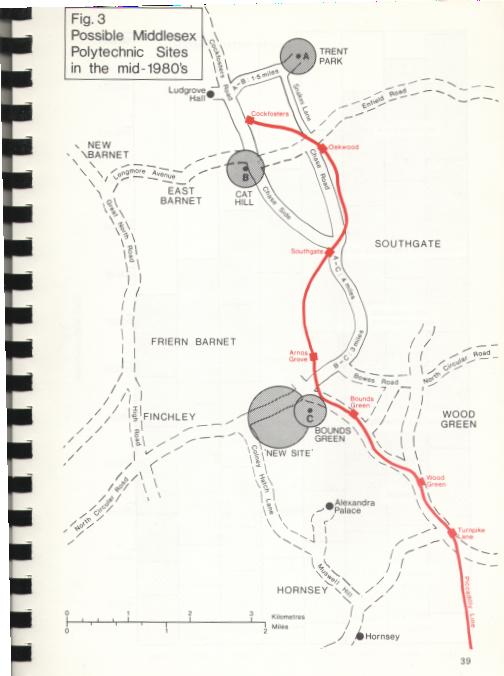
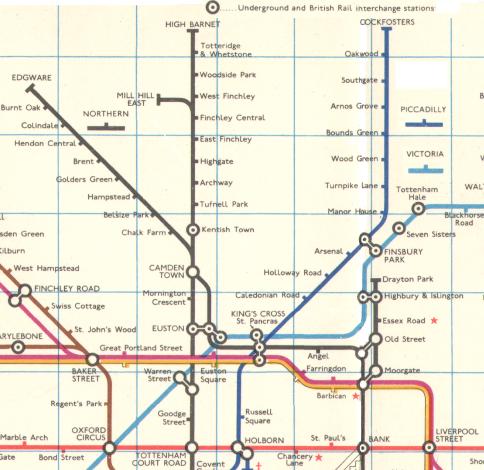

1976-1977
Jeff Evans,
Senior Lecturer in Statistics at Middlesex
University, was a lecturer on secondment in Research Method in the Faculty
of Social Sciences at the Open University. He was one of the authors of the
Mathematics Diagnostic and Developmental Booklet (below) -
Book of the year author
2000
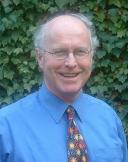
1977 The benefits of flood alleviation by
Edmund Charles Penning-Rowsell published by Saxon House
(Farnborough,
Hampshire) 320 pages. With varying names (for example, The benefits of
flood and coastal risk management : a manual of assessment techniques
(2005) this has become a perennial.
This is my choice for Middlesex University
book of the year for
1977
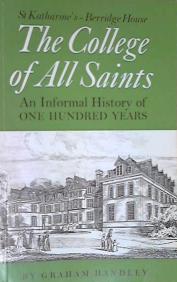
Tottenham became part of Middlesex University. Later it was
closed and the later reopened, before eventually closing in
2005 See email
4.12.2003
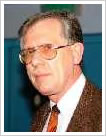
His research has moved to Mechatronics, especially Control
Engineering,
Robotics and Simulation, more recently to using Neural Nets
and Fuzzy control of management and manufacturing problems. Professor White
has considerable experience of Project Management and Quality Systems.
source. See also
research interests.
December 1978 Second Resubmission to CNAA. BA Social Science.
Honours and Unclassified, Full Time with placement Specialisations in
Economics, Sociology, Psychology, Social Work, Planning Studies, Applied
Social Science.
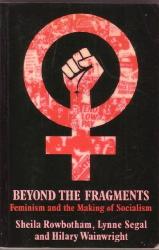
Sheila Rowbotham,
Lynne Segal and Hilary Wainwright Beyond the Fragments:
Feminism and the Making of Socialism
Society, History, Environment (SHE)
But then, on 10.7.1980 fire
destroyed the Fine Art accommodation at Alexandra Palace and Fine Art moved
back into the Crouch End building before moving to
Quicksilver Place in
1981. Quicksilver Place courses moved to Cat Hill in 2003?, but Cat
Hill courses all moved to
The Grove at Hendon in September 2011.
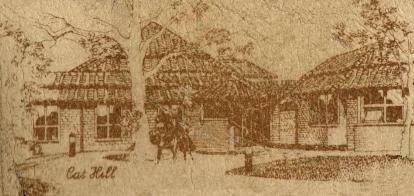
September 1979
Cat Hill phase two opened. Graphic design moved to
Cat Hill. In 1980 the Foundation Course moved to Cat Hill and the Crouch
End building at
Hornsey was vacated.
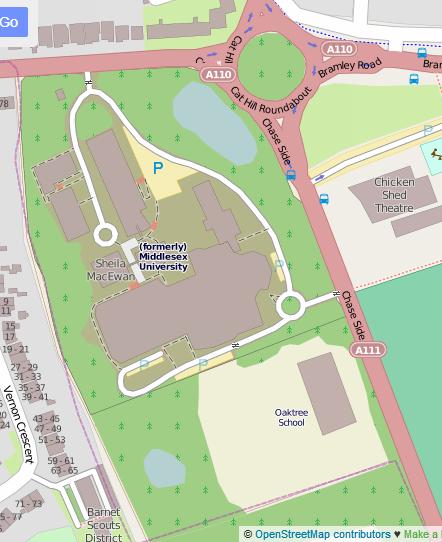
2014 map of Cat Hill site. Note ponds to north and south and surrounding
woodlands.
The shelves shown are a print presented to world
leaders at the 2013 G8 summit in Ireland. They contain a hidden message
from
Adam Smith "What can be added to the happiness of a man who is
in health, out of debt and has a clear conscience".
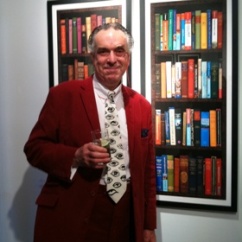
1980 Phil Shaw came to work in Graphic Design at
Cat Hill.
He was born and brought up in the West Yorkshire woollen and engineering
town of Huddersfield. He studied painting at Leeds Polytechnic and went on
to study printmaking at the Royal College of Art.
Friday 1.5.1981 Leaving Party for
Gertie Beckett's
retirement. A tape was made of the speeches. Gertie sent me a copy, with a
covering letter, on 4.8.1998 [Media Services Middlesex Polytechnic. "Copy
of G.E.B' Leaving Party Tape - 1st May 1981"]. I am transcribing from this
tape as part of this history.
HGY/2004/1115 - Change of use of units from D1 to B2 - GRANTED 1.9.2004
Now Police. Quicksilver Patrol Base. Unit 1. Quicksilver Place. Western
Road.
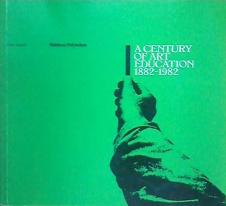
9.3.1982 to 3.4.1982 An exhibition to mark
the centenary of
the foundation of
Hornsey School of Art, held at the New Gallery, Hornsey
Library.
The Message, album of the American hip-hop group Grandmaster Flash
and the Furious Five released in 1982 on Sugar Hill Records. Amy Gdala
argues that from here "rap" ceased to be a challenge and a debate and "took
a dive into autism".
"Once upon a time 'rap' had been the thing the Panthers did,
the enthusiastic discussion of ideas. The Rastas called it 'reasoning'...
What they now call 'Rap' ... isn't even really a sharing kind of thing.
Rather it is a monologue or rant"

Spring 1983
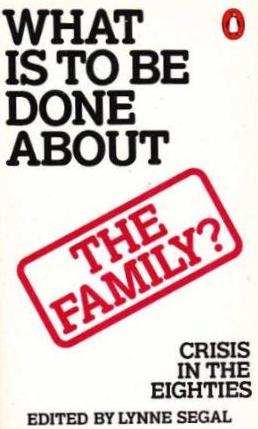
The
family "symbolises our deepest
dreams and fears... of love, intimacy,
stability, safety, security, privacy ... of abandonment, chaos and failure"
(Lynne Segal
p.9)
17.1.1984 The WISE (Woman into Science and Engineering) Campaign
established by
Beryl Platt, a
retired aronatics engineer, and others following a call by the
Engineering Council for more girls to consider an engineering career.
Beryl Platt was Chair of the Equal Opportunities Commision from 1983 to
1988
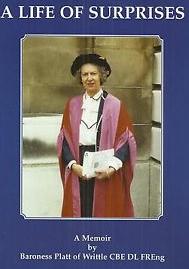
North Circular and the Handbook part of the
Handbook/Diary were the basis of the Polytechnic's corporate information
system from
1973
until the development of the new
telephone directory in
1995
and subsequent development of email,
intranet and internet connections.

Back:
Saints
Park
Hill
Green
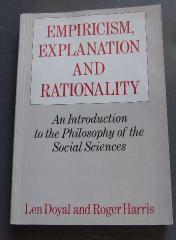
Len Doyal and Roger Harris
Empiricism, Explanation and
Rationality: An introduction to the philosophy of the social sciences
This is my choice for Middlesex University
book of the year for 1986


"provide... a... service to all sites for programs writen in
Fortran, Cobol, Basic, Pascal, and C... Users write and develop their own
programs, which are run on the computer from any of the ineractive
terminals" [at Enfield, Trenmt ark, Hendon, Bpinds Gree, Cat Hill and
Ludgrove Hall]. Other sites could dial the computer through British
Telecom. "The inter-site transport system enables users on other sites to
receive output from Bounds Green printers and plotters"
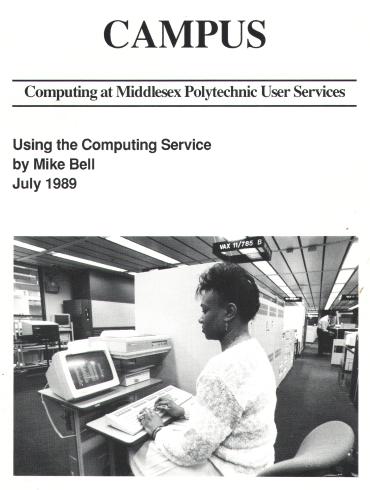
All of Middlesex Polytechnic used
mainframe computers on one site
(Bounds Green).
The University also had microcomputers in "microcomputer
rooms". "As microcomputer systems are a relatively new development in
computing, new uses are being found for them almost every day.
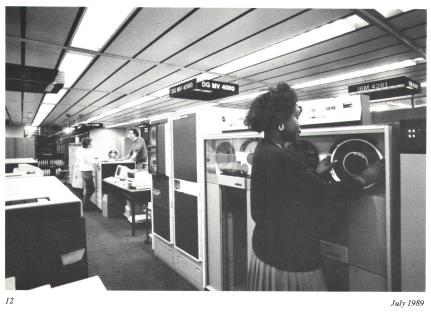
Far distance: VAX 8350 (VAX D) - VAX 11/785 (VAX B) - Two VAX 11/750 (VAX A
and VAX C)

1989 Michael Driscoll Head of School of Economics on the BA Social
Science. Economics moved to the Business School at Hendon - presumably
along with
modularisaton. Dean of
Business School in
1991. Pro Vice-Chancellor
1993. Deputy
Vice-Chancellor
1995.
Vice-Chancellor
1996. See
22.4.2003 and
13.1.2004
a "radical challenge to the identity of the subjects of the
traditional higher education curriculum came in the late 1980s and early
1990s with the modularisation of the higher education curriculum in all but
a handful of universities,"
(David Bridges 2000)

I taught, examined, administered, tutored, produced handouts, mentored,
devised courses, designed degrees, set up structures of self-examination
and accountability, supervised research, wrote syllabuses and curricula,
took the piss out of
mission statements
, agitated about quality control and ethical scrutiny, attempted
to resist privatisation and internal markets, organised admissions
procedures, overenthusiatically implemented equal ops, wrote papers and
discussion documents, liaised with external examiners, filed, recorded,
cleaned blackboards, tidied up after people, and sat on committees passing
notes across tables and sullenly consuming all the nasty little biscuits.
George Brosan,
Eric Robinson
and David Melville share the distinction of not having buildings named
after them. Another point that they had in common was that I [Andrew
Roberts] found their educational philosophy inspirational.
1991
Julienne Ford and John? Foley's and
Developing Social Science
Research is a convenient indicator of when
"several
simultaneous undergraduate research workshops located all over the
campus"
ran.

"better ways of converting money into
better services."
21.7.1991 "British Prime Minister John Major has launched a
citizen's charter to improve public services."
BBC -
Thursday 21.11.1991 Indefinite student occupation started at Enfield
and continued to Christmas.
The T-Shirt (right) related to student action spreading to other places.
This one was given to me by a student
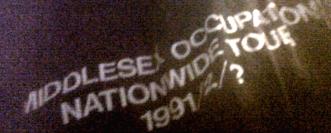
The slogan on stickers was OCCUPATION FOR EDUCATION
Work based learning
The new University had a
logo. It was said to represent "fast forward with
Middlesex University" and was designed in-house. The first professional re-
branding took effect in
2003 and the next in
2012


The new University presented itself as a European University. Approaching
Southbury by train one could see the fast forward flag and the European
circle of stars flying together above the library tower.
Monday 23.11.1992 Board of Governors confirm the appointment
of
Beryl Platt, a founder of WISE (Woman into Science and
Engineering) as Chancellor of Middlesex University. (North Circular
26.11.1992) She was
69 years old when she was appointed and continued until 2000 when she was succeeded by
Allen Sheppard. At the time of her appointment, Middlesex had a
purpose built campus devoted to engineering and, under
David Melville, probably considered science and engineering core
activities. The decline of engineering first appears in these records in
1999.
See
caryatid

A
Caryatid (female form
in
stone supporting an edifice)
is not to be confused with a
vibrator or a drum machine, even when the ediface is shaking.
The images are from
Amy Gdala's
Tales They Lose, as are the following fragments of a
dialogue:
Goodbye to the polytechnics
The Lecturer February 1993
[Enfield Campus]
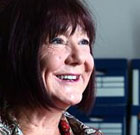
Professor Susanne MacGregor Head of School of Sociology and Social Policy.
Students said of him: "The field trips he organises help enormously to aid
our learning, and our general experience as young scientists". Steve once
said to me, "never say you cannot do something; you just haven't refined
the art of doing it yet. Never give up". "He is the most humble,
knowledgeable, encouraging and above all, the most inspiring teacher I have
ever known."

September 1993 Stephen Kett, Senior Lecturer, Evolutionary Biology
joined Middlesex University.
In
2014, Steve Kett won the first ever
Student Led Teaching Award for the most inspiring teacher and
was a runner up in the award for most empowering teacher.
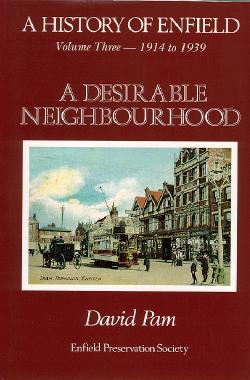
1994 David Owen Pam's A History of Enfield. Volume 3, 1914 to
1939 - A Desirable Neighbourhood published by Enfield Preservation
Society (xvi and 304 pages)
January 1995 The
new telephone directory began with the Universty's
Vision and Mission Statement.
See
caryatid on missions and markets - The
Learning Development Project's "student centred" Mission
Statement (1996) -
and
Student centred Mission Statement (adaptation of the above)
and autonomous learning (1998-2002)
January 1995 New format Middlesex University Telephone Directory
and Reference Manual in a stout yellow plastic loose-leaf ring-binder.
Complete directory contents to be re-issued once a year, with the
alphabetical section also re-issued in mid-academic year to include new
staff joining the University. "This directory is built on early work
carried out in Office Services some years ago by
Tim Westmacott who died last year. At the time of his death he
worked in the Social Science faculty at Enfield. This edition has been
prepared with his previous work in mind".
HENDON (Middlesex University Business School) The Burroughs,
London,
NW4 4BT
CAT HILL, Cat Hill, Barnet, Hertfordshire, EN4 9H4
TRENT PARK, Bramley Road, London, N14 4XS
TOTTENHAM, White Heart Lane, London, N17 4XS
BOUNDS GREEN, Bounds Green Road, London, N11 2NQ
CONFERENCE CENTRE, 60 Games Road, Barnet, Hertfordshire, EN4 9HW
IVY HOUSE, North End Road, London, NW11 7HU
QUICKSILVER PLACE, Western Road, London, N22 6XH
WOOD GREEN HALL OF RESIDENCE, Station Road, London, N22 6UX
Art, Design and Performing Arts. Dean: John Lansdown. Campuses:
Cat Hill,
Quicksilver Place,
London College of Dance at Bedford.
Middlesex University Business School had the following schools:
Accounting and Finance
Economics
Law
Management
Technology had the following schools
Computing Science
Electrical Engineering
Environmental Science and Engineering
Mathematics and Statistics
Mechanical and Manufacturing Engineering
Social Science and Education had the following schools:
Education
Geography and Environmental Management
Psychology
Social Work and Health Services
Sociology and Social Policy
September 1995 Higher Education Quality Council -
Middlesex University - Quality Audit Report - ISBN 1 85824 218 5
-
archive -
offline
The name
Julie Ford is not in the
January 1998 Telephone Directory. This
fits in with
Amy Gdala's recollection that she served for 28 years as a
Caryatid, holding up the educational edifice, and then escaped to Wales
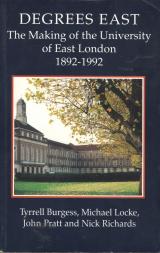
"To assist the university, where appropriate, to move from
didactic forms of teaching towards more student-centred, independent
learning, thus facilitating innovation in learning, helping to make the
best possible use of staff time, improving the efficiency and effectiveness
of academic programme delivery and contributing towards the professional
development of students and of academic and support staff in the
university"
Information and Learning Resource Services were
responsible for linking to other web pages (individual schools and units).
Andy Wilson, Computer Support Manager at
Cat Hill was the first point of
contact for all staff who wanted to put pages up. (Information and
Learning Resource Services. Computing Services News Sheet. May 1996).
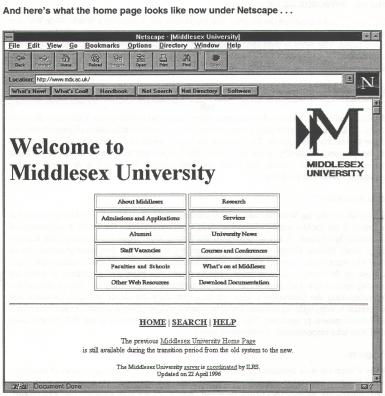
22.4.1996 Middlesex University's first officially approved
World
Wide Web site.

October 1996
Michael Driscoll moved from being deputy vice chancellor to
David Melville to being
Vice-Chancellor in place of him. David Melville became chief executive of
the Further Education Funding Council. Michael Driscoll initiated
"a thorough review [the University's] academic and administrative
structure" [My belief at the time was that this was done to make
clear that he had arrived!]
November? 1996 Queen's Anniversary Prize for "off-campus learning,
training and research for commerce, industry and public services."
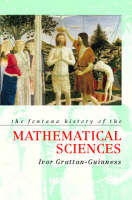
This is my choice for Middlesex University
book of the year for 1997
"The former Middlesex Polytechnic has begun a thorough review
of its academic and administrative structure after projections revealed
that it would slide from a Pounds 3.6 million surplus this year to Pounds 3
million in the red by 1999/2000. The university has calculated that to
avoid deficit it must make savings in excess of 6 per cent over the next
two to three years."
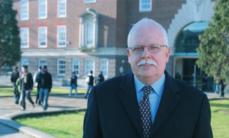
""I started off my academic career as a mature
student at Middlesex University, where I was the
first person ever to obtain a Law PhD."
An email address book in my possession includes Geoff Pilling in the
personal section. He is shown
as in
School of Sociology/Soc Policy and he is GEOFFREY1@mdx.ac.uk in
Enfield R120. The other sections are later
(HSSC time).
At this time, the Univesity used
Pegesus mailing software for staff (students
had it harder!).
Netscape was the browser used. I think we were still using
Windows
3.1.
At some time, the
"mission statement" became
"Middlesex will be a
student-centred
university that will provide opportunities for
lifelong learning to a
diverse range of students within a culture of scholarship and development
of knowledge."

resource based learning.
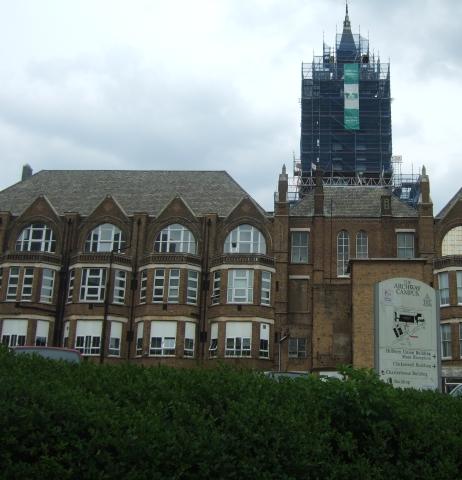
1998
to
2013
[Mostly at Hendon]
[To enter]
[Mostly at Bounds
Green]
Design and Manufacturing
Electronics and Information Engineering
[That is it!]
[All at Bounds
Green]
Complimentary and Allied Therapies
Biological and Environmental Sciences
Midwifery and Family Health
Society, Science and Health
Health Promotion
Healthcare Management
Mental health and Human Relations
Critical and Emergency Care
Rehabilitation Care
Continuing Palliative Care
Dean based at Highgate Hill. Many staff at Enfield and Bounds Green.
Also Chase Farm, North Middlesex,
Royal Free and Whittingham.
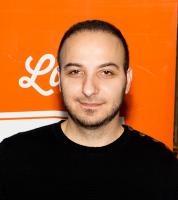
1998 Socrates Economou began a BA
Marketing
and Human Resource Management course
at Middlesex. He graduated in 2001 and went to Brunel University to take
Master of Science in Management Studies. He worked in the retail trade for
a
year, buying and merchandising.
November? 1998 Queen's Anniversary Prize for
"creation of materials for technology teaching in schools".
Freedom, Community and North Circular
Andrew Roberts
North Circular Autumn 1998
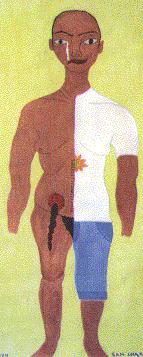
Aged just 26, second year literature student
Sam Shakes had her colon
removed surgically in November 1998. From now on her shit would drain
through a hole in her stomach wall into a plastic bag. Sam took a year out
to recuperate and during this time, realised that "without knowledge of
health one does not know anything!" She changed her subject
to Health Studies, starting afresh in October 1999.
Middlesex University Business School 1999
"Engineering departments are no longer able to recruit students to courses
in the numbers required. Engineering is perceived as being both difficult
and unattractive. The pool of potential students is diminishing and the
wide choice in higher education has resulted in fewer students choosing
engineering."
See end of Bounds
Green (and end of engineering?) in 2003.
Anthony White's career developed from
aeronautical engineering
to computerised robots, via fluid mechanics.
2000 was the year that
Zygmunt Bauman published Liquid Modernity with the
metaphor of a move from the solid to the liquid.
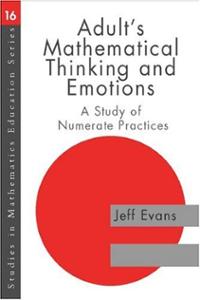
2000:
Drawing the Soul: Schemas and Models in Psychoanalysis
edited by Bernard
Burgoyne
November? 2000 Queen's Anniversary Prize for
"Floor Hazard Research Centre: education, training and research".
Hendon and Tottenham 2000 to 2003 Account by an
LLB student
available online. "With 7 campuses (Hendon,
Tottenham, Trent Park, Enfield, Bounds Green, Cat Hill and Chase Farm) it
is one of the largest Universities in the UK ... Law is taught on the
Hendon and Tottenham campuses; I was based at Hendon, and most of the
lecturers offices are based at Hendon... if you miss a core subject
lecture then chances are you'll be able to catch the repeat of it at the
other campus... Hendon at
the moment pretty much resembles a building site as it is being extended
and rebuilt, and it is much less lively than Tottenham. Being the 'Business
School' it is much more serious and has less in the way of a student union
presence... and the library is considerably smaller... Tottenham on the
other hand has a huge five floor library resource building full of computer
rooms with both PC's and Macs, language resource rooms, and a student union
building with a pub and a canteen and the student shop. The book shop at
Hendon is much bigger and has a better selection of books... The good thing
about Hendon is that the surrounding area is very good, there are loads of
café's nearby and places to go... The
centre of town isn't so far away (just one bus which stops near the Uni)
but with Tottenham you're pretty much tied to the Uni...
The Student Union at Hendon comprises of only one small office where you
can get your NUS cards and your student travel ID cards... But Hendon does
have the advantage of having an onsite health club,
'The Burroughs' which is meant to be quite exclusive... There are ramps and
lifts all over the campus, as well as designated computer rooms for
disabled students, guaranteeing them
computer access at all times (whereas I have to queue upstairs and wait
patiently for about half an hour before a computer frees up!)...
no matter what campus you are at, you can request a book from the library
of another campus and have it sent to your campus for collection - it takes
about 3-5 days... it is all electronicly done,
you have to log in on the internet to the library catalogue to do this
(don't worry if
you're a bit scared of computers they show you how...)
- this means you can request and renew
your library books from where ever there is internet access.
Pro-Vice Chancellor and Dean of Health and Social Sciences: Professor
Margaret House - at Enfield
Director of Research and Postgraduate Studies: Professor Susanne
MacGregor - at Enfield
Director of Curriculum, Learning and Quality: Jan Williams - at
Highgate Hill
Director of Resources and Administration: Pippa McNichol - at Highgate
Hill
Director of
Nursing and Midwifery Professional Studies: Dr. John Webb - at
Highgate Hill and Winchmore Hill
Director of Business Developments: Richard Beaumont - at Archway
Electronic email and telephone directory using
Pegasus) [2002]:
Michael Driscoll is Vice Chancellor at Trent Park -
Dennis Parker
is Dean of School at Hendon -
Dennis Hardy
is PVC - Director of Development Strategy at Trent Park.
Wednesday 6.2.2002
Argus news item
about
Bounds Green
and
Quicksilver Place
closing.
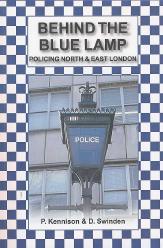
more information.
Police stations in London
25.4.2003 "Middlesex University has today won the Queen's award for
enterprise, in recognition of its recruiting a high number of overseas
students. It boosted overseas student numbers by 43 per cent between the
autumns of 1999 and 2002, with the number coming from Asia rocketing 80 per
cent over the same period. Many of these students come from China and Hong
Kong." (Times Higher Education ). Other sources say the award
recognised Middlesex as the first British university to open
(1995) a network of recruitment offices around the world.
1.9.2003 Middlesex University re-branded. "People love it or hate
it,"
Michael Driscoll
said of the red squiggle. Who can distinguish between
almost identical
coats of arms?

"It wasn't just a logo, it was thinking about the words we used
to describe ourselves, our values and objectives," Driscoll explains. "The
university we want to be in 10 years' time will be very different from the
university that we are now. It would have been a waste of time if the only
change had been the logo, but it wasn't like that at all - the logo came
last."
[Guardian 13.1.2004]"
[I was told it represented flexibility and movement]
Summer 2003
Bounds Green
Campus closed. It was empty for a year, during which it became a
site for a rave.
"At the Science Museum, South Kensington, the last
chartered engineer on the staff is finishing his employment. At the Kew
Bridge Steam Museum the engineering department which has been doing so much
outside contract work was closed at the end of 2003 with the loss of three
full-time jobs and one sub-contractor. We are no longer the engineering
nation we were."
CLOSING TOTTENHAM IN 2005
Executive has agreed that Tottenham will close in summer 2005;
teaching will transfer from Tottenham to other sites for the academic
year 2005-20006.
Kevin Moir of the University's Relocation Team has begun a
planning exercise. He is - or will be - in touch with key managers to
discuss issues and logistics.
Kevin Moir will report to Executive early in the new year.
In early February, Dennis Hardy, Director of the Development
Strategy, will present the latest progress and thinking to Tottenham
staff. The time and date of this presentation will be announced in the
new year.
"Without being too critical of the position of CMU to date, our
strategy has been somewhat defensive - trying to argue for the position and
problems that new universities face," says Driscoll. "I think there's a
feeling growing within the membership that the agenda is rather negatively
defined and in a sense that it has a negative branding."
11.5.2004
Guardian article
about Middlesex pulling out of the plan to create a new Campus at
Tottenham Hale.
"the university is not turning its back on local ethnic
minority students to pursue lucrative foreign recruitment." (Michael
Driscoll)
Vice-Chancellor
11 May 2004
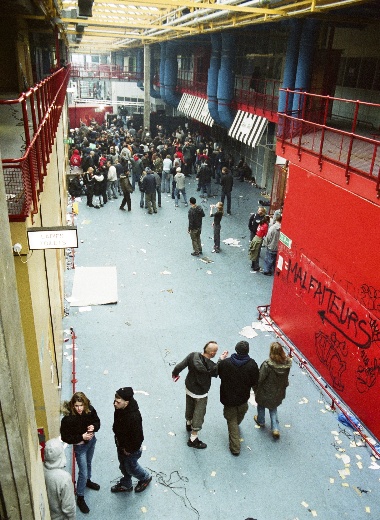
A 2004 photograph of a free rave in the
indoor main street of the unused
Bounds Green Campus, from Out of Order: A Photographic Celebration of
the Free Party Scene by Molly Macindoe. Tangent Books. Published
12.5.2011
2004
Hendon: The Sheppard Library opened.
In
2014, Socrates won the first ever
Student Led Teaching Award for the most innovative teacher.
His innovation was "e-lectures, which are delivered online and supported
with a discussion forum where students are expected to comment and discuss
the lecture". A student said "Even the most sceptical students have grown
to love his e-lectures. They have helped to make seminars so much more
useful, as many more people attend having properly engaged with the subject
in advance."
This is my Middlesex
publication of the year for 2005

Bernard Parsons,
Anthony White, Stephen Prior and Peter Warner published
"The Middlesex
University Rehabilitation Robot" in the Journal of Medical
Engineering and Technology (ISSN 0309-1902); Vol. 29; No.4; July
/August 2002; pp.151-162. [See
robotics
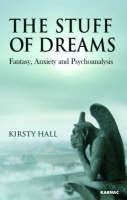
Kirsty Hall
The Stuff of Dreams: Fantasy, anxiety, and psychoanalysis

September 2007
Gulsum Metin, an experienced Couturier Dressmaker and expert in
designing, fitting, pattern making and cutting, started at Middesex as a
Senior Technician in Fashion.
In 2014, Gulsum won the first ever
Student Led Award for
best non-teaching staff. "One of the best people" -
"dedicated to her work" "passionate" "humbly experienced" -
"even being in her presence makes you feel like you are
getting better at garment construction". Often stays late to help students,
one of whom said "I would be half the designer I am if
it weren't for her". "Always so proud
when we do well. We all love Gulsum!" Studying for a Masters degree.
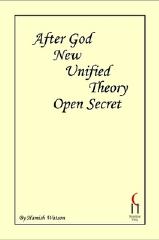
November 2007 Hamish Watson's
After God! New Unified Theory, Open Secret
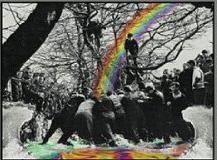
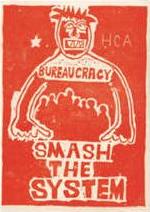
Autumn 2008: Moved to Hendon Campus
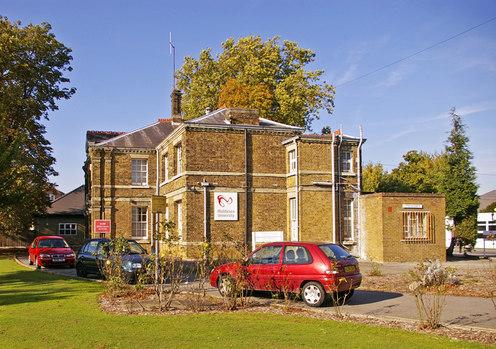
Latest available free online as of Tuesday 29.4.2014
Publications archive
Click
here for all staff.
Middlesex University 2008/2009
Total all staff: 2945
Full-time academic 510
Part-time academic 210
Total academic 720
Total non-academic 835
Total 1395
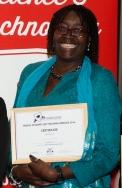
About 2009 Georgina Cox, previously Senior Lecturer life and applied
Sciences at University of West London, joined Middlesex. She became
Programme leader
nursing and initial practice.
Meg Osborne (Previously Meg Andrew) joined Middlesex University in
2010.
She is famous for the redesign of British scouting uniforms in
2001.
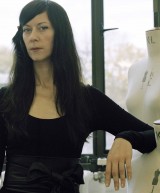
In 2011 applicants for the BA Fashion degree said:
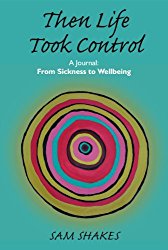
2010 Then Life Took Control: A Journal: From Sickness
to Wellbeing by
Sam Shakes is a
three part journal for 1998 - 1999 - and 2000, when Sam was a student on
the Enfield Campus. Its focus is on how she coped with having her colon
removed (the ruthless remedy), the change in who she was (an unrecognisable
me), emotional consequences (managing 'madness') and life's re-assertion.
Her recovery involved her health studies, changing attitudes to
relationships, re-thinking who she was in dialogue with counsellors, eating
better foods, exercise, and confidence that there was an
"alternative and better" and seeking and chasing it. (Book and private
communication)
25.4.2011 Middlesex University won the Queen's award for enterprise
for the
second time.
"High quality education is one of our country's most
impressive exports and we are proud to be recognised as an industry leader
in providing and promoting this quality overseas. Our aims are simple - to
provide excellent education and student experiences here in North London
and abroad."
(Michael Driscoll quoted in The Times
"Middlesex University Higher Education Corporation, established
as a charity in
1993, provides English language training and higher education
for non-UK students in UK or abroad. It wins the Award for the second time
for its outstanding achievement in growing its overseas income by œ10m over
three years to a total of over £106m in that period. A well focused
marketing strategy is based on a combination of UK based facilities,
franchising other non-UK institutions and 19 offices in the main overseas
markets. The main source of overseas students is from Asia"
(2011 Press Pack
offline)
Middlesex University in September 2012
What Uni profile copied Thursday 22.5.2014
(when it was over a year out of date).
September 2012

Business School
School of Health and Education - Hatchcroft building laboratorie
School of Law
School of Media and Performing Arts
School of Science and Technology
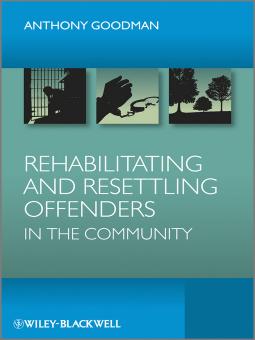
This was my choice for the Middlesex University
book of the year for
2012
The highlight of 2013 was the visit of
Jesse Jackson
on Wednesday
4.12.2013
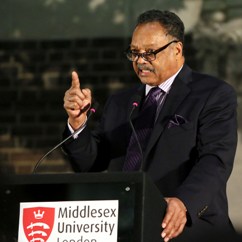
31.3.2014 Inaugural
Middlesex University Student Union
student-led Teaching Awards in
which students celebrated the talents of their most exceptional teachers.

The shortlists of nominees and winners were decided by
Student Union student interns.
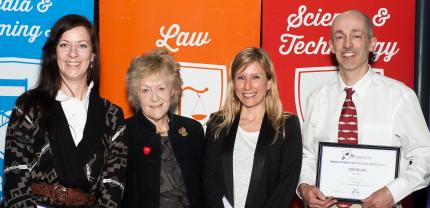
Students submitted over 1000 nominations for more than 300 teachers
across
all six Schools. (There are
over 700 teachers at Middlesex)
"Erin motivates empowers her students to give answers, whether
they are wrong or right, and always responds in ways that are comforting
and reassuring. She is a highly motivating and inspiring teacher,
incredibly helpful and supportive and always ready to give her students the
best to help them succeed. She radiates passion for her subject - her door
is always open and I look forward to her classes every week."
Gulsum Metin, Senior Technician, Fashion
Runners up:
Manika Choudhury, Microbiology Technician
Elena Aliferi, Graduate Teaching Assistant, Education
Elaine Elson, Employability Advisor
Vu Dang, Graduate Teaching Assistant, Natural Sciences
Socrates
Economou, Senior Lecturer,
Marketing
Runners up:
Jassen Lee, Senior Lecturer, Adult
Nursing
Maria Jimenez, Lecturer, Marketing - Spanish
Dr Simon Best, Senior Lecturer, International Management and Innovation
Dr Tunc Aybak, Programme Leader, International Politics
Steve Kett, Senior Lecturer, Environmental Science and
Engineering
Runners up:
Dale Wightman, Associate Lecturer, Media and Performing Arts
Georgina Cox, Senior
Lecturer, Nursing
Patricia Cartney, Programme Leader, Social Work
Dr Theresa Cronin, Lecturer, Media and Cultural Studies
Ashok Srivastava Lecturer, Business
Runners up:
Andrew Roberts Lecturer, Sociology
Claire Lewis, Lecturer, Graphic Design
Dirk Wildeboer, Senior Lecturer, Bioscience and Biomedical Science
Dr Peter Hough Principal Lecturer, International Politics
Tuesday 10.2.2015
Sindre Ailo Holmen
@SindreAilo
"Sociology student wandering the streets of London"
says he has "learnt quite a lot in my (almost) two years at Middlesex
University, but today was a game changer. With some time to kill in the
Quad, and some help from the Students Union, he created the "one thing I
will pride myself in. I almost couldn't do it, it was tiring, but I stuck
it through and achieved my goal! So proud! Eye of the tiger! Thanks". "It
will be proudly displayed in my living room"

Inspired
by the Charles Hasler Collection at the
Museum of Domestic Design and
Architecture. Gallery Opening times:
Thursday and Friday 12-6pm -
Saturday 12-4pm
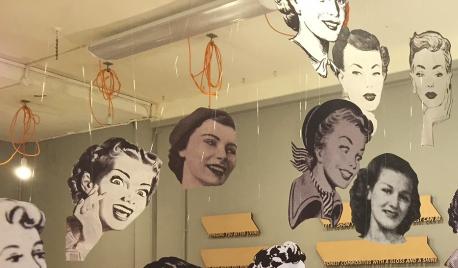
3.4.2015 - 30.4.2015 Aviva Leeman presents "Bringing you Better
Living" at The
Hasler Gallery, Grand Arcade, North Finchley, N12 0EH.
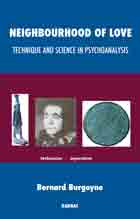
Neighbourhood of Love: Technique and Science in
Psychoanalysis,
essays by
Bernard Burgoyne is promised for the end of 2016.
19.7.2023 The Closing Speech of the last MU Vice
Chancellor Reported by
Paul Curzon in a vision on
1.7.1998 [MU, once Middlesex University now stands for Microsoft
University]
[My special thanks to
Daniel Heather
and his colleagues for their enthusiastic assistance]
Middlesex University: University Collections
HCA/3/2/2/B Photographs including 1923
Loose: Henry Holtzer photograph (family)
Loose: Sheila MacEwan photograph
HCA/3/2/2/C Fashion photographs from the 1950s
HCA/3/2/2/D Photographs including Friday Weavers 11.5.1951
HCA/3/2/2/E Frank Swinstead photographs
HCA/3/2/2/F Photographs of rafters
HCA/3/2/3 Newspaper cuttings (Offline).
"Gwendoline Smith gets weaving" [Autumn 1950]
An istructress comes to the aid of a pupil learning the art of weaving
[Could also be Gwendoline]
"Girls design for the future", by Mabel Elliot, News Chronicle
reporter
Friday 24.6.1955 Star "Students run own dress show. Men help to"
HCA/3/2/4 Corespondence and interview with and Sheila MacEwan
Sheila MacEwan's retirement speech [21.3.1956]
(Offline).
7.3.1981 letter from Sheila MacEwan to
Peter Green
(Offline).
16.3.1981 letter from Peter Green to Sheila MacEwan
4.8.1981 Notes from Peter Green's interview with Sheila MacEwan
- hand notes and typed notes. (Offline typed).
27.8.1981 letter from Peter Green to Sheila MacEwan
Obituary of Sheila MacEwan written by Peter Green -
(Offline).
HCA/3/2/5 Embroidery square
Unnumbered: books by Sheila MacEwan and Elsie Davenport - Photograph
album - Autograph album
 Study
links outside this site
Study
links outside this site
 Top of
Page
Top of
Page
 Take a Break - Read a Poem
Take a Break - Read a Poem
To contact him, please
use the Communication
Form




Index
A B C D E F G H I J K L M N O P Q R S T U V W X Y Z
Association of Teachers in Technical
Institutions
BEd or B.Ed
(Bachelor of Education)
Book of the year:
1903 -
1909 -
1935 -
1948 -
1950
1961 -
1966 -
1968 -
1973 -
1975 -
1977 -
1978 -
1982 -
1986 -
1997 -
2000 -
2005 -
2007 -
2008 -
2012 -
2014
Bullying and Corporate
Psychopaths
Centre for Research in Industrial and Commercial Law
Chemistry:
1905 -
1927 -
Gas Works 1949 -
Williams of
Hendon -
1955 -
1957 -
1961 -
Jock Young -
1964 -
design
spectrometers and
computer
(1967) - Gas engineers 1969 -
clothing and textiles at Hornsey
Community: St
Katharine's -
Hornsey -
Hendon -
Middlesex -
Tottenham -
and academic
freedom
Computers: Landec -
Honeywell -
DEC-10 -
Micro Computers -
IBM -
VAX -
Alphas
Connections:
North Circular
-
inter-campus network 1989
-
Telephone 1995 -
Telephone 1998 -
Local Area, Wide Area and internet
1999 - Telephone and email
directory 2002
Council for National Academic Awards
Design at Hornsey
Development Plan:
May 1975
Eddie Bassett
Electrical Association for Women
Enfield County School for Girls and Technical
Institute
Enfield District Manufacturers Association
Enfield entertainments
association
Guildhall School of Music and Drama
History of Social Ideas
Industry:
Ediswan -
Ambrose Fleming -
Enfield Small
Arms -
Ripaults -
Enfield Cables -
1945 -
Stanley Millward's
recollections -
Building permits
Industry and Enfield 1964/1965
Junior Technical School:
Enfield -
Hendon -
Ponders
End
Lathes: Swan's -
Robinson's
Man and Society
Margaret Thatcher:
March 1970 -
June 1970 -
March 1971 -
December
1971 -
May 1979
Mathematics Diagnostic and Development
Middlesex Student Led Teaching Awards
Museum of Domestic Design and Architecture
National Council for Diplomas in Art
and Design
North London College of Health Studies
Occupation
1931 -
1967 -
1968 -
1991 -
2010
Ponders End Technical Institute
Pratt, Bill (William
Thomas)
Queen's Anniversary award:
1996 -
1998 -
2000 -
Queen's Award for Enterprise: 2003 - 2011 -
Ralph Beckett
Royal Free and University College Medical
School
Schools and Colleges separate:
Hendon
1959 -
Enfield 1962
Small Arms Factory Apprentices Association
1919
Society, History, Environment (SHE)
Sport:
Enfield Sports Field
Statistical Package for the Social Sciences
St Katharine's Practising
Schools
Telephone directory (1995)
1998 - Telephone and email
directory 2002
Thatcher:
March 1970 -
June 1970 -
March 1971 -
December
1971 -
May 1979
Theses:
Tottenham and Edmonton Weekly Herald 1945
Valerie Roberts
White Paper of 1956 -
White Paper of 1966
Women in Science and
Engineering
Your Home Crafts
series
advertising design
Council of Industrial Design
Britain can make it
Design at Trent
Park
Design at Hendon
Engineering design
Enfield/Hornsey
Planning and design under
Labour
design of spectrometers
Design at Bounds
Green
Design history
1976
Art Design and Performing Arts
Fashion Design
Art, Design and Media Building
Art and Design resources and
School of Art and Design
1907-1997
1968:
Kennea on fish
and Robinson on
lathes
1975:
Vince's Picaso
